We recently went on a Caribbean Cruise on the Royal Clipper (part of the Starclippers Tall Sailing Ships). They offer a variety of itineraries and there are two smaller ships you can choose from: the Star Clipper & the Star Flyer. The Royal Clipper’s capacity is roughly 227 whereas the other two can accommodate around 170 passengers. For us, the Royal Clipper was a perfect fit since it provides all the luxury trimmings of a larger cruise ship but with the intimacy of a small sailing experience.
Let’s take a look at our Caribbean experience and what you can do on each of the islands.
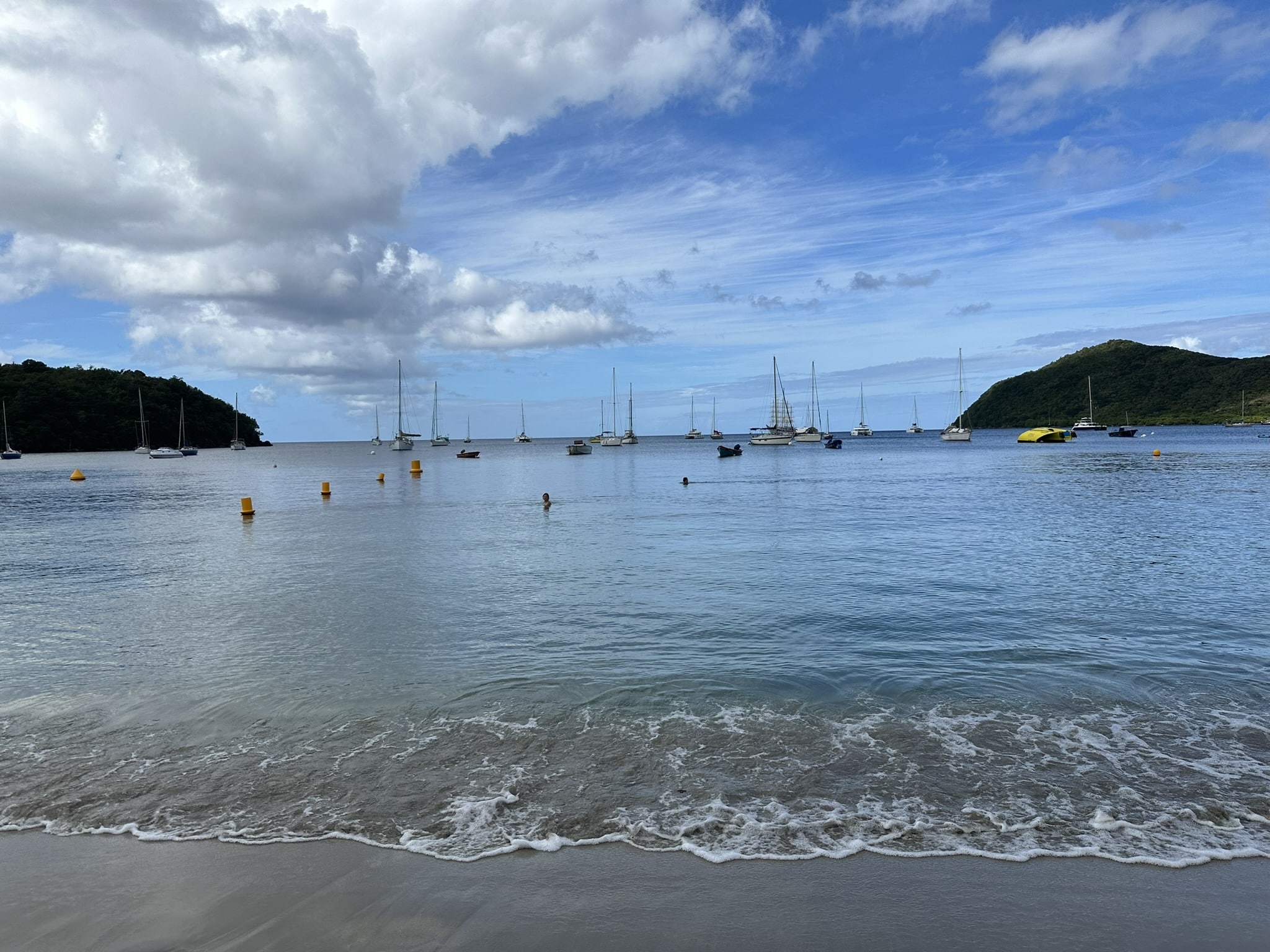
A beach on Martinique
Dominica
We spent the least amount of time in Dominica, so we weren’t able to rent a jeep to explore the gems that make this island such a marvel. It isn’t the place where you’ll find white sandy beaches, largely because of its volcanic origin, but this isn’t the reason you visit. You see, the island is covered by dense rainforests but amongst the thick of it, you’ll find volcanic pristine lakes and stunning waterfalls. You’re probably wondering if there’s a volcano. Cabrits is an extinct volcano which at one time was on its own, but later on became connected to mainland Dominica.
We approached Dominica on a smaller shuttle boat, and as we were coming into the port of Cabrits, we could see the density of the forests throughout the island as well as the fog. Lush is the word that best describes this island.
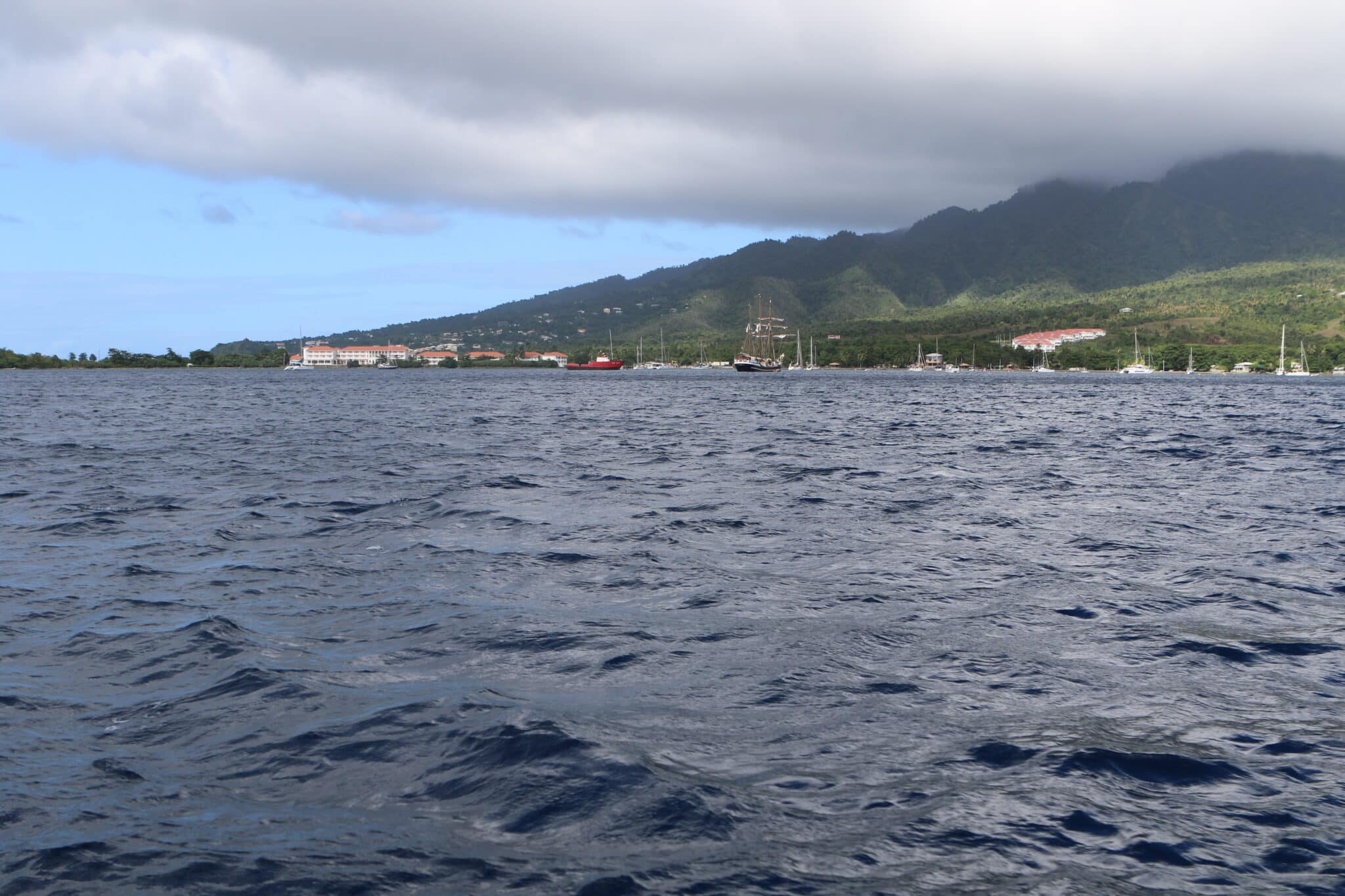
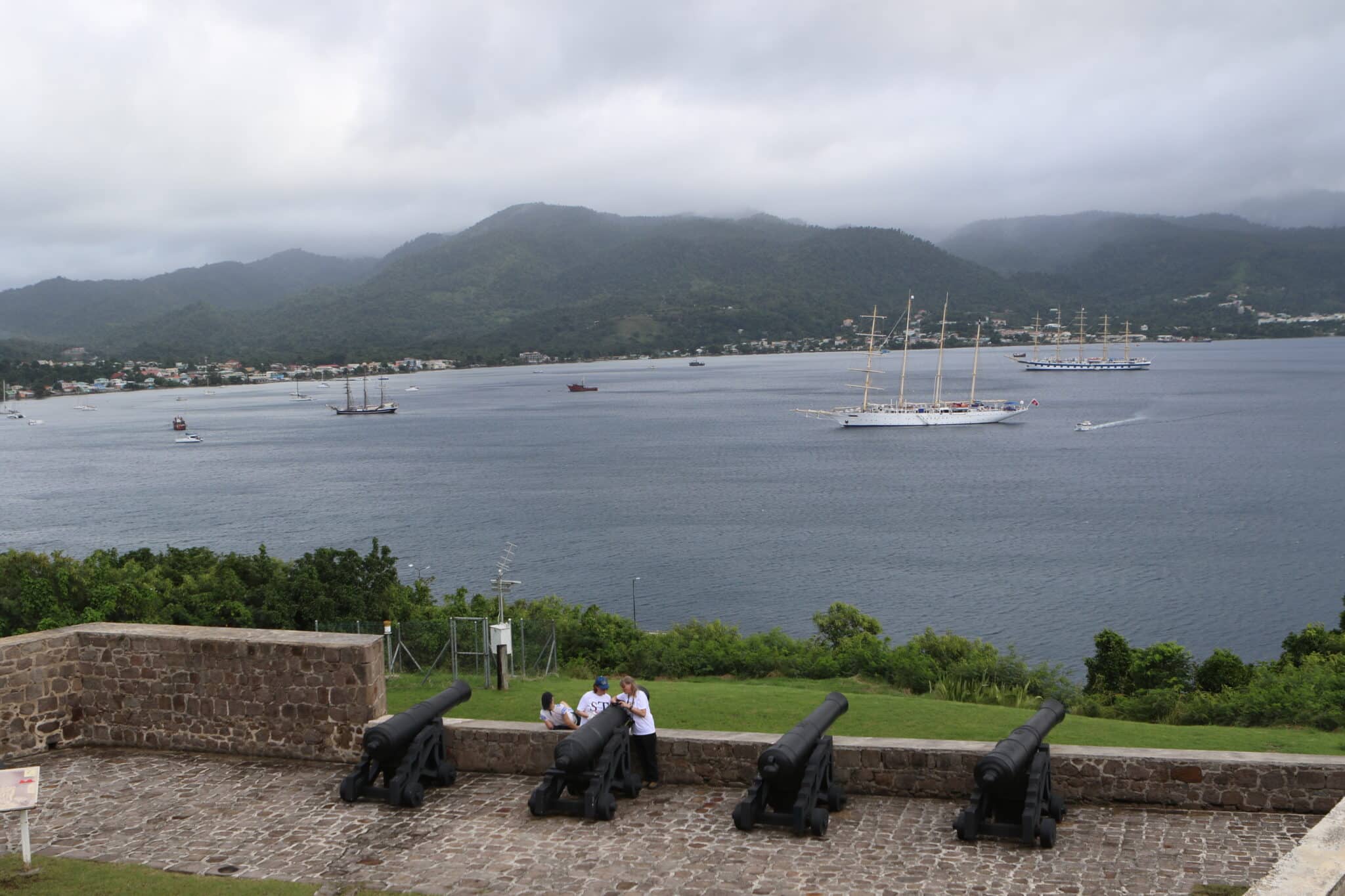
As you disembark, it’s a short walk to Cabrit’s National Park, which is set in the northeast. The tropical forest is inviting as is the lush green in all directions, marshland making up part of it. We spotted plenty of doves and herons during our hike. Truth be told, I was hoping not to meet up with a snake despite the fact that the walking path was quite wide. Luckily, we did not.

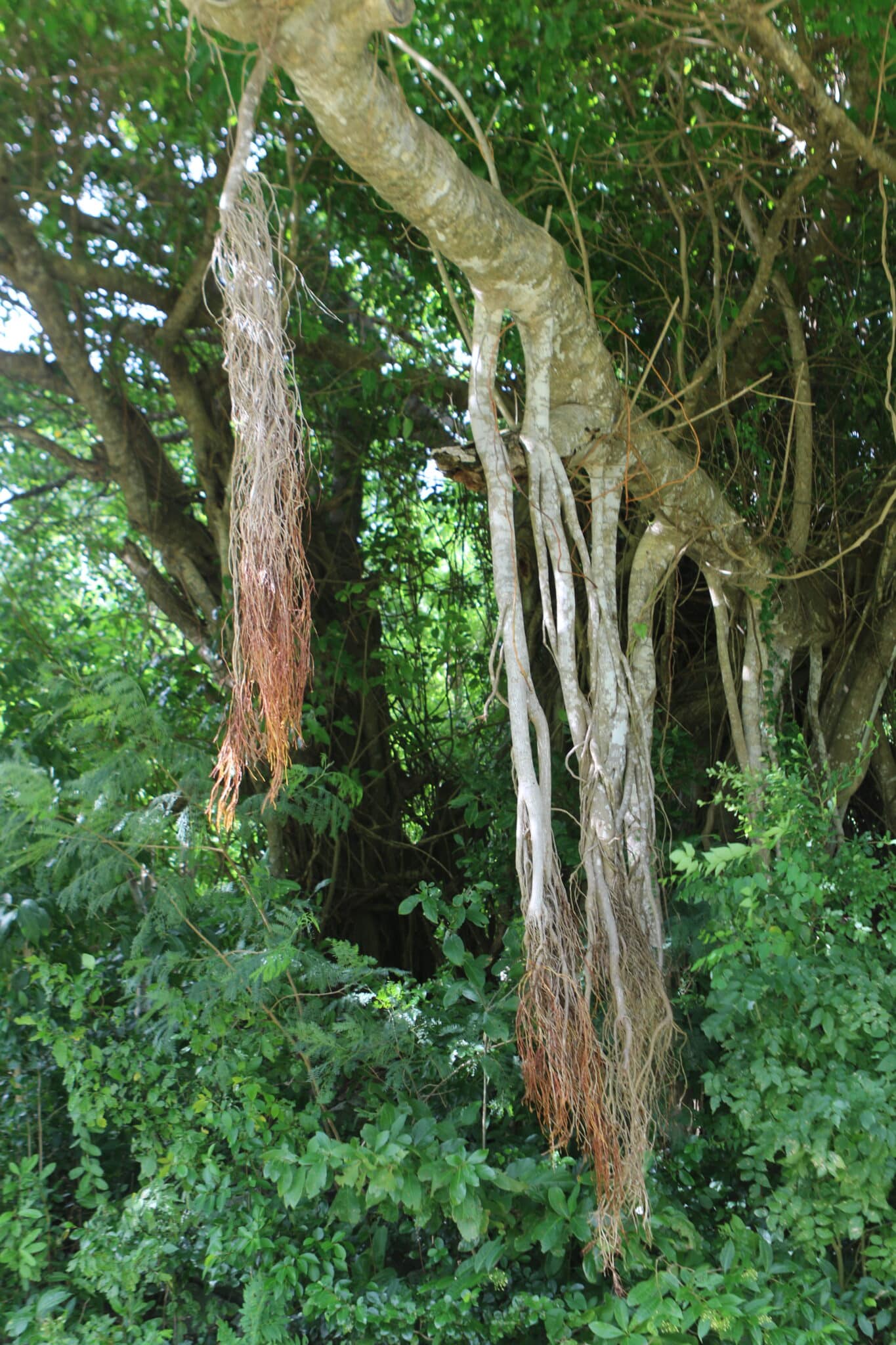
Also nearby is Fort Shirley, which was formerly a military outpost from yesteryear. Built by the British in the 18th century, it once had over fifty buildings. Restoration began in 1989 although only a handful of the buildings are restored and the rest are ruins which you can find if you have enough time to explore the area.
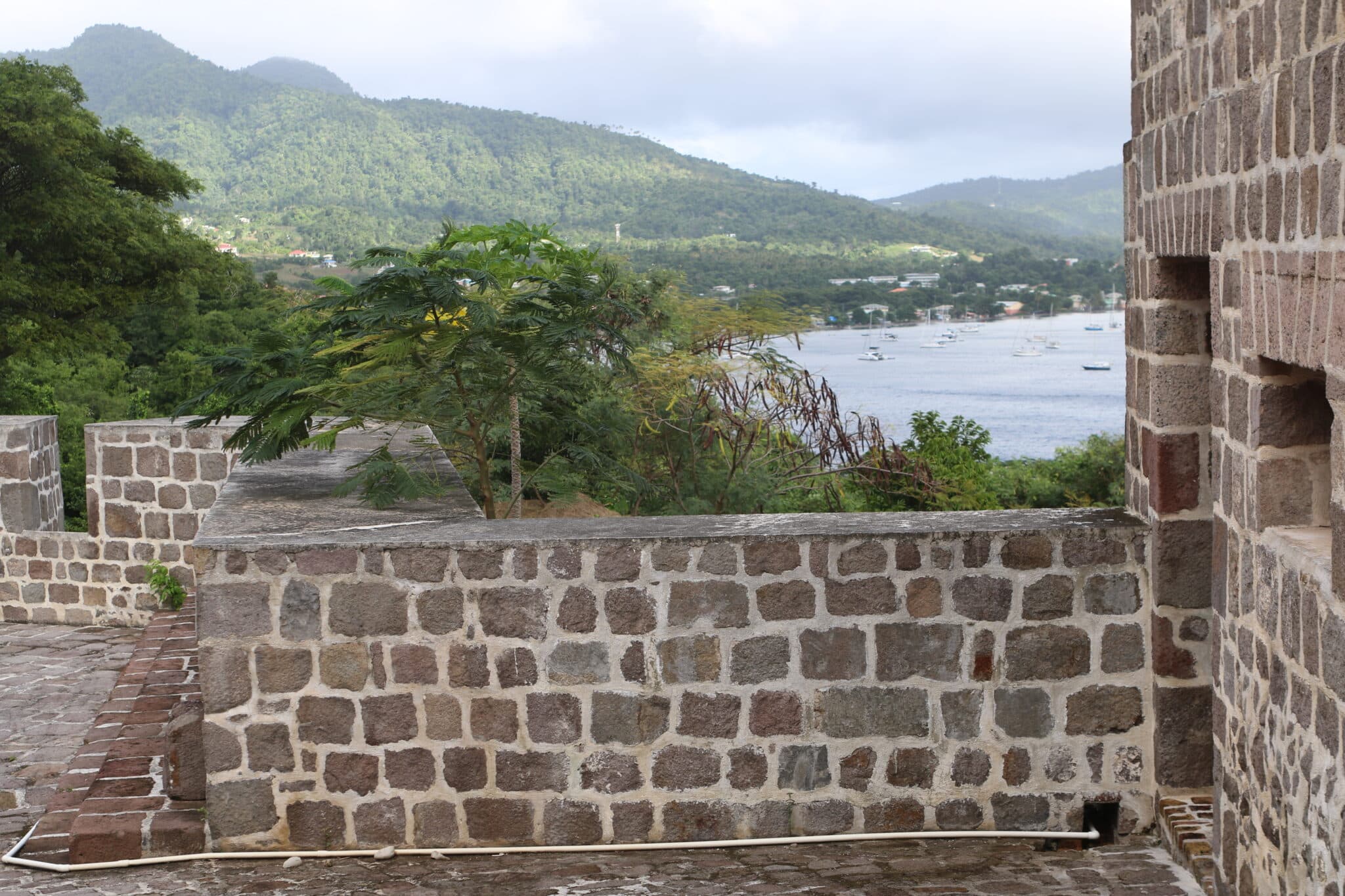
Below are a few of the paintings inside the main fortress.
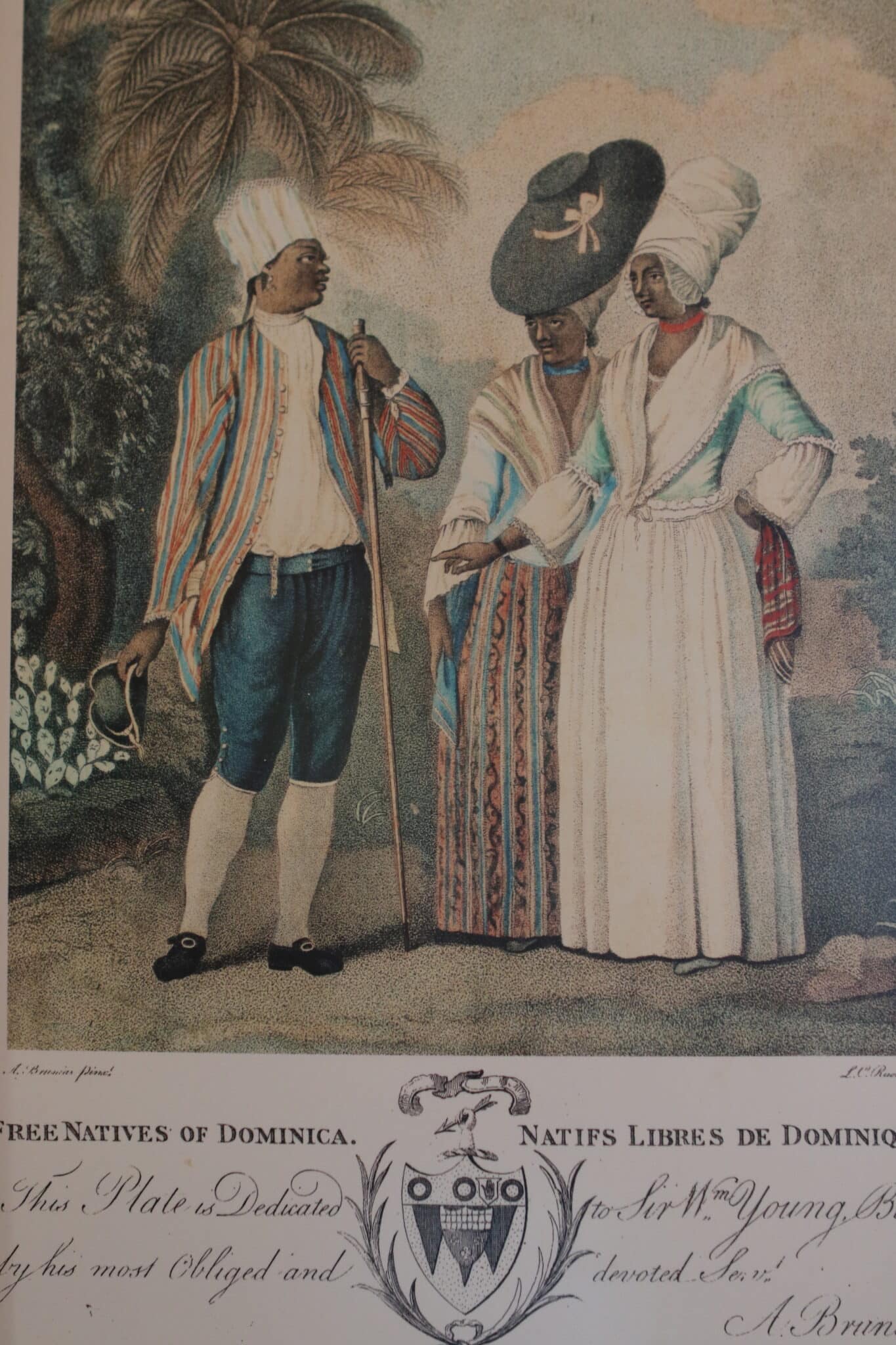
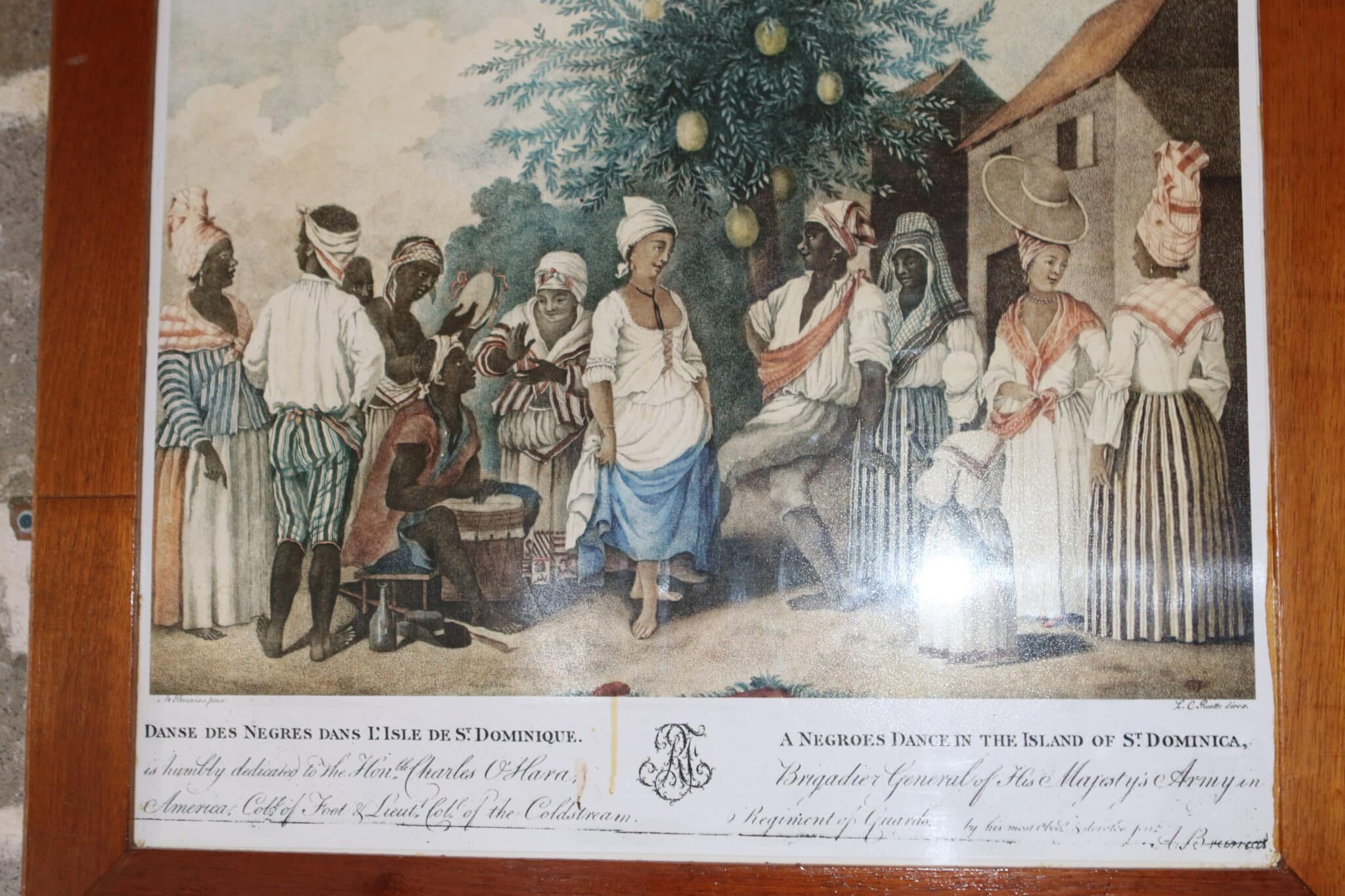
What else is worth knowing about Dominica? You can swim and snorkel in Douglas Bay. It has been influenced by both French and English culture, which means that although English is the dominant language, many still speak Creole. If you have time to explore some of the waterfalls, it’s a worthwhile use of your time on the island.
You can also take an Indian River Boat Cruise, a great choice for nature lovers. The river stems from the Kalinago people, formerly known as Carib Indians. On the cruise, you are likely to spot herons, kingfishers and iguanas. Its oozing with life. I was told that the Pirates of the Caribbean was filed here.
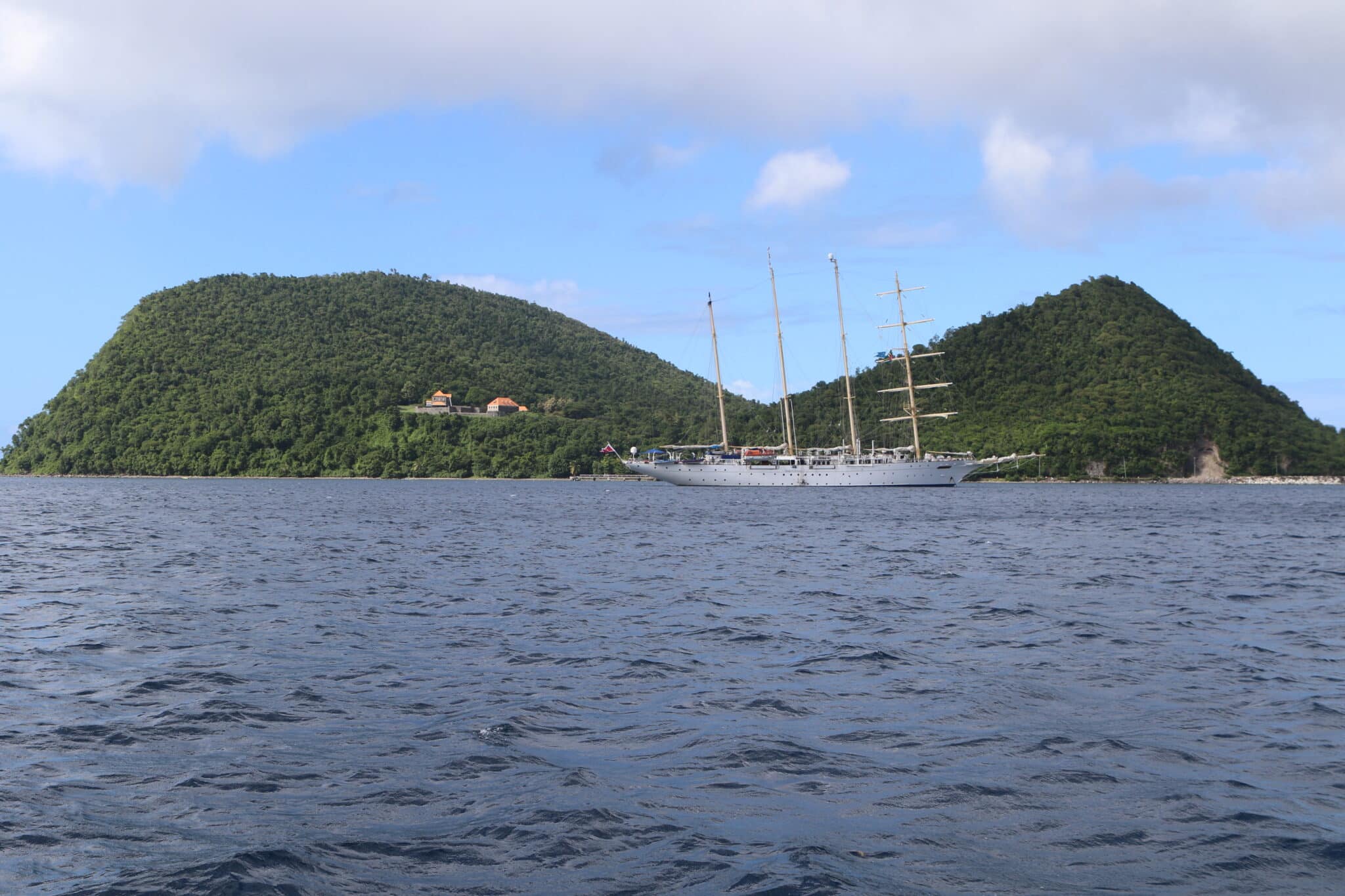
A shot of our ship from mainland Dominica.
On a quirky note, Cabrits comes from the word goat in French, Portuguese and Spanish. If you have time to try some of their local Avocado pear juice, it’s worth trying. They also have soursop (I remember this from living in Africa), Passionfruit, Grapefruit and Beetroot (yum!). If you’re a bear drinker, order a Kubuli and relax at one of their cafes. Although you can use U.S. dollars, their local currency is the Eastern Caribbean Dollar – I purposely did an exchange as I collect notes from around the world.
Two more things to note: the Syndicate National Park Nature Trail (a tour you can book starting off in Portsmouth) and the Love & Chocolate Tour. Both were offered excursions as part of our Royal Clipper cruise. The nature trail takes you to roughly 2,000 feet where you can see gorgeous birds as well as local flora and fauna. Bird lovers will want to take note of the rare national birds: the Sisserou and the Jaco Parrot. The Love & Chocolate Tour takes place at Pointe Baptiste Estate near the Calibishie Village. There’s a chocolate factory here surrounded by stunning gardens. It is a family-run business and the cocoa beans are grown and harvested sustainably on the estate.
Antiqua & Barbuda
In the West, at least in the modern world, we know the island by Antigua, which means ancient in Spanish. Technically, it’s actually Antigua and Barbuda, which became an independent state within the Commonwealth of Nations in 1981. That said, locals refer to it as Waladi or Wadadl, as I quickly learned when I started chatting with someone at the first shop I walked into.
It’s a small island, so if you have a chance to get to its capital — St. Johns in the northwest — it’s worth going. It tends to draw in larger cruise ships so you might want to avoid peak season. There are interesting artisan crafts and paintings to be found here; however, and also a great spot for cafes and restaurants.
Given that we were such a small ship, we stopped at Falmouth Harbor. Here, we walked to Nelson’s Dockyard, named after Captain Horatio Nelson, which is a restored British colonial naval station. In some ways, it reminded me of a New England port. I could feel the Western influence; it was no surprise to learn about their annual regatta that brings in many ships and yachts for the event. In the north, there are other marinas as well — Sammy’s Boat Yard Marina and Catamaran Marina, for those who want to experience a marina vibe for drinks or lunch. I spent a chunk of time at the dockyard before taking a hike.
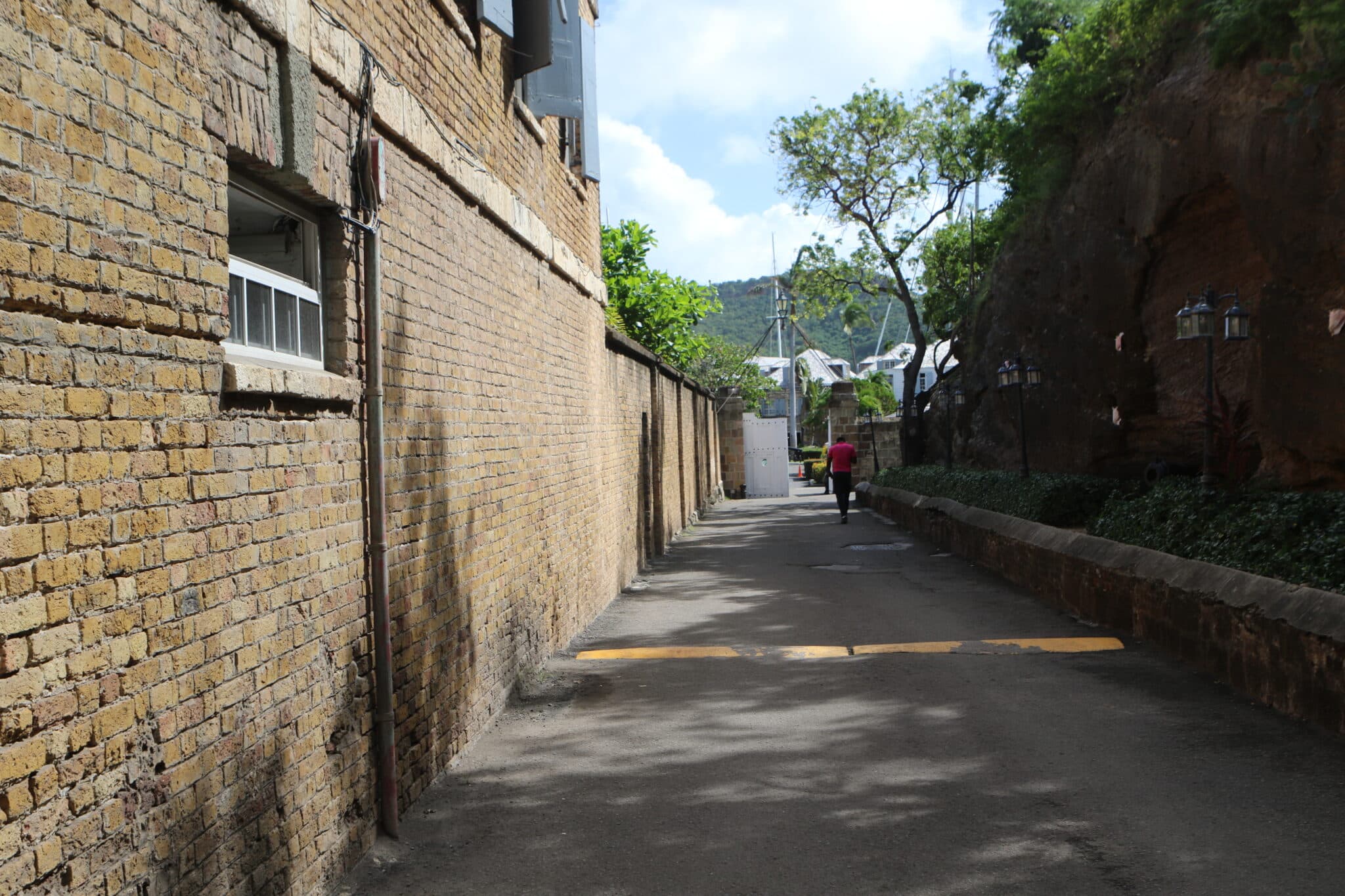

When you first arrive at the harbor, you’re greeted with views of yachts and ships in all directions, so both short and longer walks around the island (especially heading up hill) are all worth doing.
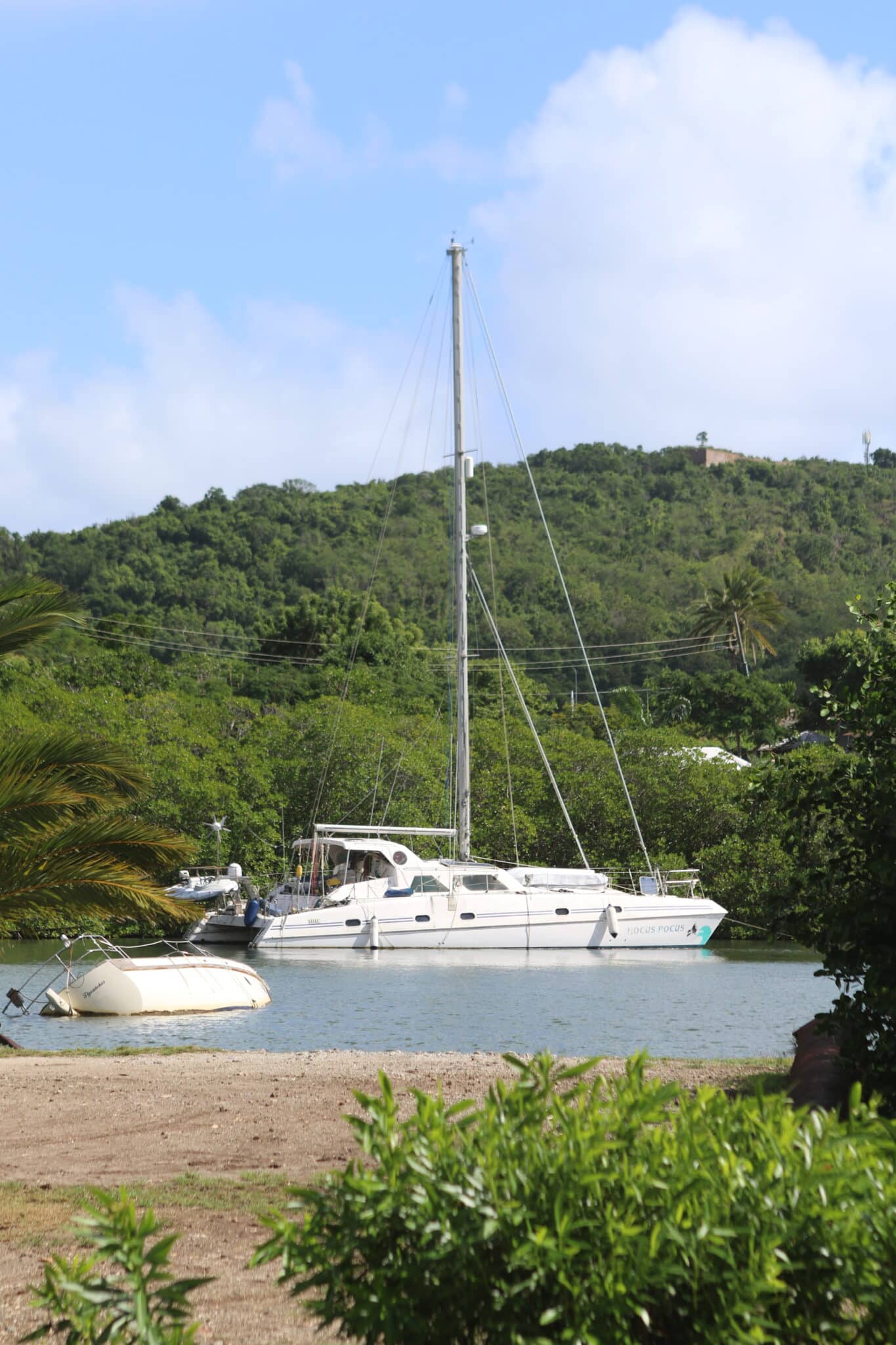
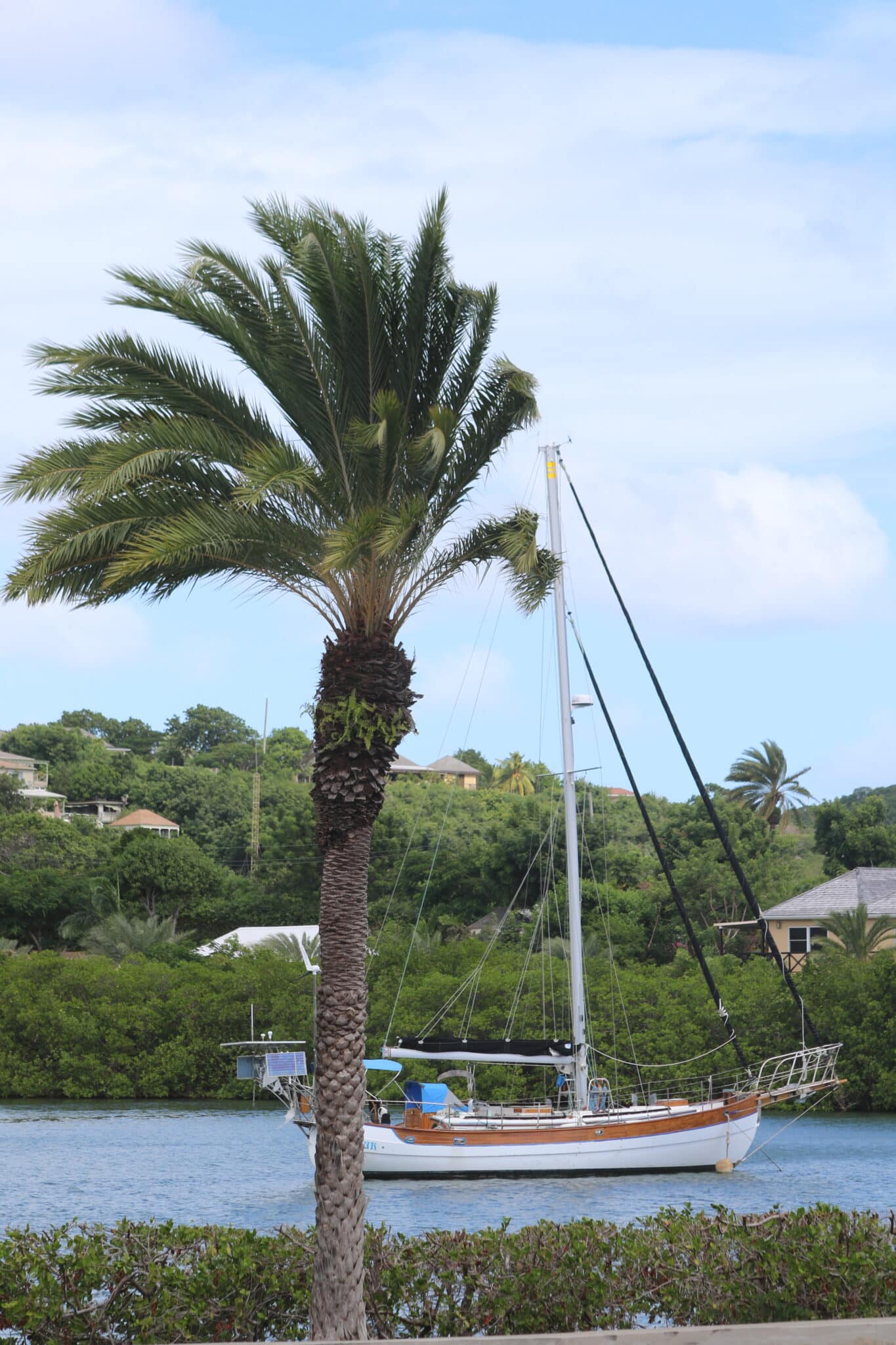
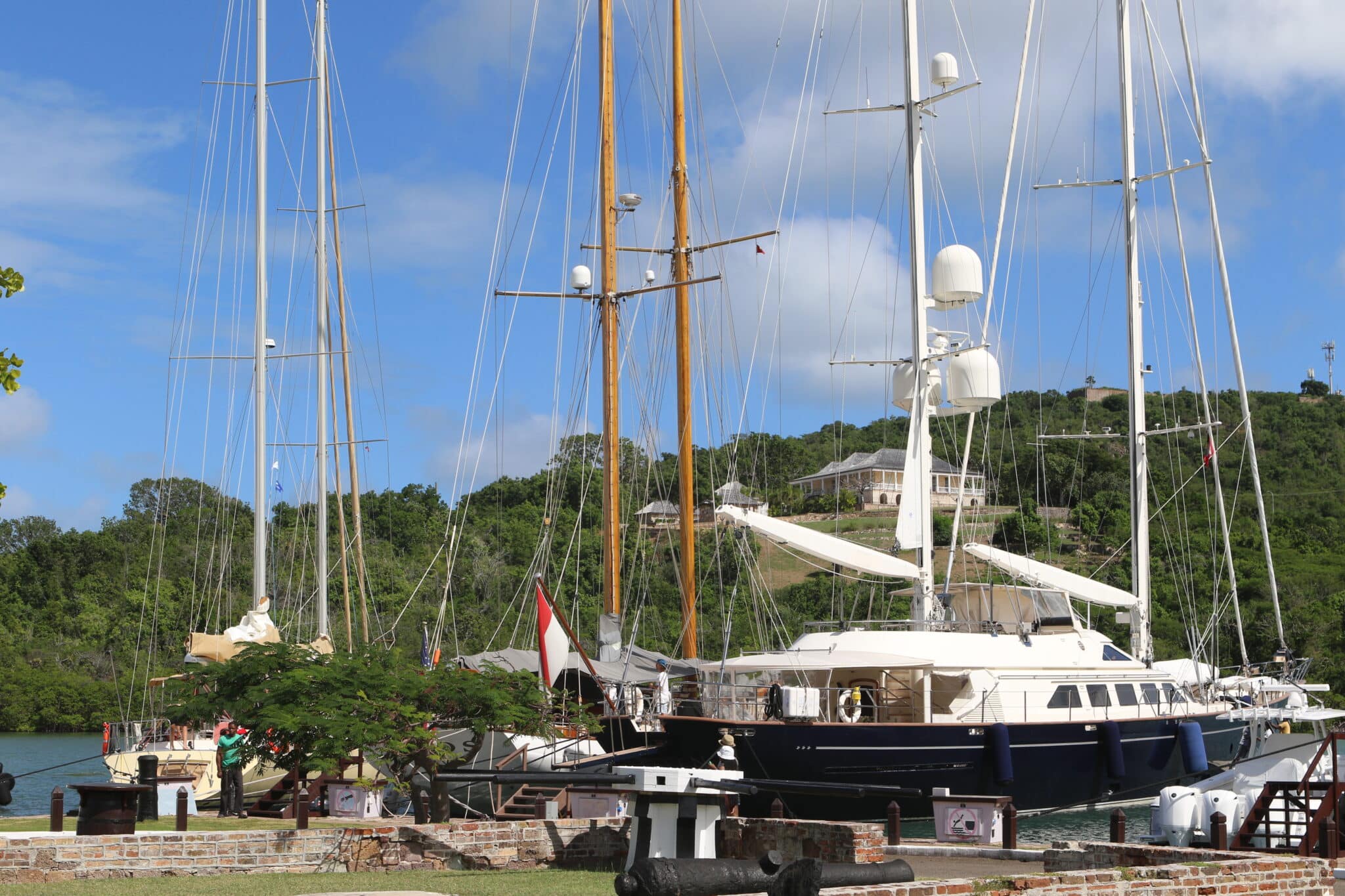
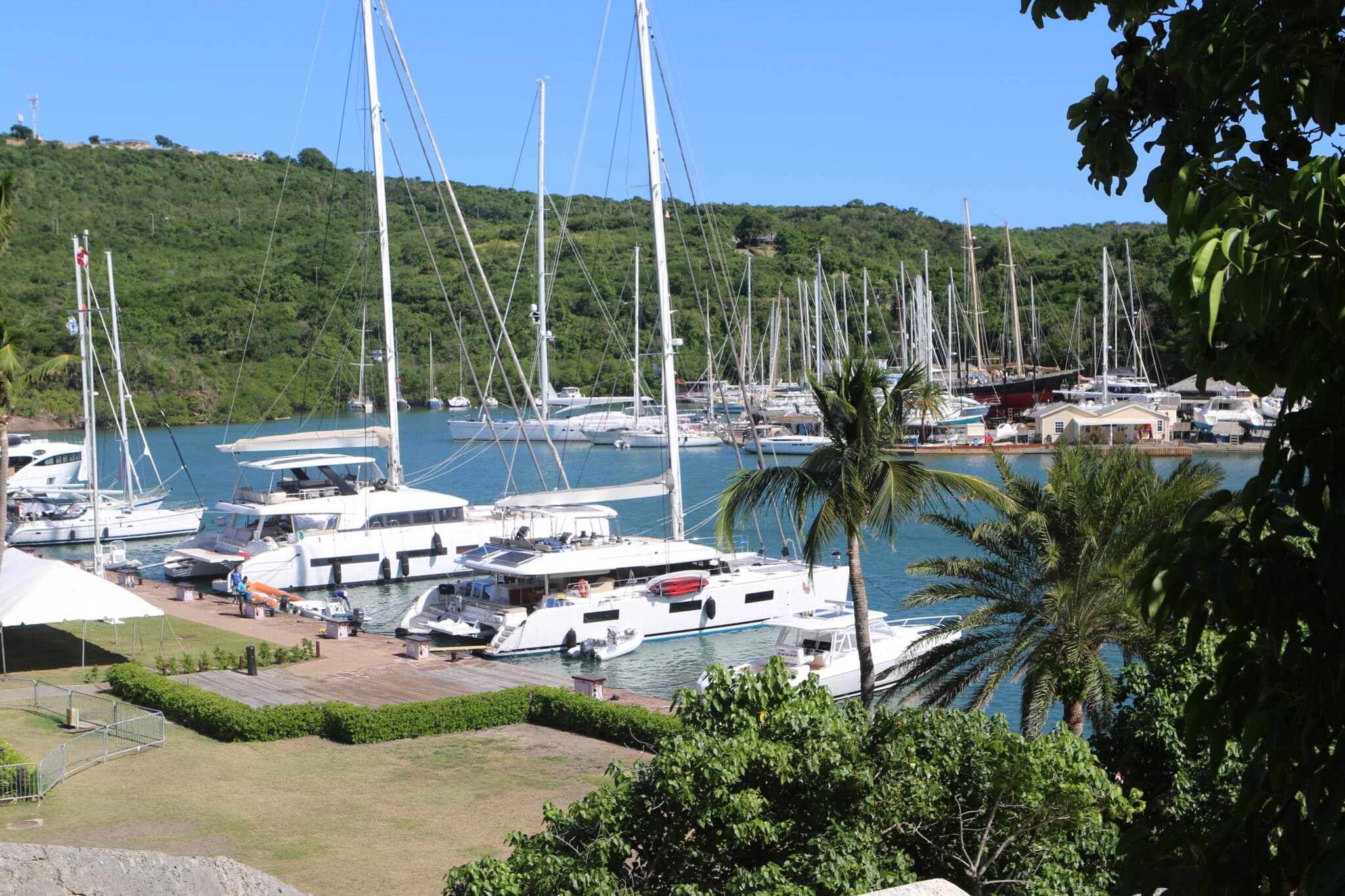
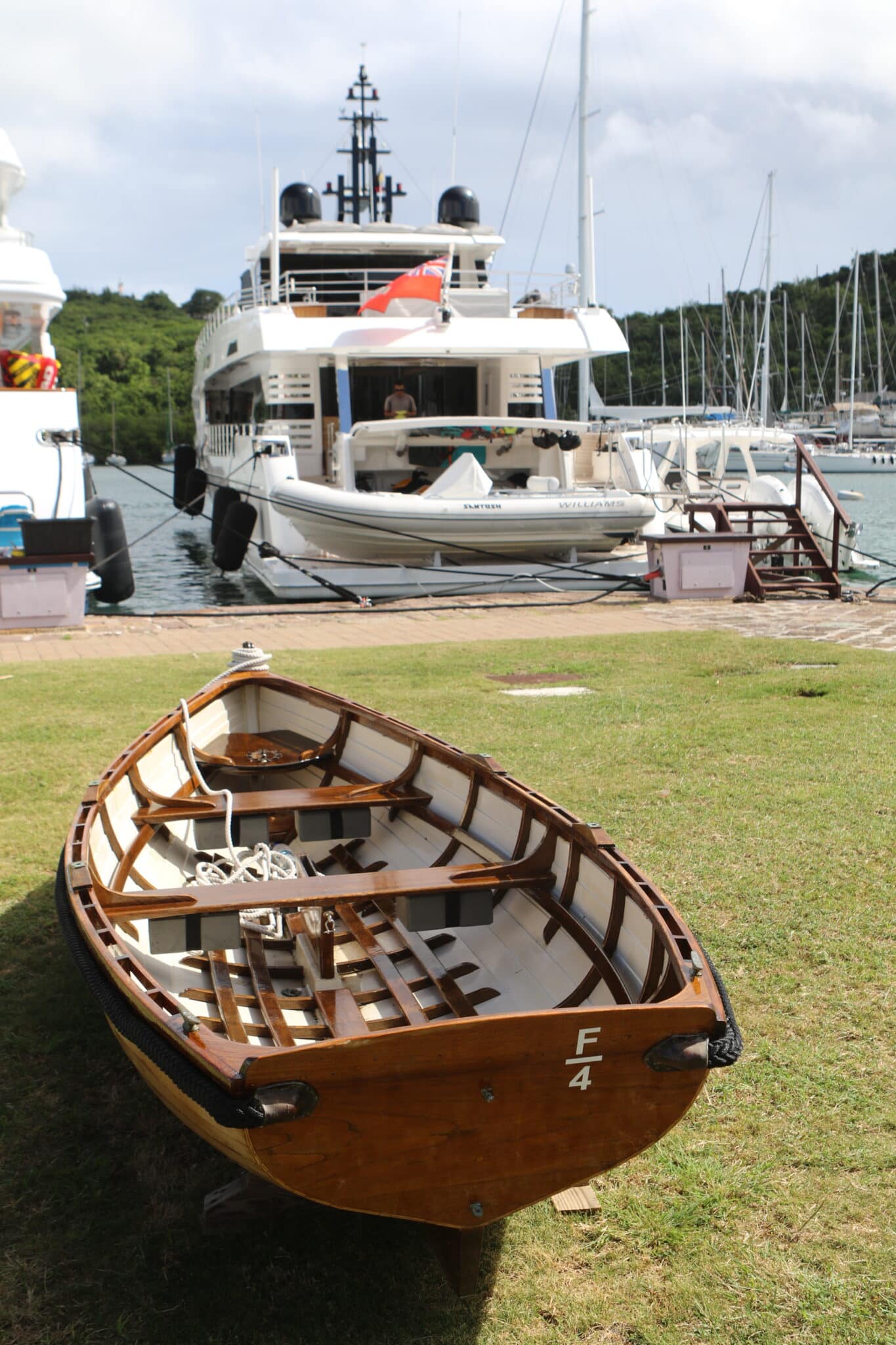
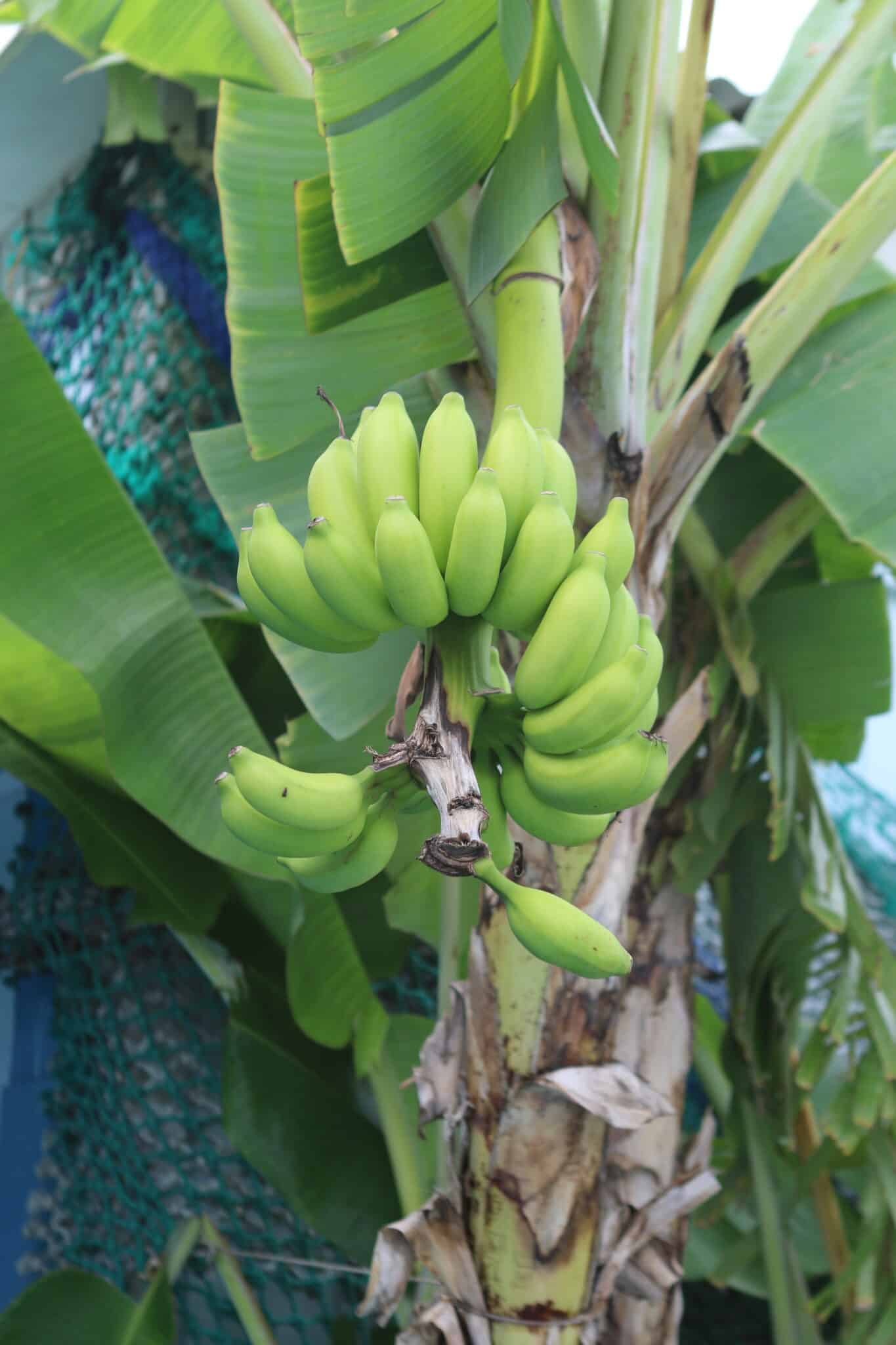
Banana trees can be found scattered along some of the winding paths
Nelson’s Dockyard also has a few shops, cafes and places to hang out, both inside and out. As a cultural heritage site, it is also part of Saint Paul Parish as well. Dotted around the very walkable area are buildings where the architecture is remnant of its English influence. For example, Clarence House and Shirley Heights are amongst the national park, which btw, is also a UNESCO World Heritage Site.
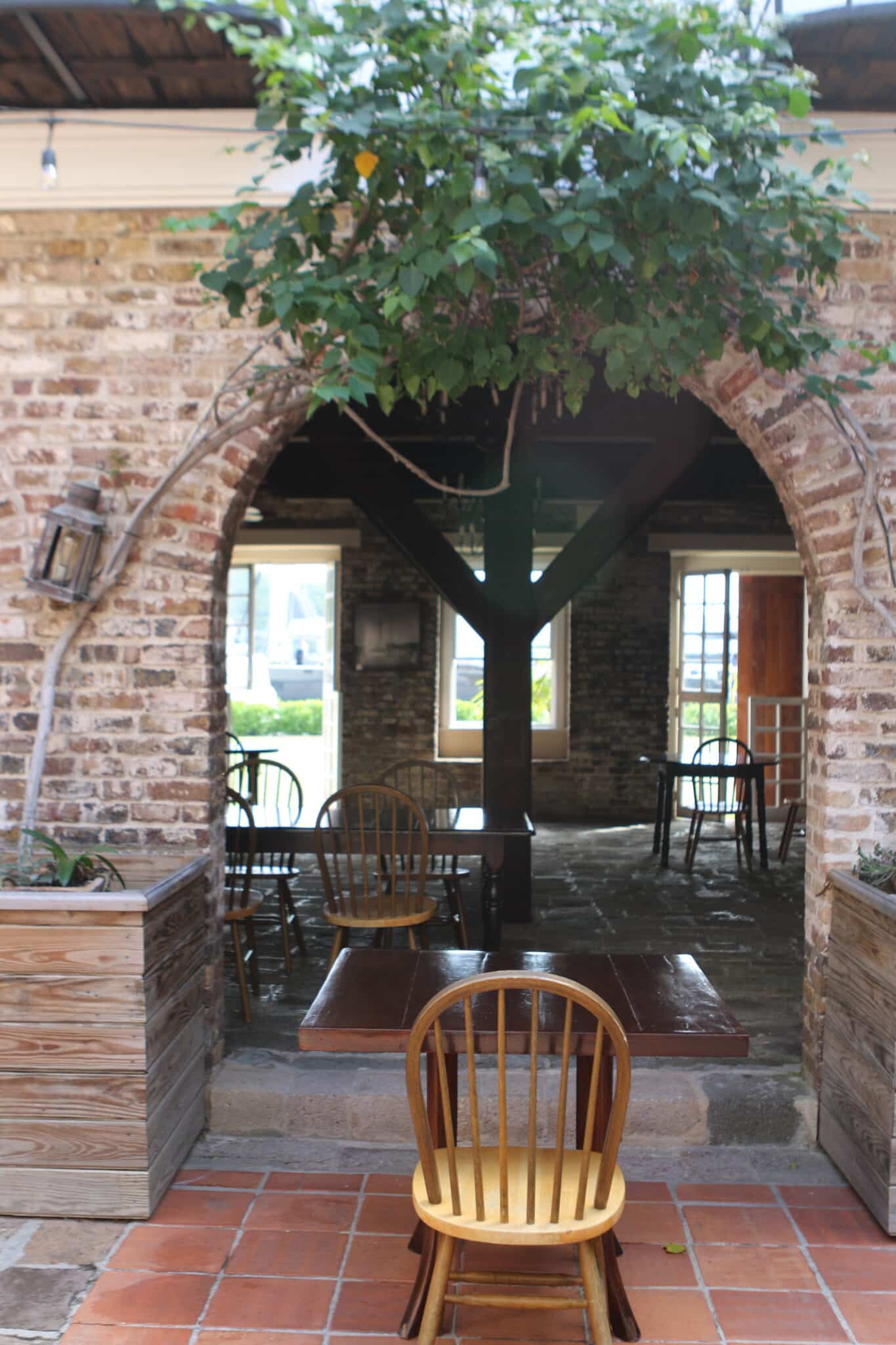
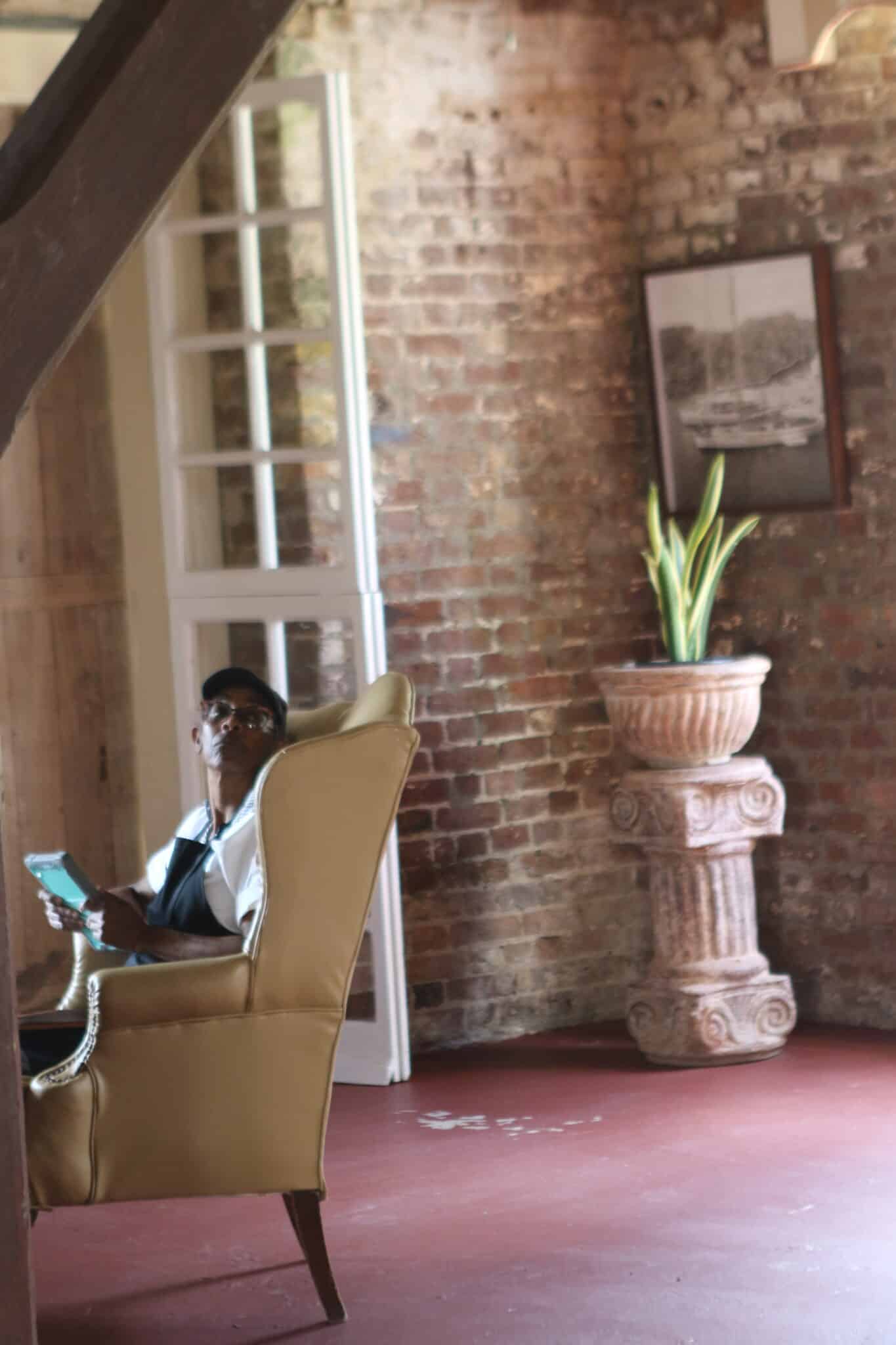
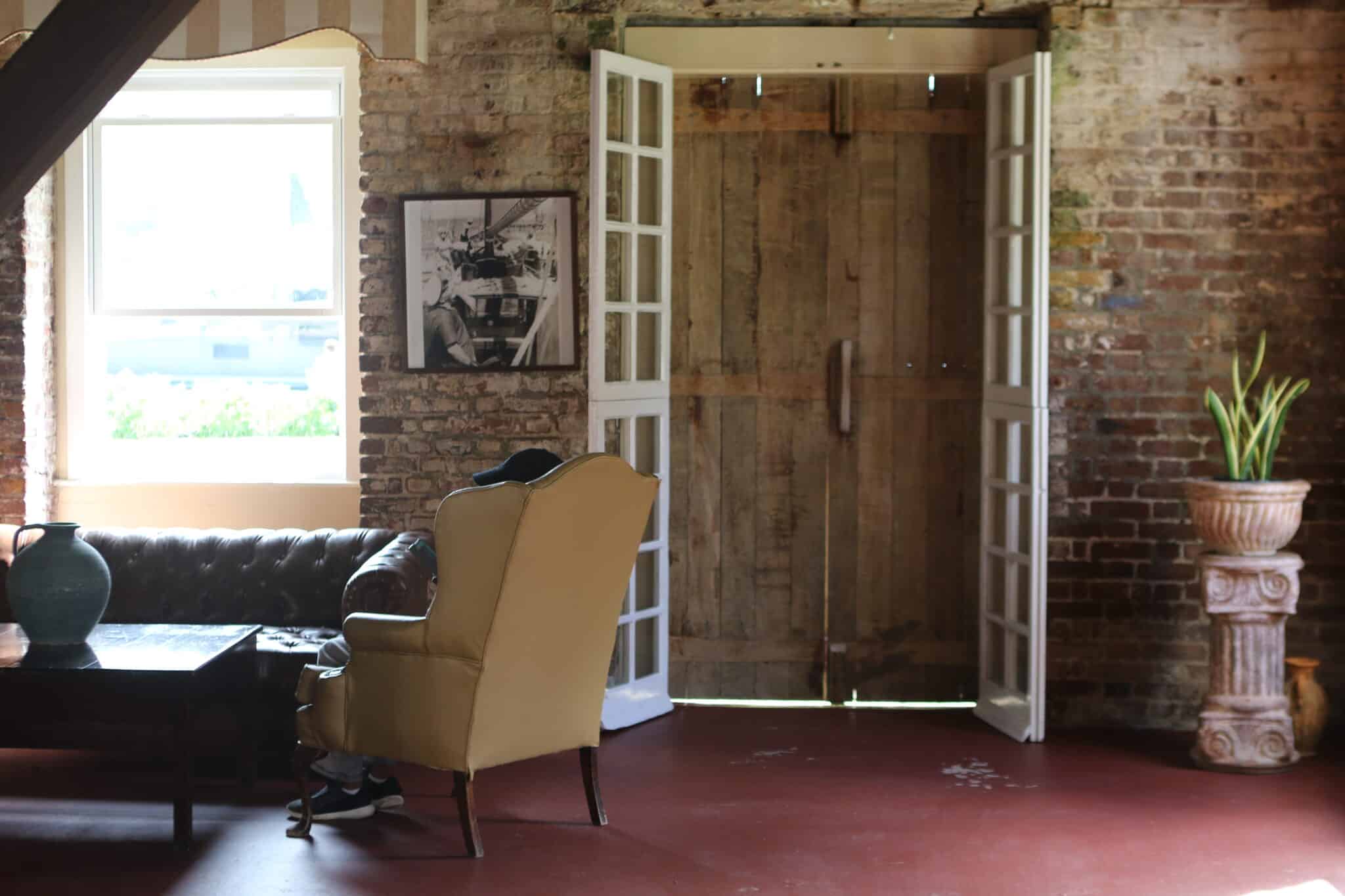
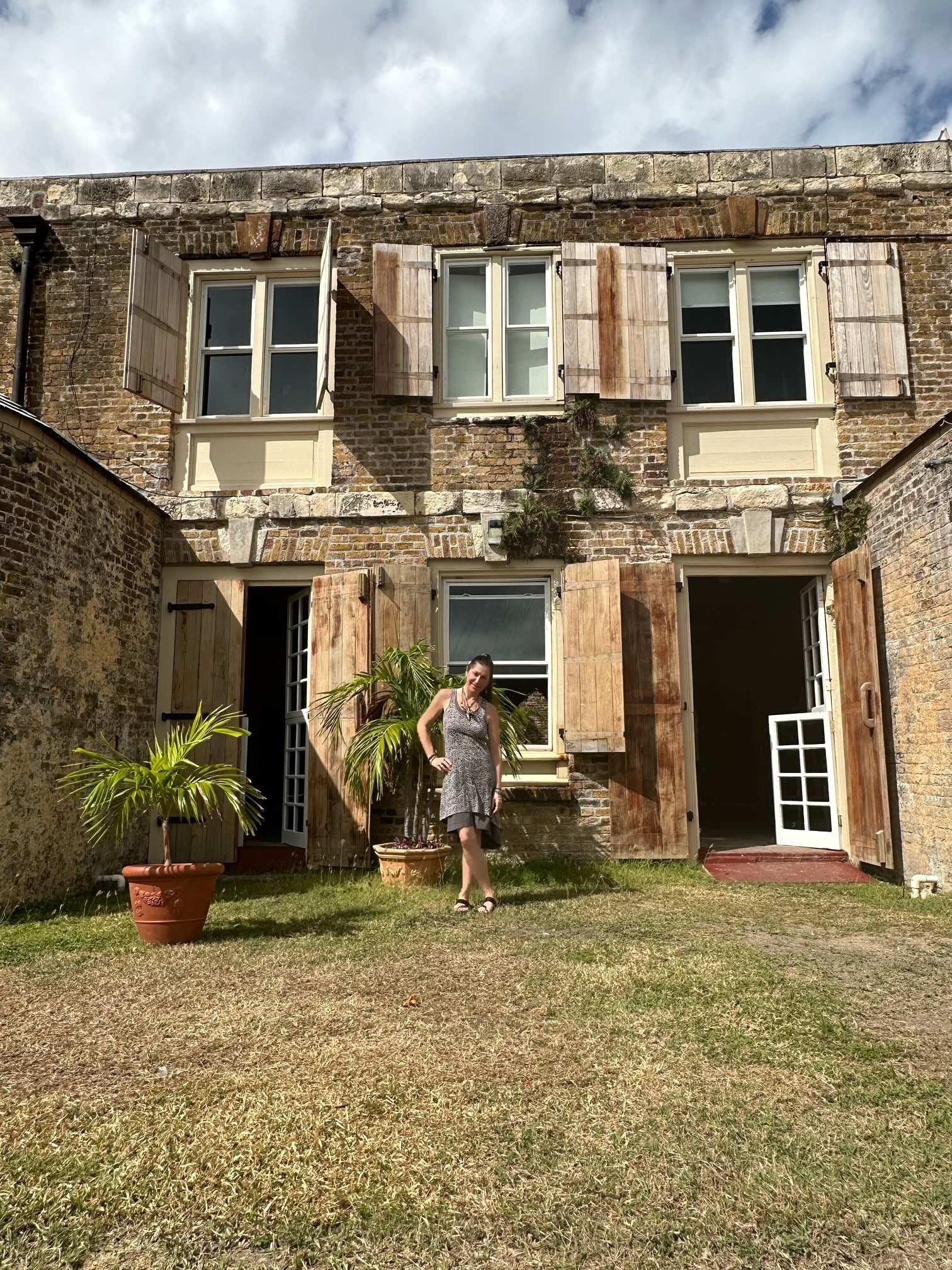
The brick walls had me at hello so I hung out for a while chatting with locals, grabbing a cuppa coffee and absorbing the flavor of the place.
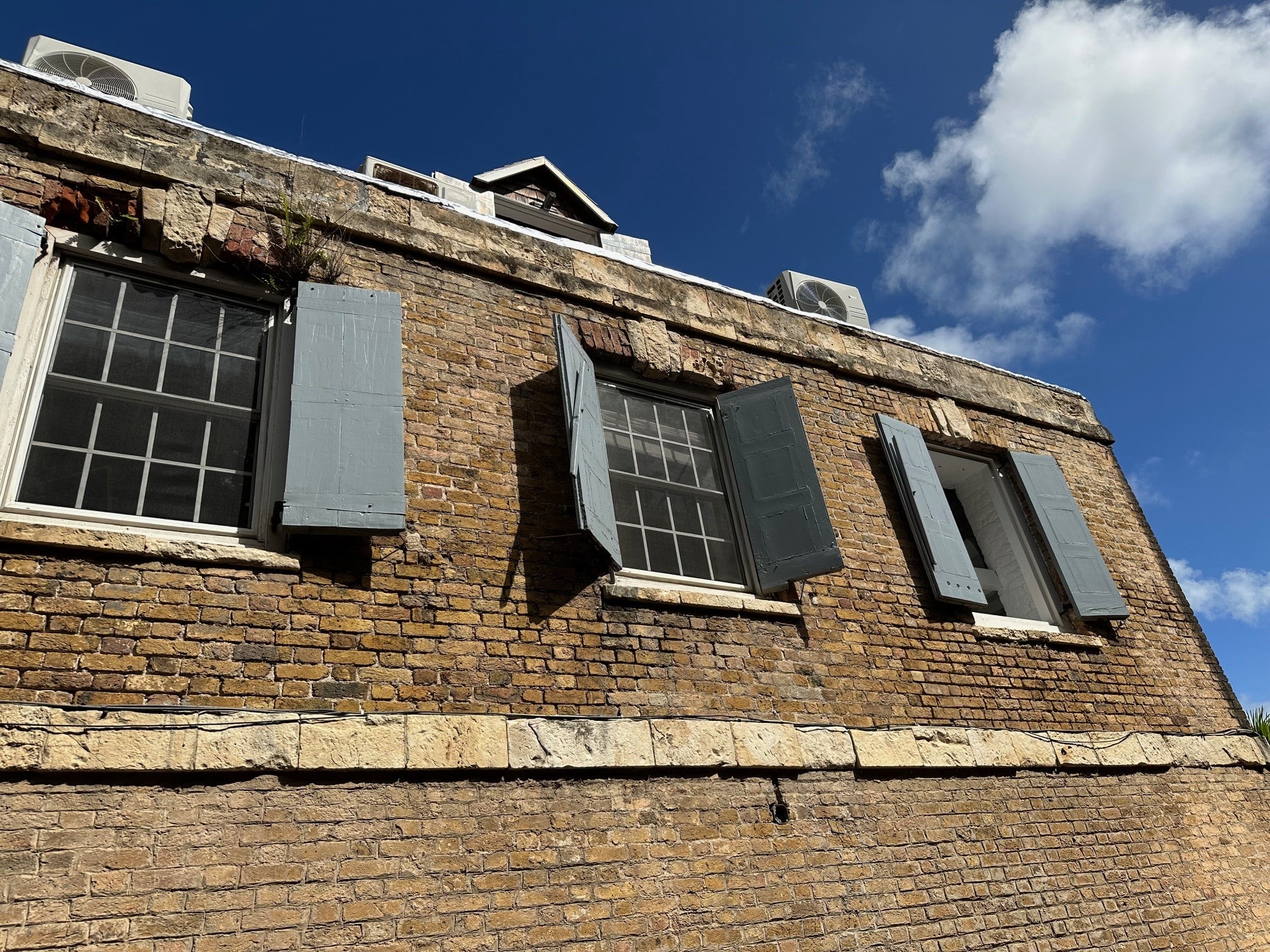
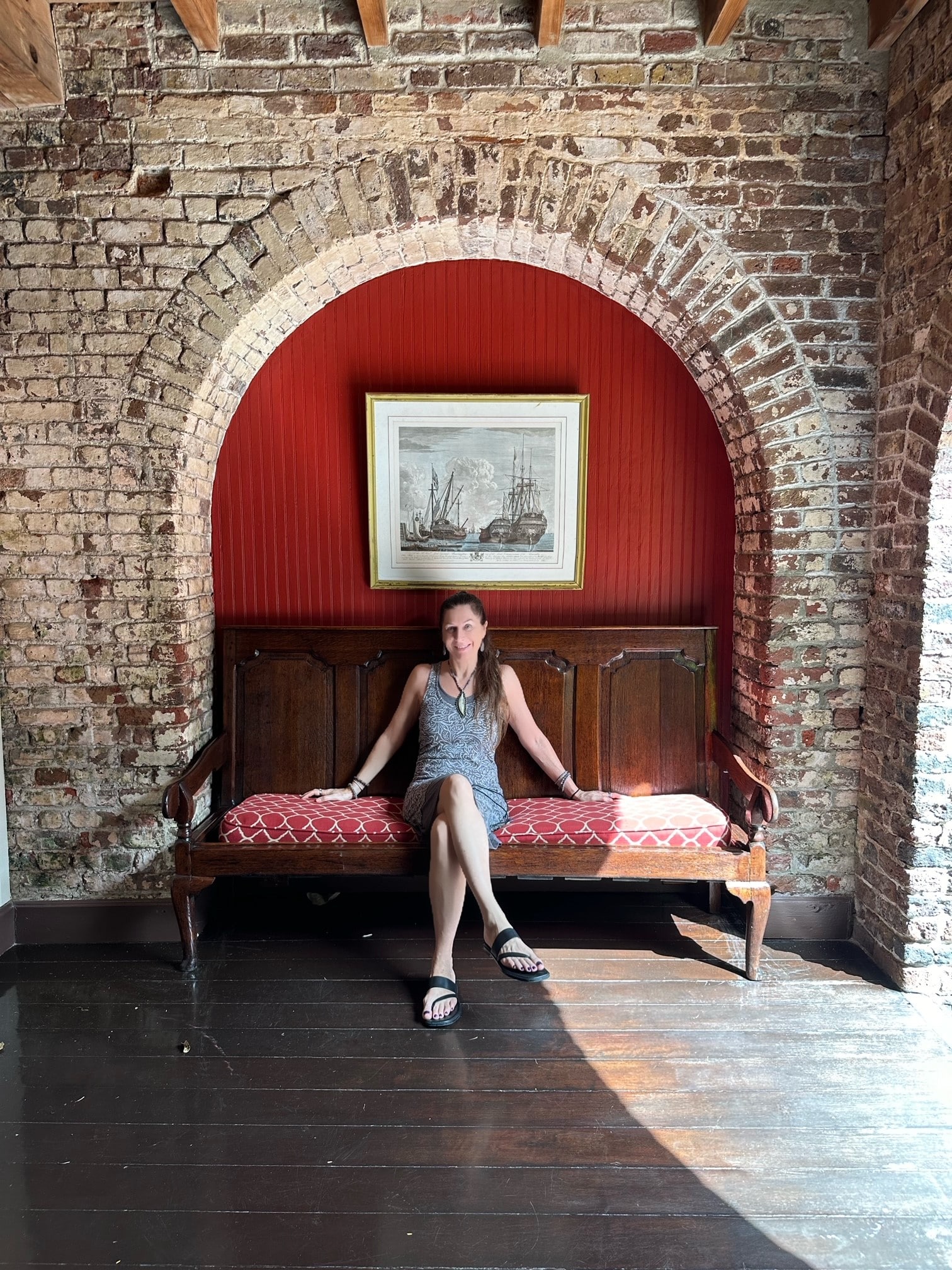
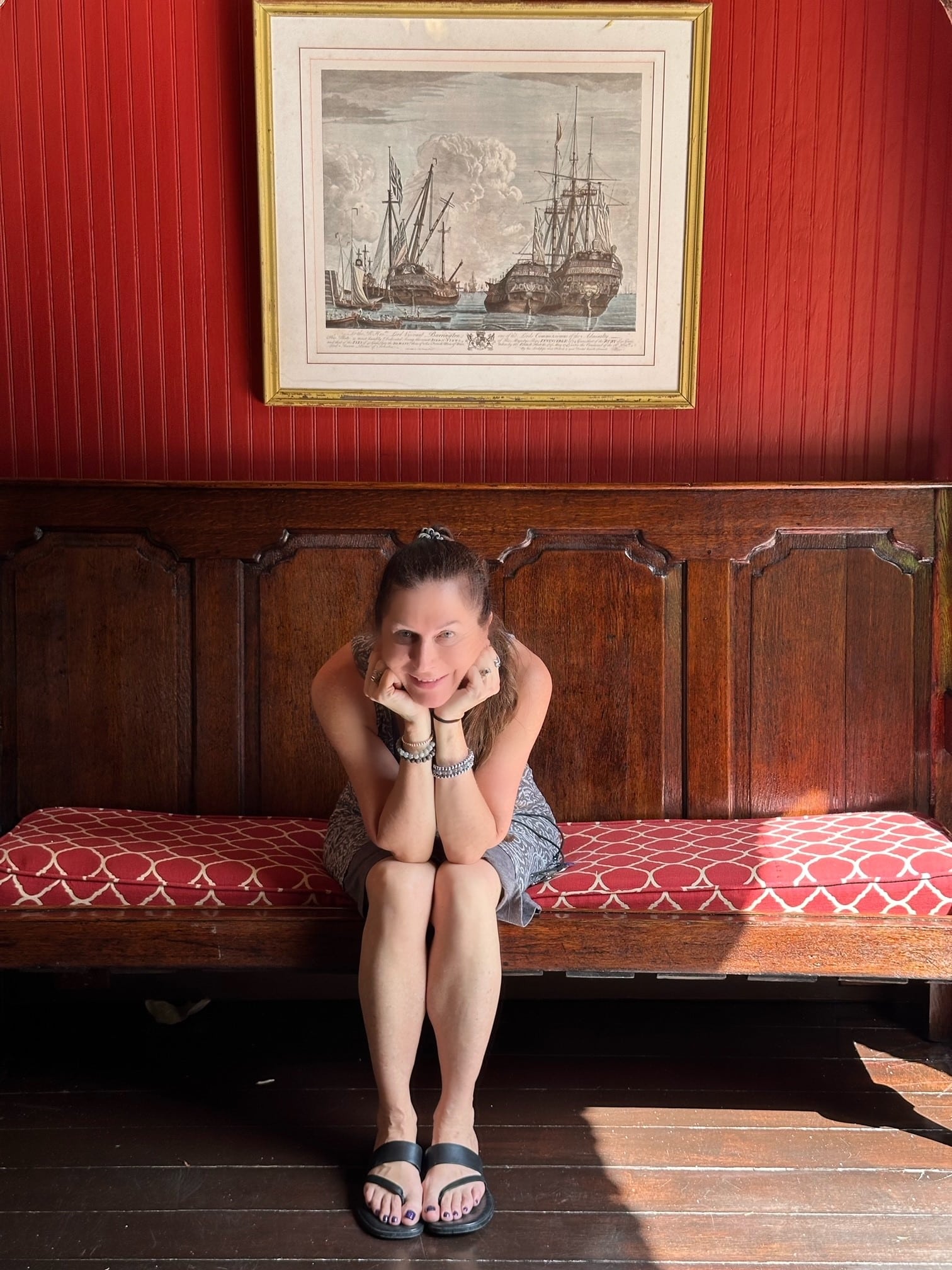
The views were spectacular and the water, clear blue and pristine. A few beaches worth mentioning include Galleon Beach close to Falmouth Habour, Pigeon Beach and Marl Bay Beach.
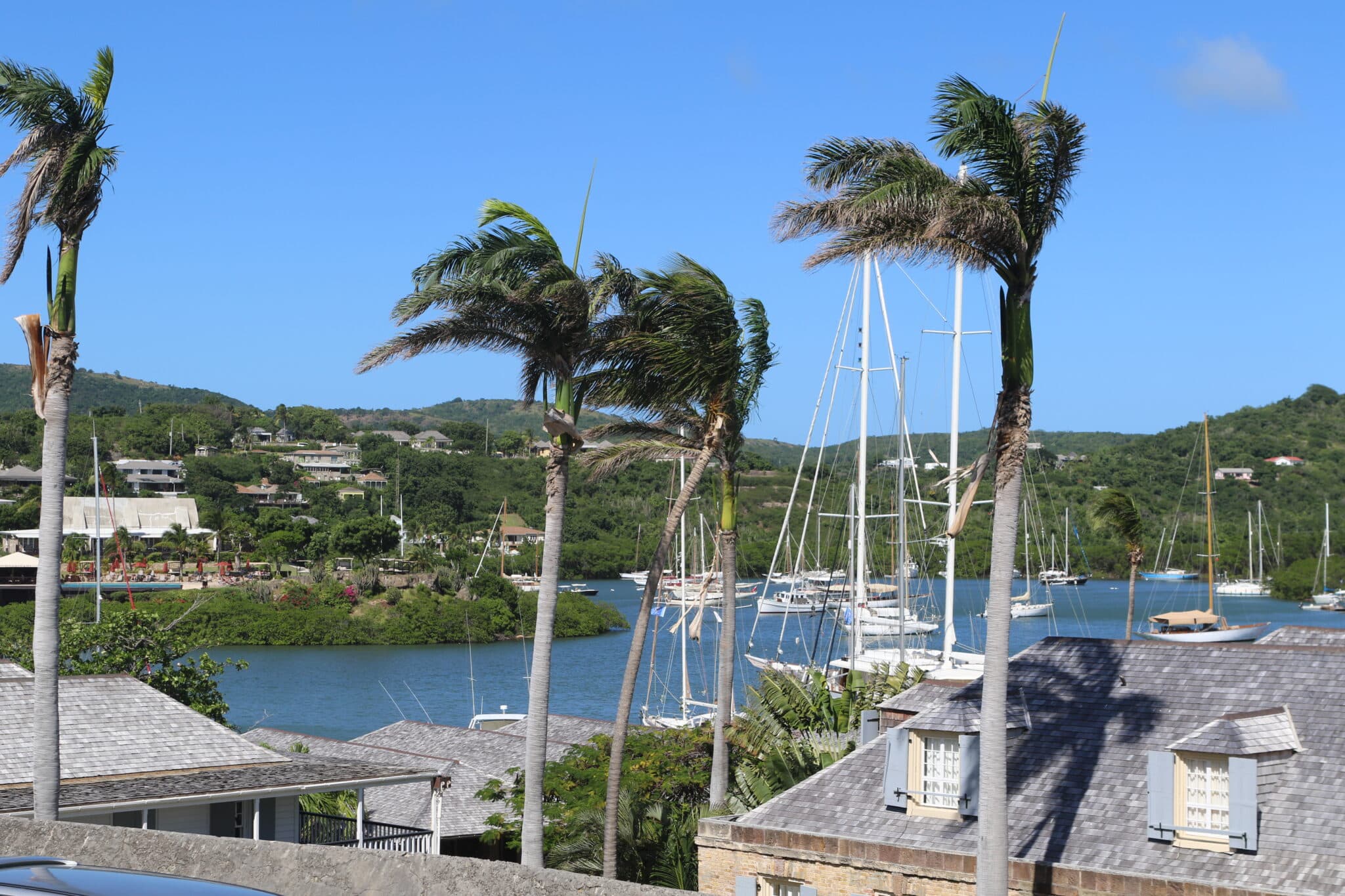
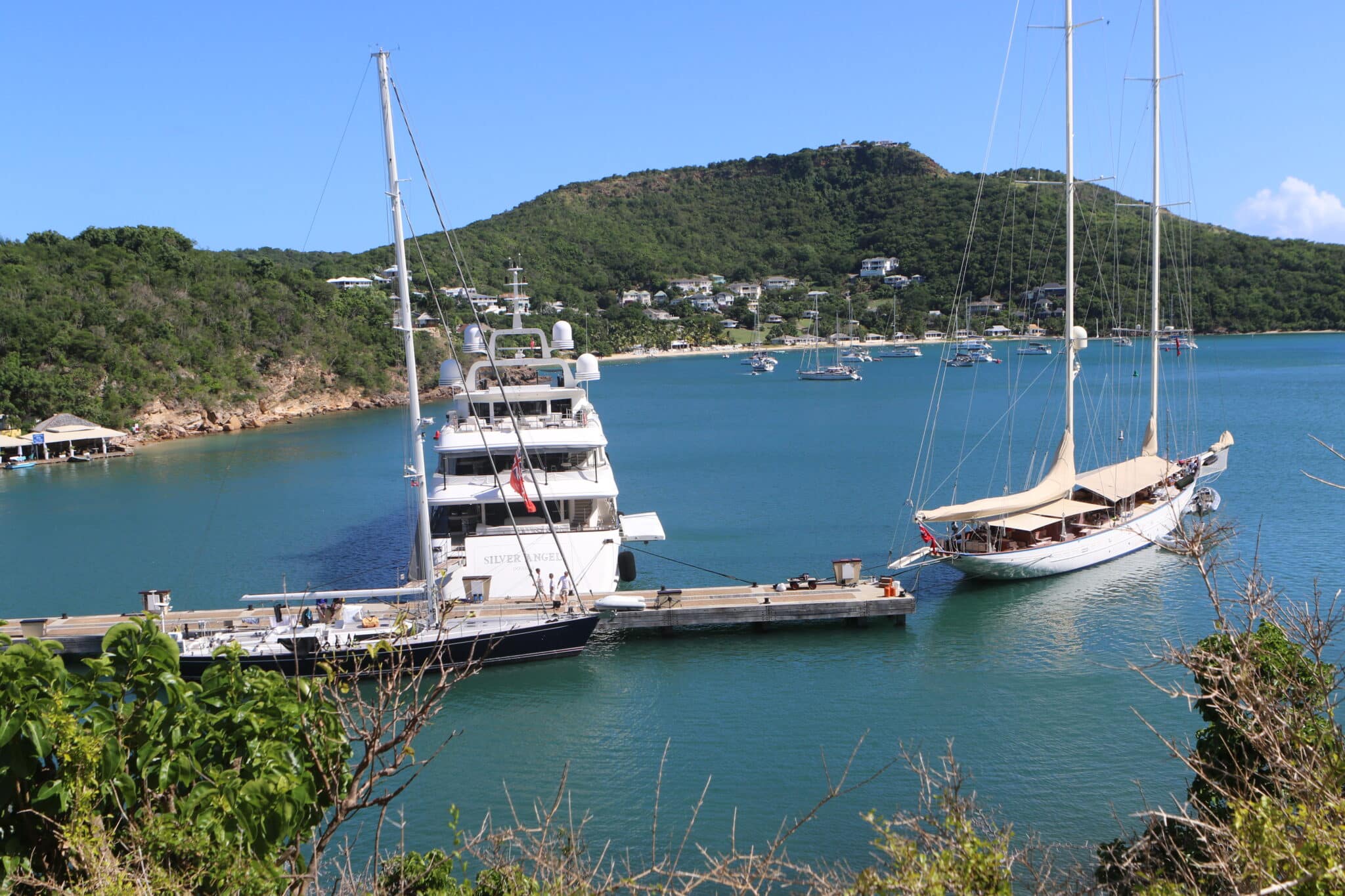
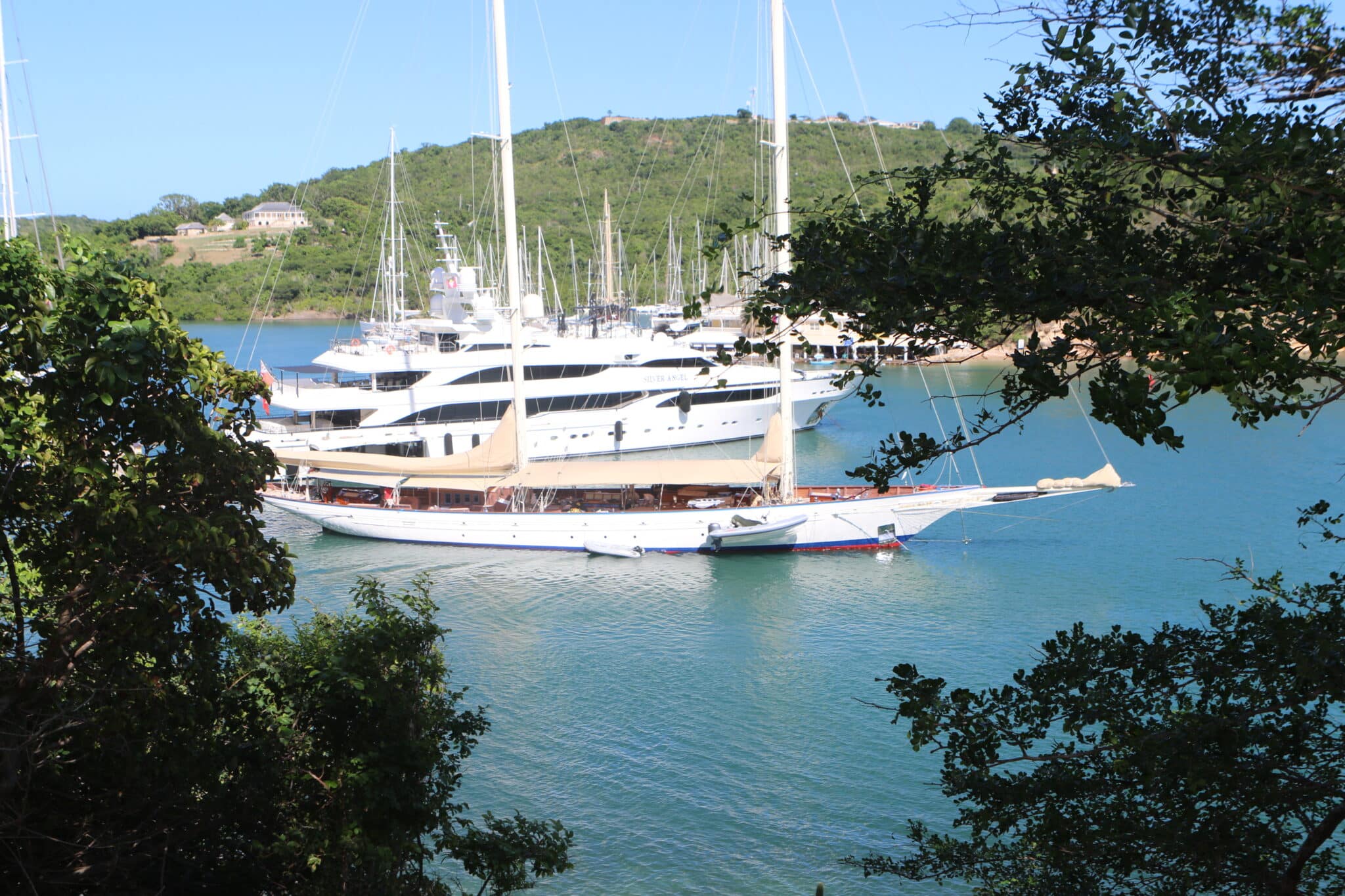
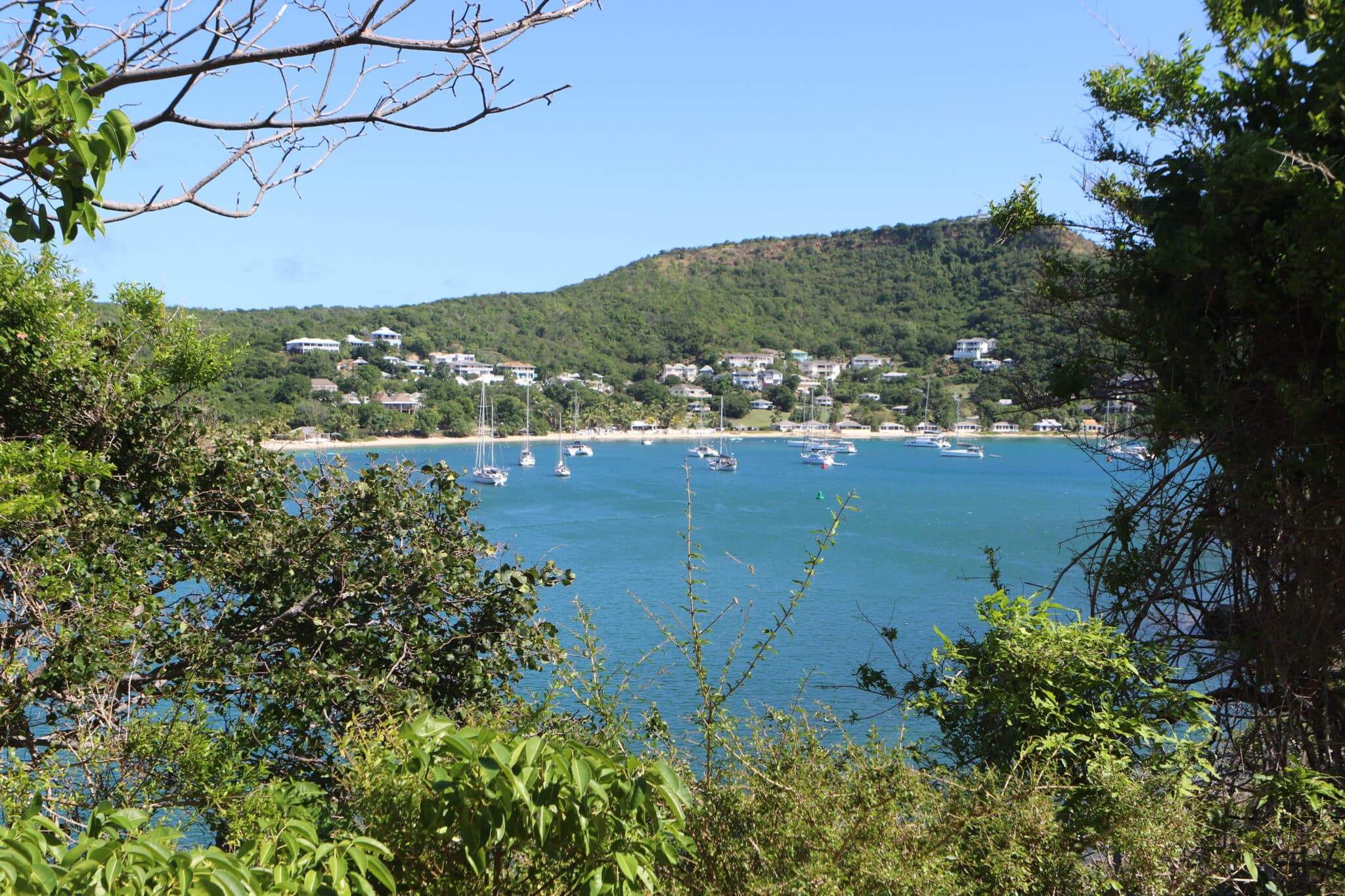
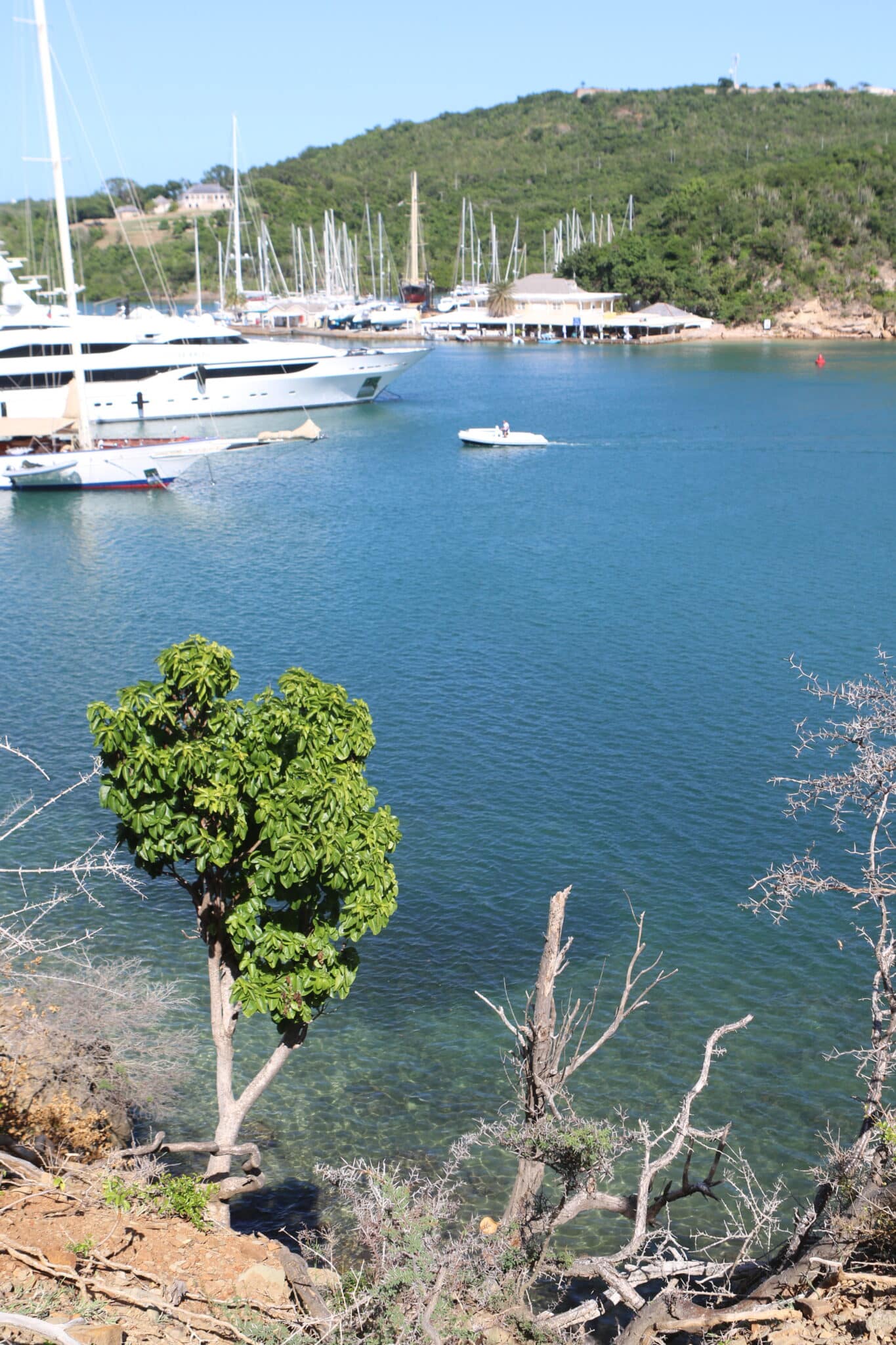
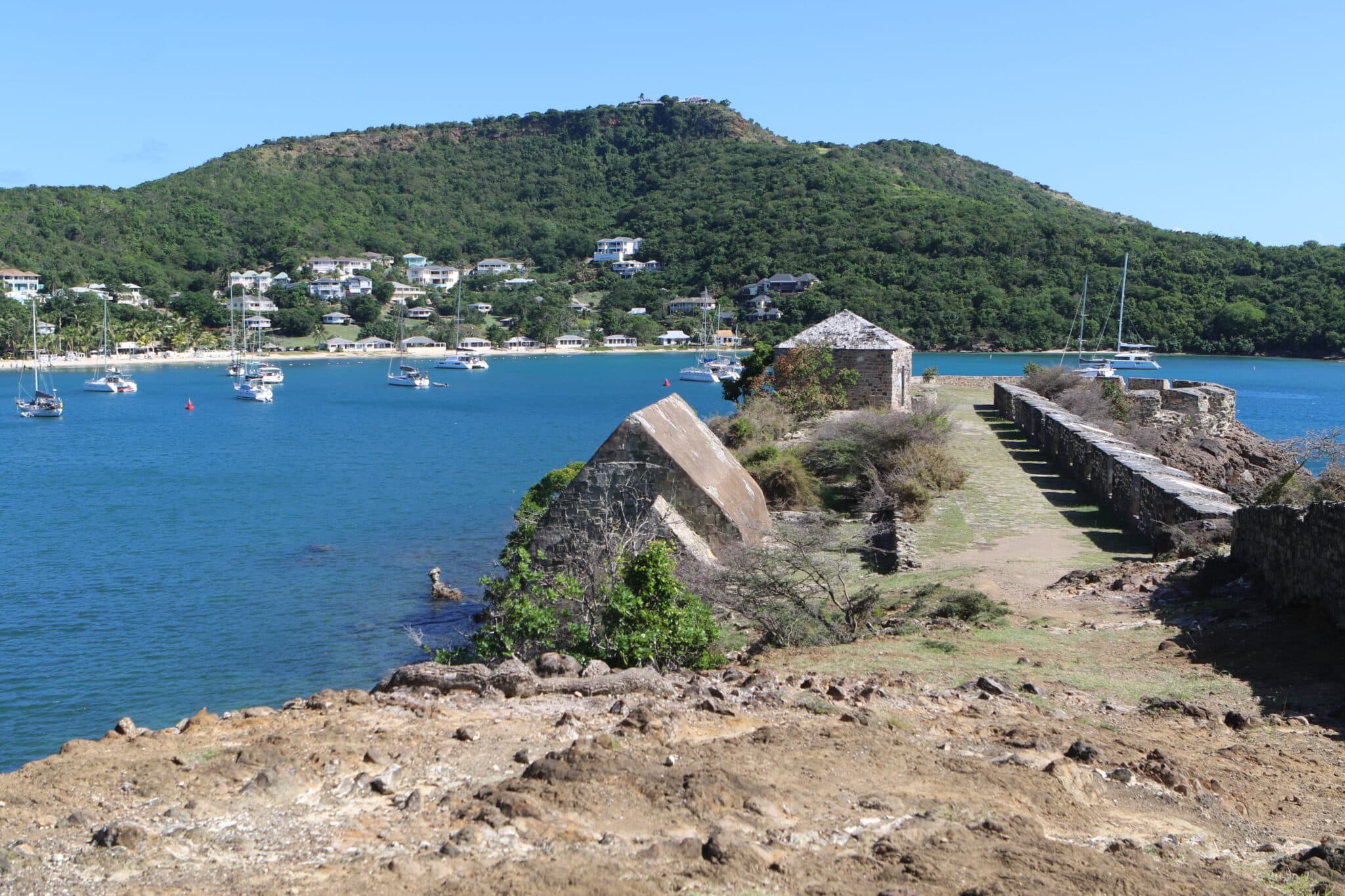
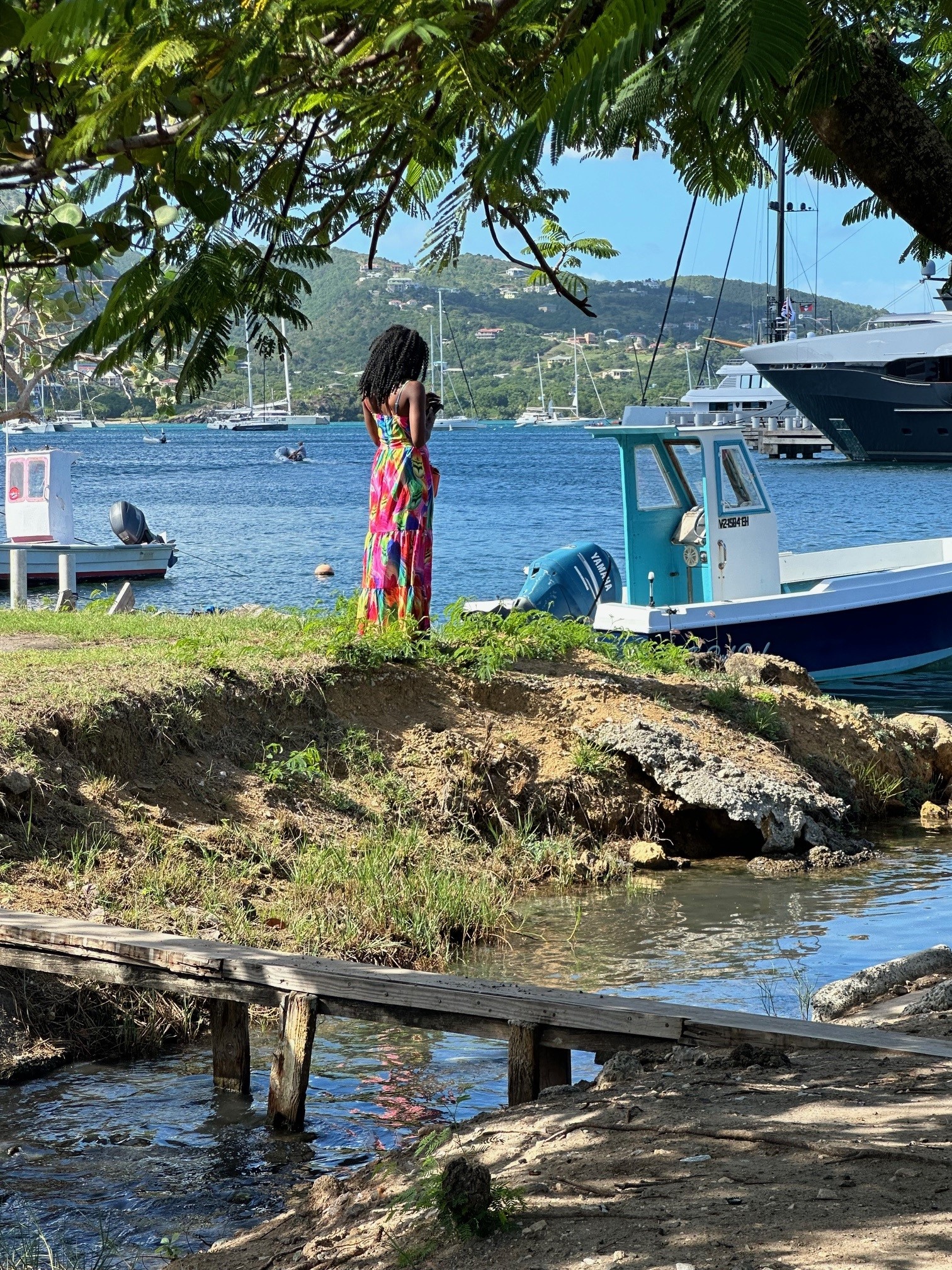
Also worth noting here is that you can kayak and snorkel, also offered as a cruise excursion. If going on your own, you need to head to Seaton’s Village on the Northeast coast of Antigua. Then it requires a 15 minute motorboat transfer to the mangrove pontoon where you pick up your kayak. Here, you can explore inlets, uninhabited islands, mangrove alleys and beautiful bays.
What can you expect to see? Starfish, stingrays, turtles, parrot fish (love them), egrets, red billed birds, and hummingbirds, to name a few. You can also jet ski or swim and snorkel with the rays at Stingray City, which is set amongst coral reefs, also in the Northeast coast. They also have Canopy Tours on the island, which takes you through the lush rain forest. The Rangers at Antigua Rainforest Company set you up before you embark upon a tree top adventure through the trees on zip lines. The zip lines range from 52 to 328 feet in length, crossing the breathtaking gorge. If you’re an avid zip liner, the details include 12 zip lines, 3 aerial walkways and two suspension bridges. You get to see a rock pool and a waterfalls as part of the experience as well.
Not interested in water or nature? You can learn how to make your own rum with a 90-minute Rum Masterclass that leaves you with a 750 ml bottle of flavored rum as part of the experience. You also learn the art of tasting and blending your run during the distillation process to create a job customized just for you. How fun right? During the class, you also get to personalize your own label as well, which makes for a great gift.
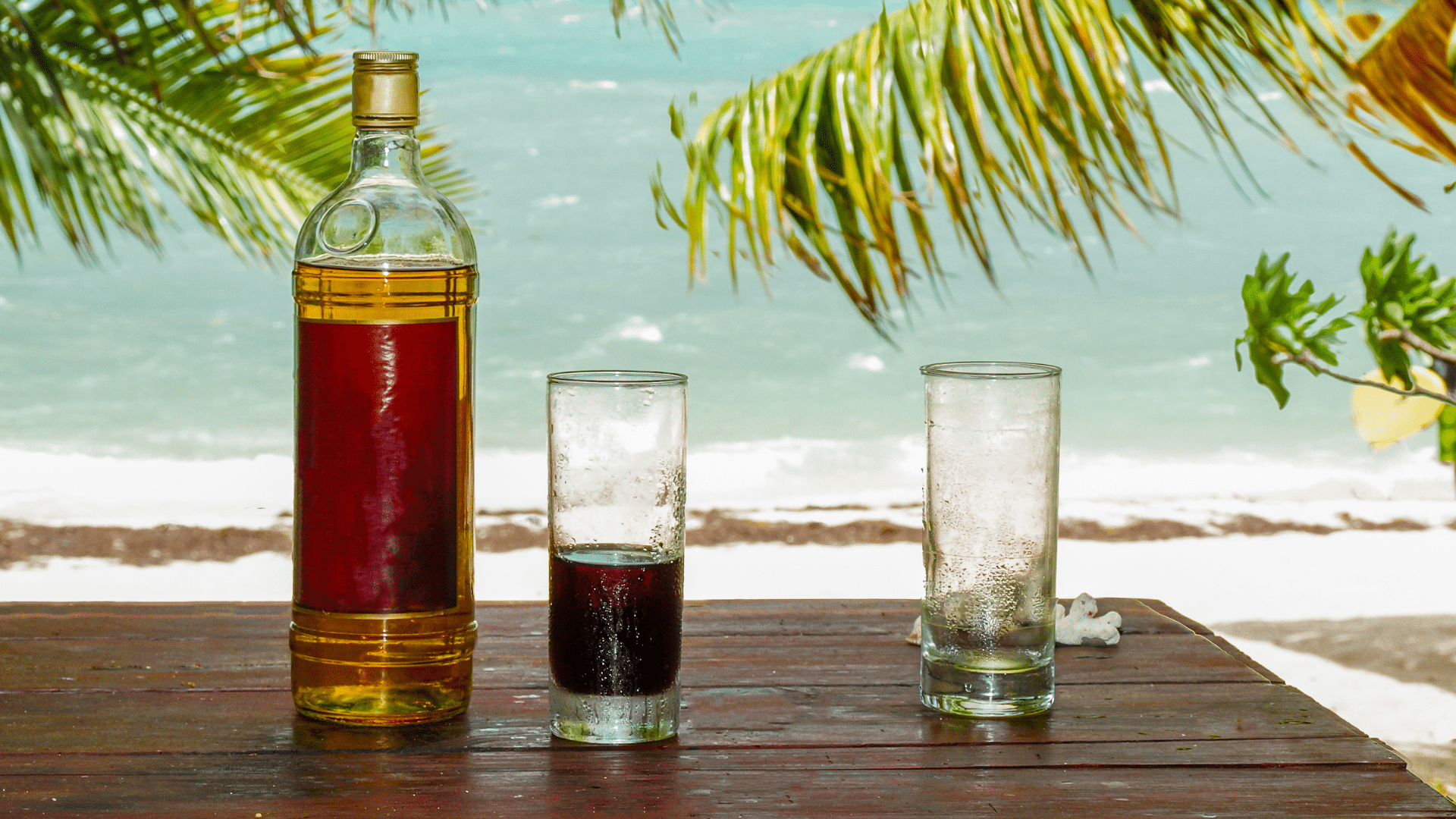
Truth be told, I never really liked rum in my twenties and my thirties, but I decided to try some of the local rum wherever they offered it on the islands, and I have a newfound appreciation for it. After a few samples, you begin to see the art in both creating it and drinking it.
Below, our shuttle boat that took us to and from the Royal Clipper ship.
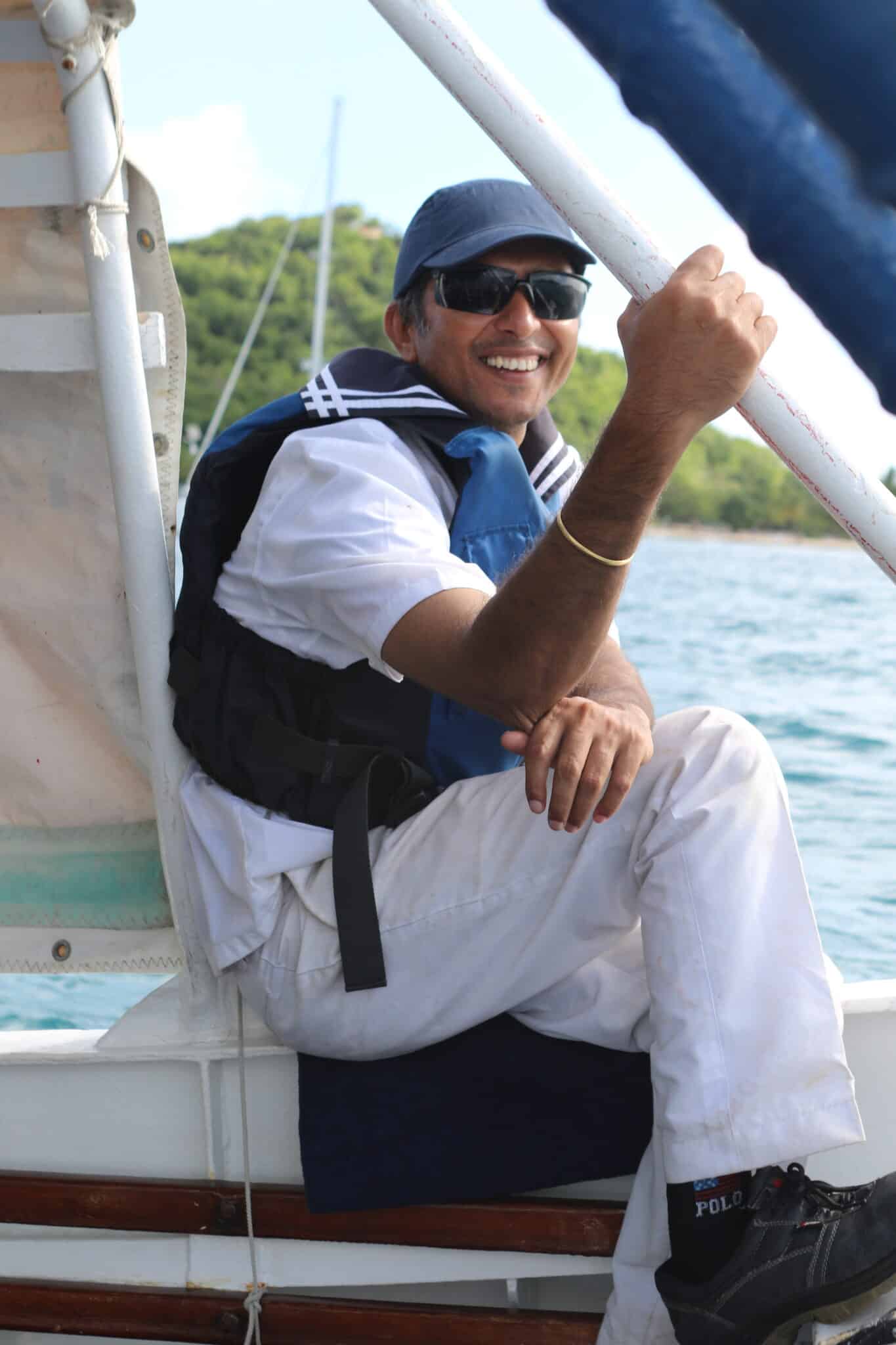
Martinique
Cruise ships tend to stop at Tourelles (the old port) or at Pointe Simon (in downtown Fort-de-France). Martinique‘s capital Fort-De-France has a historical fort, neighborhoods to explore (Didier, Bellevue and Schoelcher — you need to take a taxi since they’re on the hillside) and beaches, such as La Francaise, which tends to get busy from cruise passengers. In the fort, there’s a 12.5 acre park called La Savane, which has beautiful fountains, benches, trees and flora. Nearby, you can grab ferries (roughly 20 minutes to get across the bay to Pointe Du Bout) and here you can visit nearby beaches Anse-Mitan and Anse-a-l’Ane. There’s also a regional history museum which is housed in former residence (1888). Here, you can see Creole headdresses and learn about its history.
You can take a tour that explores the south of the island or take a clear-bottom kayak at Pain de Sucre followed by time to hang out on the beach. Our vote was spending time in the village of Anses d’Arlet, where we explored the neighboring area on foot and took a swim in the sea. We also had a few Pina Coladas along the way.
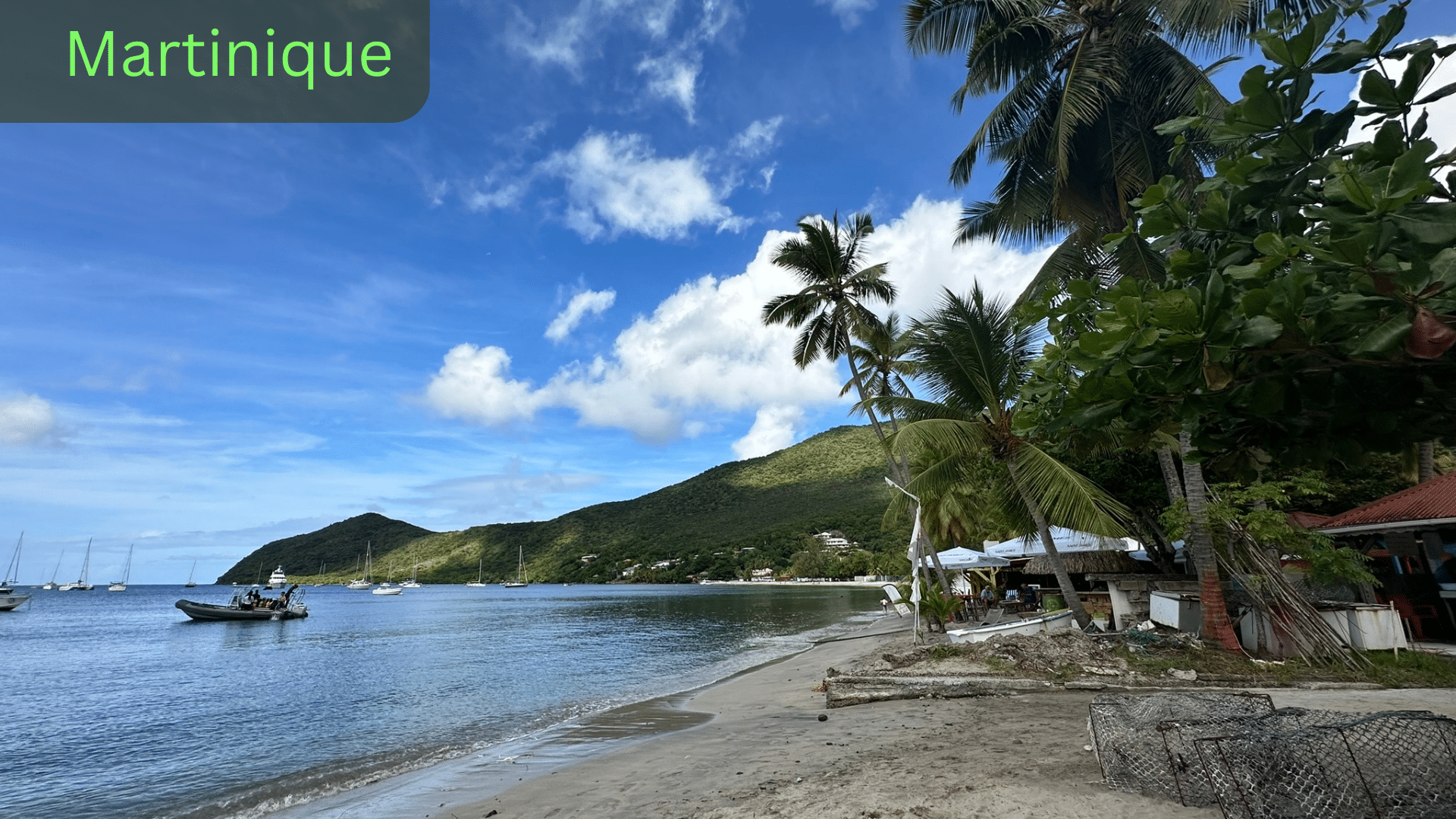
The beach where we disembarked was stunning and worth spending time as you can see. The water is clear and it wasn’t crowded, so we had the place to ourselves.

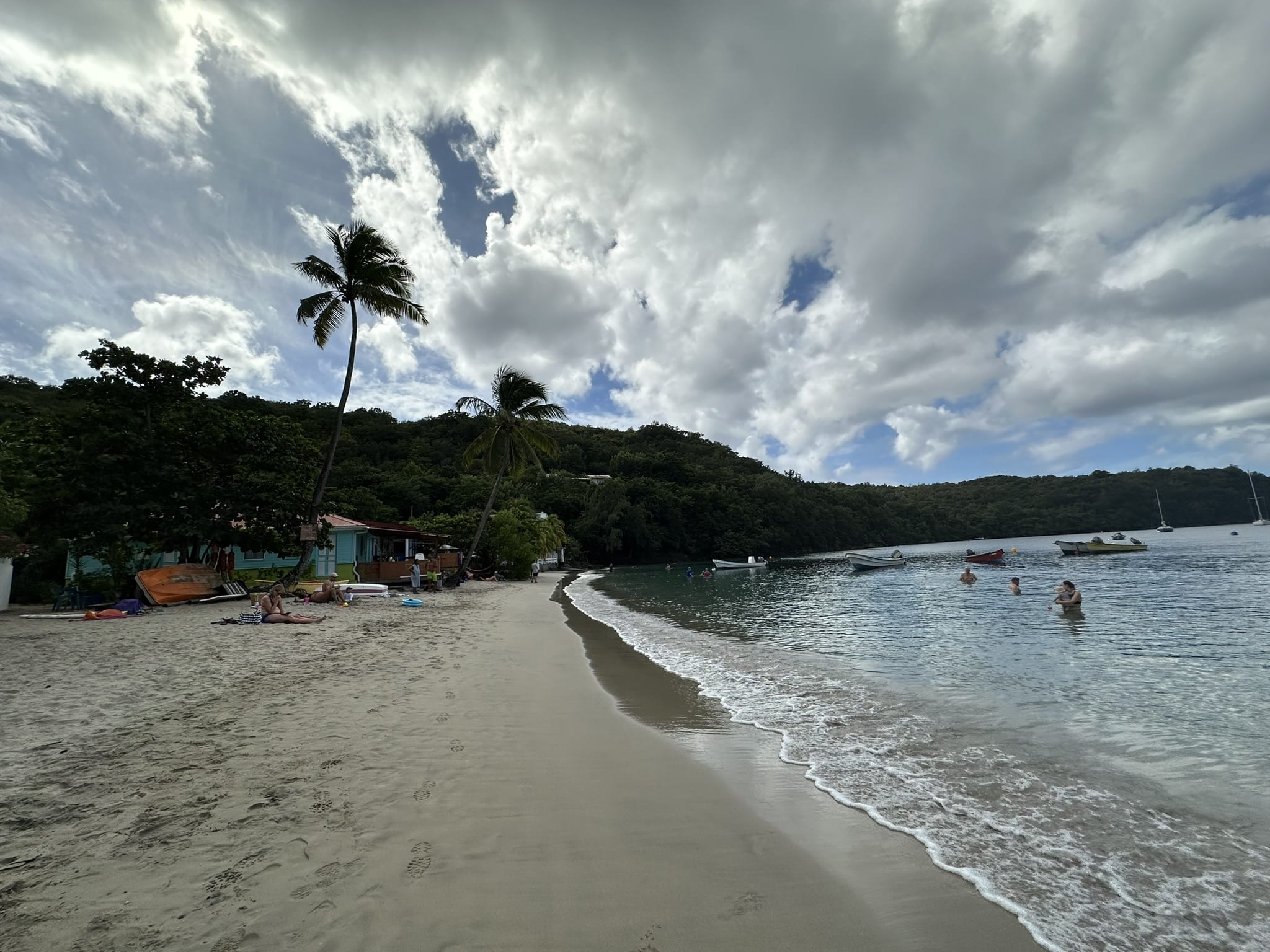

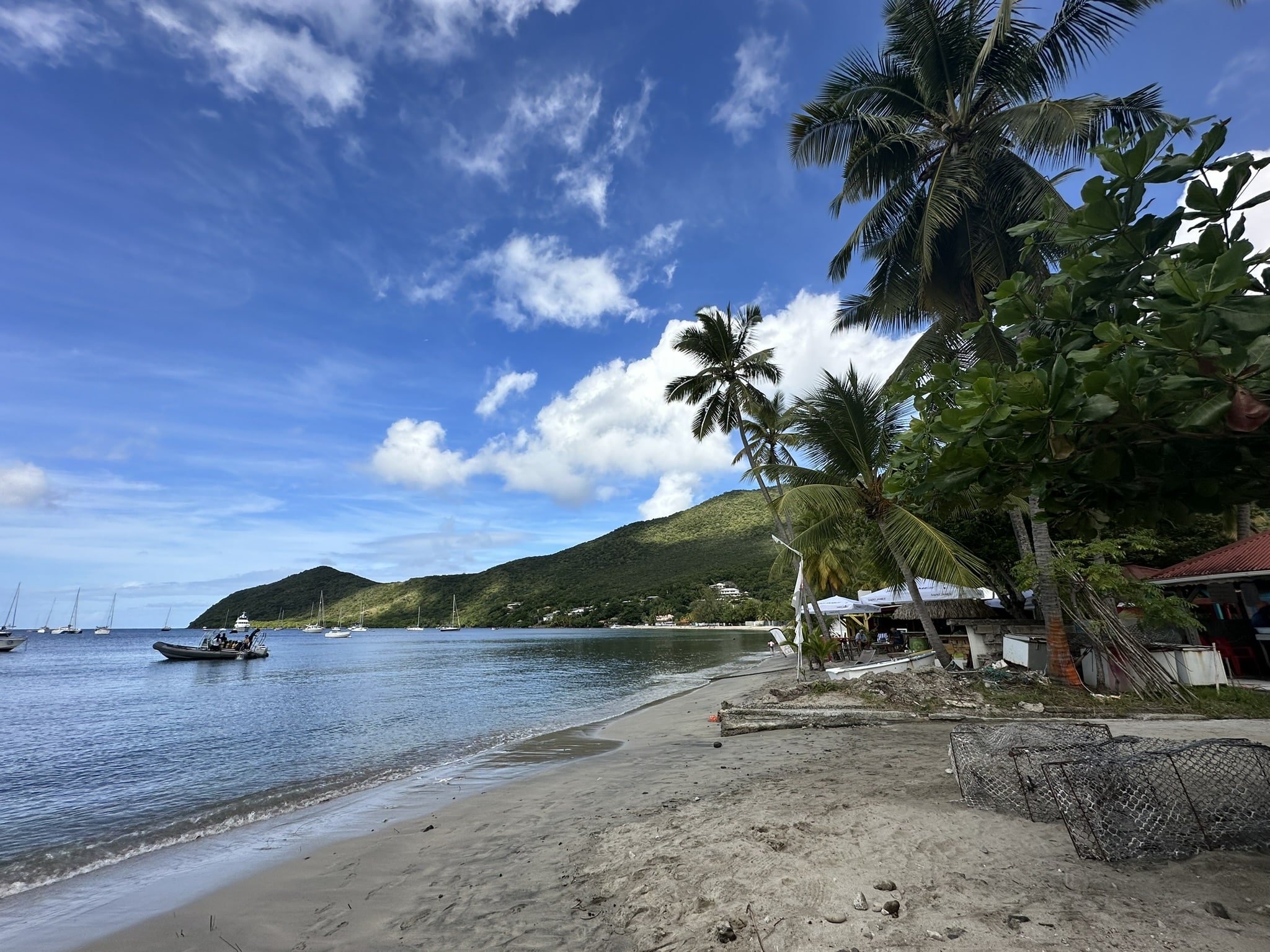
I swam on both sides just for a change of scenery. As you head away from the port to the left, there are more restaurants and cafes to be found, whereas on the right side, there are more residential homes and buildings. As I fell asleep momentarily on a beach towel, I awoke to see this critter staring at me about a foot away. He naturally took me by surprise but despite my moving back slightly, this little guy didn’t make a move. I guess he found me as curious as I found him.

On my walk, I found plenty of colorful boats, used for daily fishing.
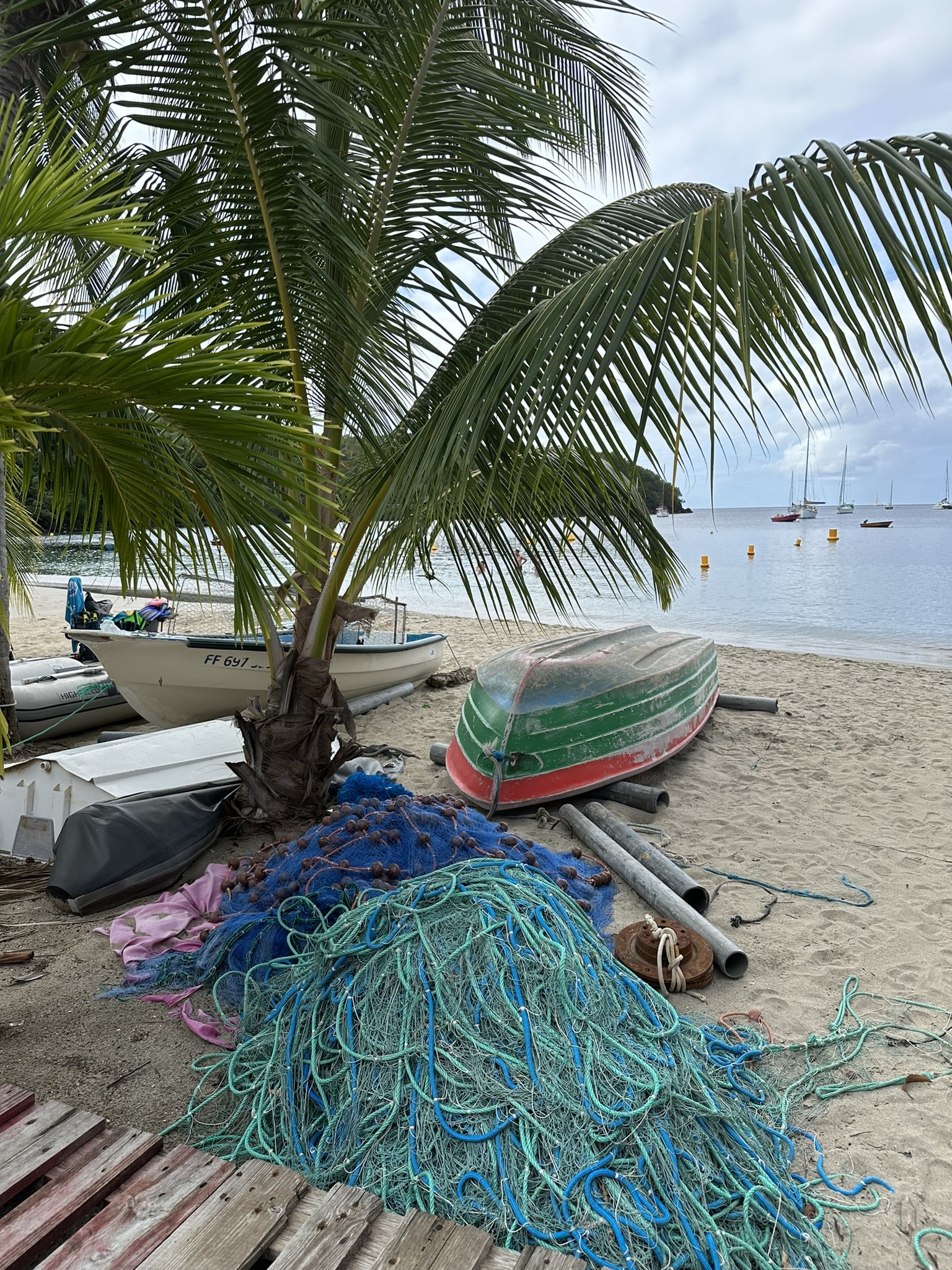
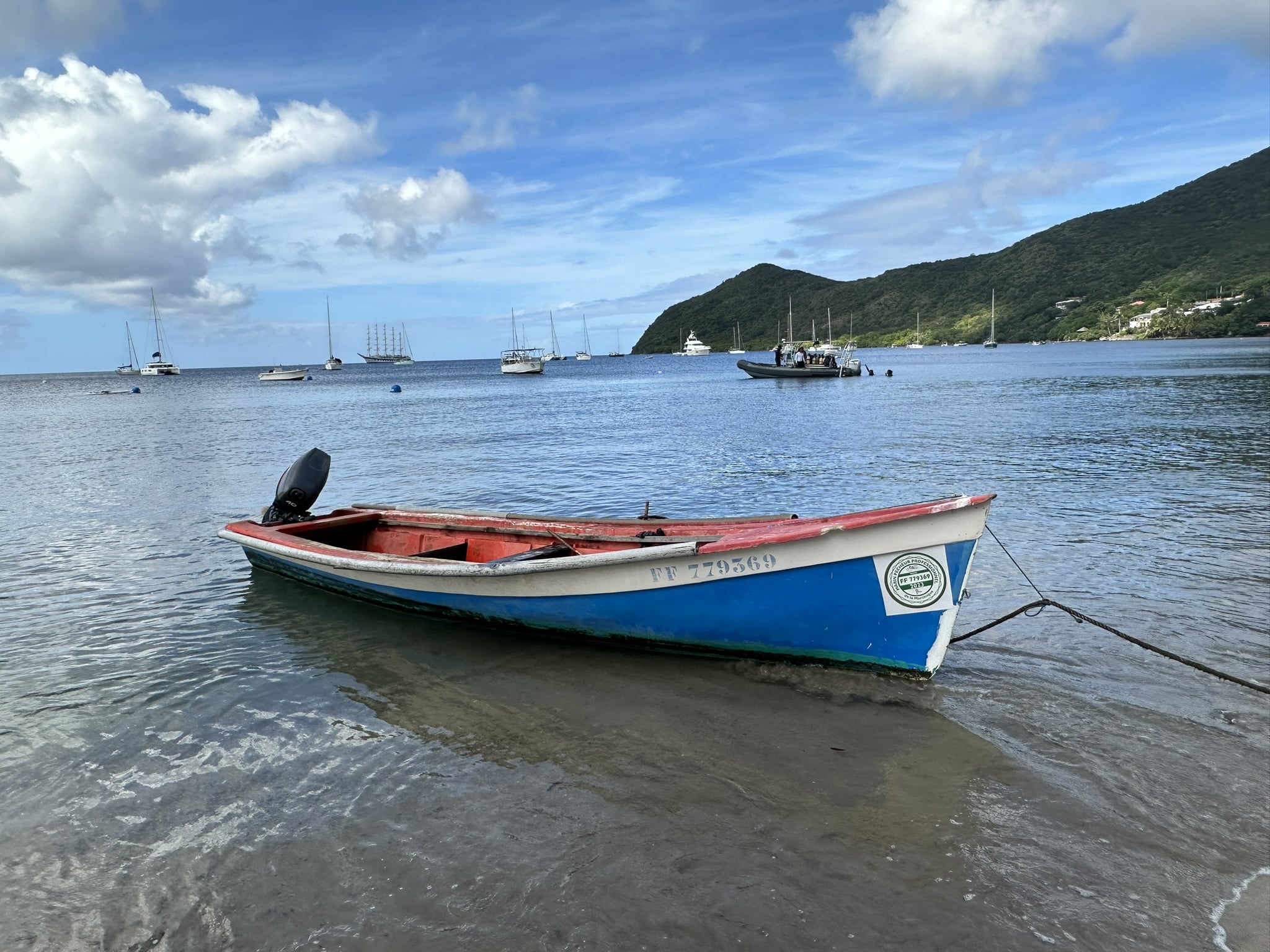
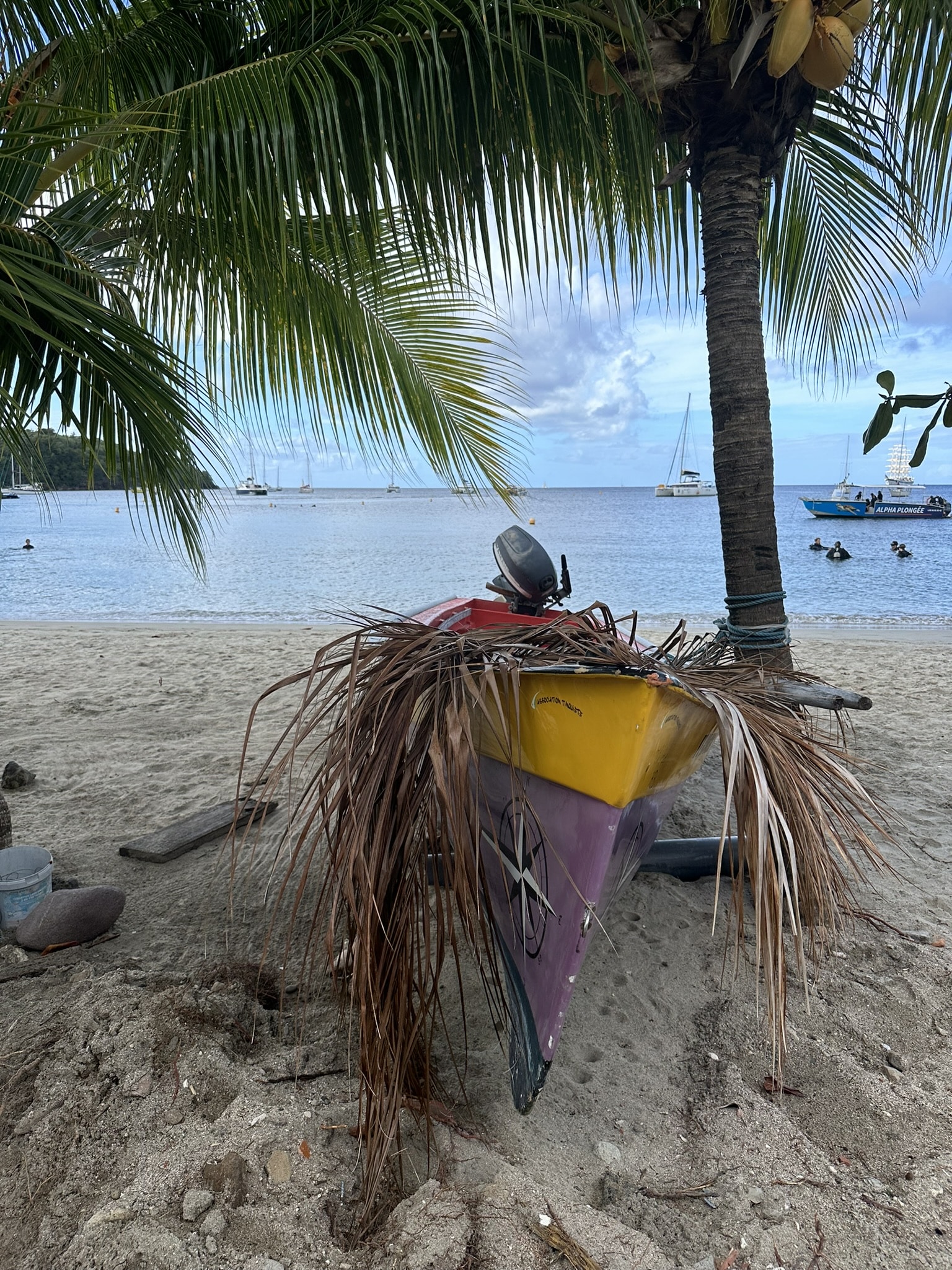
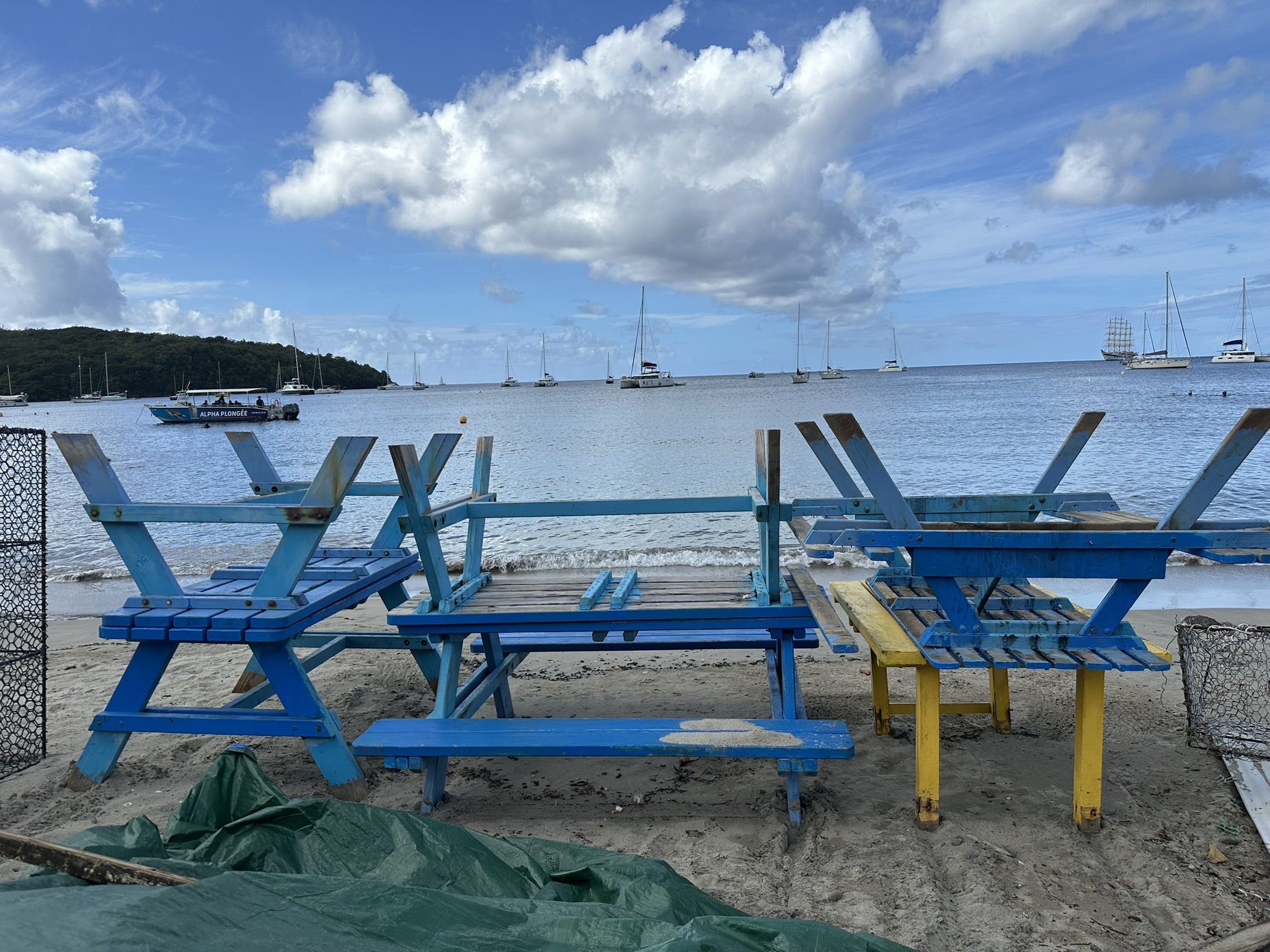
Below, a local fisherman at work.

If you want freshly caught fish, it is available right off the grill. Pair it up with a Pina Colada and some fresh coconut milk, and you’ve got yourself a perfect afternoon outing.
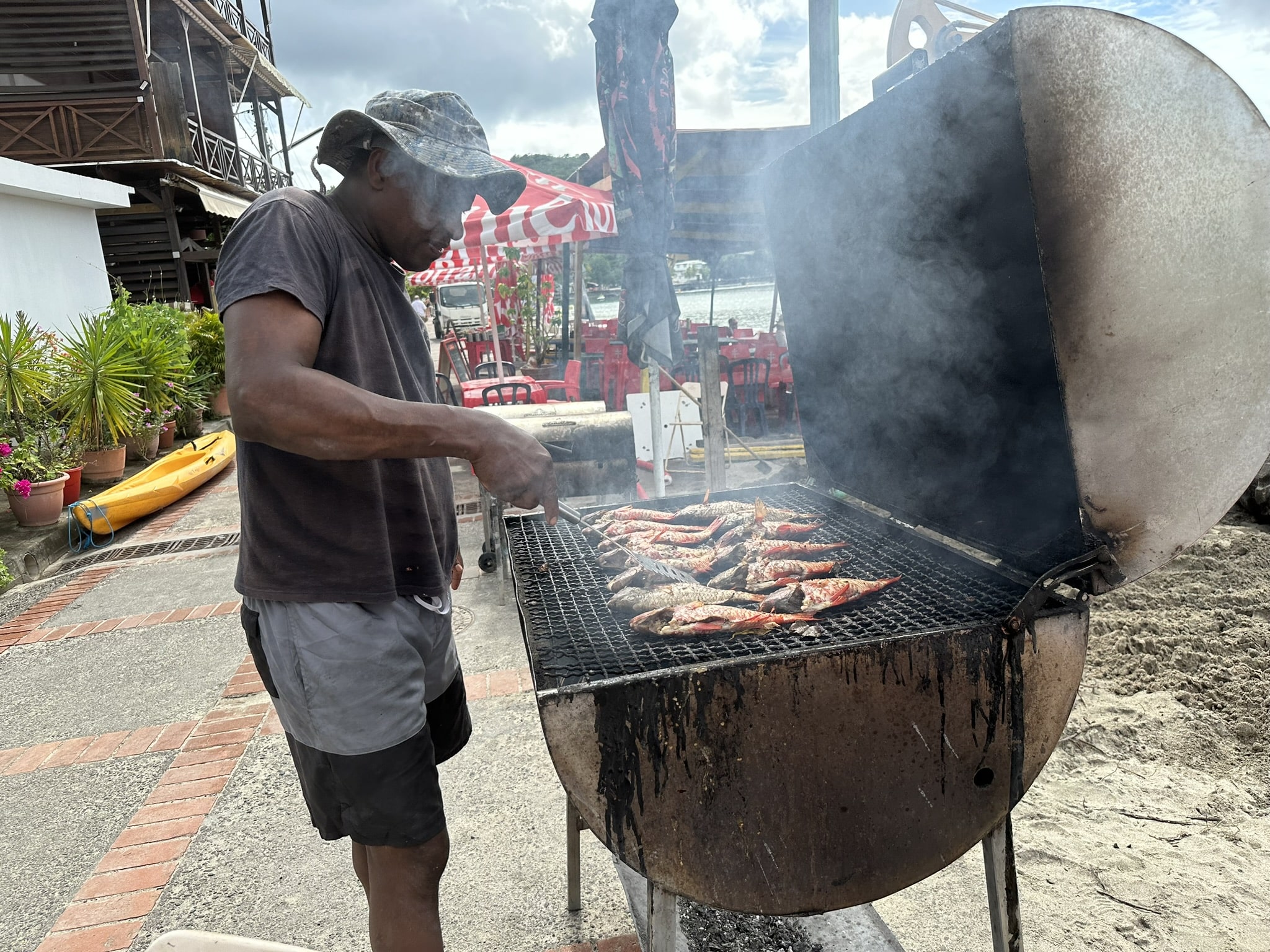
Want to go shopping? Rue Victor Schoelcher has stores that sell French clothes, perfume, liqueur, crystal, artisan crafts and more — there’s even a Galleries Lafayette here. Yes, really. There are also shops on Rue Victor Hugo and Rue Lamartine.
Have more time to explore the island? Hire a driver and do a loop through the rain forests and mountains to Le Morne Rouge, ending back in Fort-de-France with a stop over in St. Pierre (1635). Apparently, it was once known as the Paris of the West Indies. Here, you can take the Cyparis Express, a train which takes you to the main sites. There are lovely places to have lunch in nearby cafes and apparently some have live music as well at night. There’s also the Depaz Distillery (1651) which sits at the foot of a volcano. You can taste rums here (golden and aged rum) as well as liqueurs with unique flavors, such as ginger and basil. Want to grab lunch? Check out Moulin a Canne for Creole dishes.
To get around the island, it’s roughly forty miles and depending on how long you want to spend seeing the nature on the way and stop-overs, you should allow anywhere from a half day to a full day. It depends on what you want to do and see of course, whether you want to have a leisurely meal on the way (try Peperoni for fun, eclectic dishes at the Casa de Campo Marina) or take in an excursion, such as horseback riding. Frankly, I wish we had time to ride horses on one of the many beaches. Ranch de Caps offers half-day rides and you can opt for countryside or a southern beach and there’s also an Equestrian Center at Casa de Campo (250-acres). There’s a dude ranch here too — so wish we had the time for this.
If you like small towns and villages, be sure to check out Balata (built in 1923), where you can take in the Jardin de Balata (gardens) and Balata Church, which is apparently a replica of the Sacre-Coeur Basilica in Paris. How cool is that? For beaches or snorkeling, head to Catalina Island (we have one off the coast of California too) or Sanona Island.
Iles Des Saintes (Gaudeloupe)
Guadeloupe’s Iles Des Saintes (1493) was our favorite stop. I suppose if we had more time to take in more of the great restaurants in St. Kitts and Saint Lucia, we could have added them for great foodie picks. Our time on Iles Des Saintes was low-key and very authentic. It felt like a small village in the south of France in many ways, from its architecture, shops and cafes to its beaches. Although it was slated to have three decades of British rule, everything today feels French and its shops and restaurants reflect that influence. Even the official language is French and the official currency is the Euro.
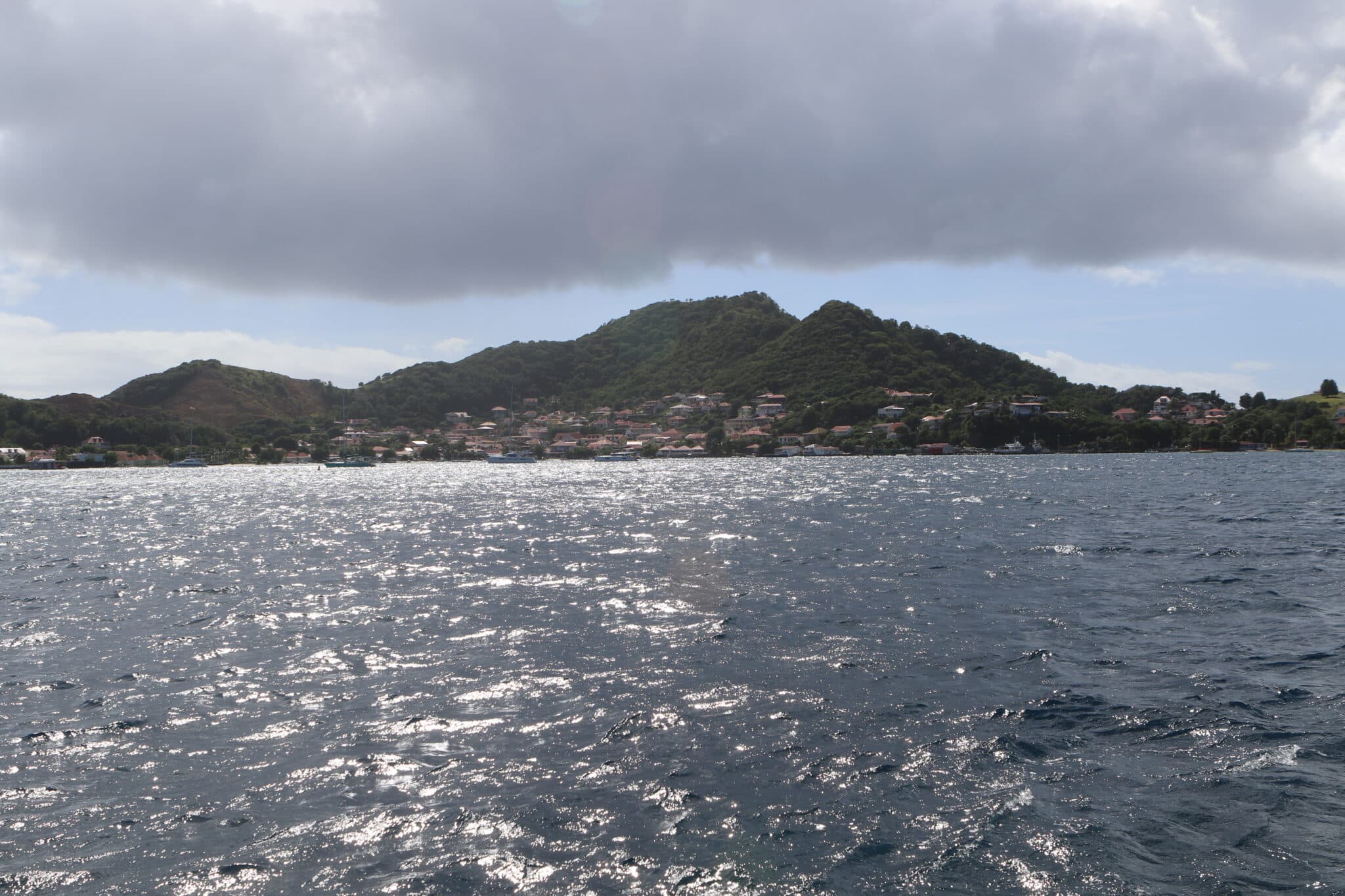
We anchored in front of Le Bourgand spent time in Terre De Haute, which is super small — only six square miles. With such intimacy, it was precious to spend time here, as we were able to wander through the village’s main two streets and walk further up the hill to take in some of the views and neighboring residential homes. Beach lovers can head to Grand-Anse or Morne/Pompierre. We swam locally and then later, after a long walk, we were able to experience one restaurant and one cafe, both of which had great cocktails and food.
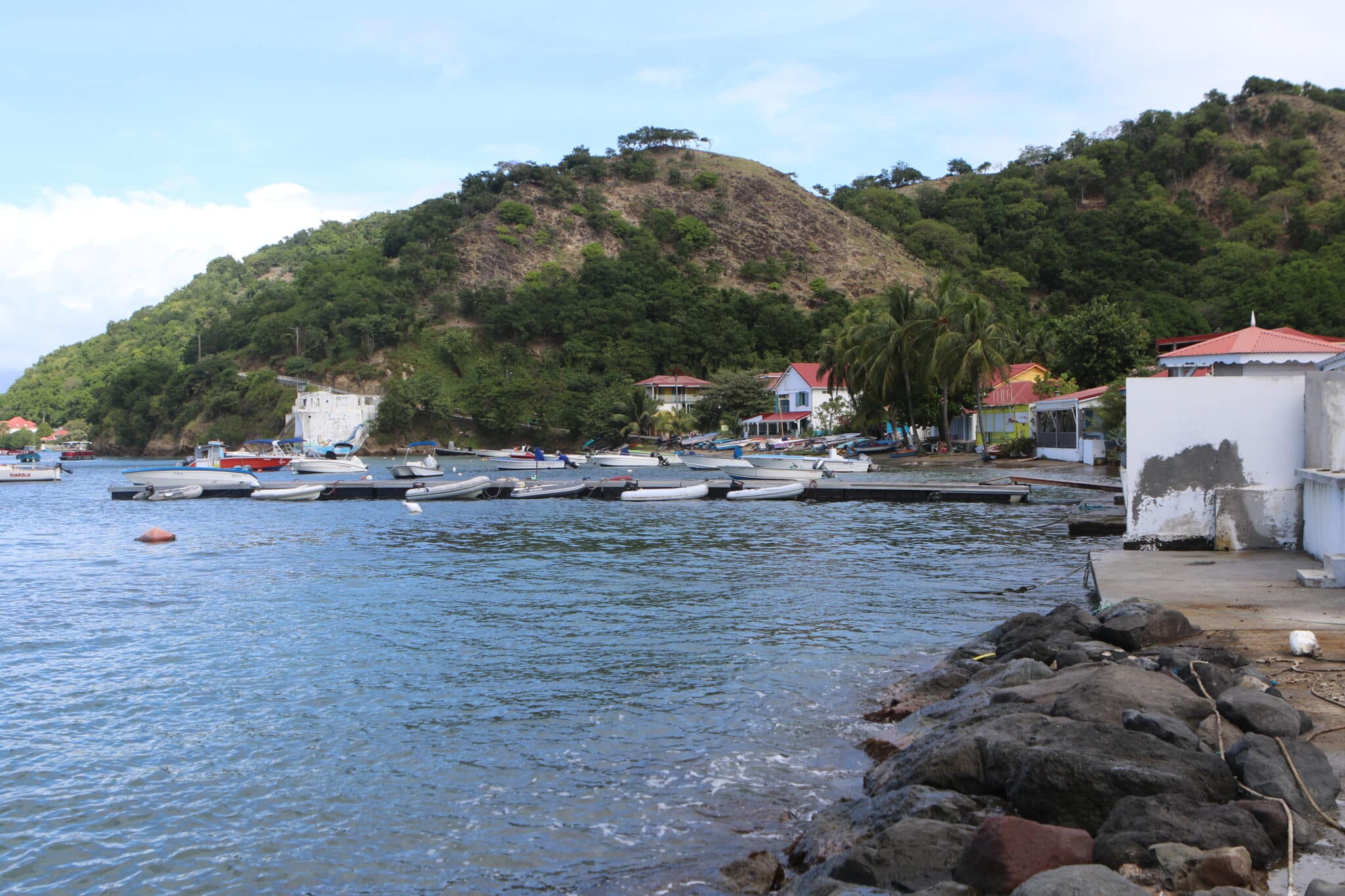
For shopping, stroll down Sainte-Anne’s main drag and look for the piercing blue clothing shop called Bleu des Iles (you can’t miss it). It’s owned by a French woman and the designs are amazing, many of which are hand painted. There are also markets but further away: Saint-Antoine Market in Pointe-à-Pitre for Creole flavours and aromas, Basse-Terre Market which was made by architect Ali Tur in the 1930’s (for fruit and veggies), the daily market of Sainte-Anne (art craft village), located in front of the small fishing port and Le Gosier Market, which is known for night strolls (fruit, veggies, and crafts).
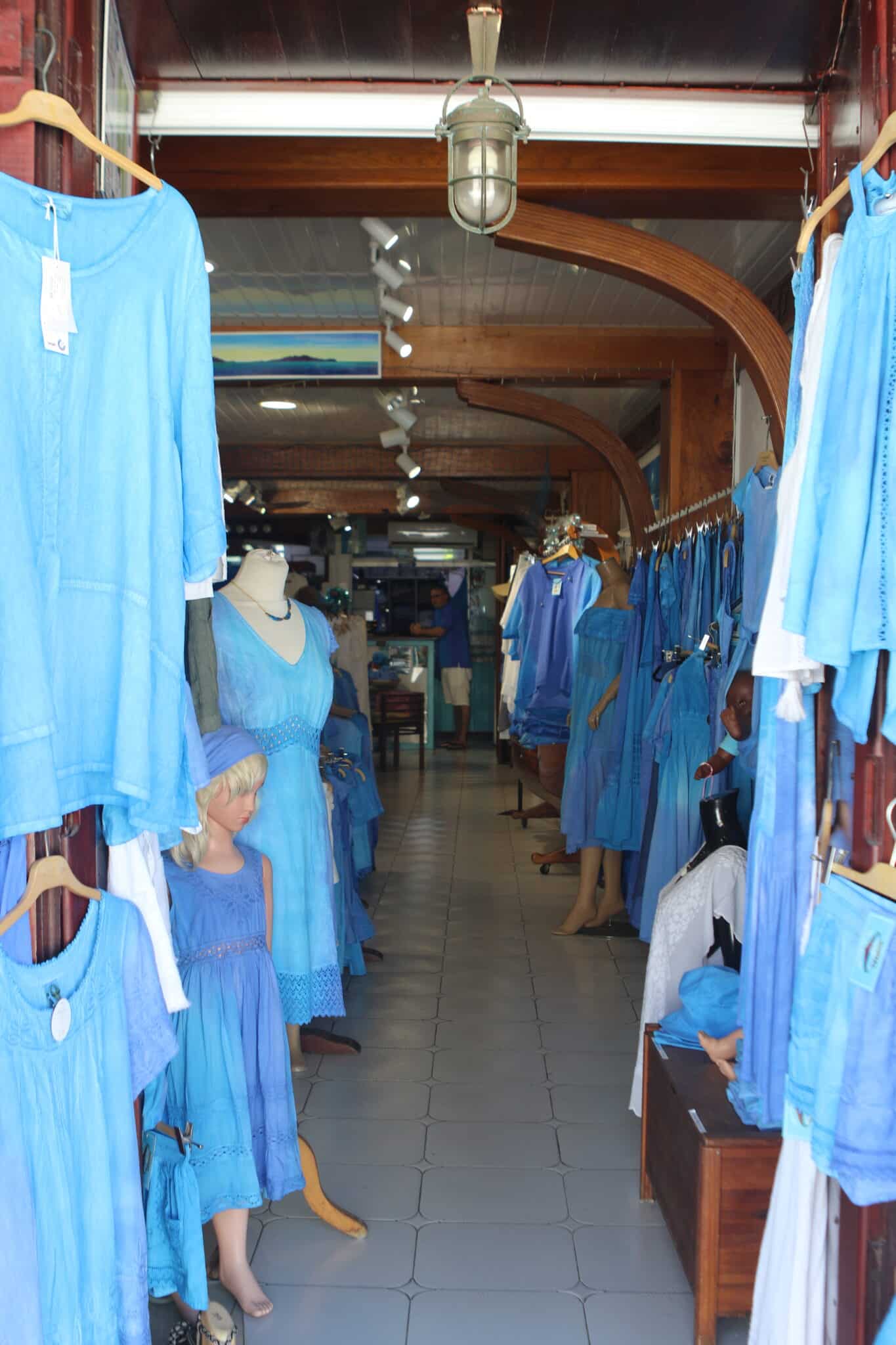
Bleu des Iles. My friend Shannon bought a couple pieces here.
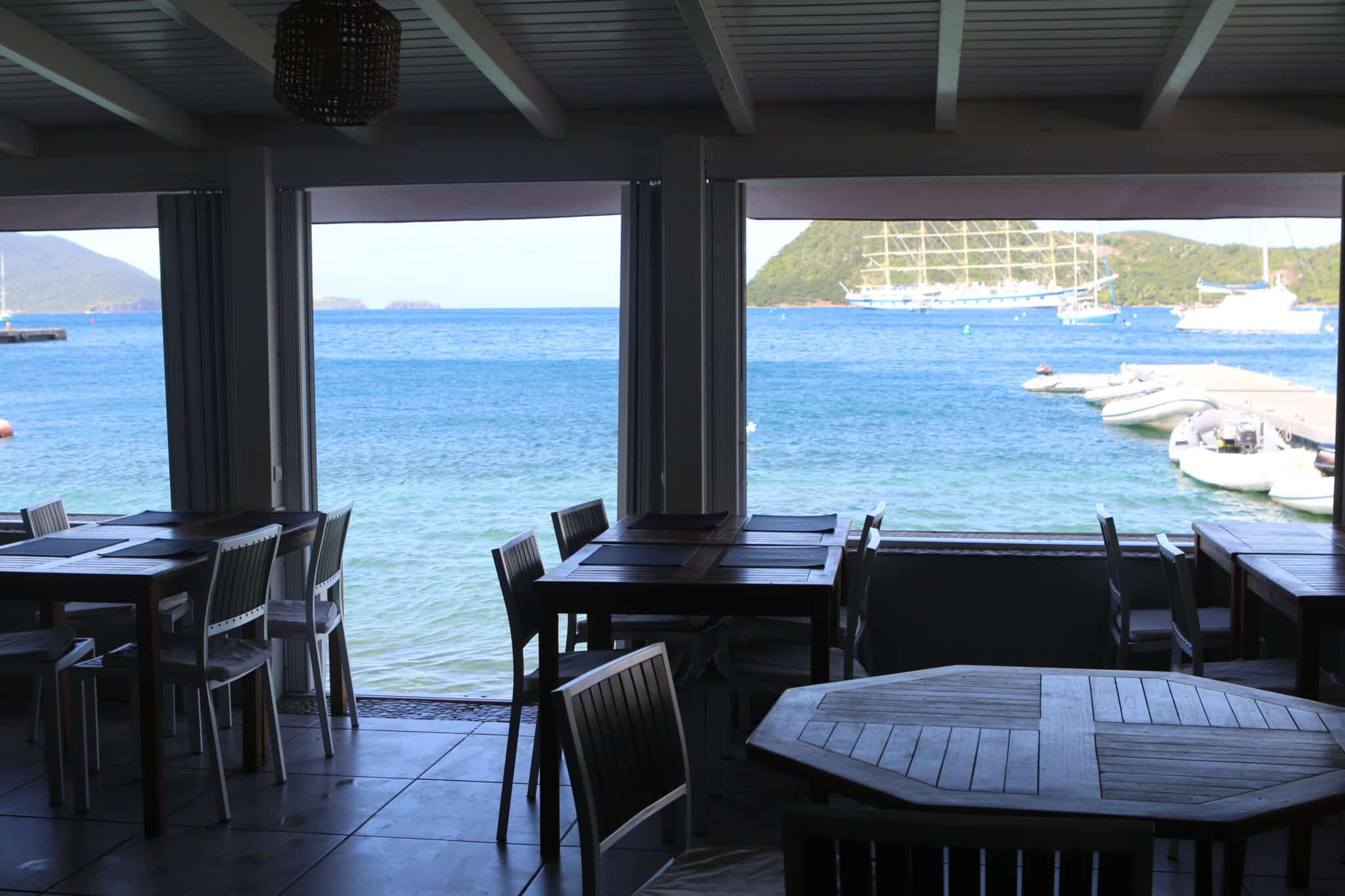
Above, one of the cafes where we had Pina Coladas and Cappuccinos with breathtaking views of the harbor and our boat in the distance (The Royal Clipper sailing ship)
Our favorite memory here was simply walking around and exploring the quaint village.
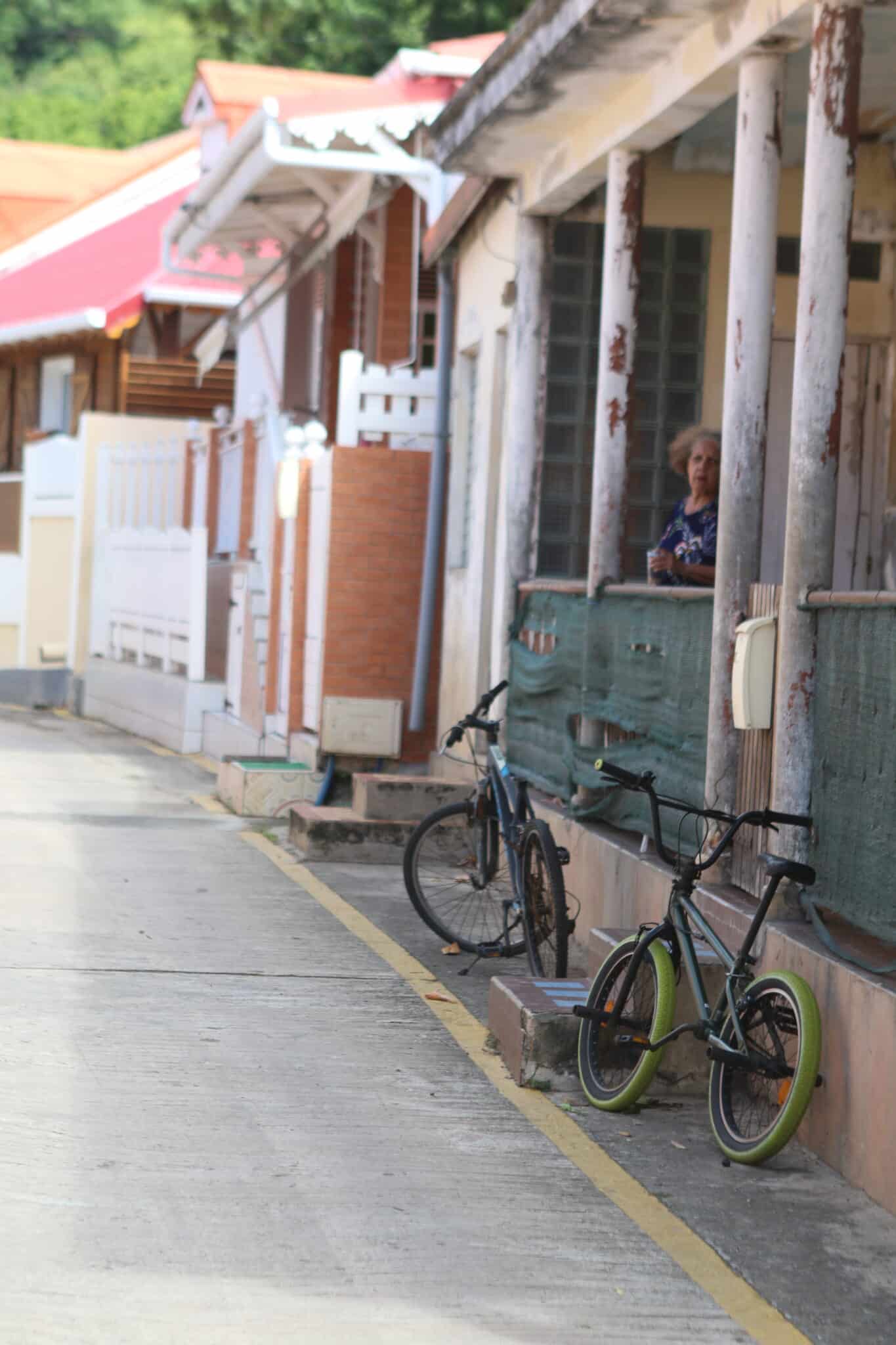
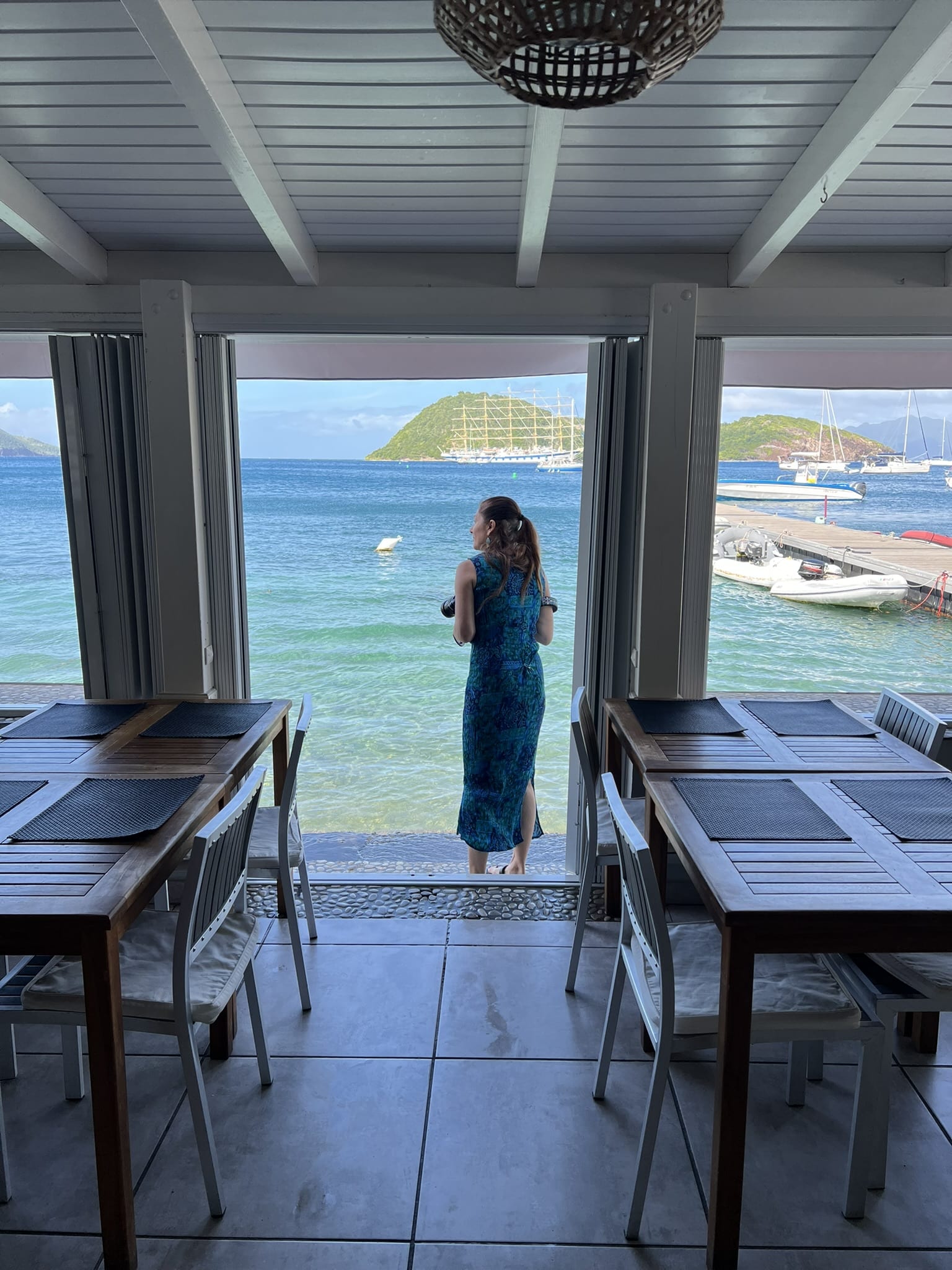
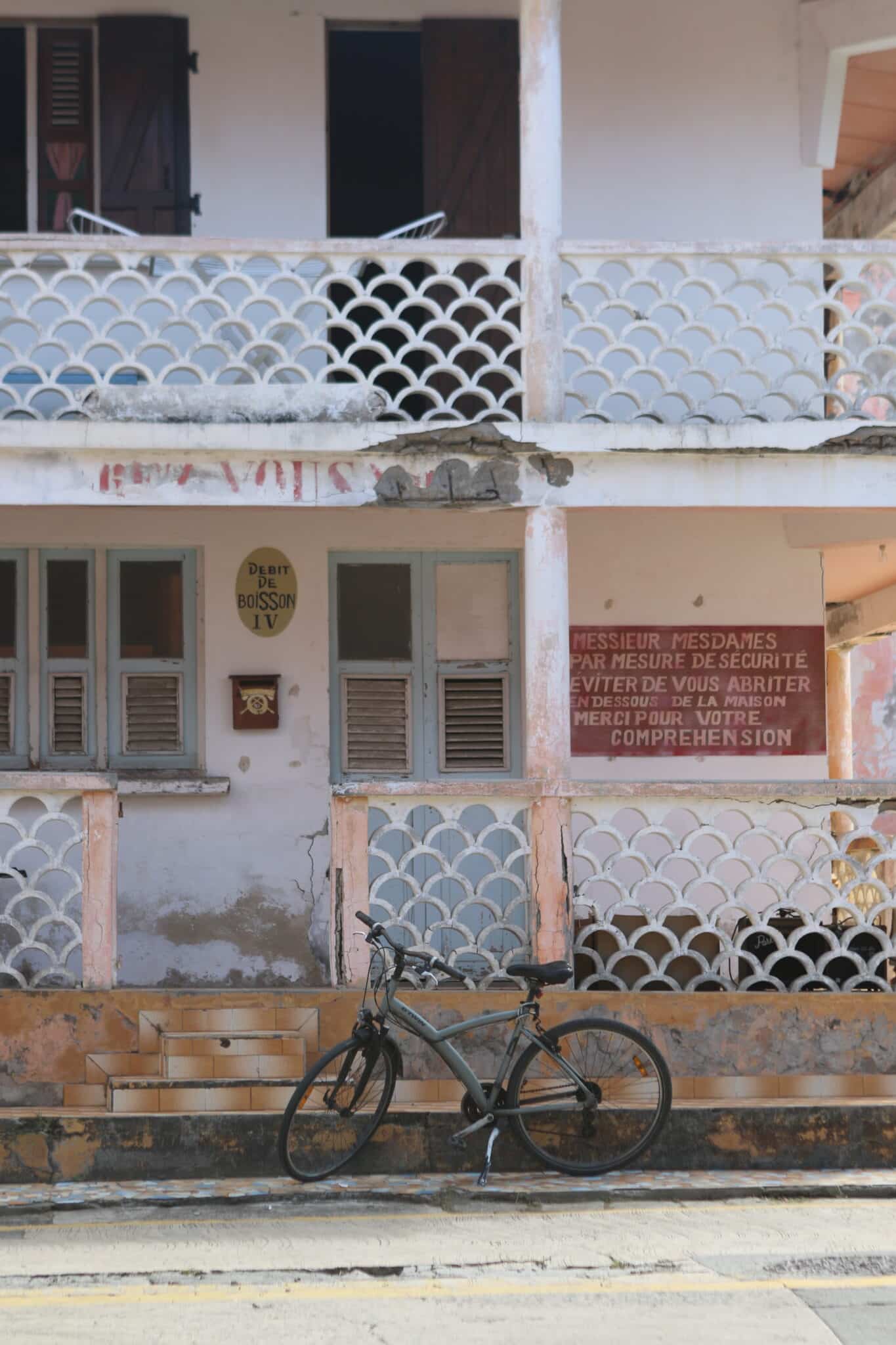
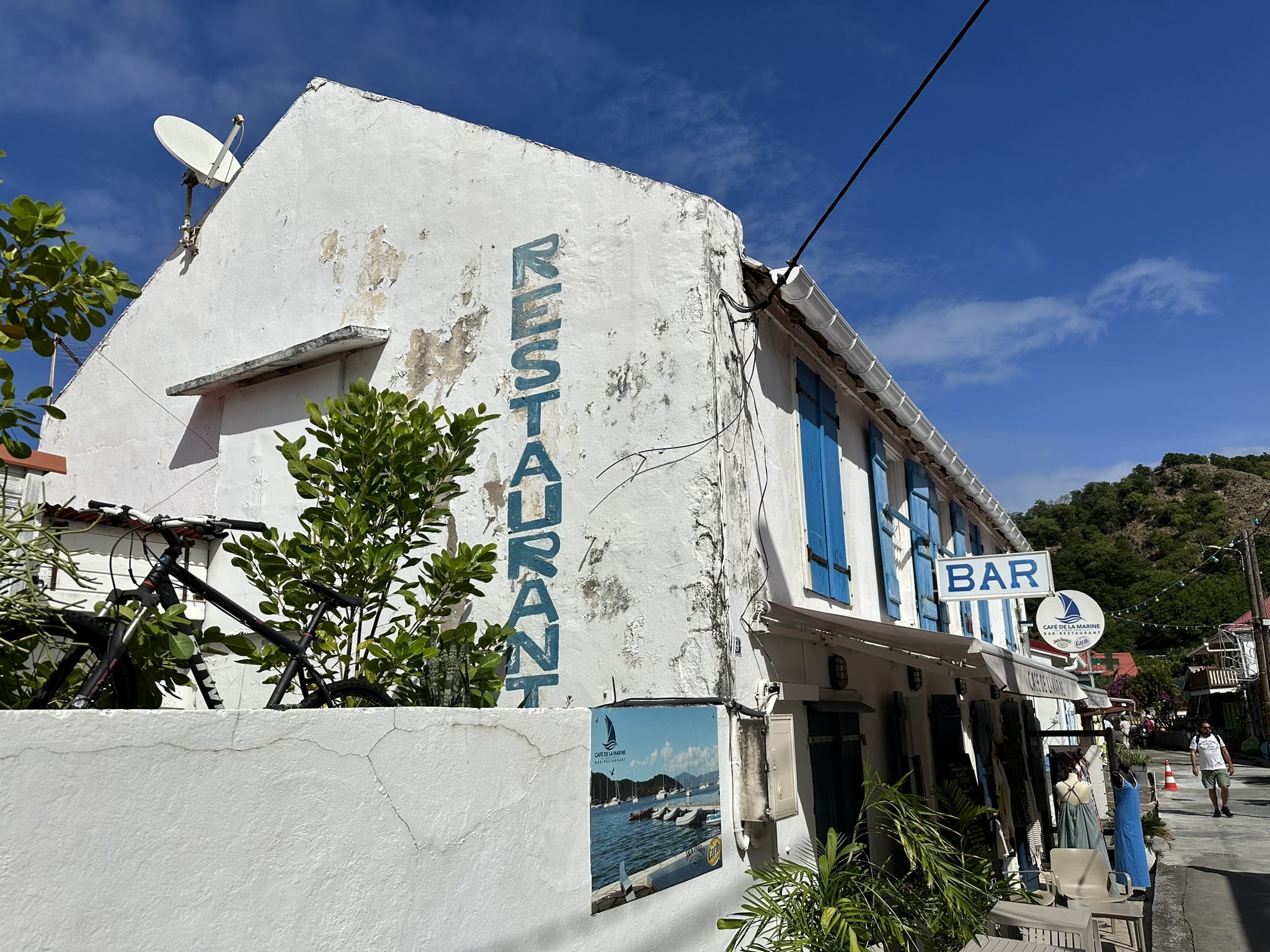
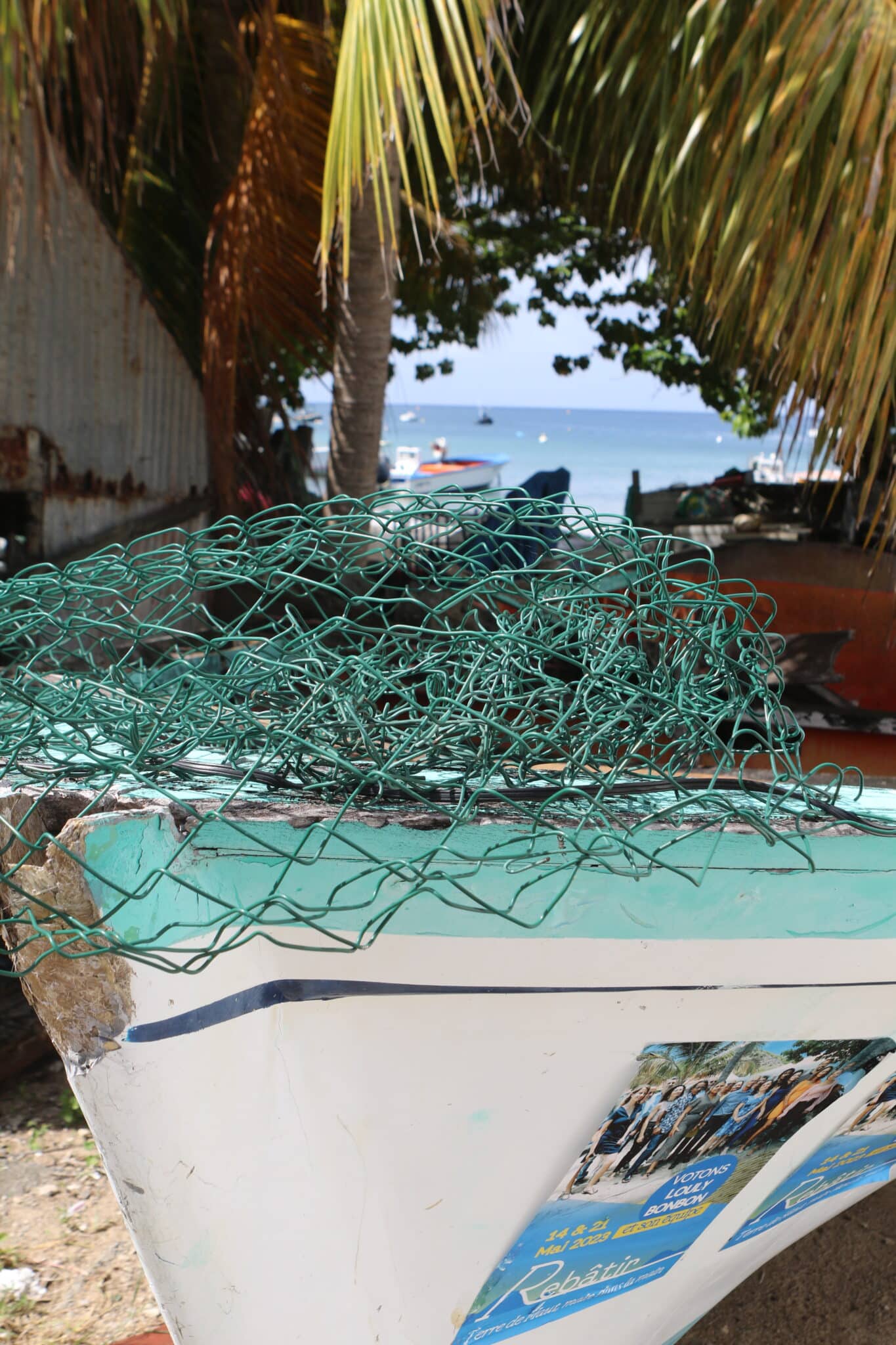


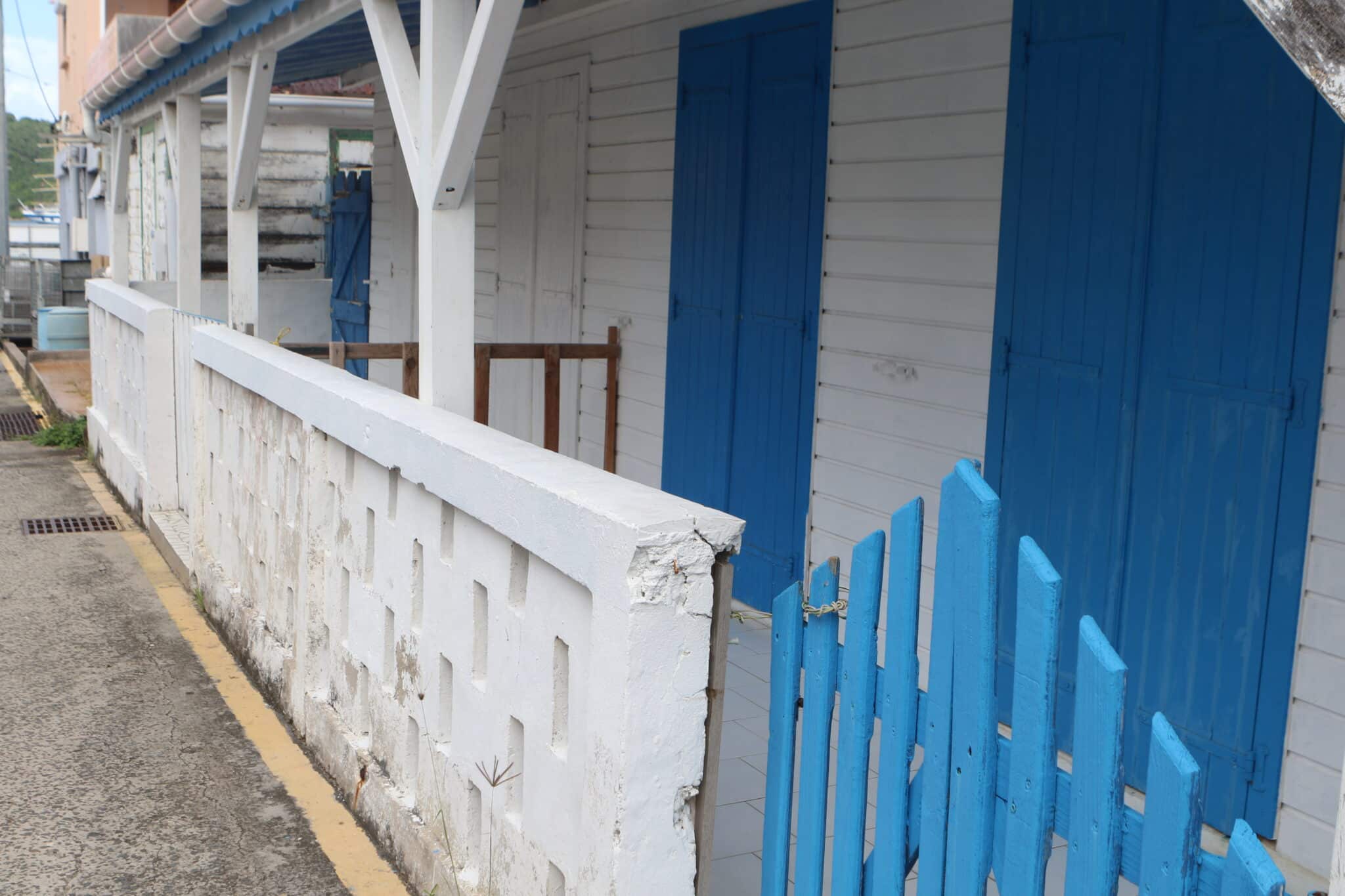
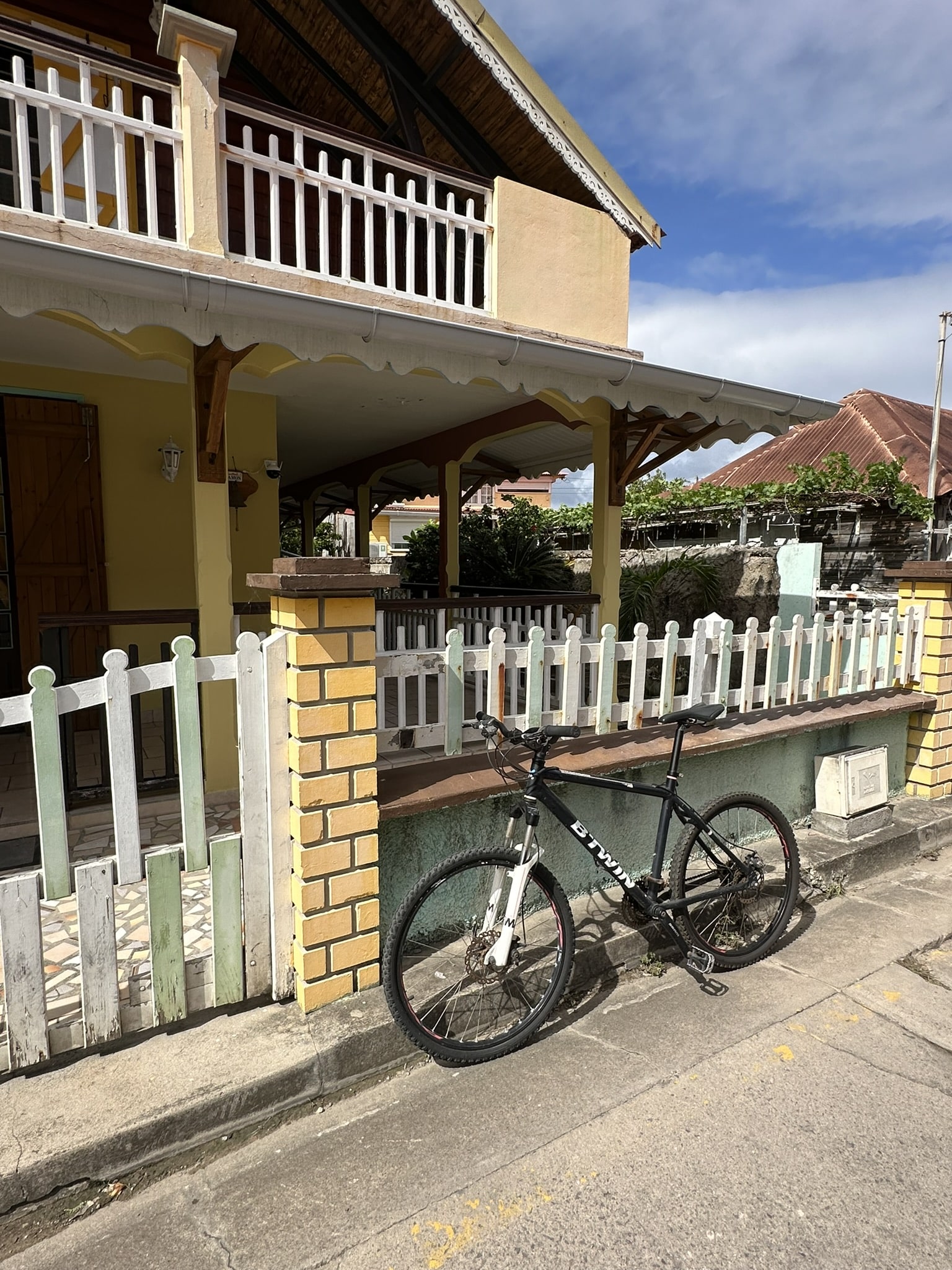
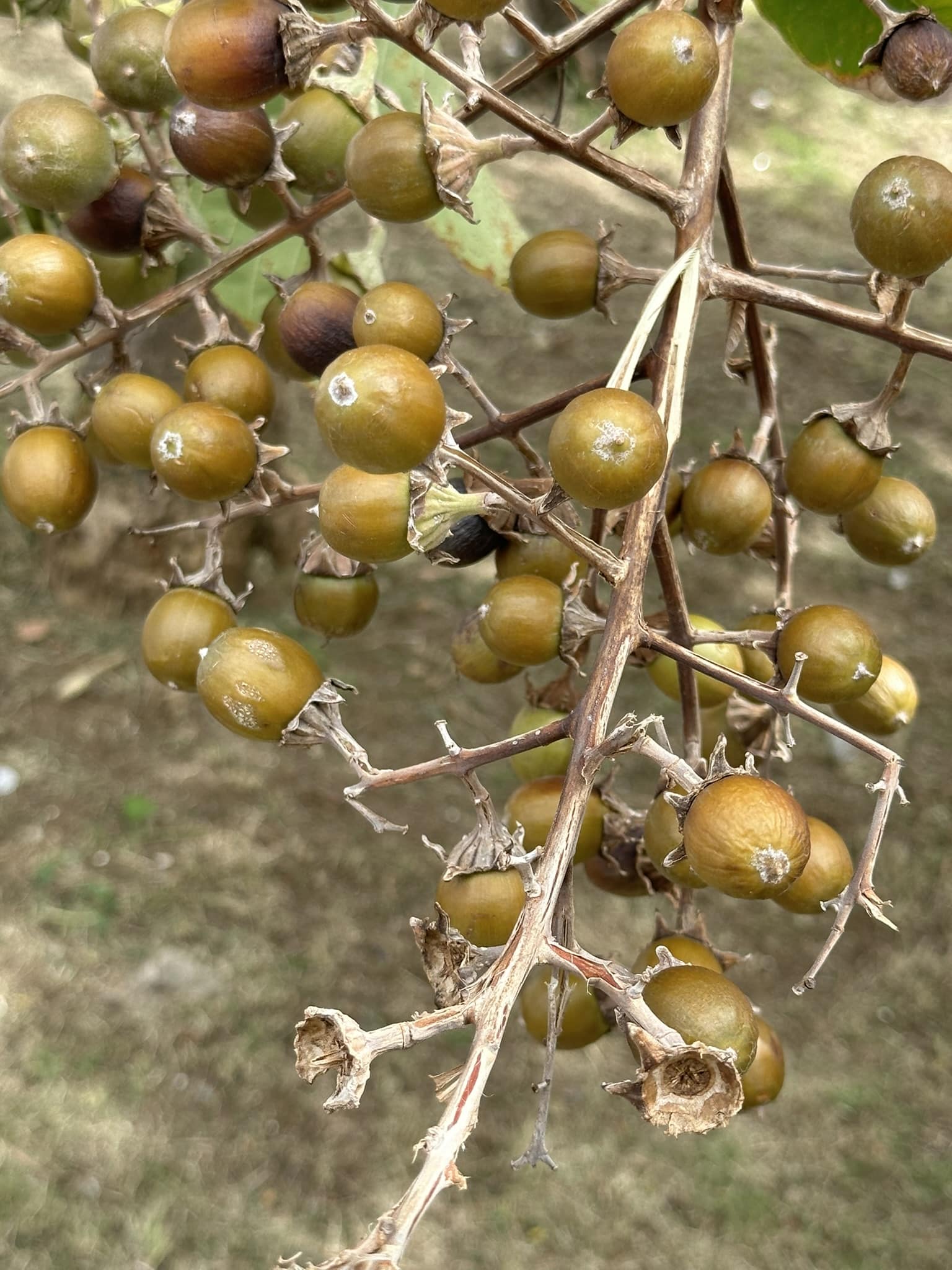

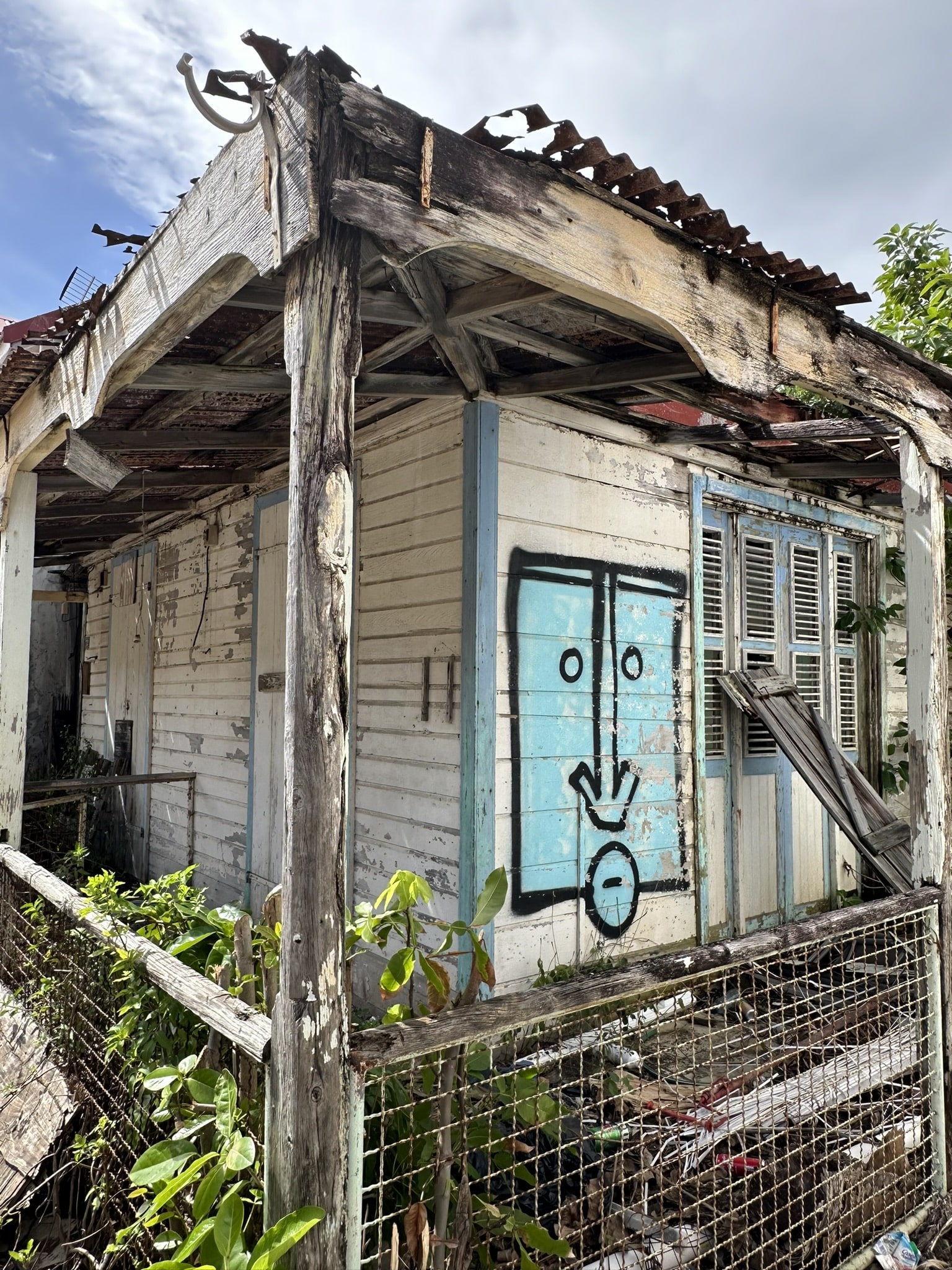
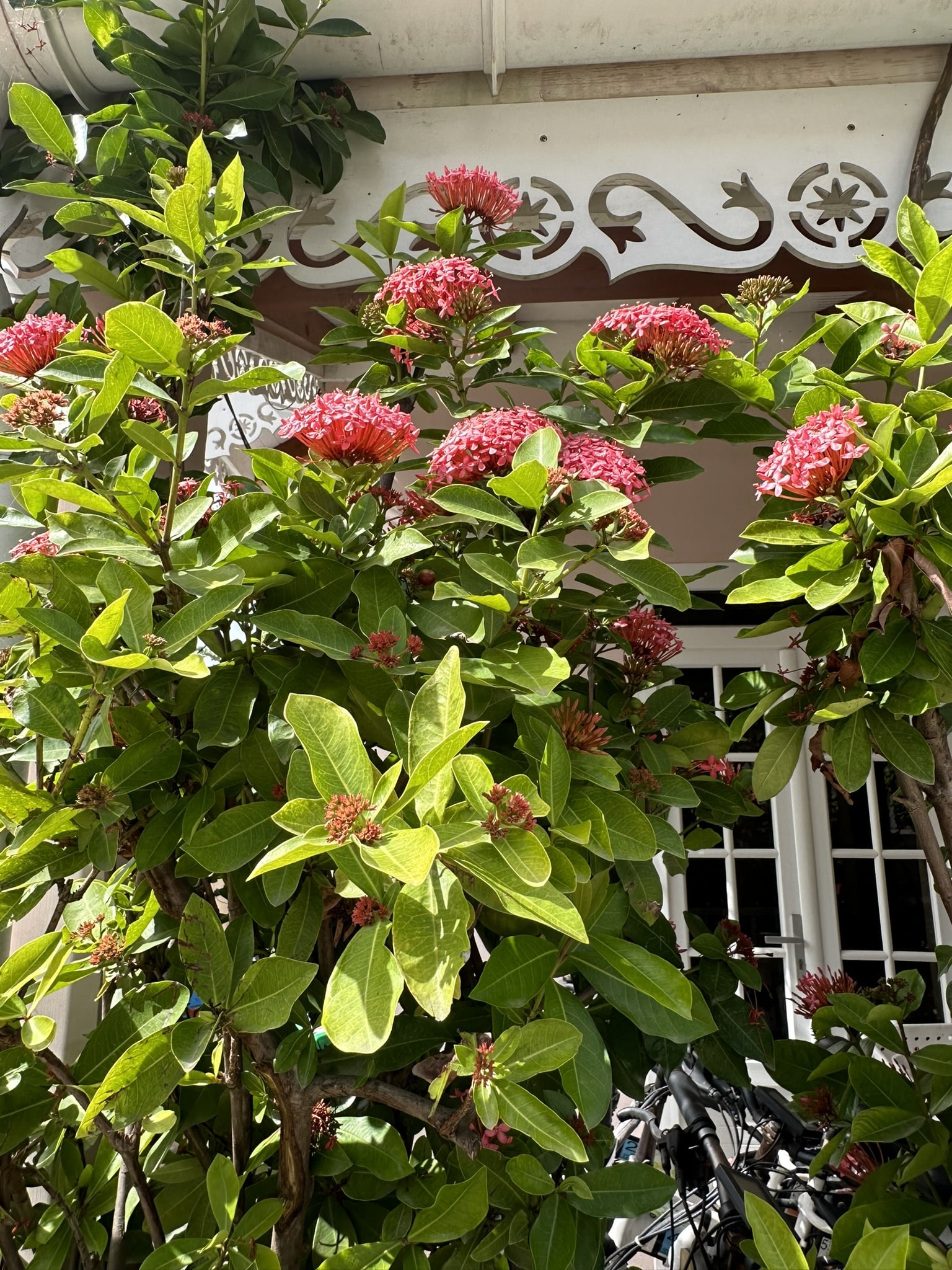
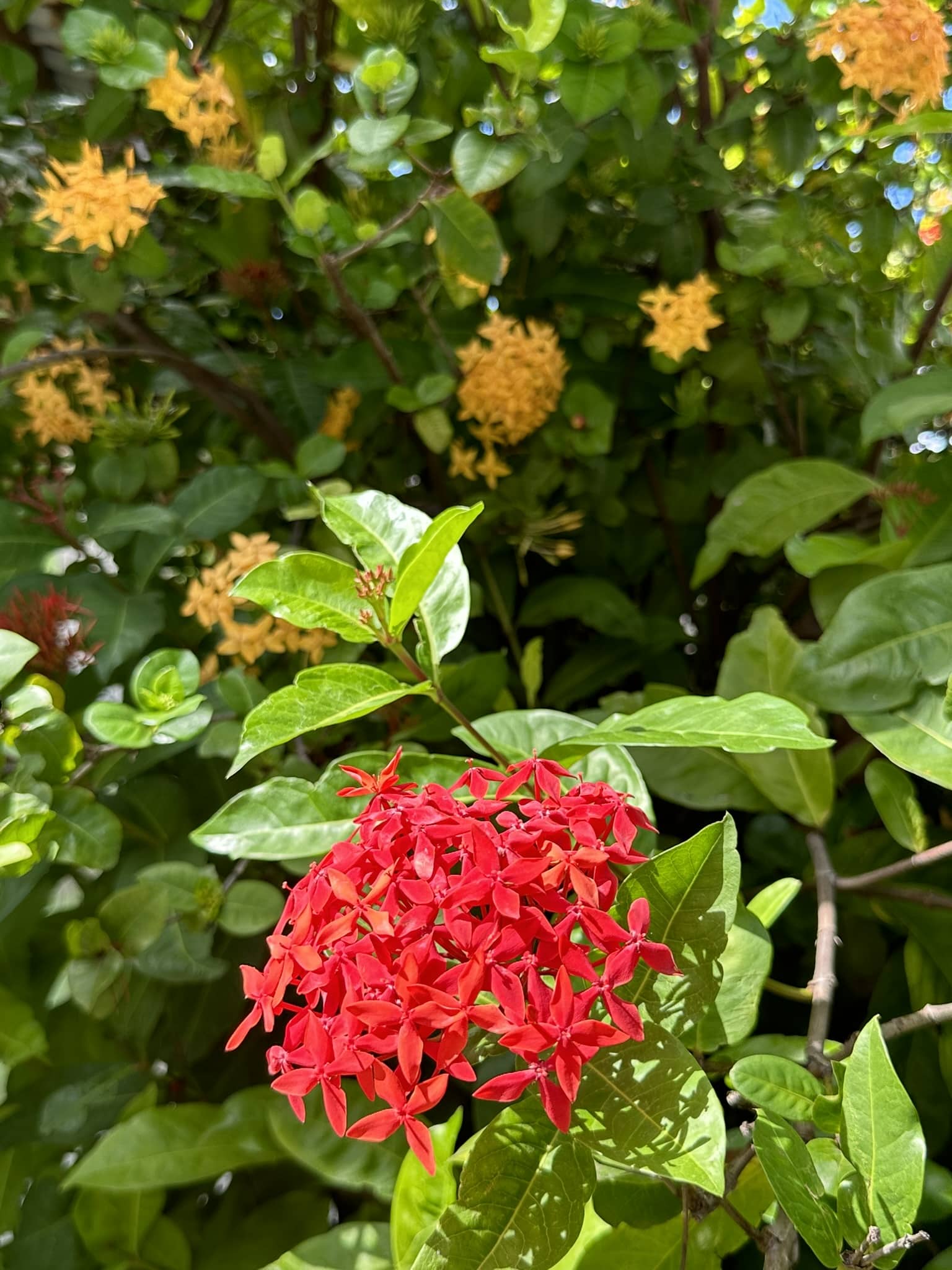
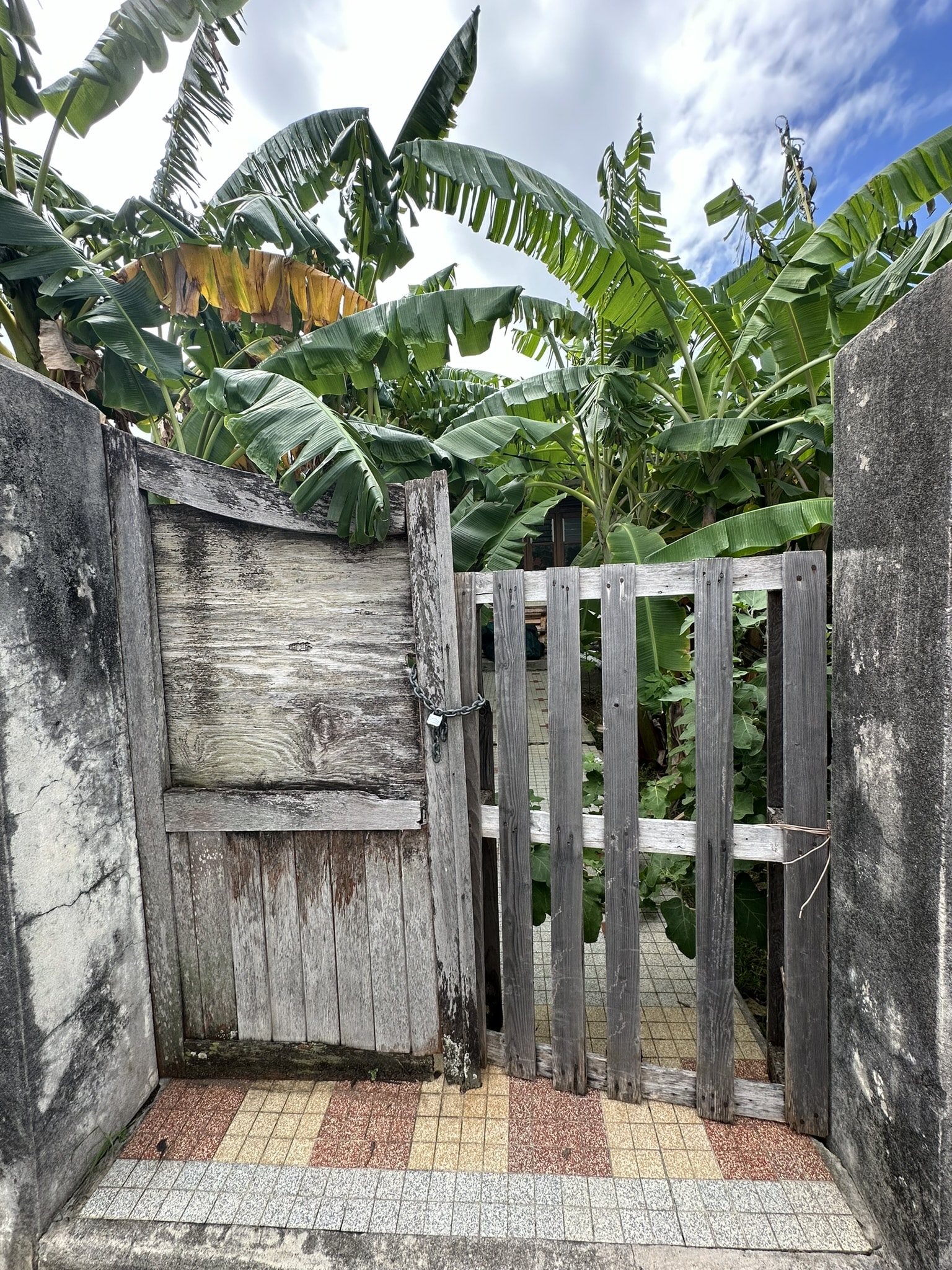
St. Kitts & Nevis
I’ve always been intrigued by St. Kitts and have been meaning to visit this gem of an island for years. The Carib Indians called it the “fertile isle,” and it is indeed fertile. It also has volcanic roots so to speak and the tallest mountain here rises to nearly 4,000 feet. Like Dominica, there’s plenty of rain forests.
It turns out that St. Kitts was one of the only islands that the French and English shared and so there’s still a strong influence by both cultures. I learned from a local that St. Kitts was sometimes referred to as “The Mother Colony” since it was the first permanent English settlement in the area.
The accent is West Indian and English is widely spoken. It has had its independence since 1983 together with its sister island Nevis, roughly two miles off the southern coast of St. Kitts. (unfortunately, we didn’t have time to visit Nevis even though it was only two miles apart). I loved that it felt more untouched than many other islands although there are commercial aspects to be found throughout. Less so on Nevis — apparently there are no traffic lights on the island). Very untouched, it’s a great spot to visit for nature hikes and to simply get away.
On St. Kitts, you can take an official Scenic Rail Tour, which leaves from Basseterre Port and returns to South Friars Bay. The rail tour does a complete circle and takes a stunning route along the northeastern coastline. It was once used to deliver sugar cane from the fields to the sugar mills. Colorful double-deck railcars make it both fun and scenic; if you sit on the upper deck, you can see panoramic views. The lower level has rattan furniture and specialty drinks, free if you’re on the tour. In addition to the fabulous views, you take in volcanic mountain ranges, lush rainforests, sugarcane fields, canyons, villages and farms. You also pass abandoned sugar mills and windmills and learn about the island’s history along the way . . . and with music blaring to-boot. Apparently Thomas Jefferson’s great-grandfather is said to be buried here.
We took in the Essential St. Kitts Tour, which includes Brimstone Hill Fortress National Park, Romney Gardens, Caribelle Batik Studio and plenty of lush forest along the way.
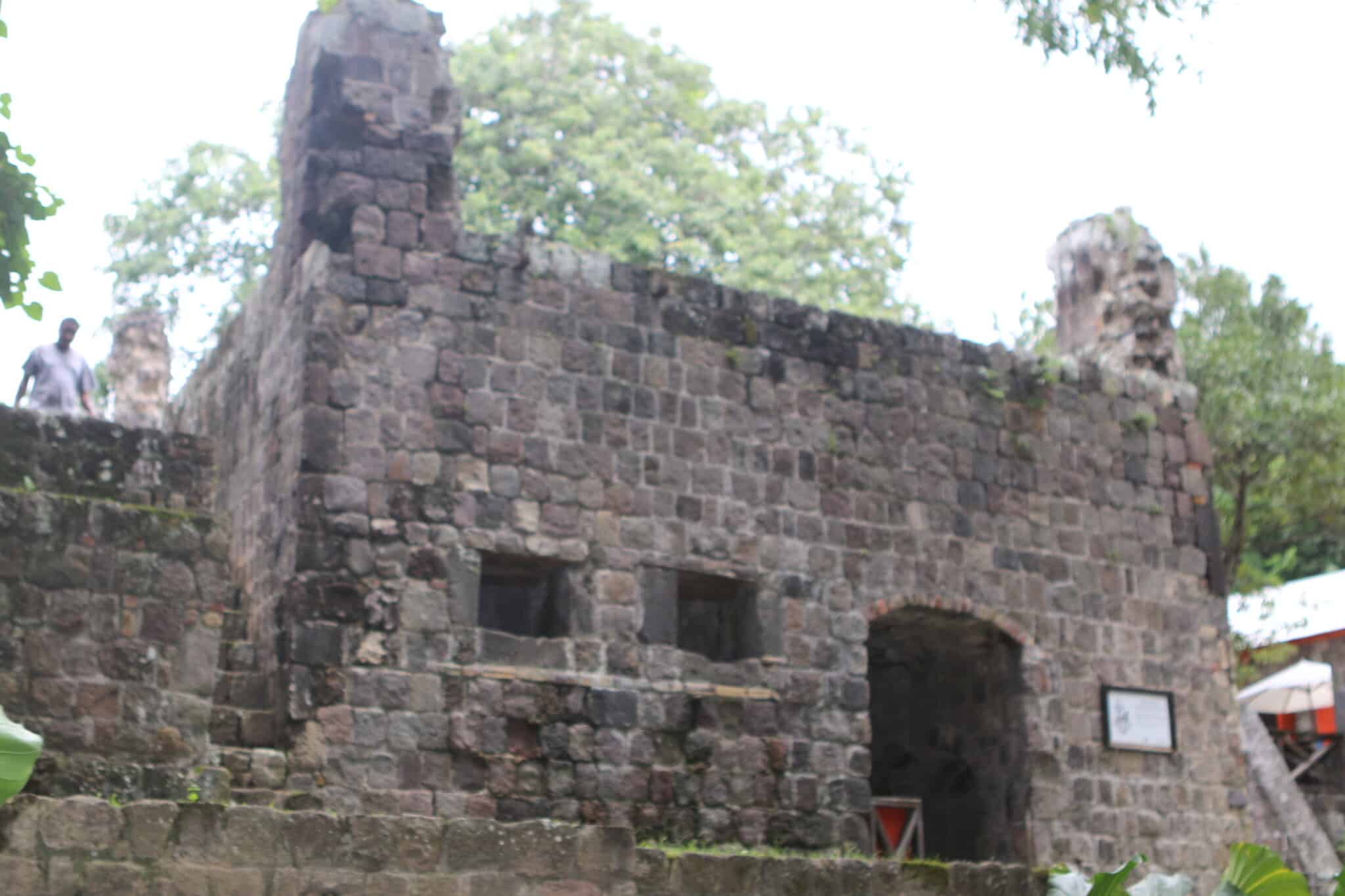
The Brimstone Hill Fortress
We spent a chunk of time at Romney Manor, the home of Caribelle Batik, largely because the outside environs were so beautiful and there was much to take in.
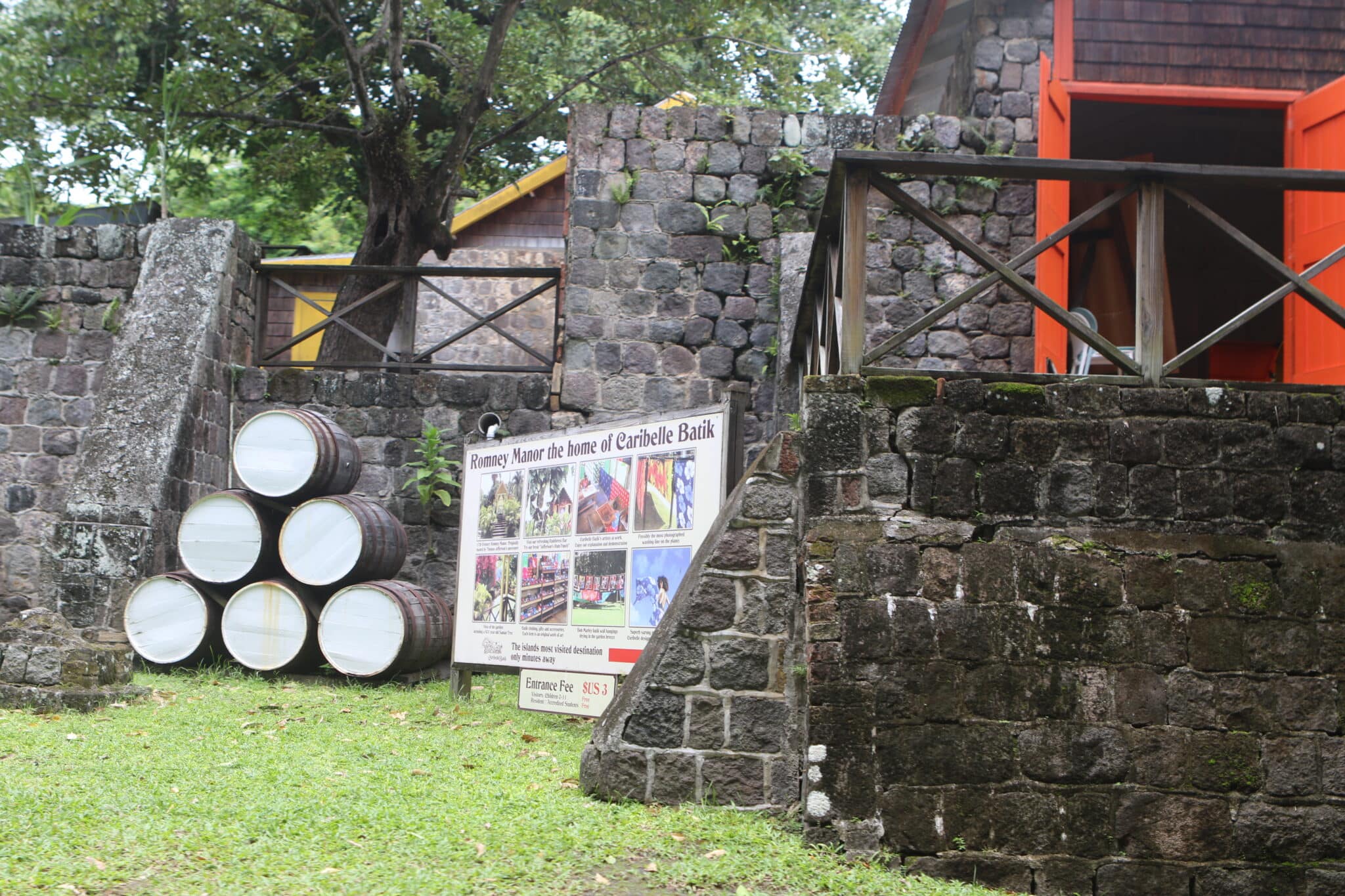
The architecture was particularly interesting (and colorful), a bit like their batiks.
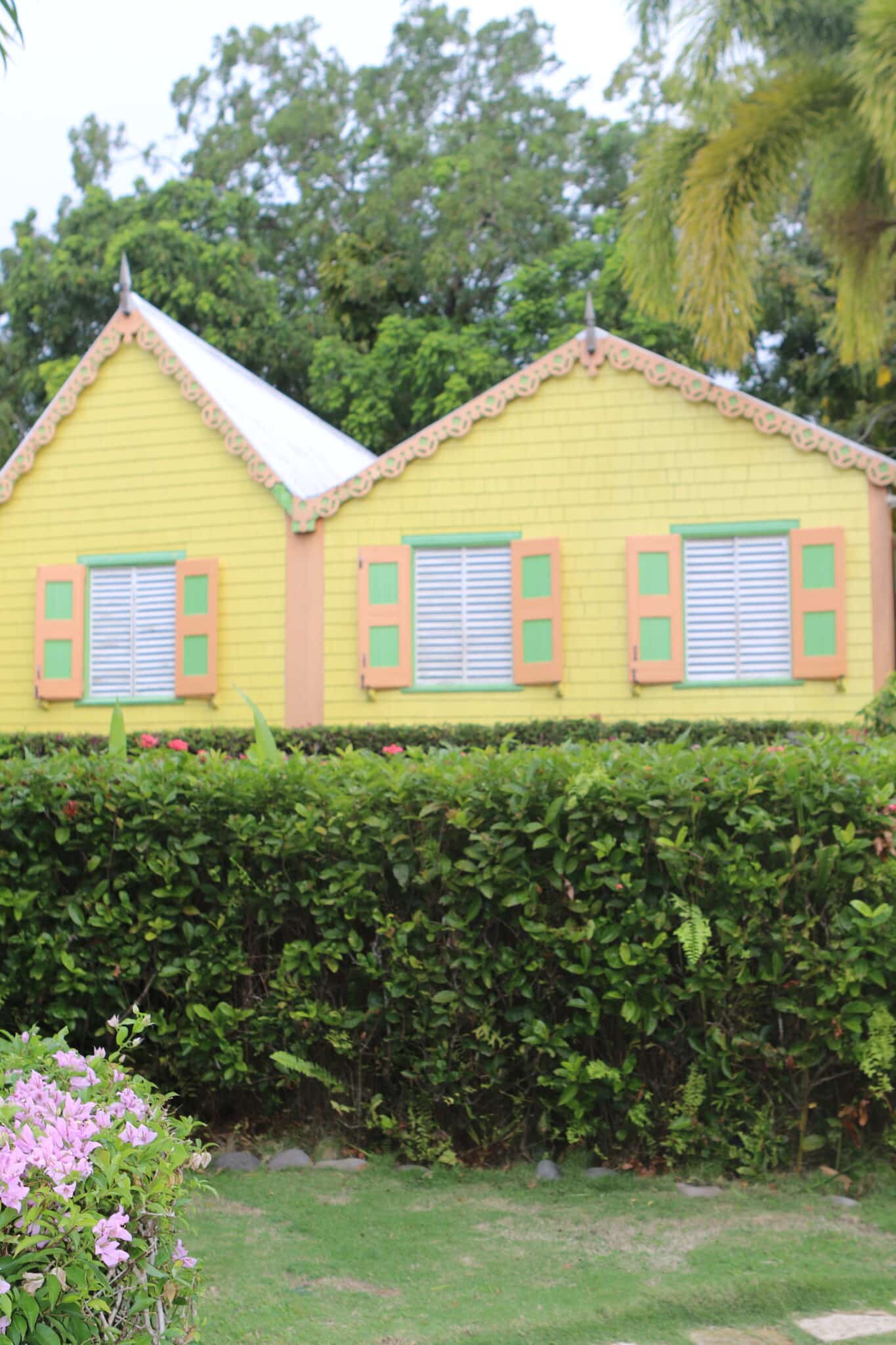
Outside batiks hung and inside, there was a gift shop where you could purchase some of the batiks in a variety of forms (t-shirts, jackets, bags, wallets, scarves and more).
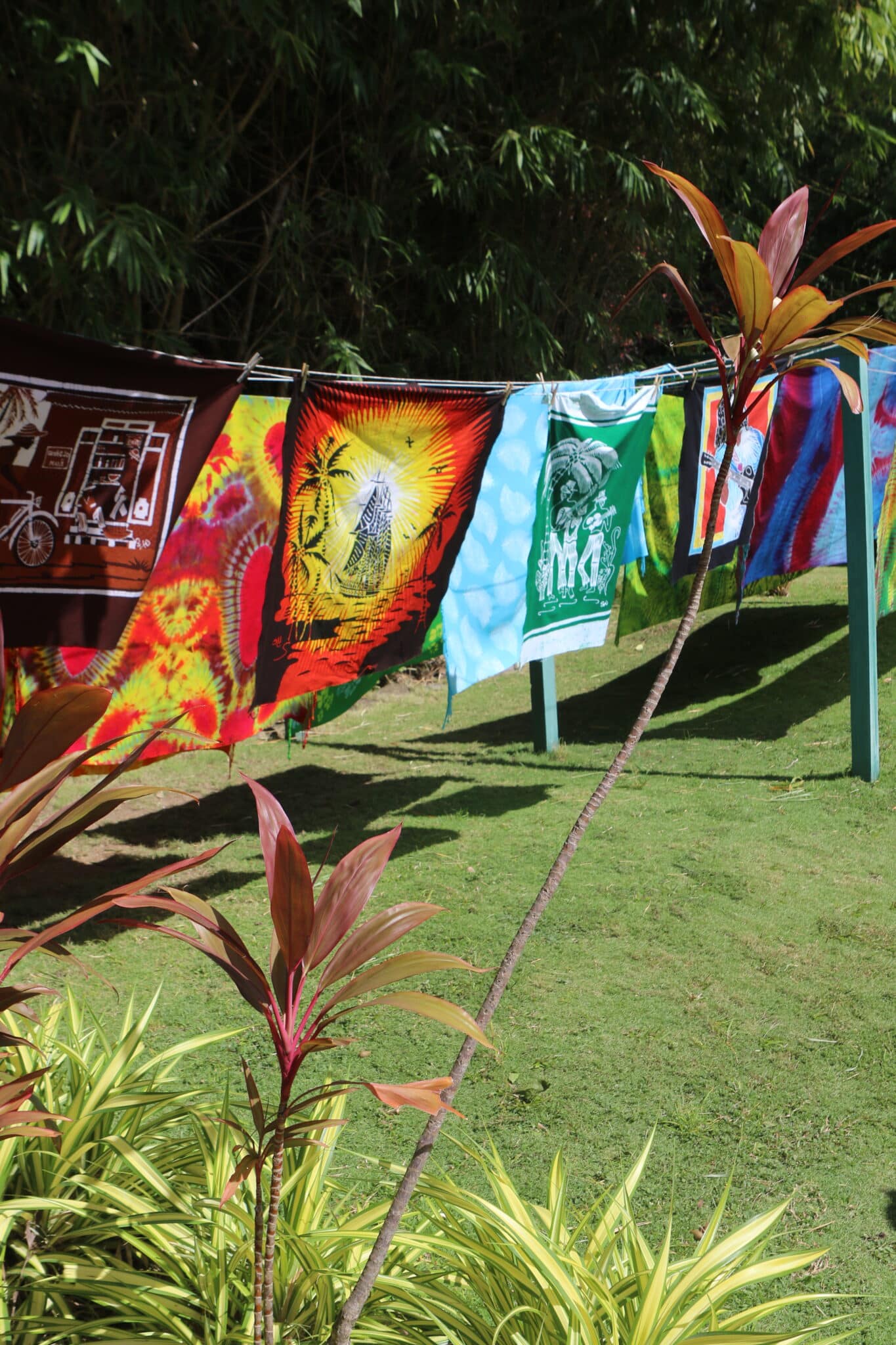
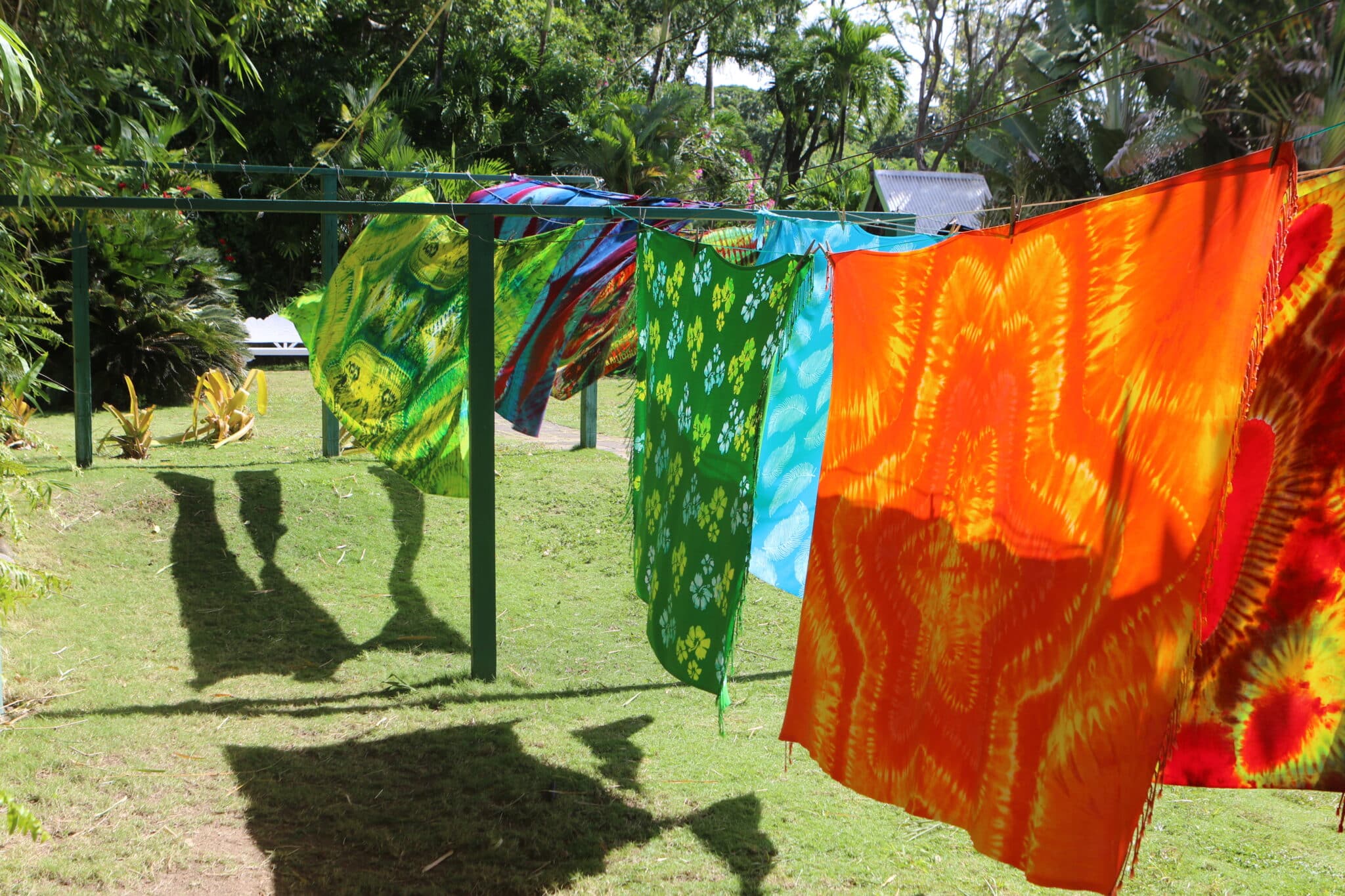
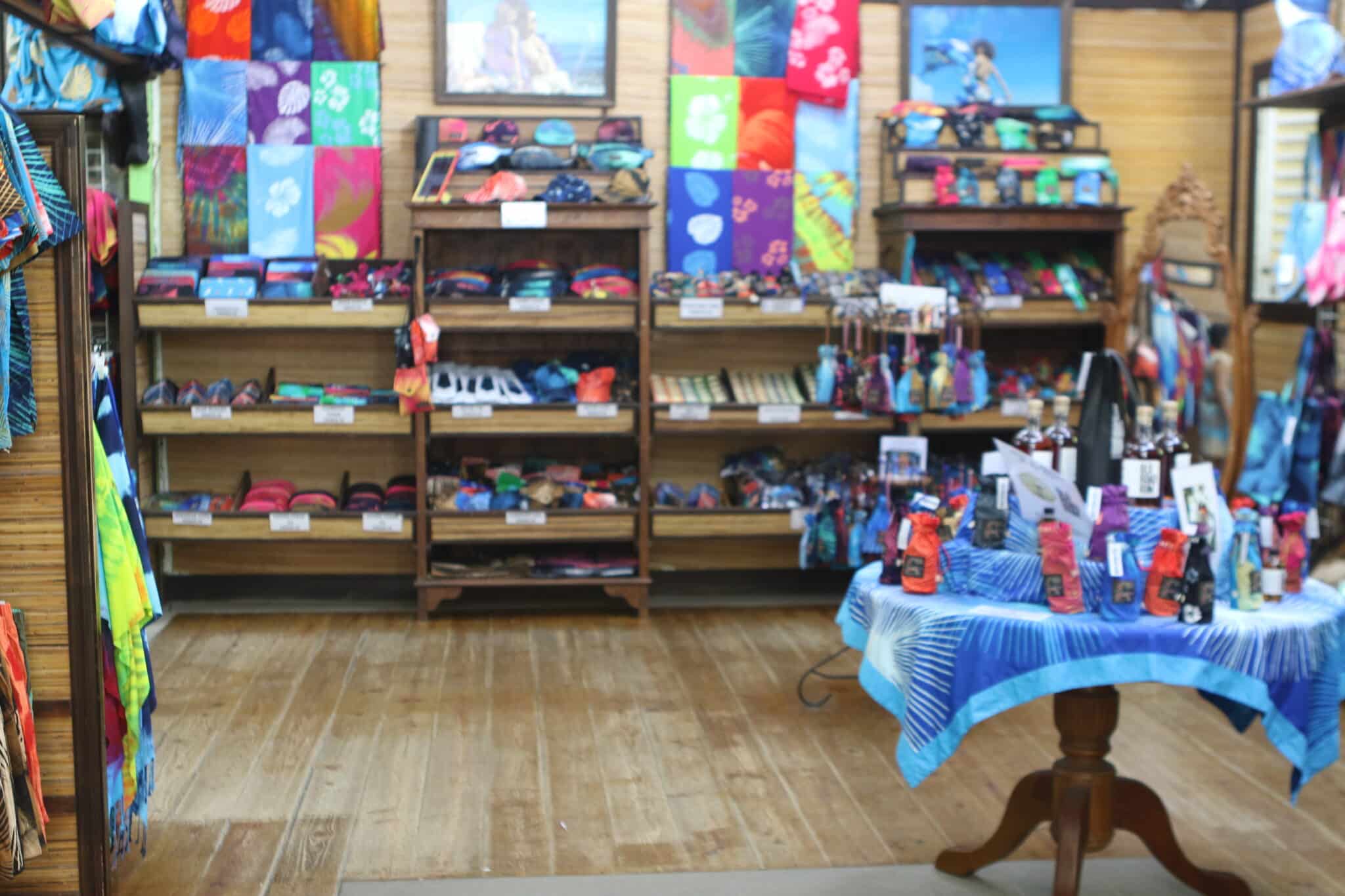
Inside, you have the opportunity to witness the Batik making process in action. Did you know that it is a 2,500 year old Indonesian wax-and-dye process? Here, she is using hot wax and colorful dye to create her masterpiece.
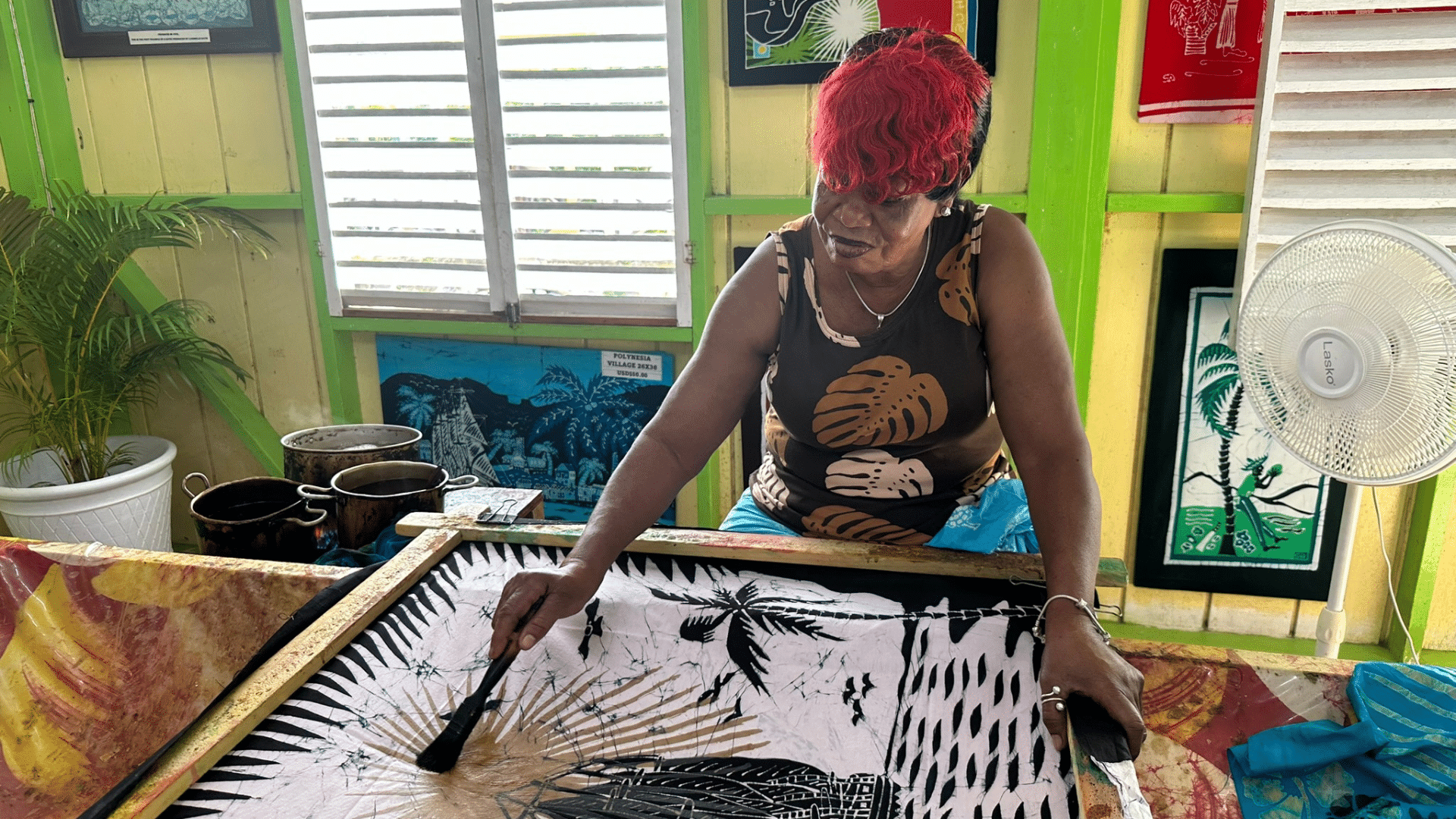
Outside, the gardens are lush, vibrant and alive. We strolled along the edges and through the gardens. It’s set on ten acres and the garden setting is absolutely breathtaking.
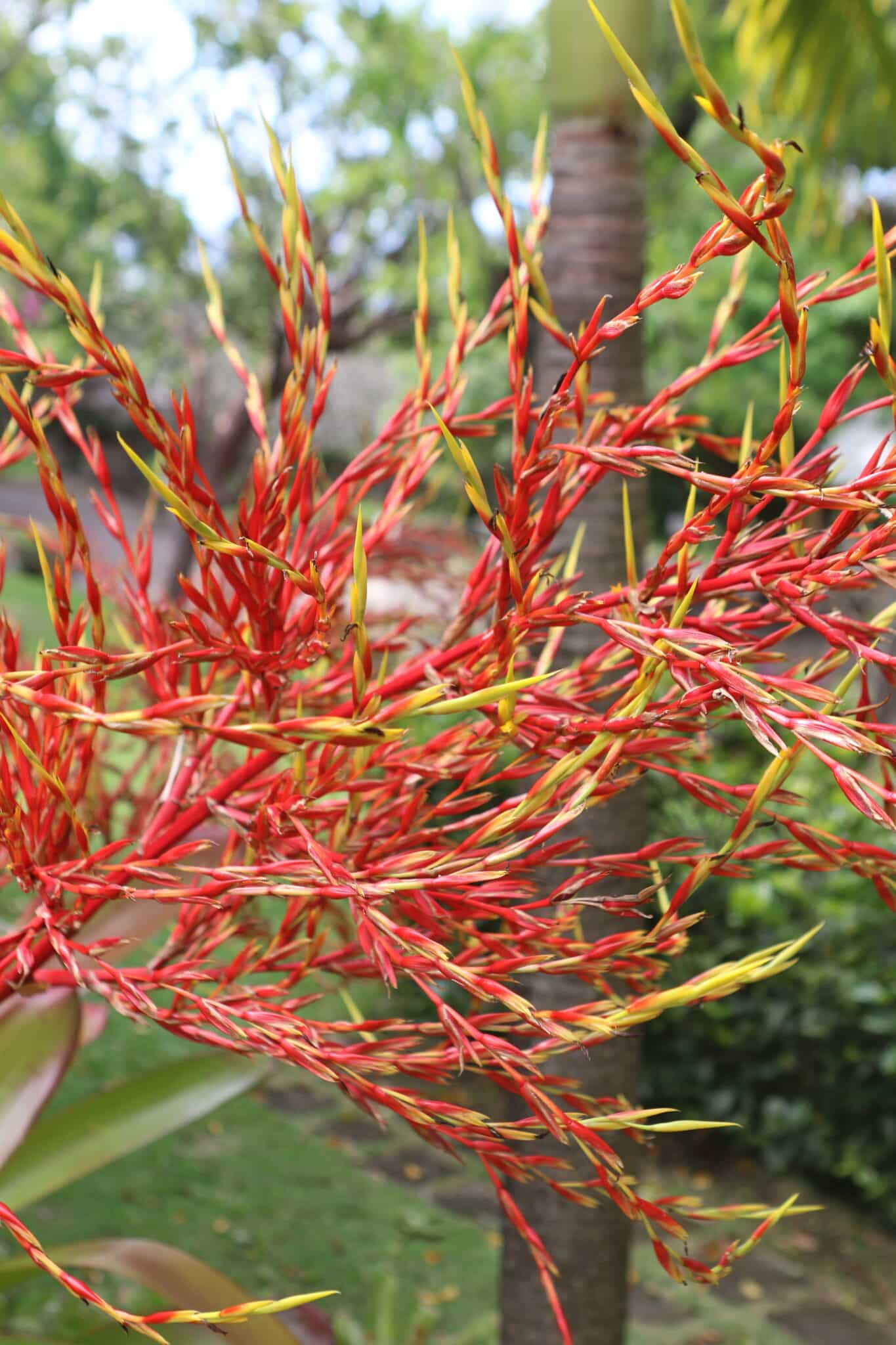
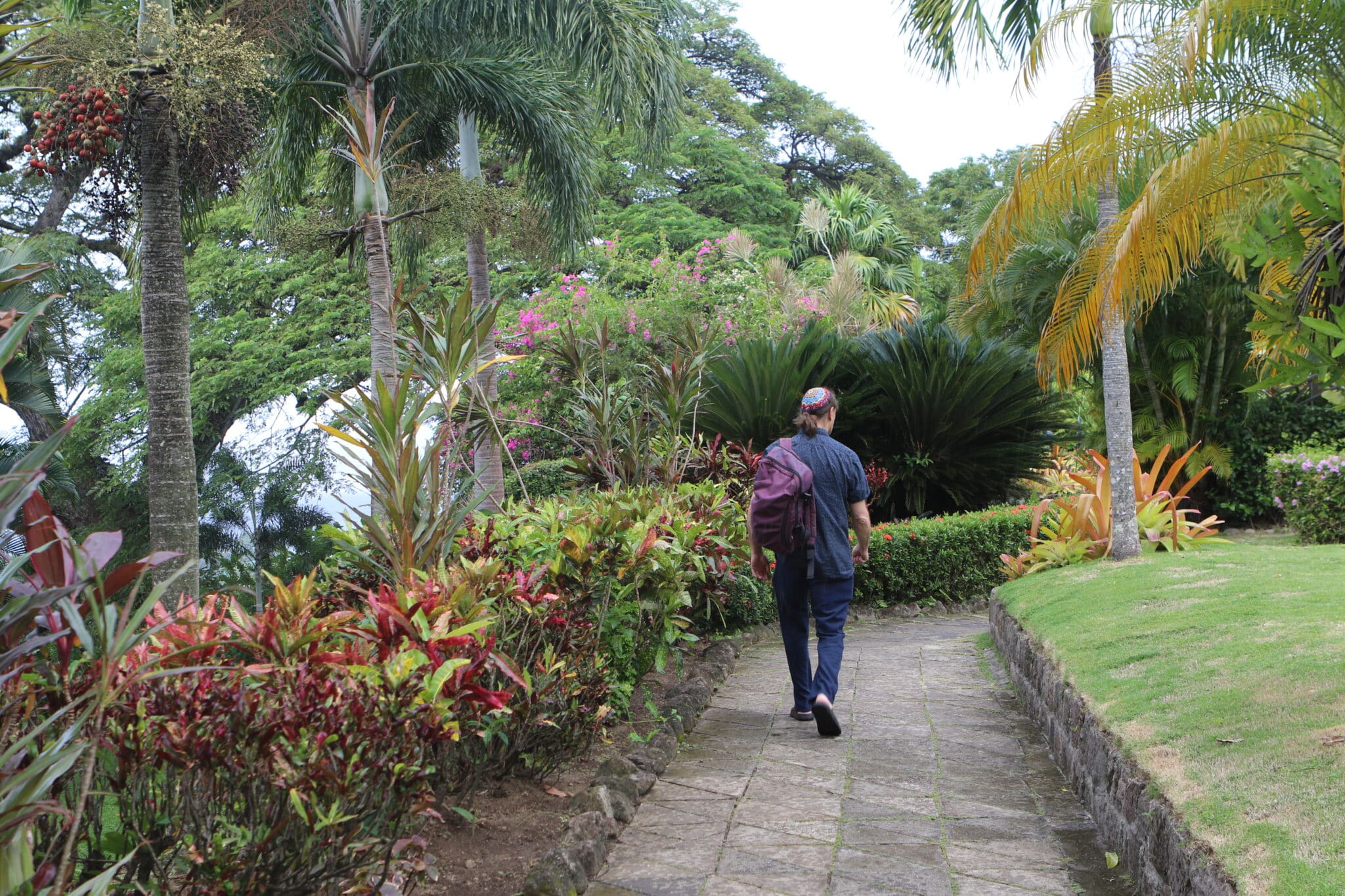
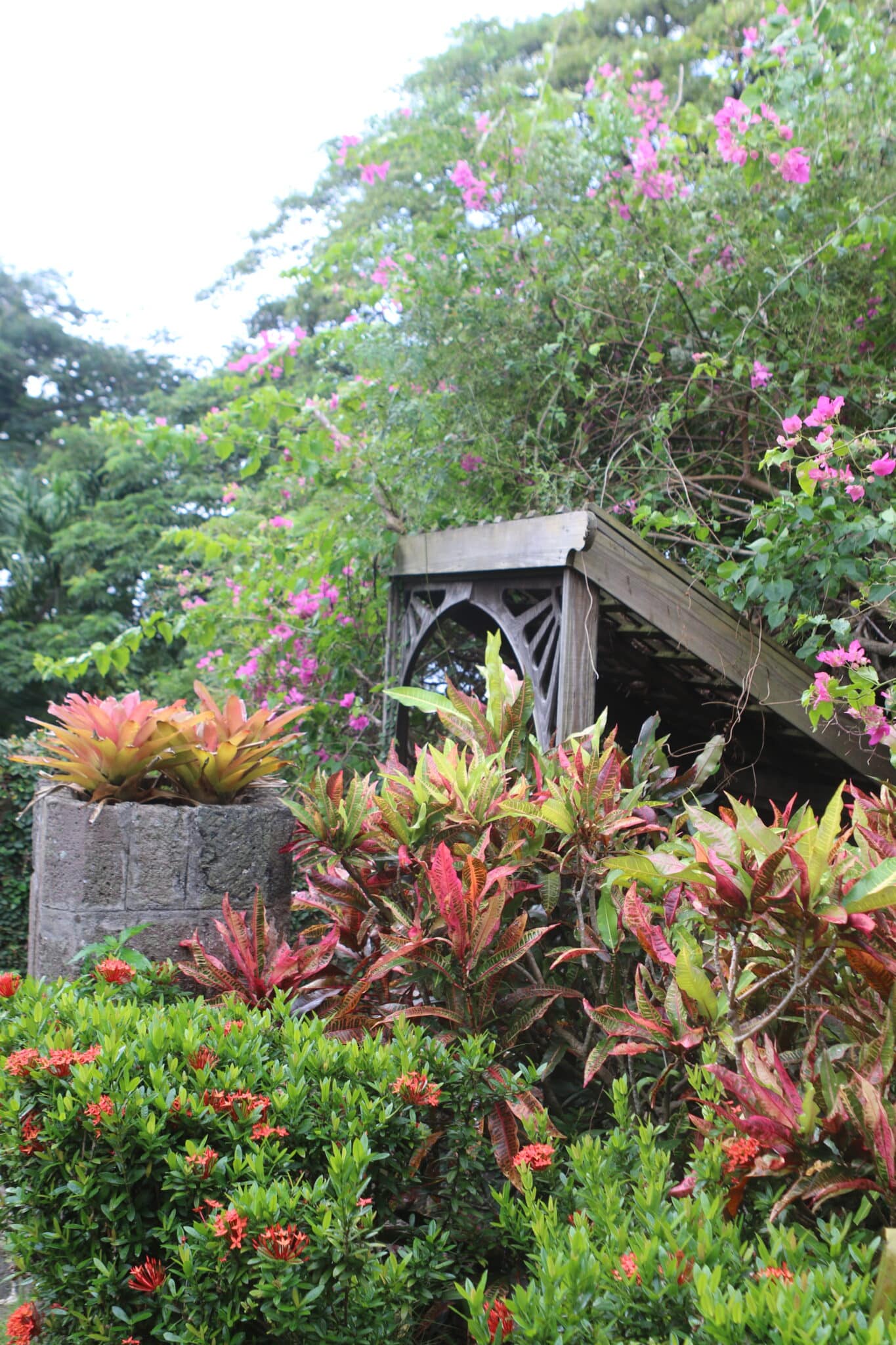
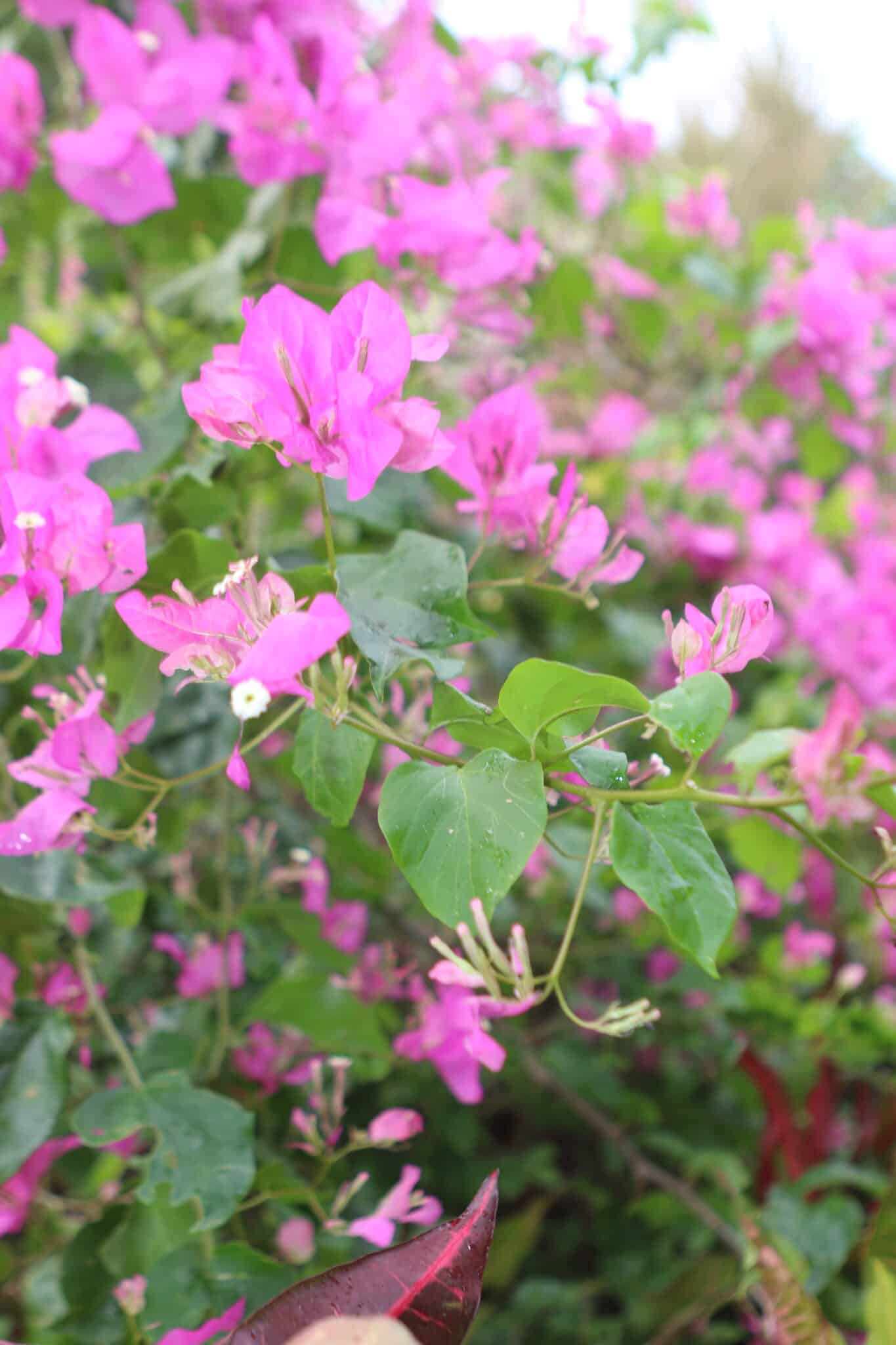
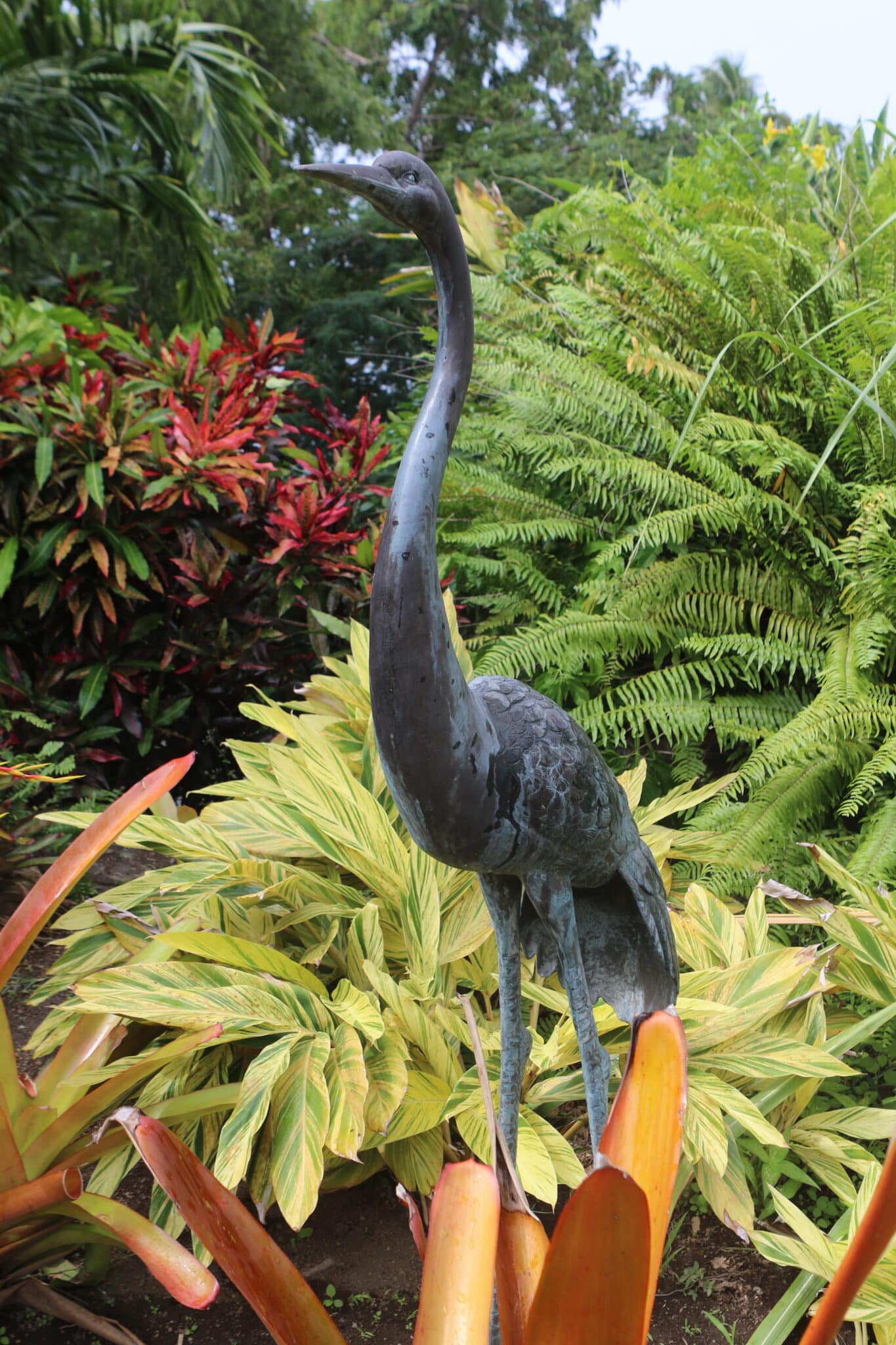
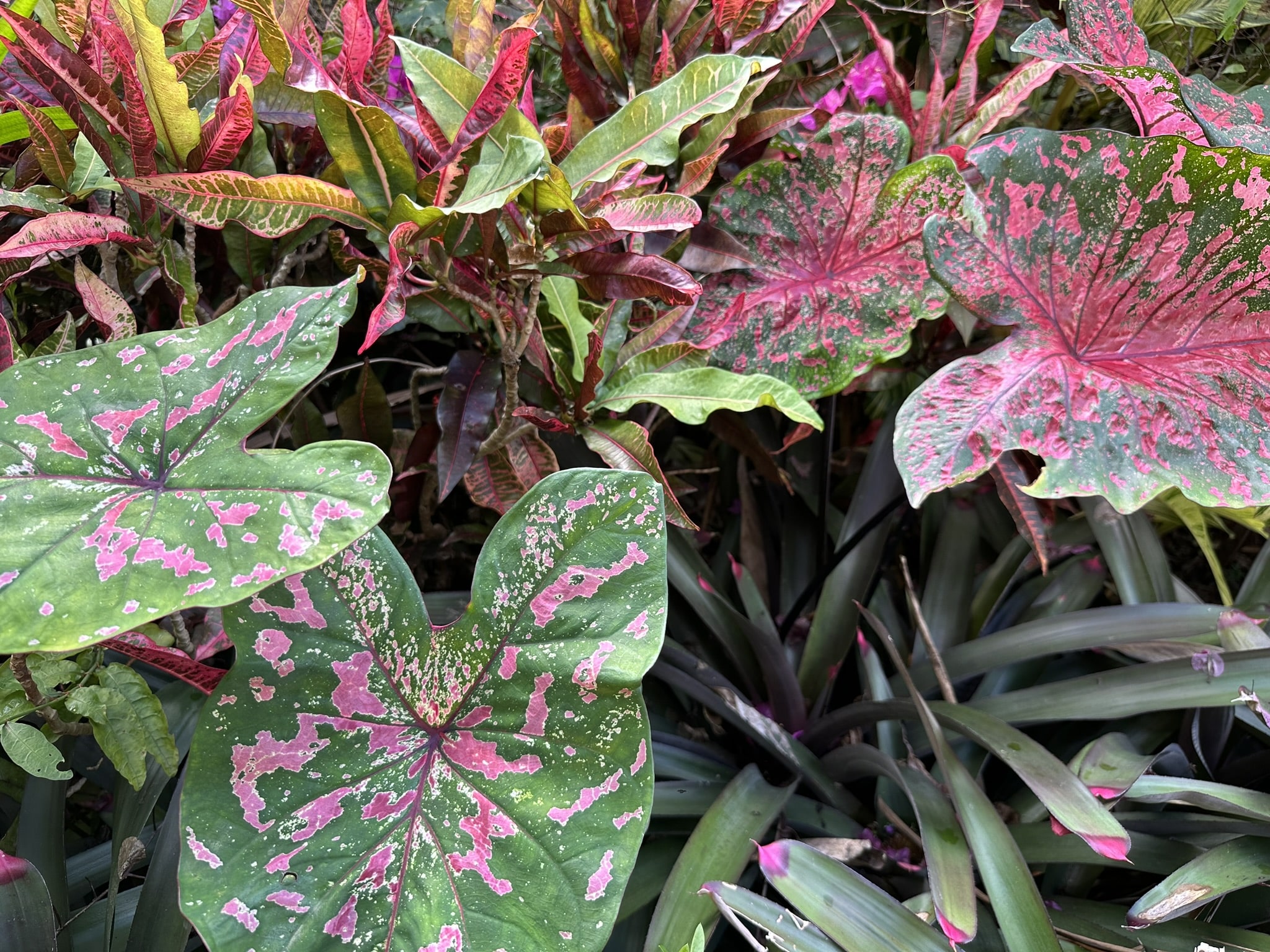
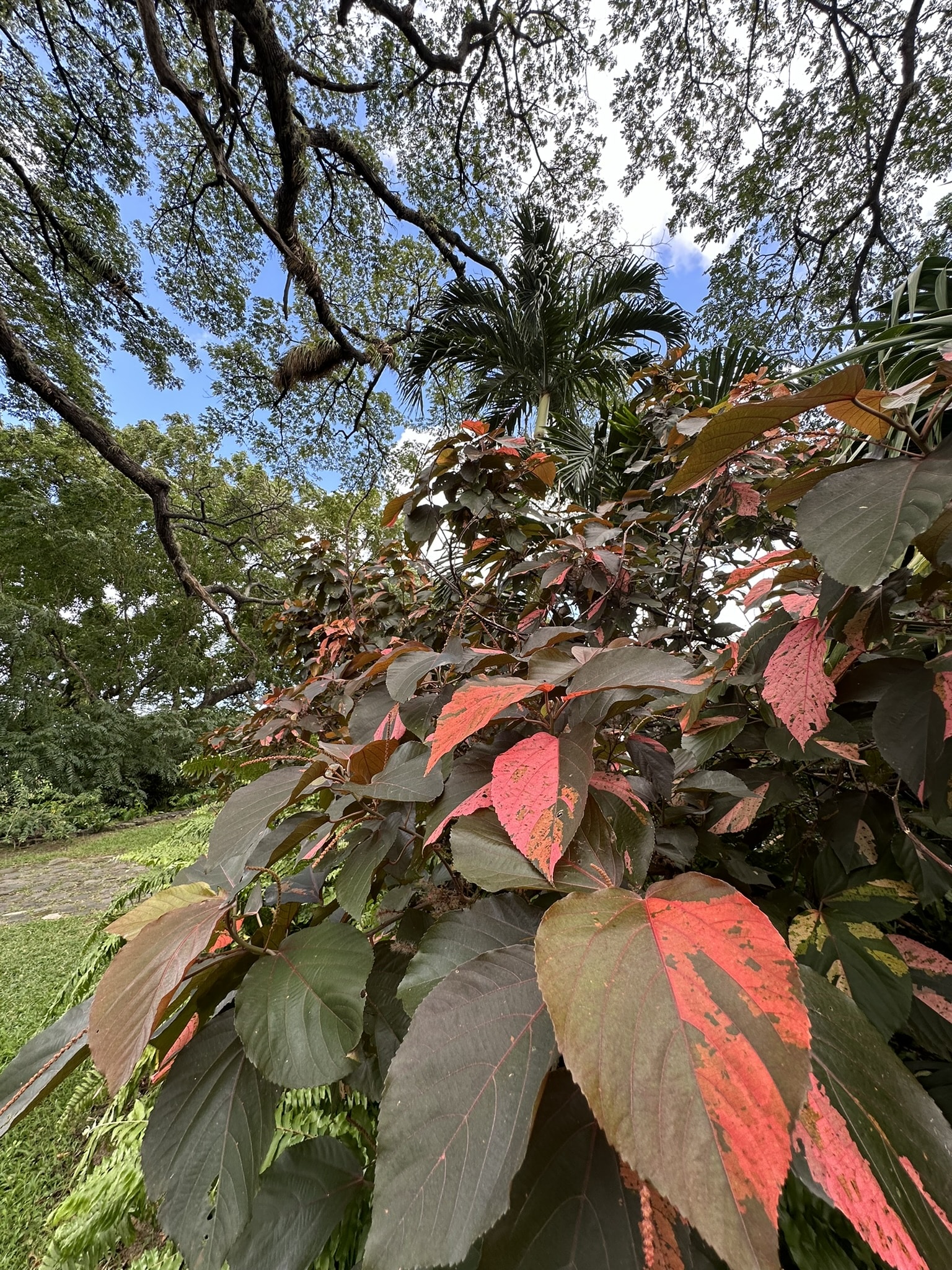
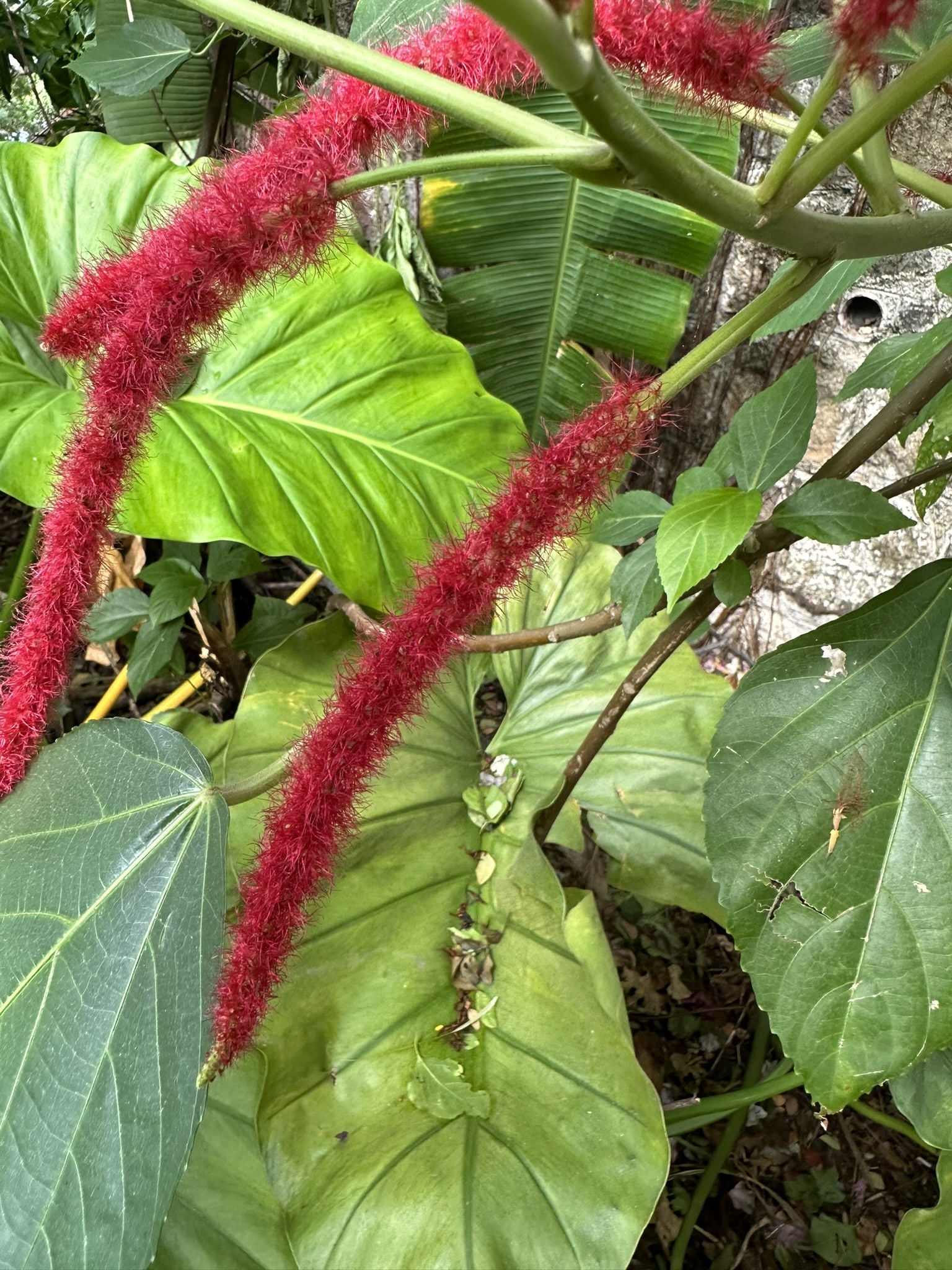
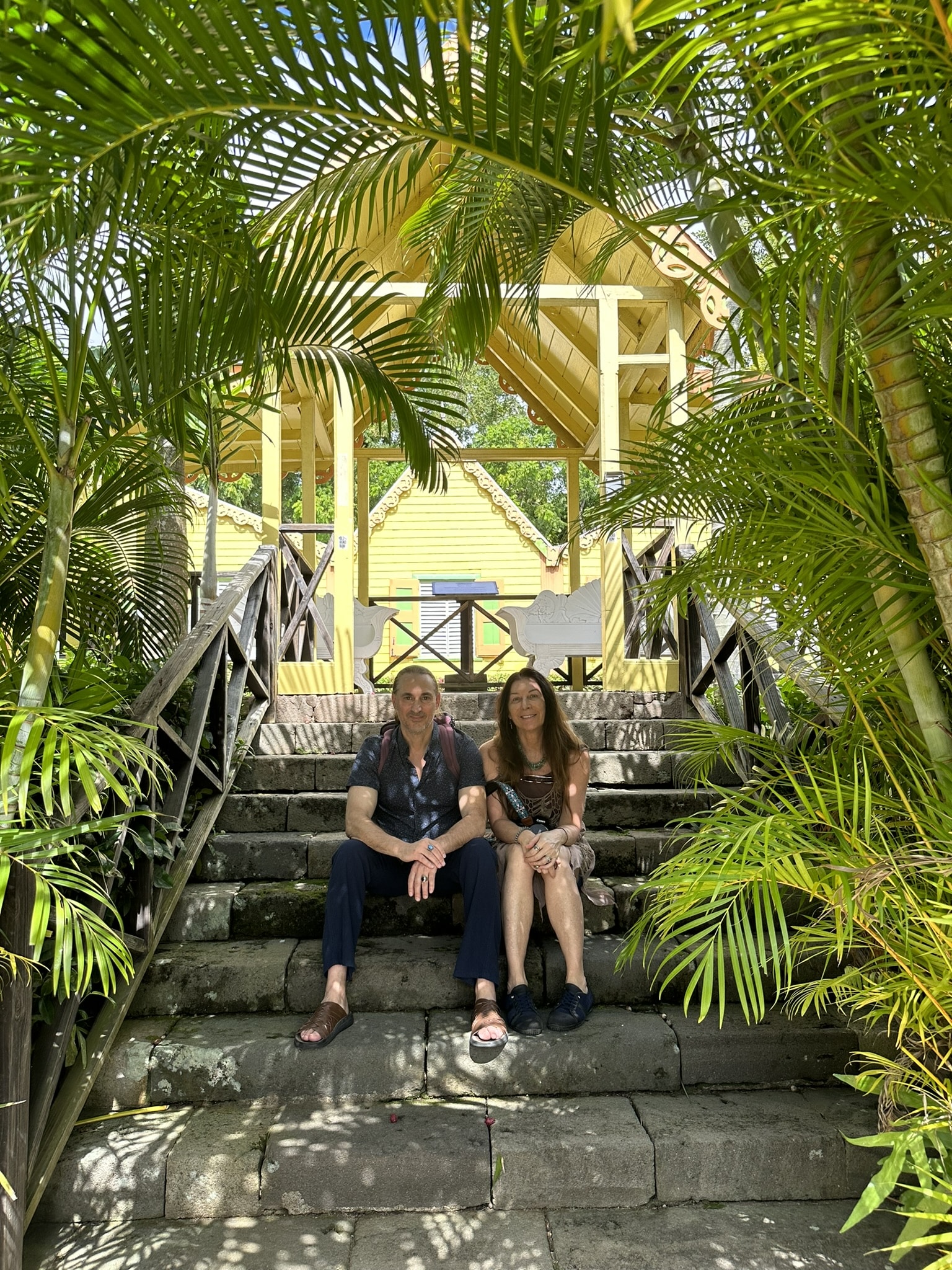
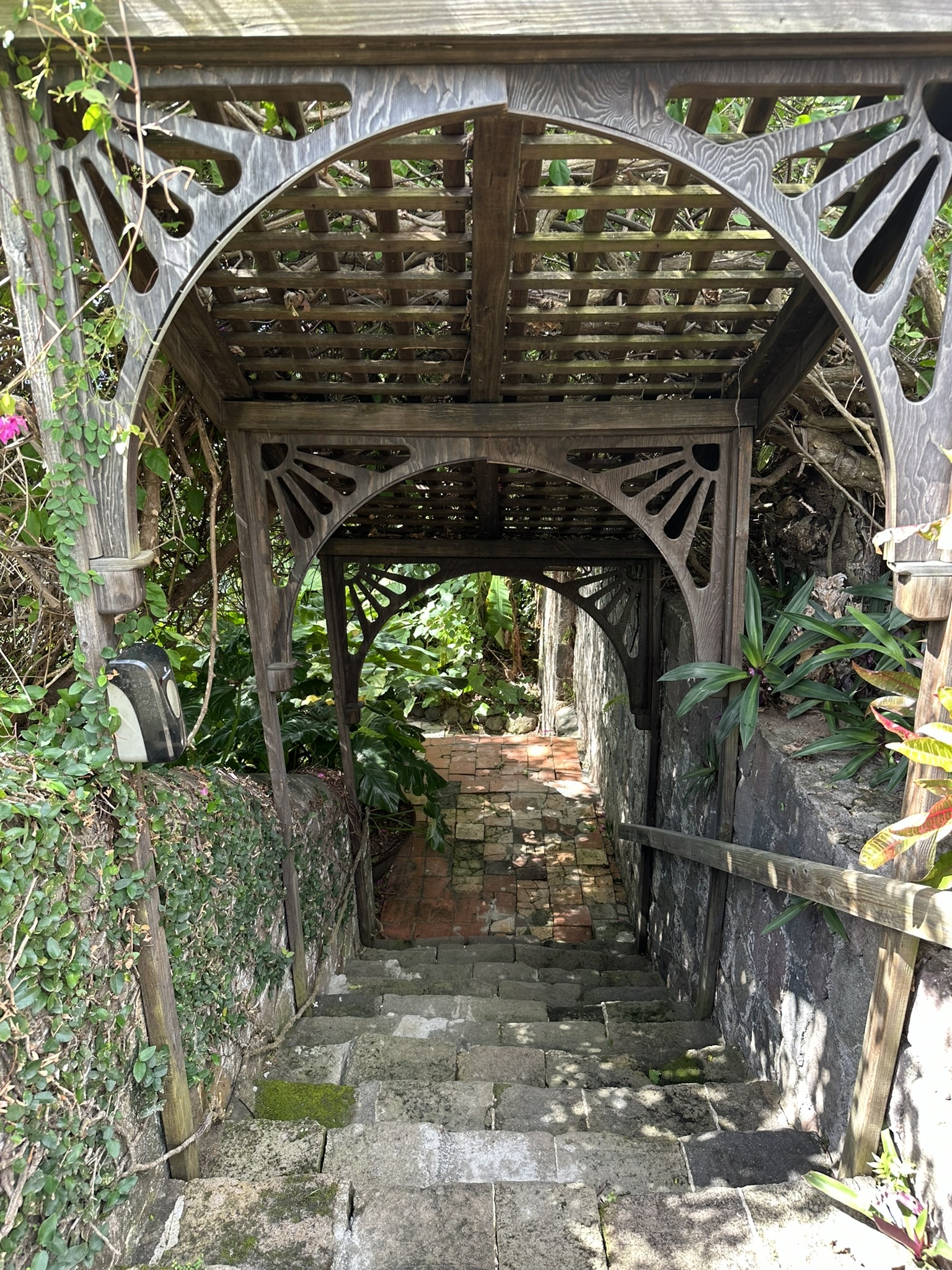
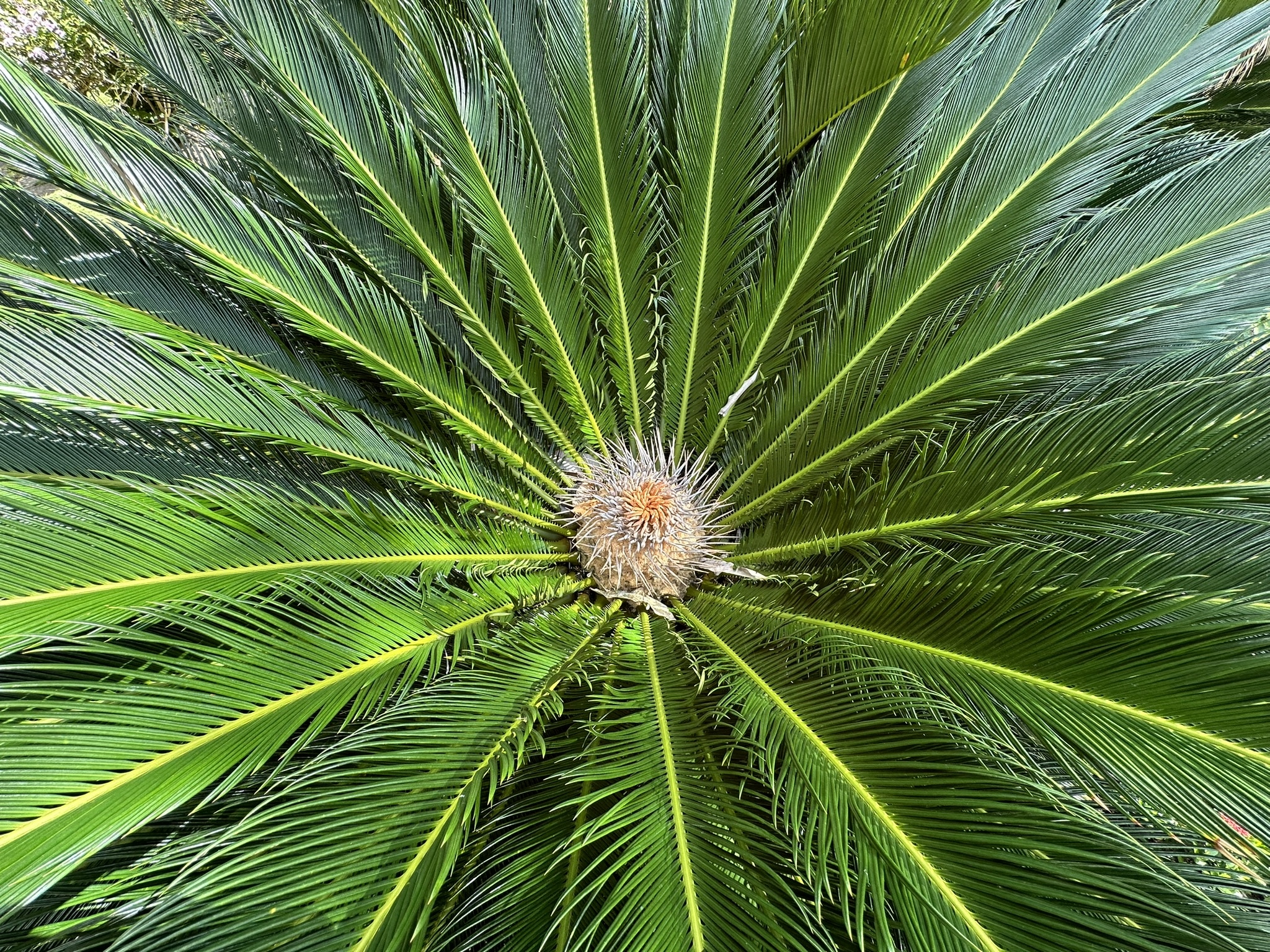

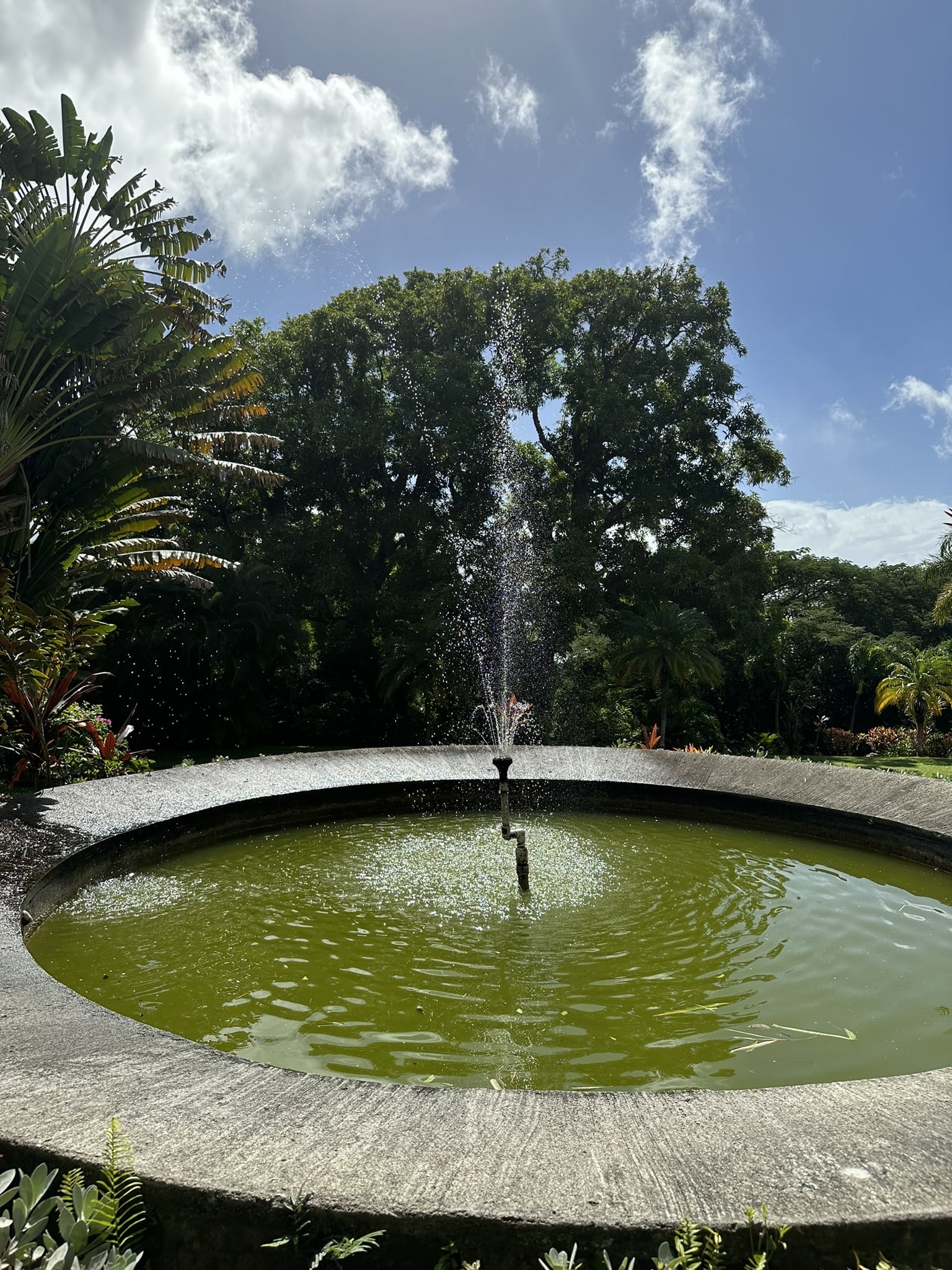


There’s a magical 350-year old gnarled samaan tree on-site, so magical that I took nearly a hundred shots of it from different angles. I was absolutely mesmerized by its mysterious movements and the way it was so alive — by that, I mean that it was proud, tall and seemed as if it had plenty of stories to tell. Imagine what it must have witnessed in its time.
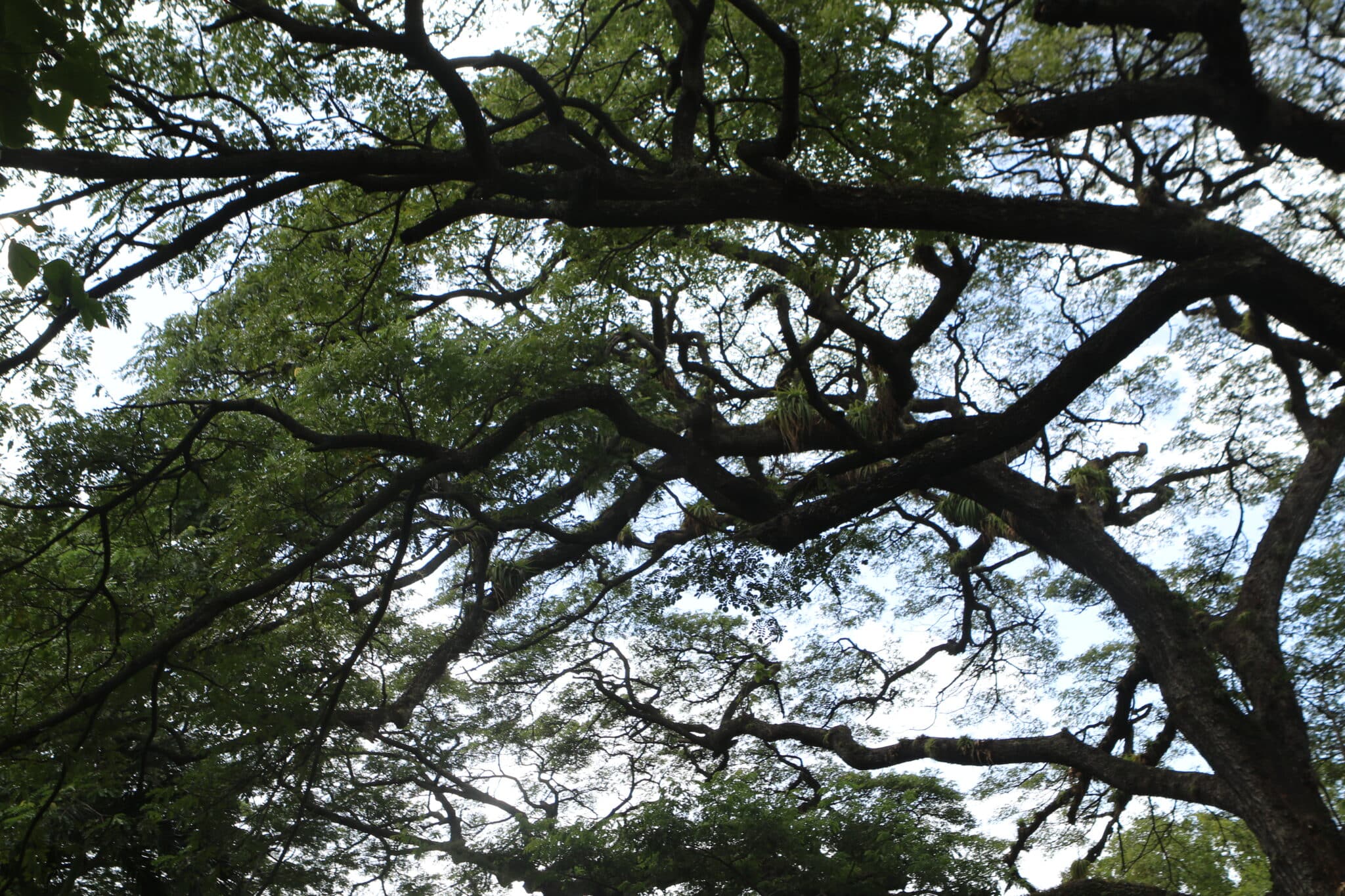
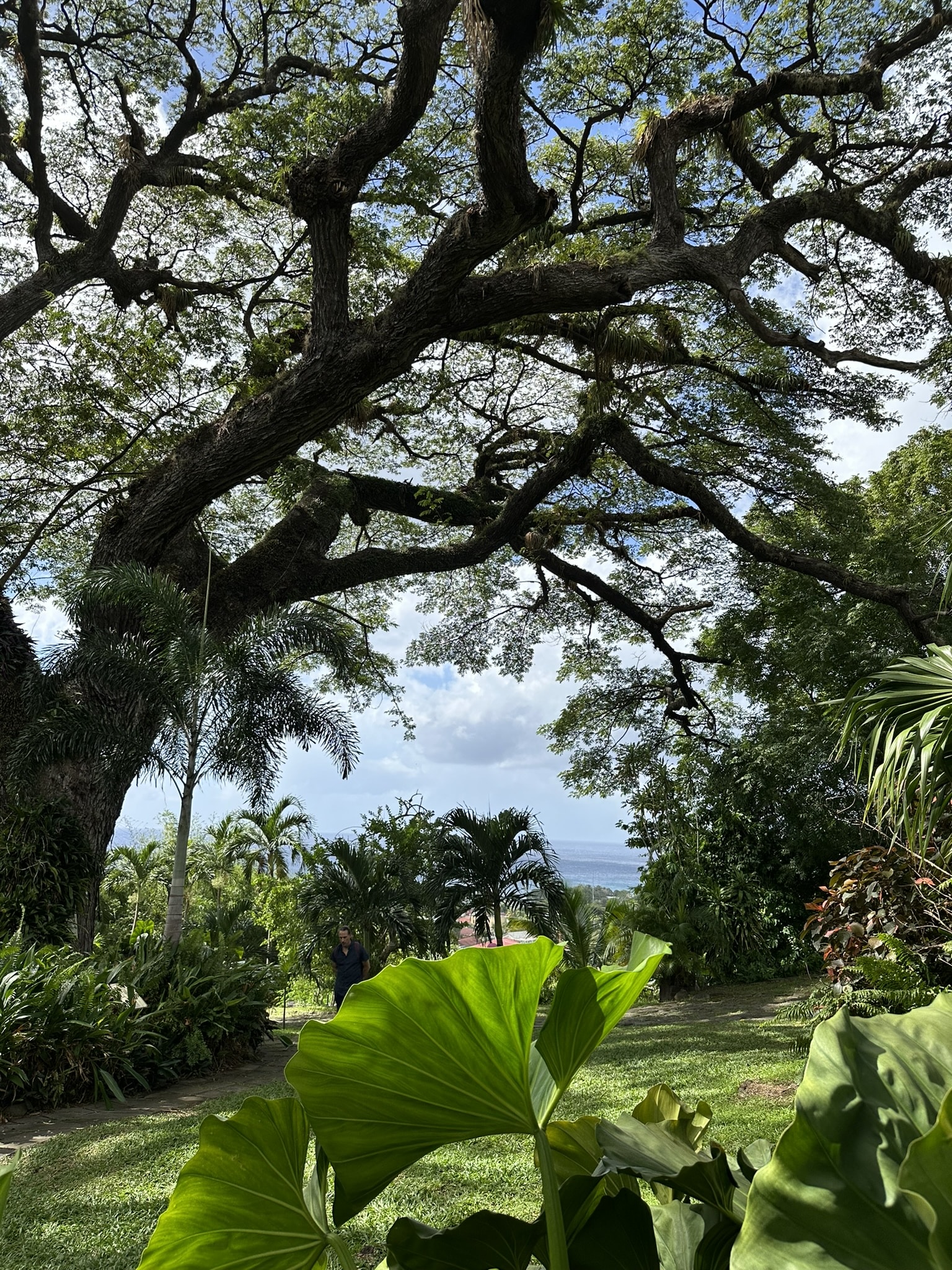


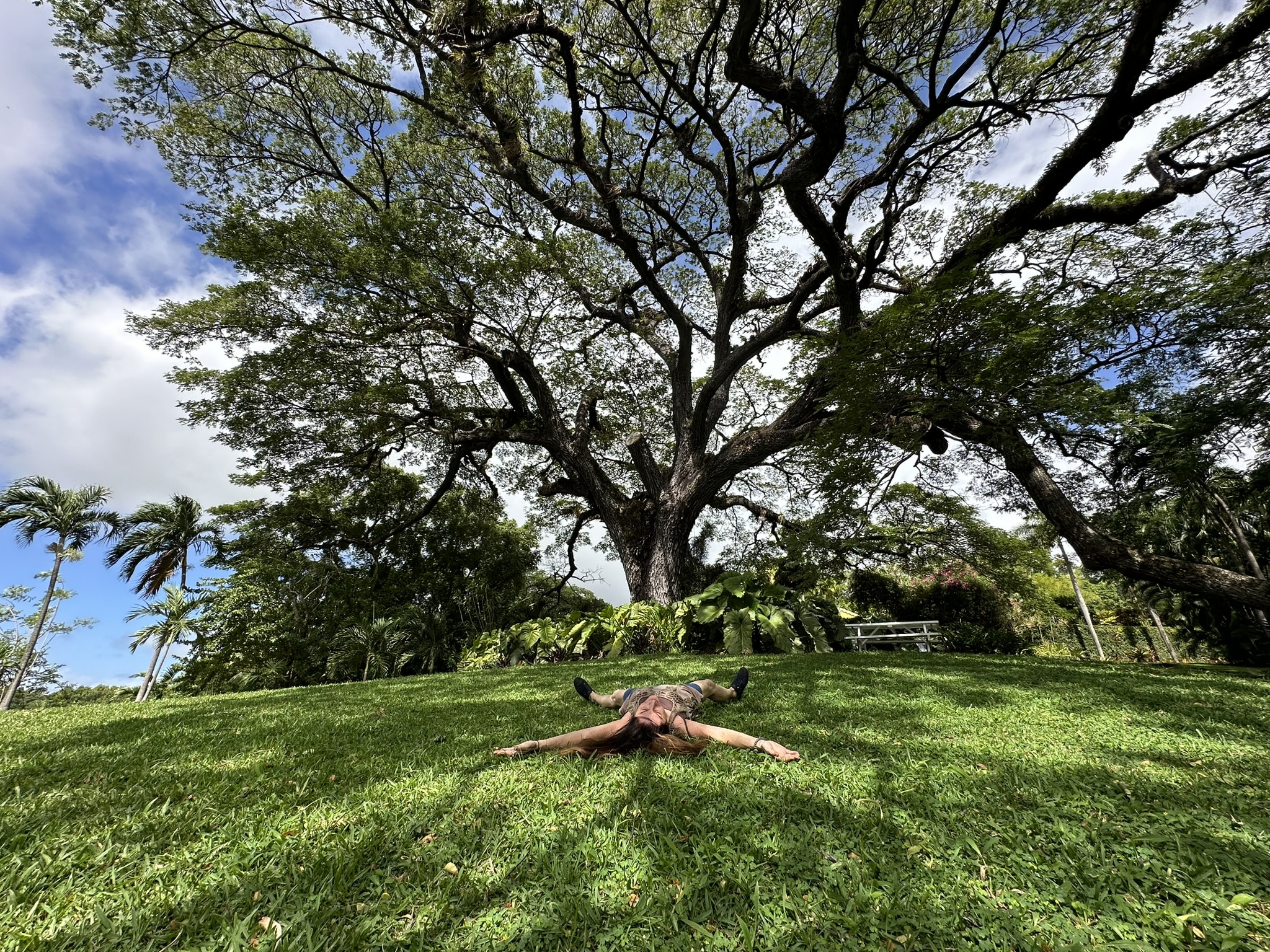
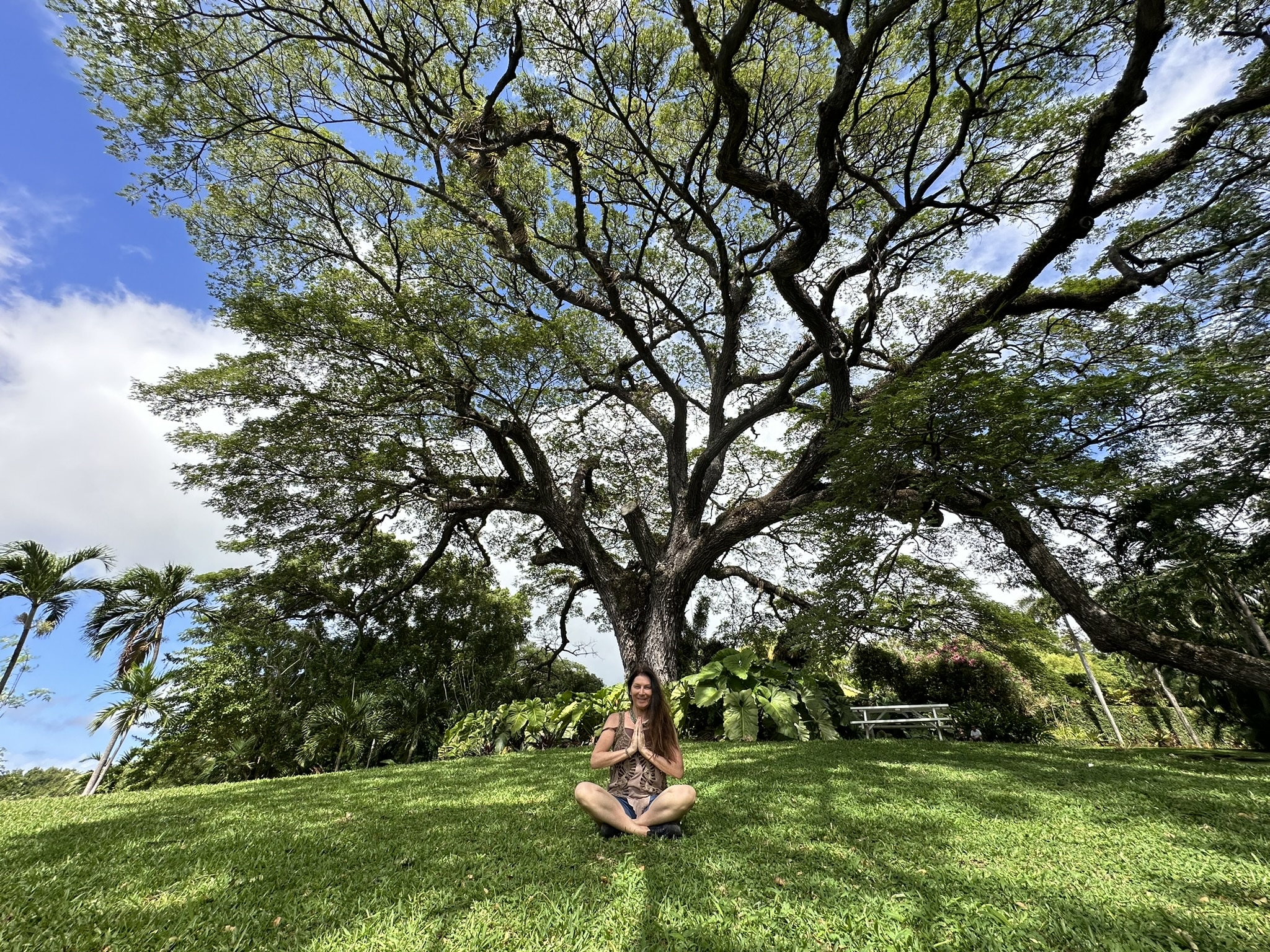
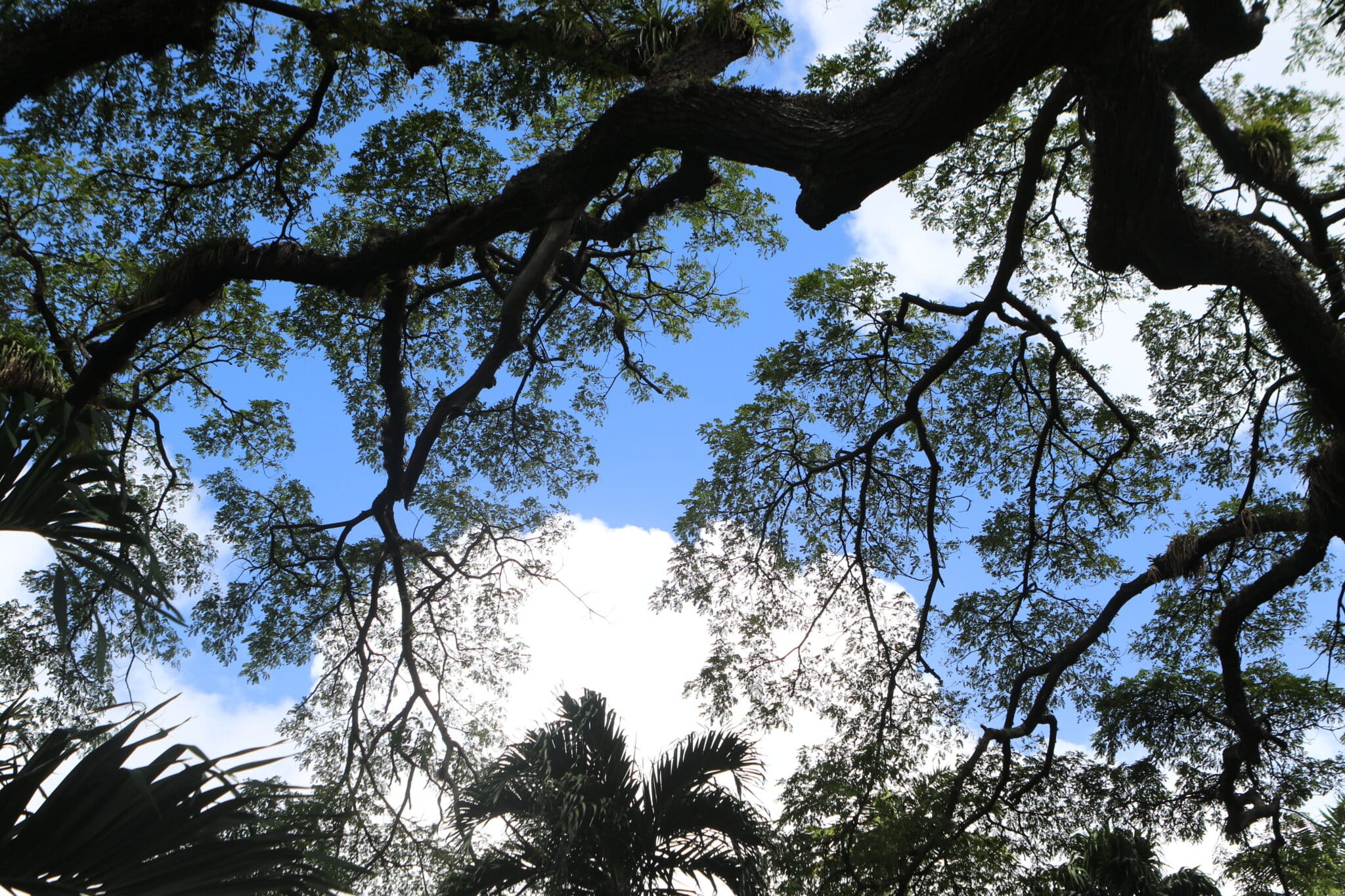
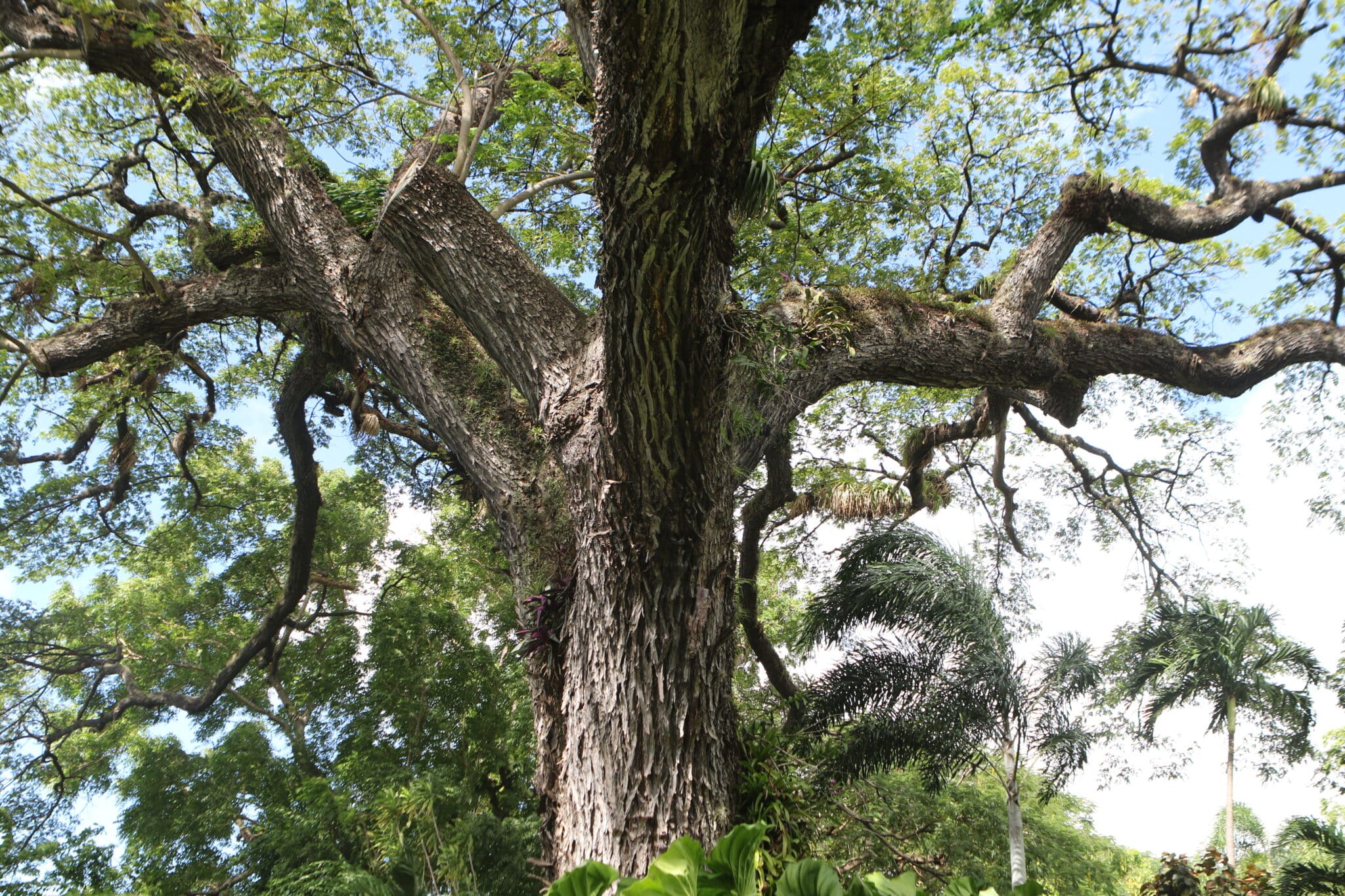
Since we had plenty of time here, I also grabbed a little video of this tree as well. Take a look:
The drive through the island was spectacular as well, especially the scenery (both lush rainforest) and stunning sights of the sea.
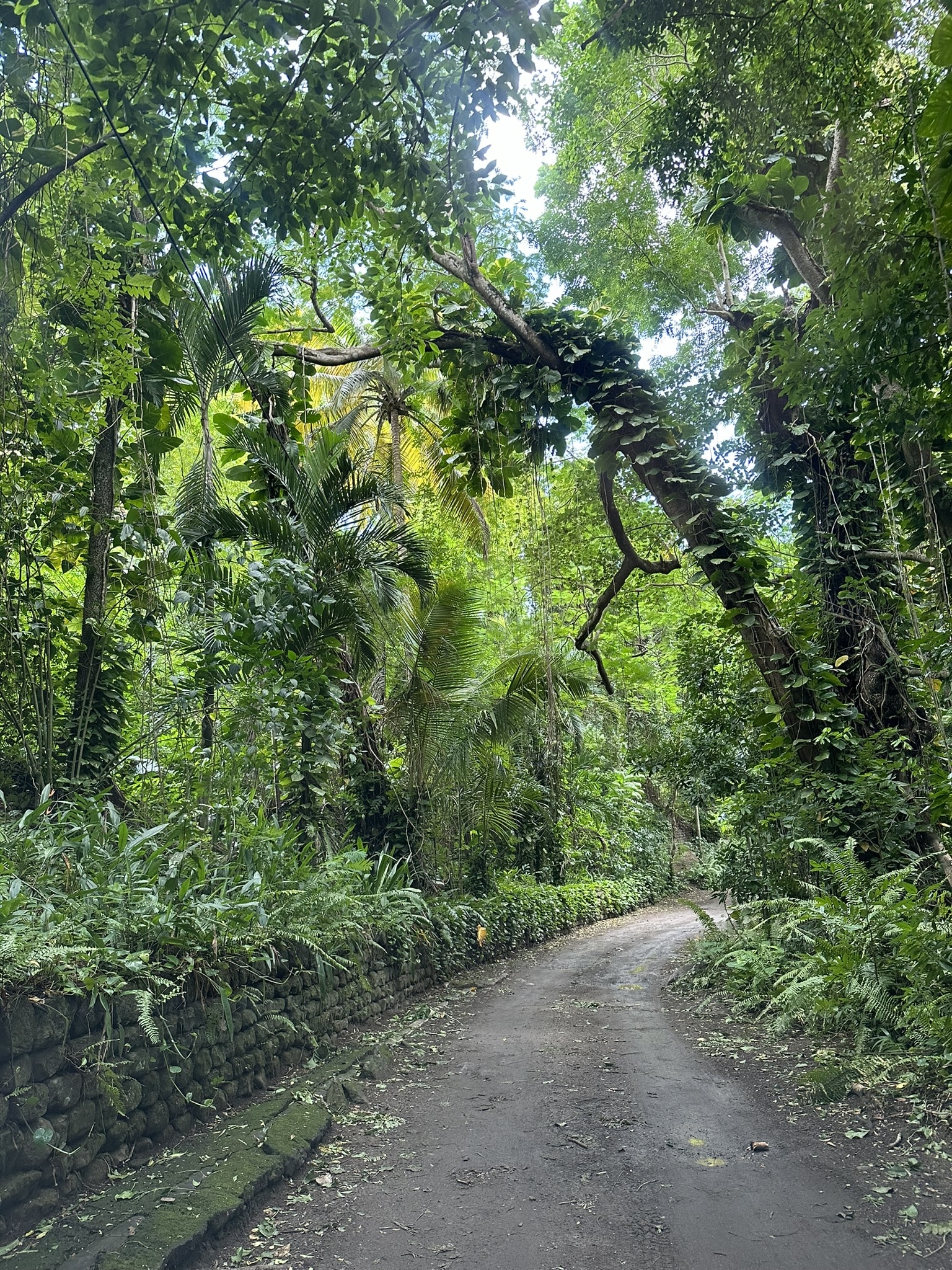
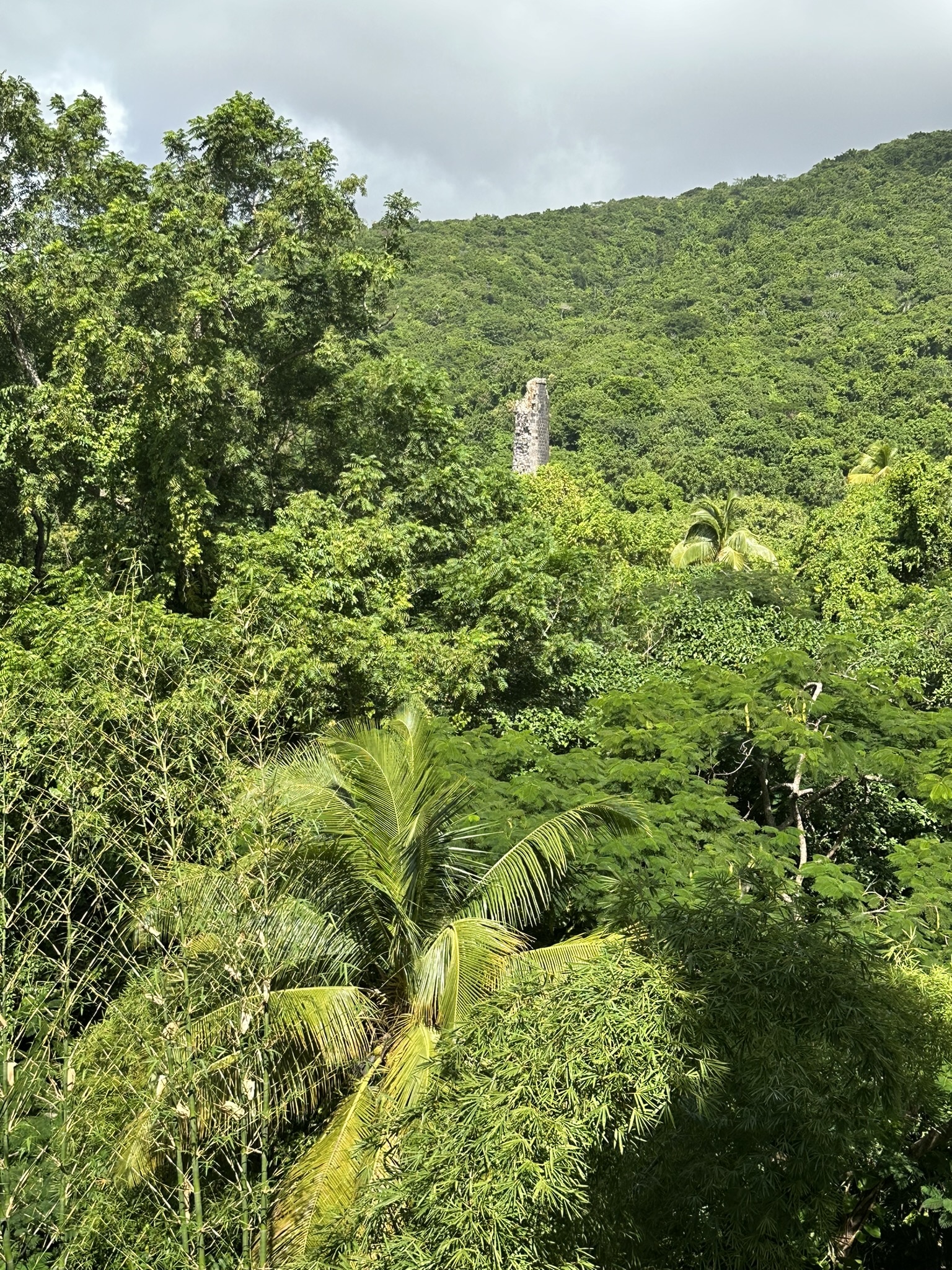
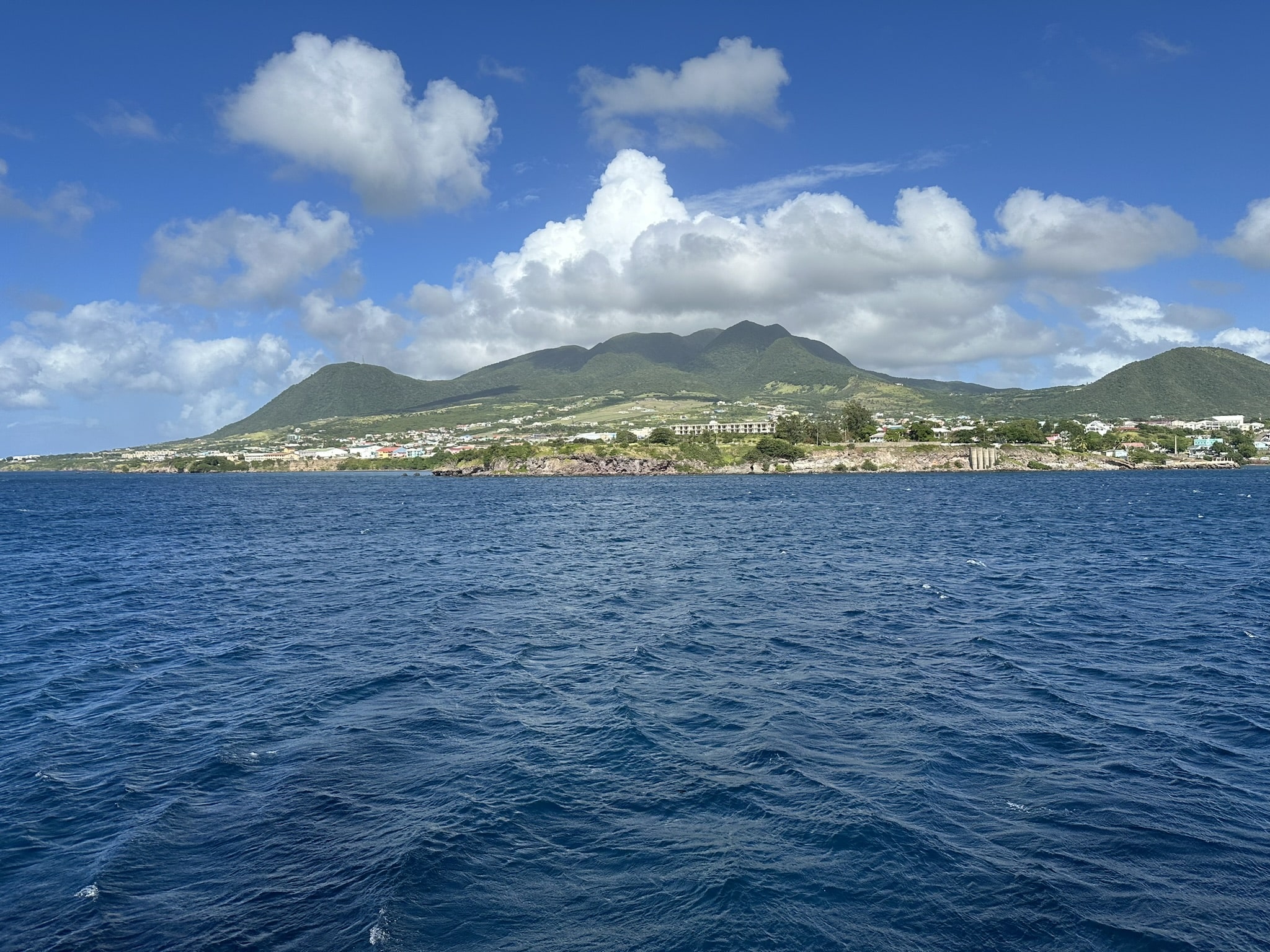
Some of the sites worth exploring in its capital Basseterre include St. Georges Anglican Church (built in 1670), Port Zante, a 27-acre pier and marina, the National Museum in the former Treasury Building, Brimstone Hill, a restored 38-acre fortress (also a UNESCO World Heritage Site), Romney Manor as noted above (we took plenty of photos here; it is where the samaan tree resides)
Known as the sugar islands, there’s plenty of sugar cane here and they also made rum for years, but its mostly locally made as “home brew” today. If you have time to explore other parts of the island, there are extinct volcanoes, great hiking in the rain forests as well as diving and snorkeling.
For food, check out the Ballahoo, a tropically themed restaurant. Order their toasted rum-and-banana sandwich with ice cream. Yes, really. Sounds like it’s to die-for right? You can also order tamarind and guava juices. Have even more time? Head to Black Rocks, a unique set of lava deposits which are interesting to see. The Fairview Great House & Botanical Gardens are also quite pretty. Think French colonial sitting on two acres that was built in 1701. They’ve restored the house and it’s brimming with bright colors, each room a different shade. There’s a lovely cobblestone courtyard, a volcanic-stone and brick oven and a fieldstone cellar, where you can buy local pottery, art, honey and other items. There’s also a restaurant on-site where you can order tapas and cocktails.
If you have time to visit some of their beaches, head to Friar’s Bay if you can only go to one of them. It is known as the nicest beach by locals and there’s a beach club there you can visit, as well as a few bars where you can also order food (ShipWreck and Mongoose). Frigate Bay is also worth mentioning as its beautiful fine sandy beaches are gorgeous. You can also go horseback riding here and grab a meal (Chinchillas, Elvis Love Shack and Timothy Beach Club’s Sunset Cafe), to name a few. Want to go upscale? Head to the Royal Palm for Provence style tables outside on a lovely veranda, surrounded by plants and beautiful green grounds.
Saint Lucia
There were a couple of different tour options in Saint Lucia, including an Aerial Tram Adventure and one that took in its breathtaking views. Here, you embrace the rainforest by tram (open-air gondola) taking in towering Gommiers, Chatanniers, Ficus, Bananas and Hummingbirds. Tours leave from Rodney Bay,which is where our shuttle boat dropped us off.
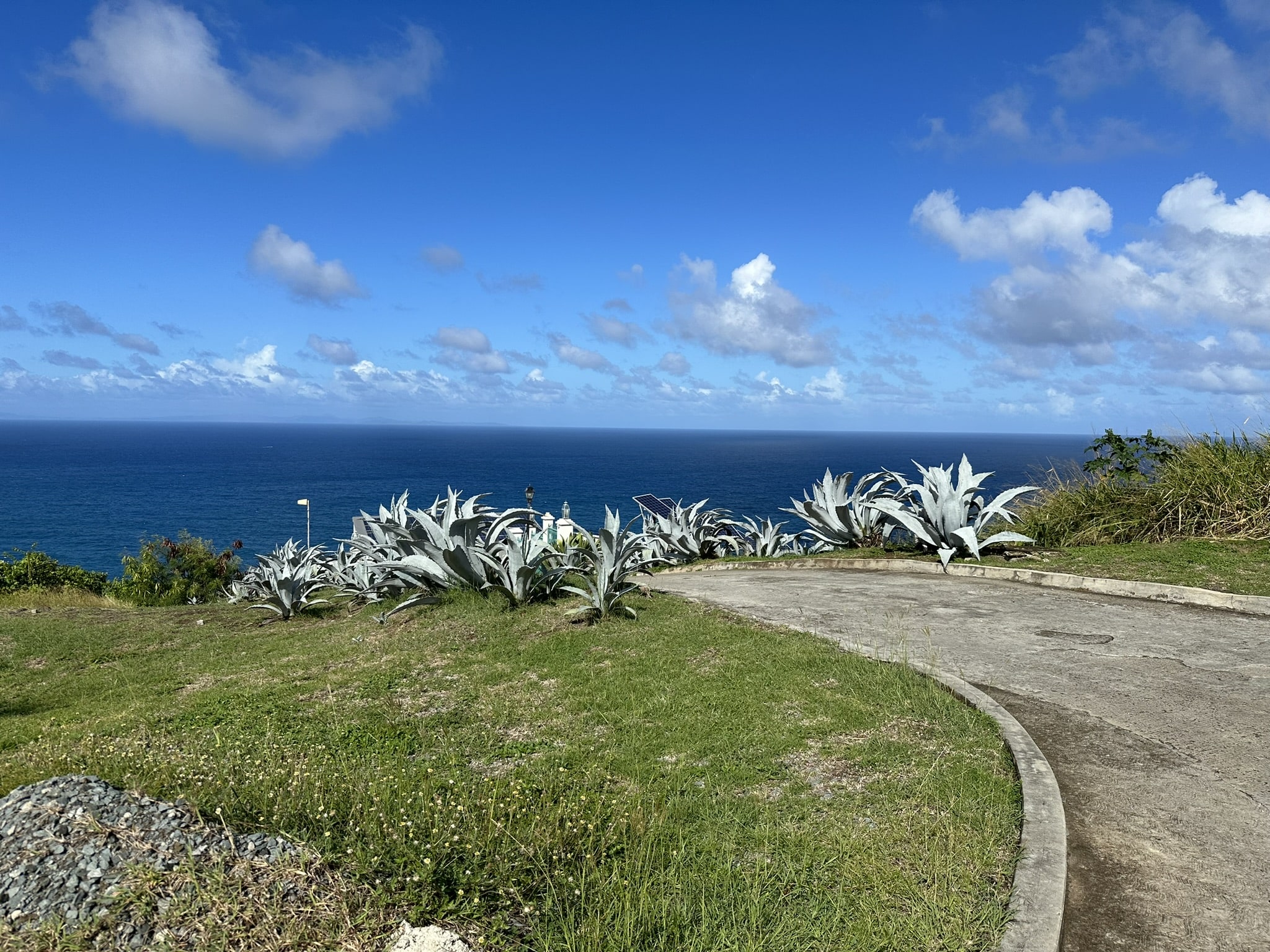
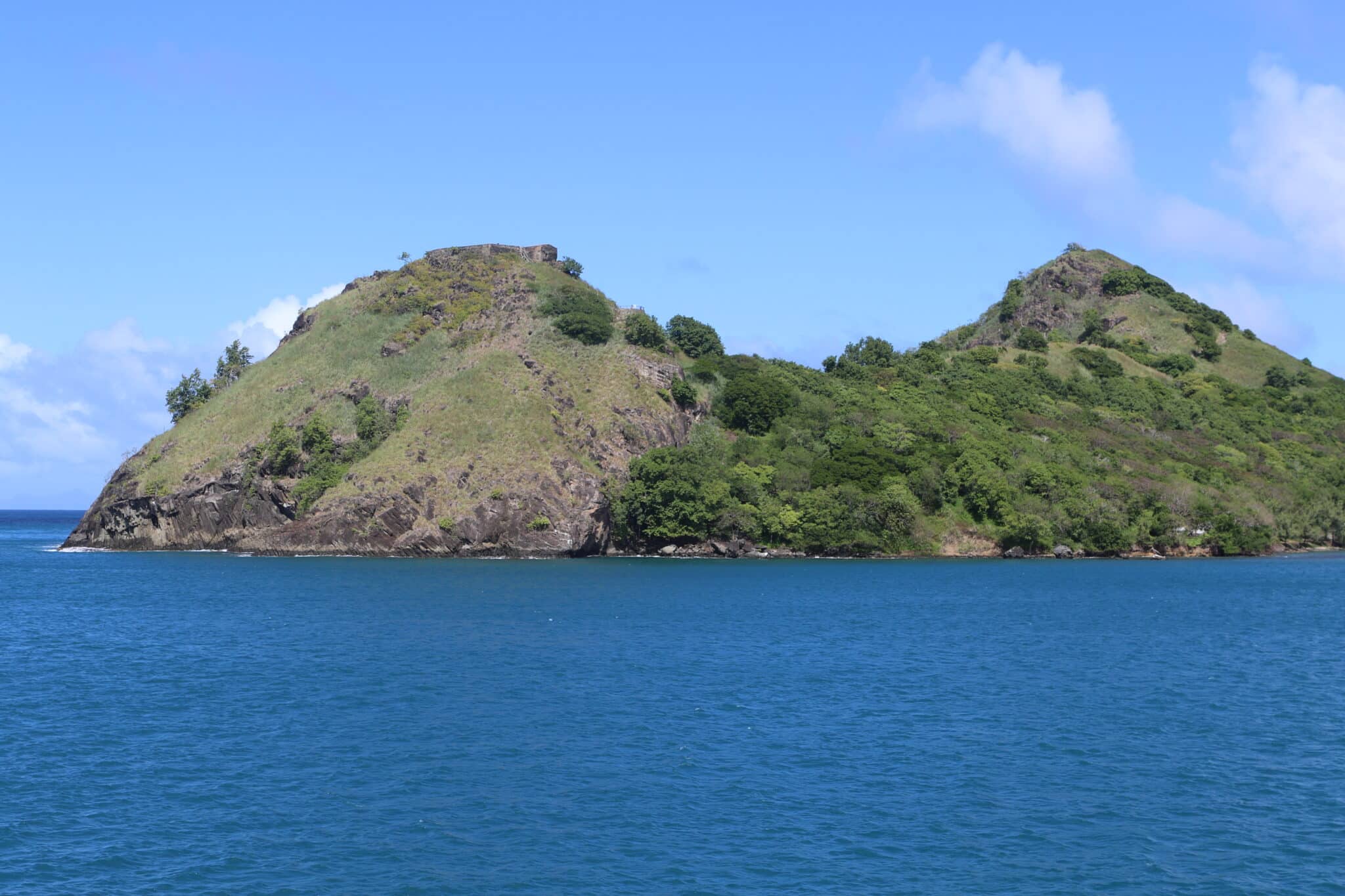
We opted to hire a private driver so we could explore the island on our own, taking in the island at our own pace. It’s a dense island, with 238 miles of rain forests, banana plantations, mountains, fishing villages and a drive-in volcano. Similar to the other islands we stopped at, the island has both French and British influence, largely because they both battled for possession. Ultimately, the English took control until their independence in 1979. He was a wealth of knowledge so I fired my questions his way.
We headed to Castries where we spent some time before taking the winding drive up the Morne – absolutely breathtaking.
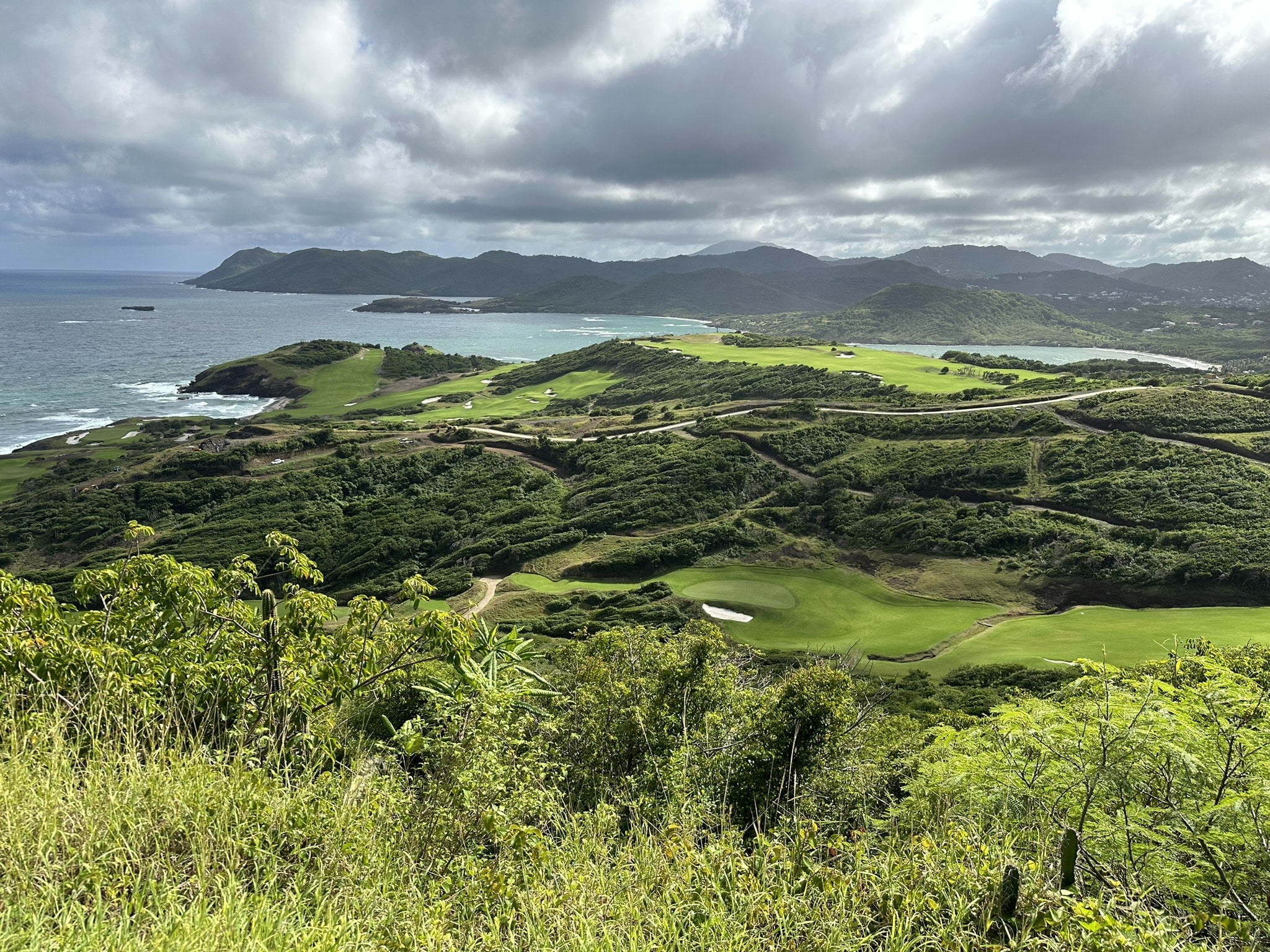
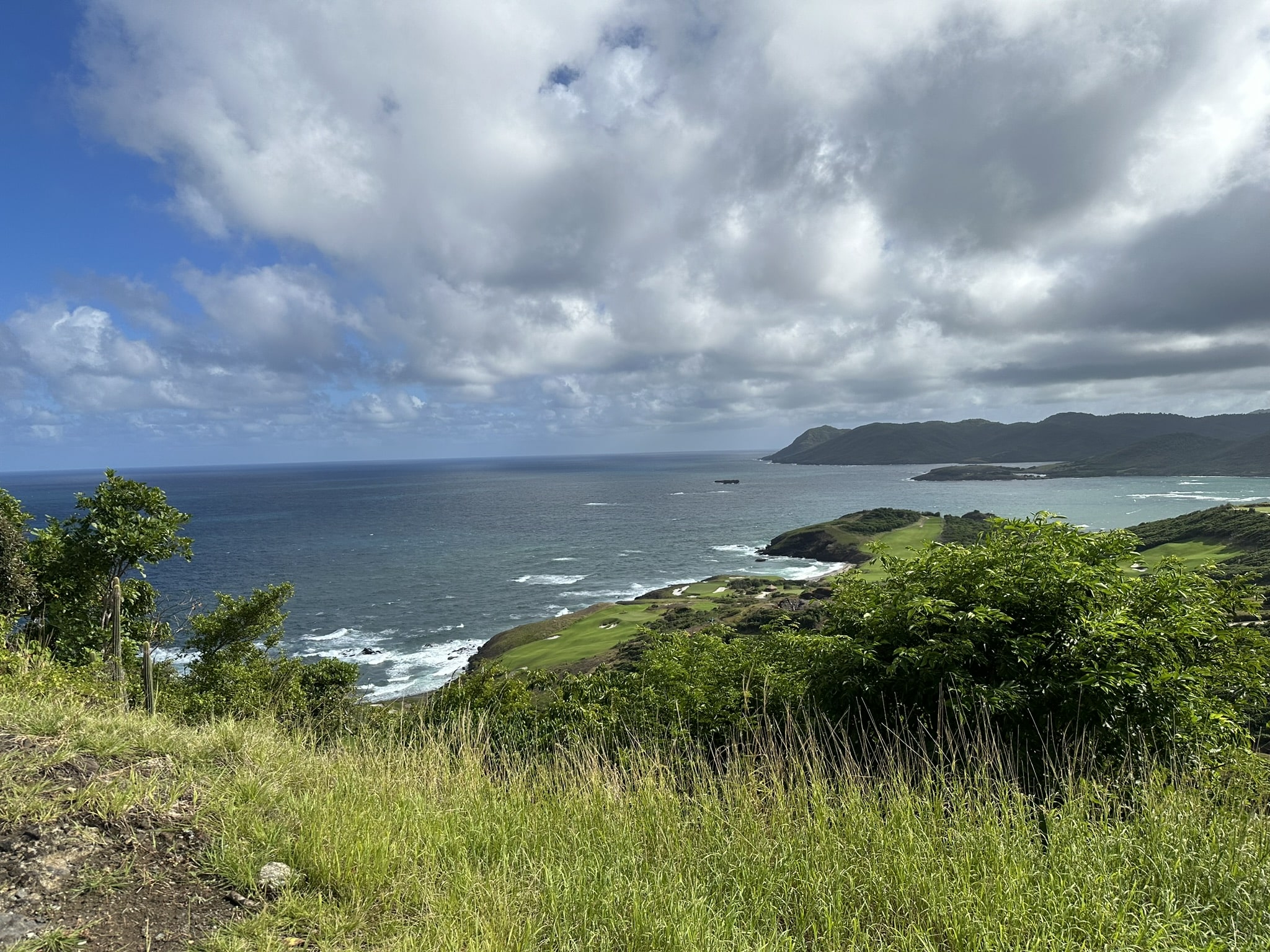
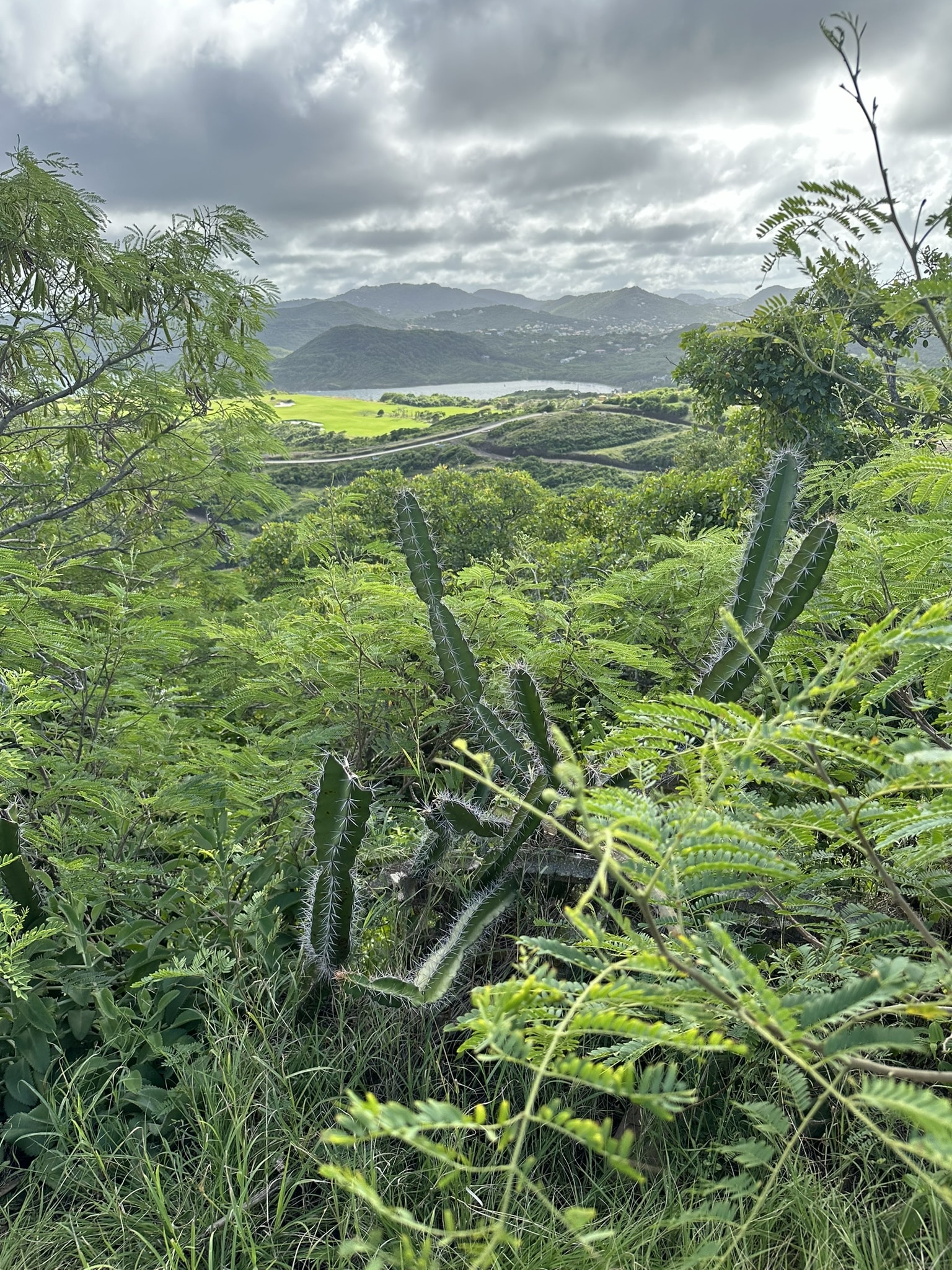
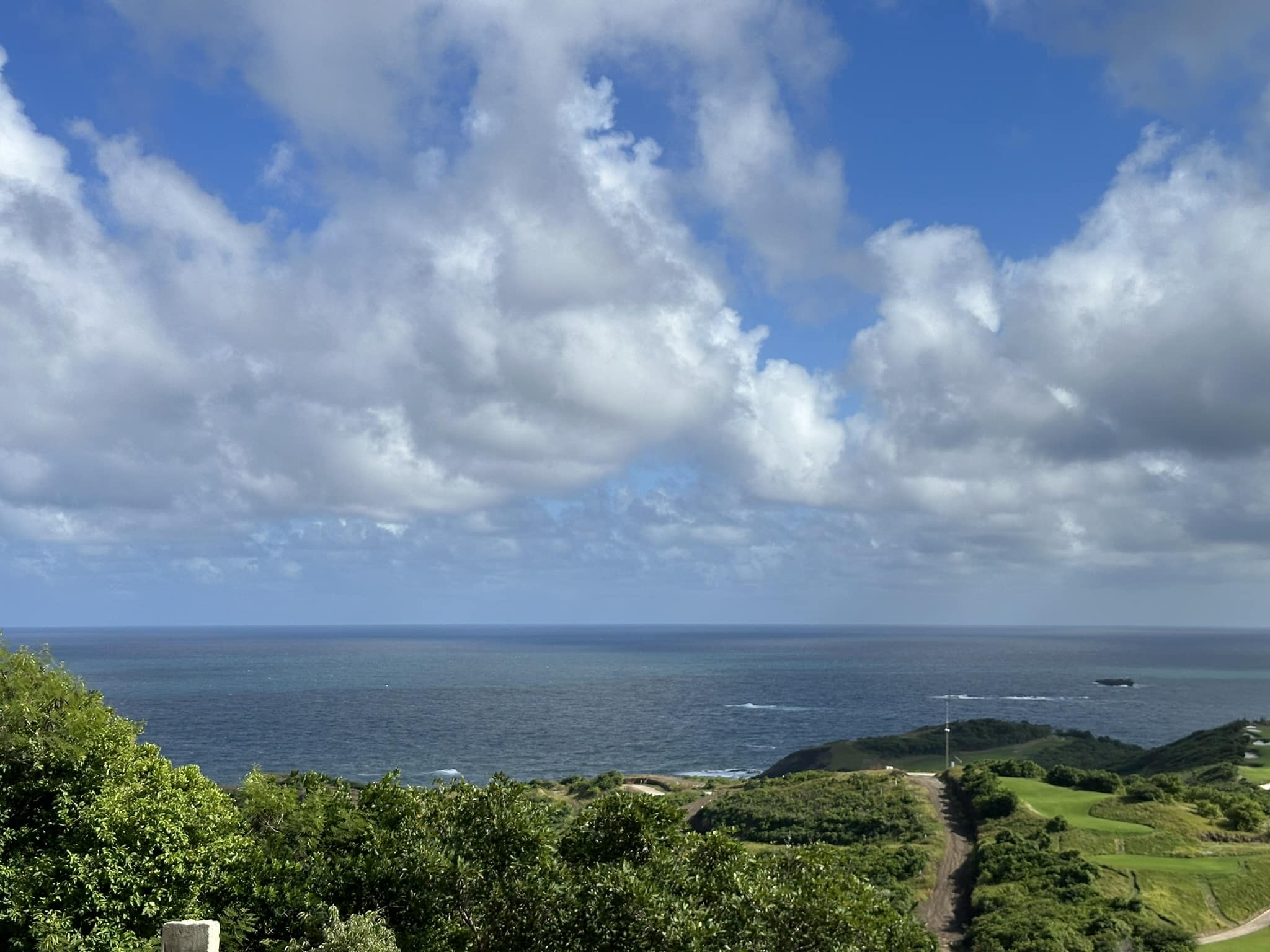
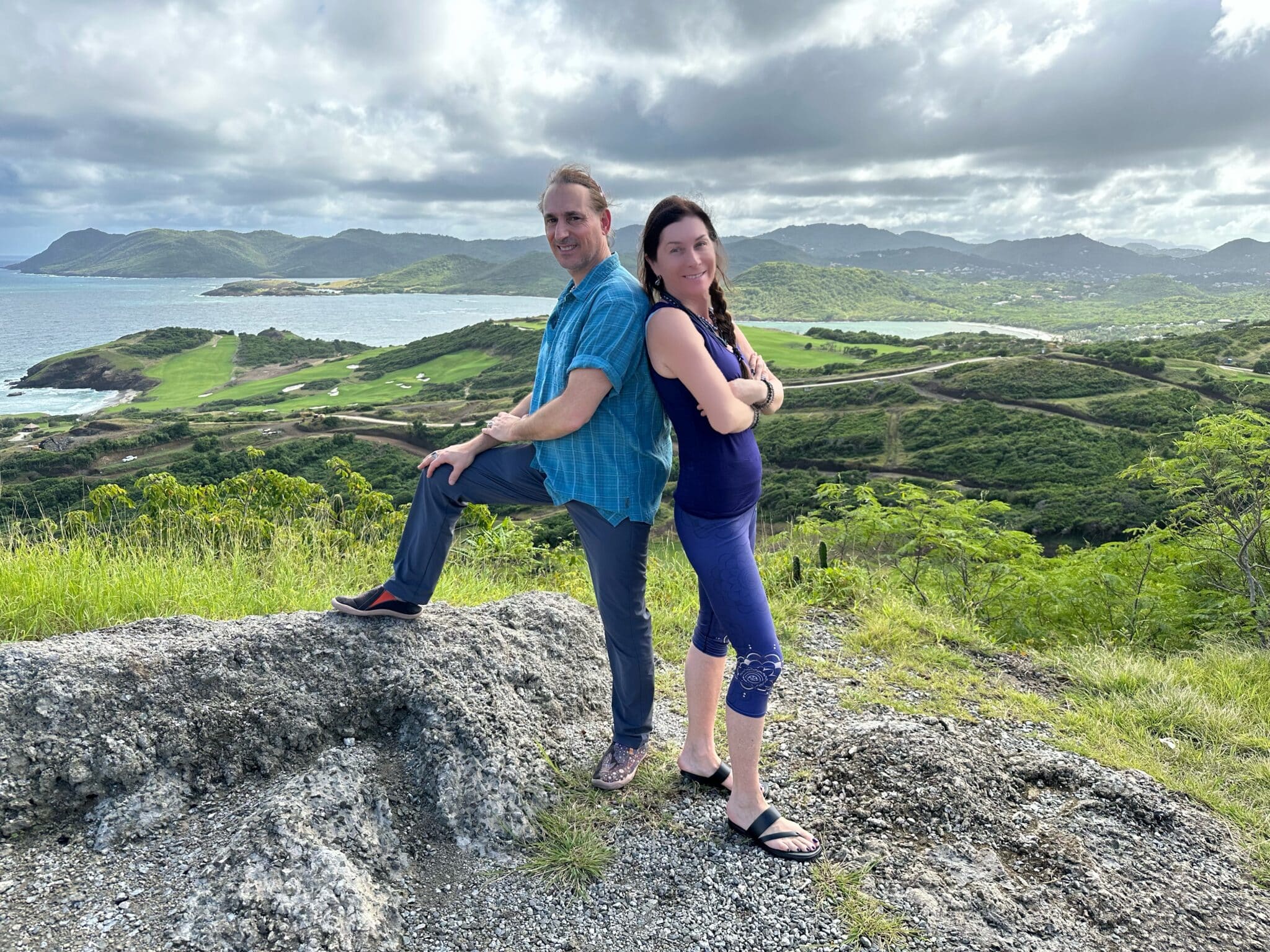
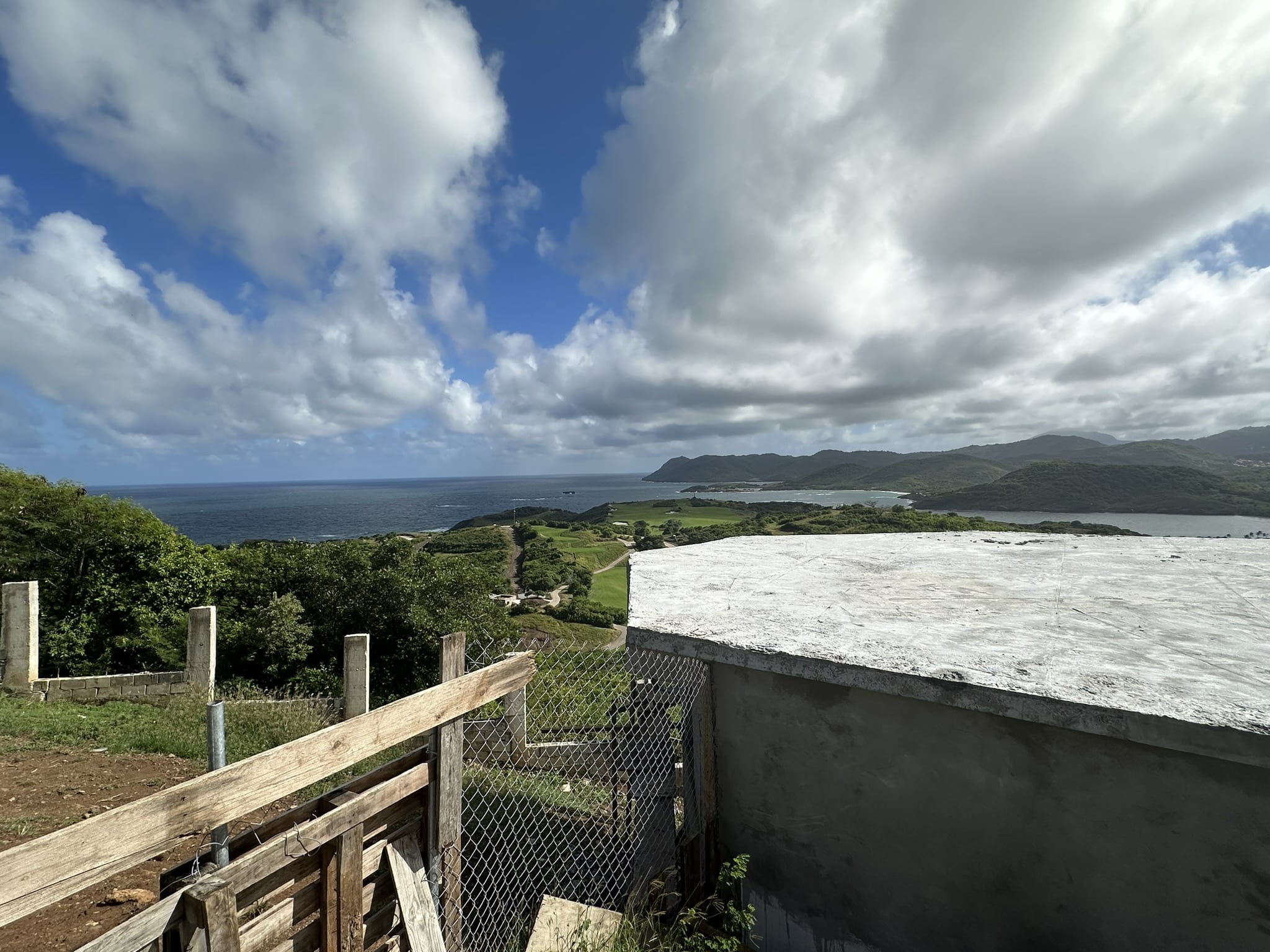
There’s great hiking on the island as well and if you have time to drive through (and stop at) some of the towns along the way, you’ll get a flavor for the local culture, architecture and lifestyle.
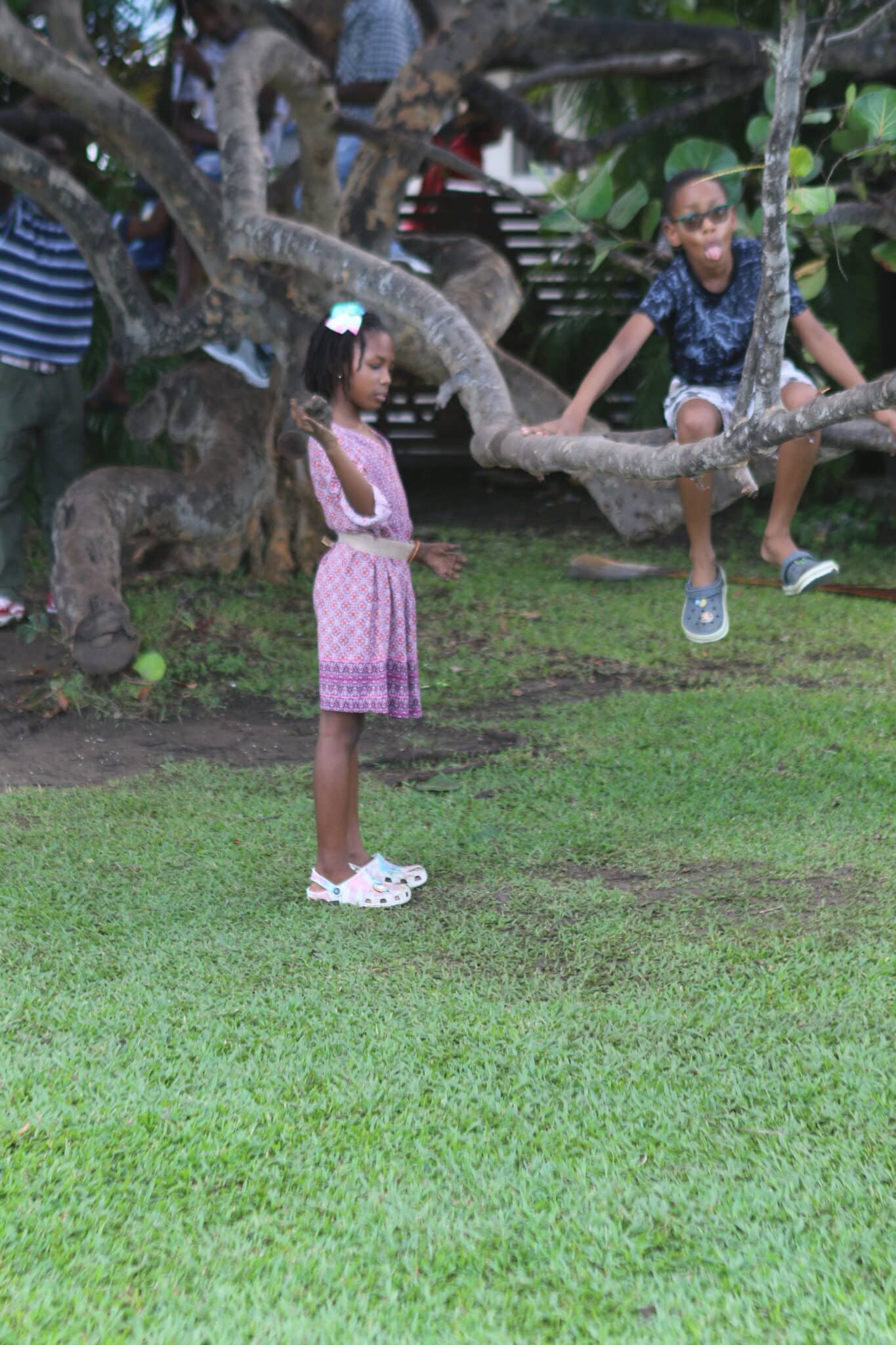
Colors were vibrant and alive in the town of Castries, and I sensed more French influence here than British although there was clearly a combination of both.
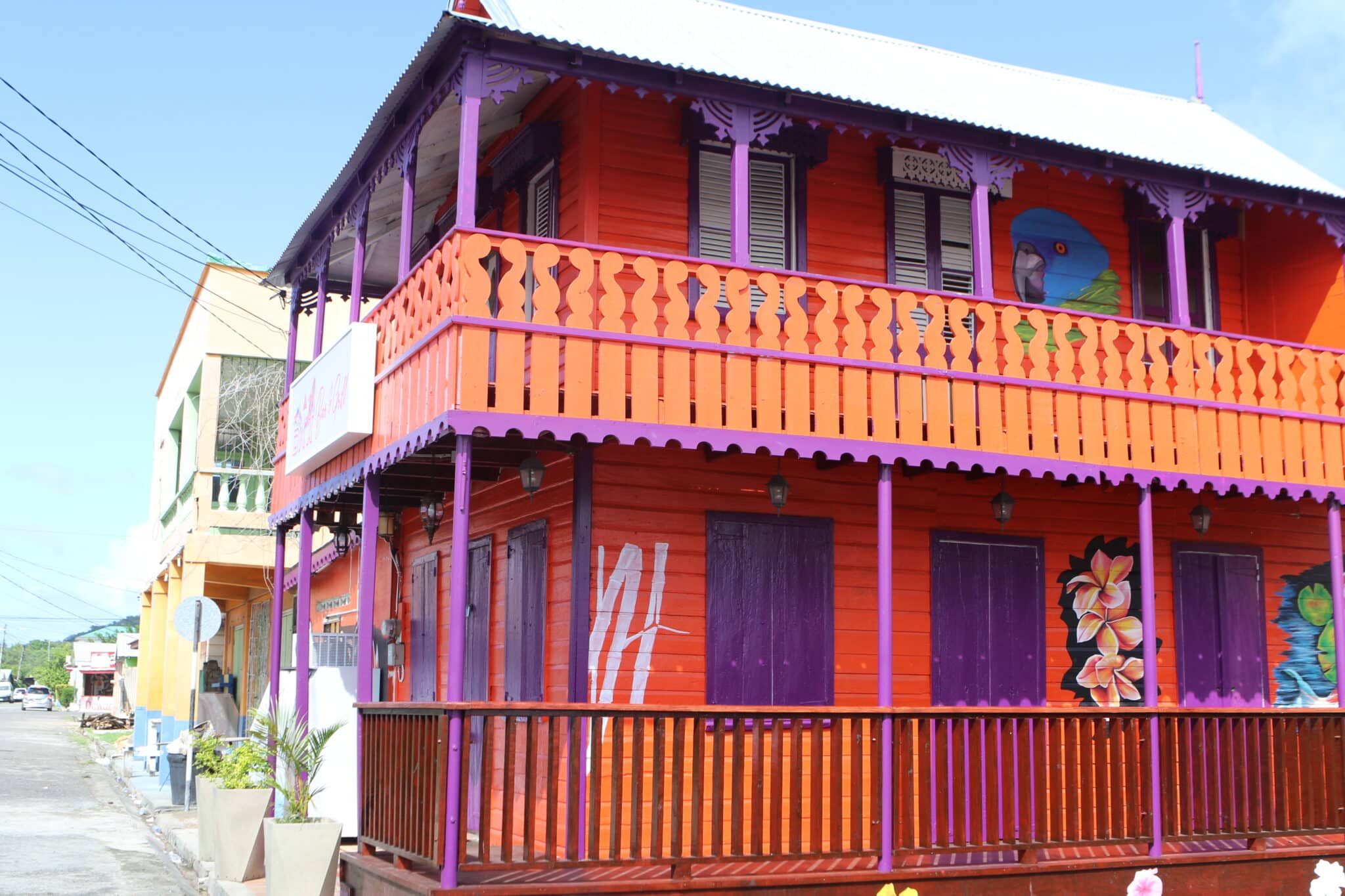
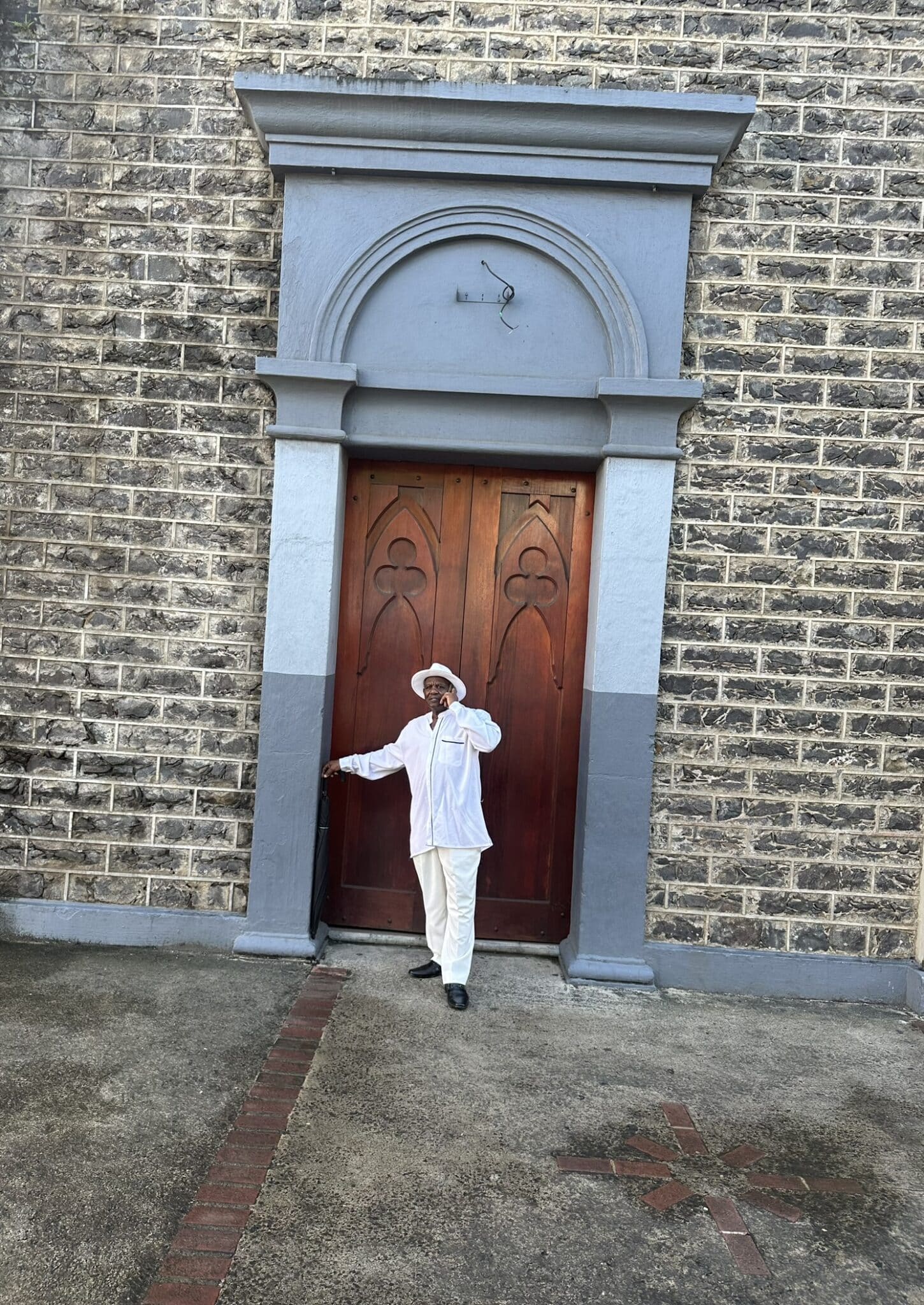
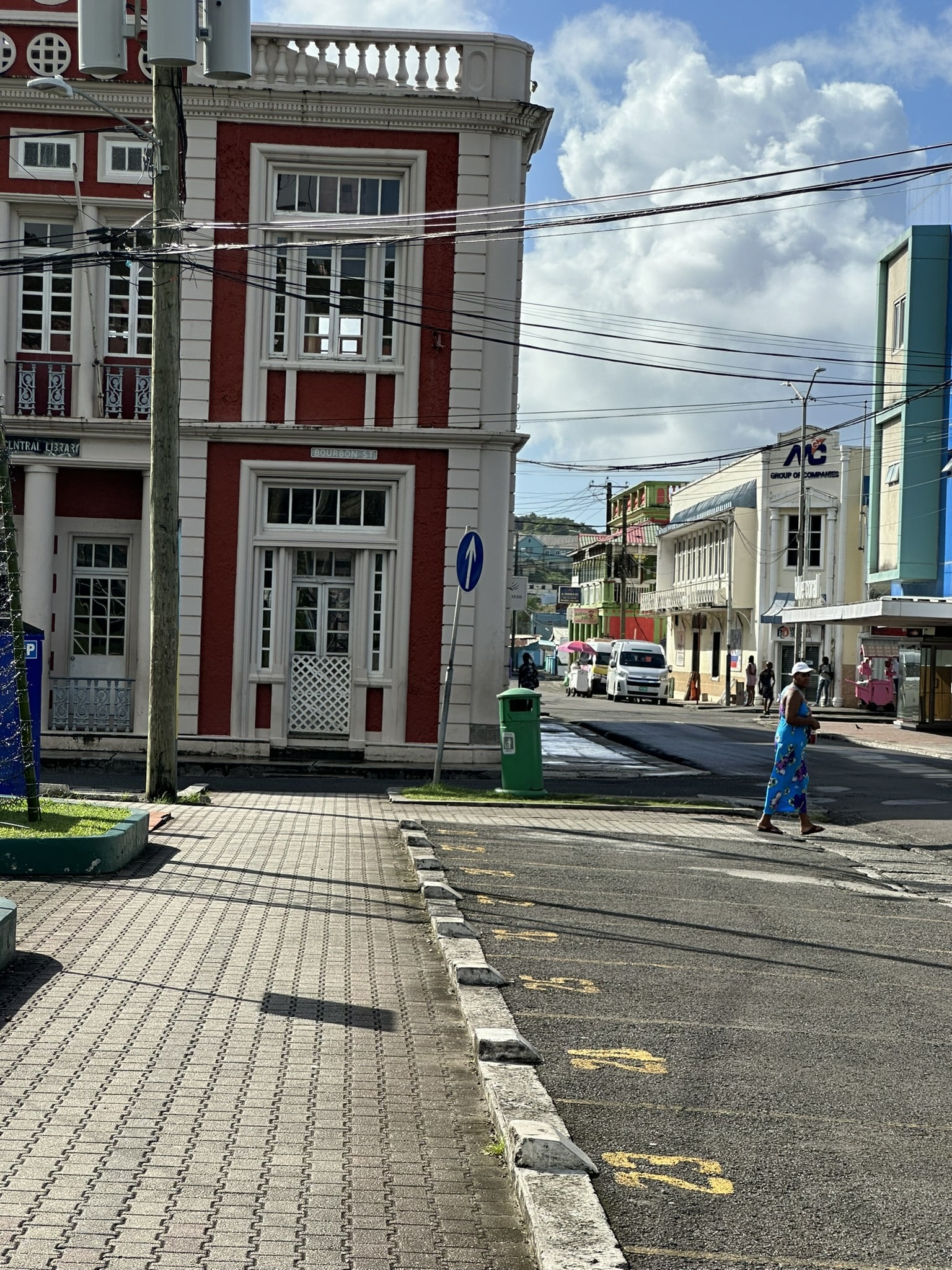
The harbor was also quite pretty and if you have time, you can walk through it and take in some of the unique architecture scattered around the docks.
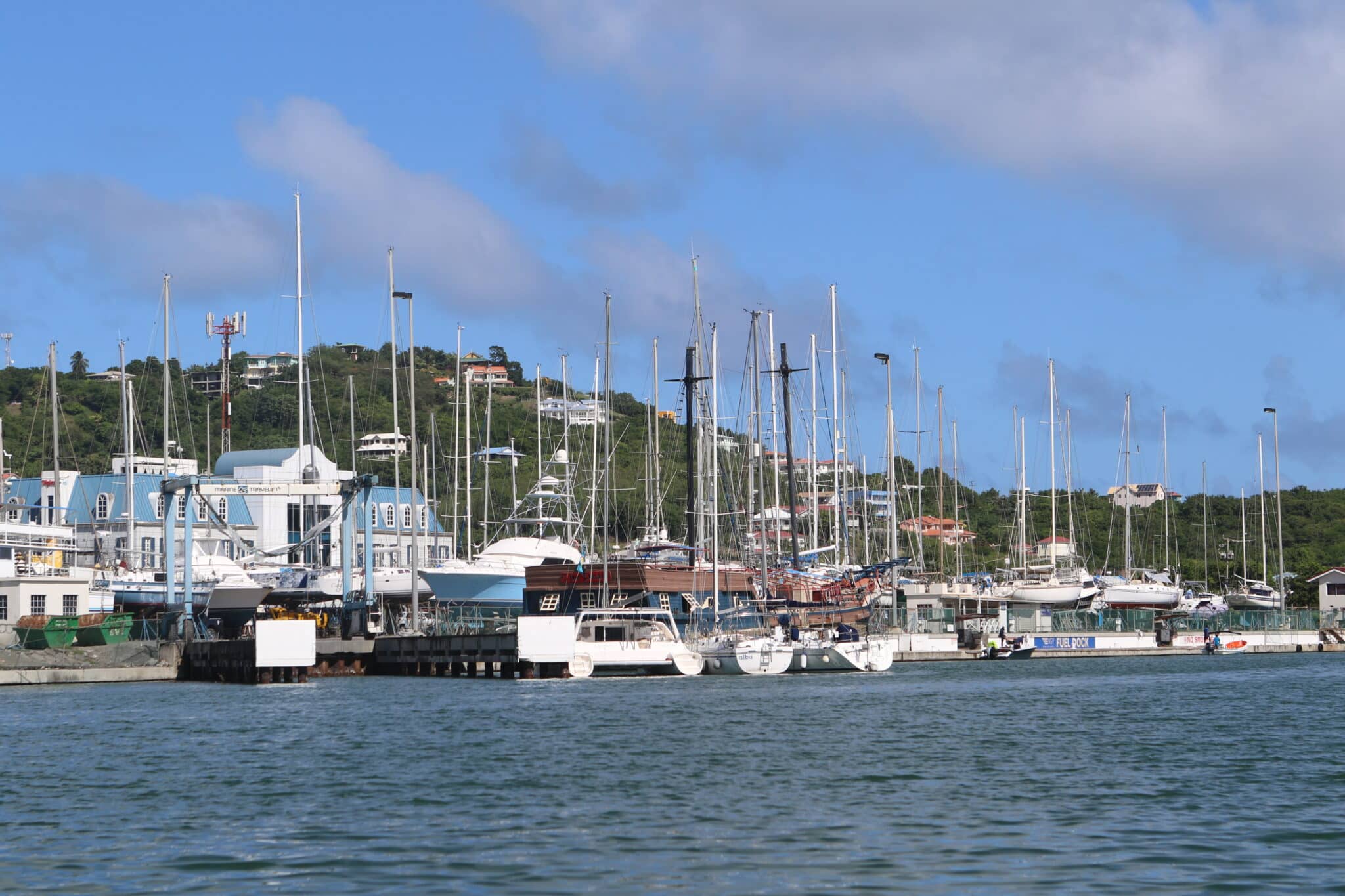
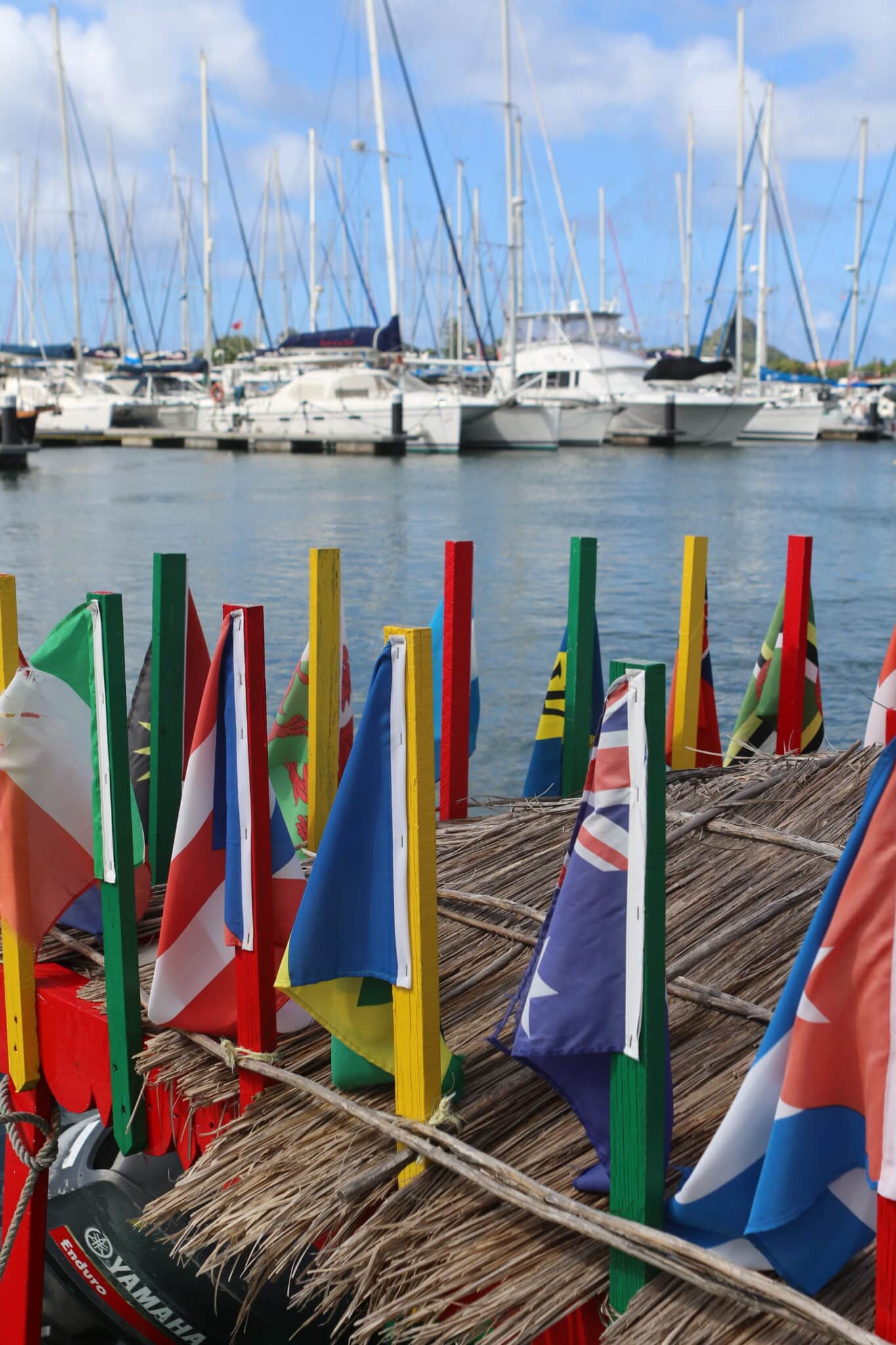
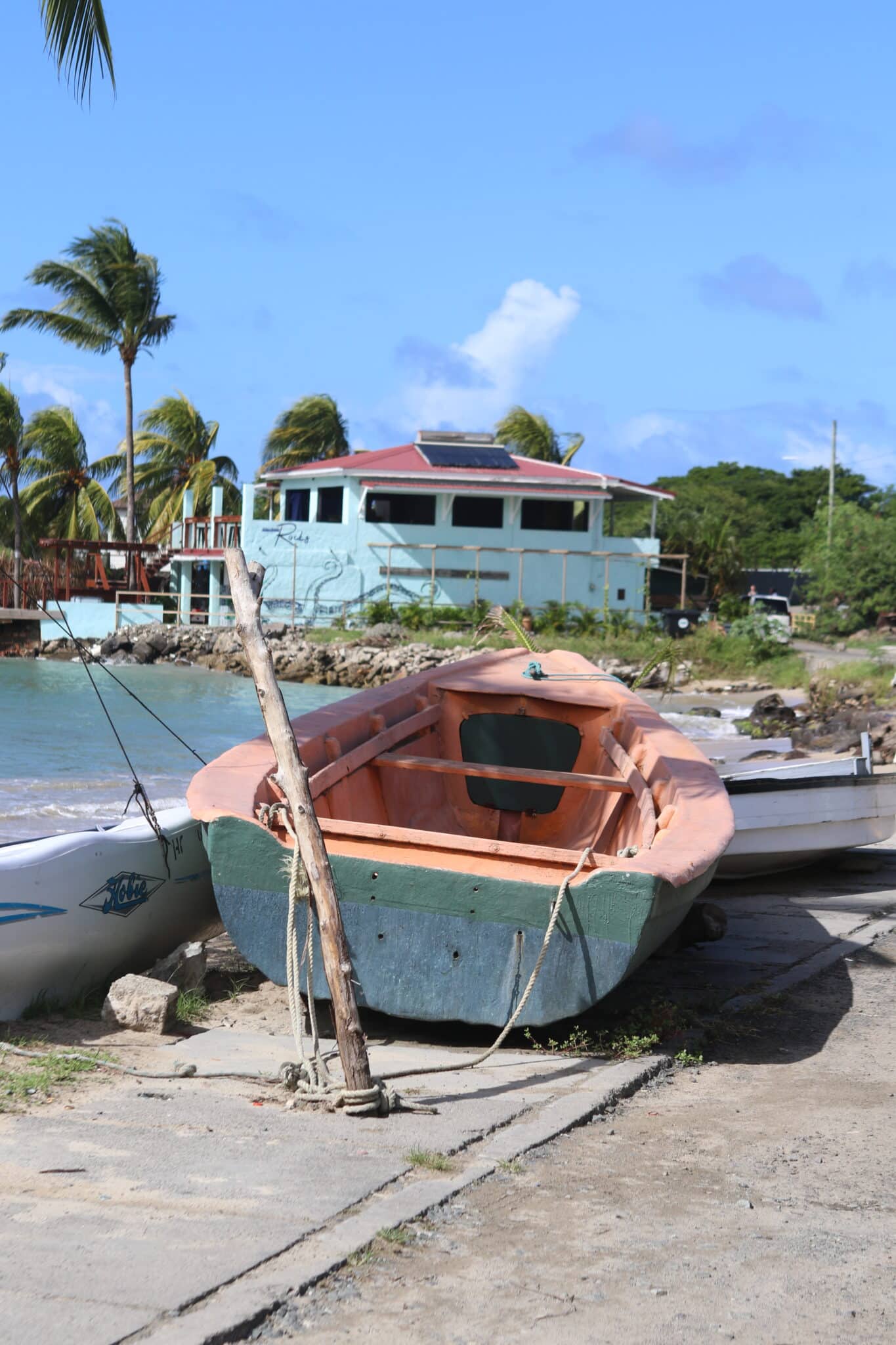
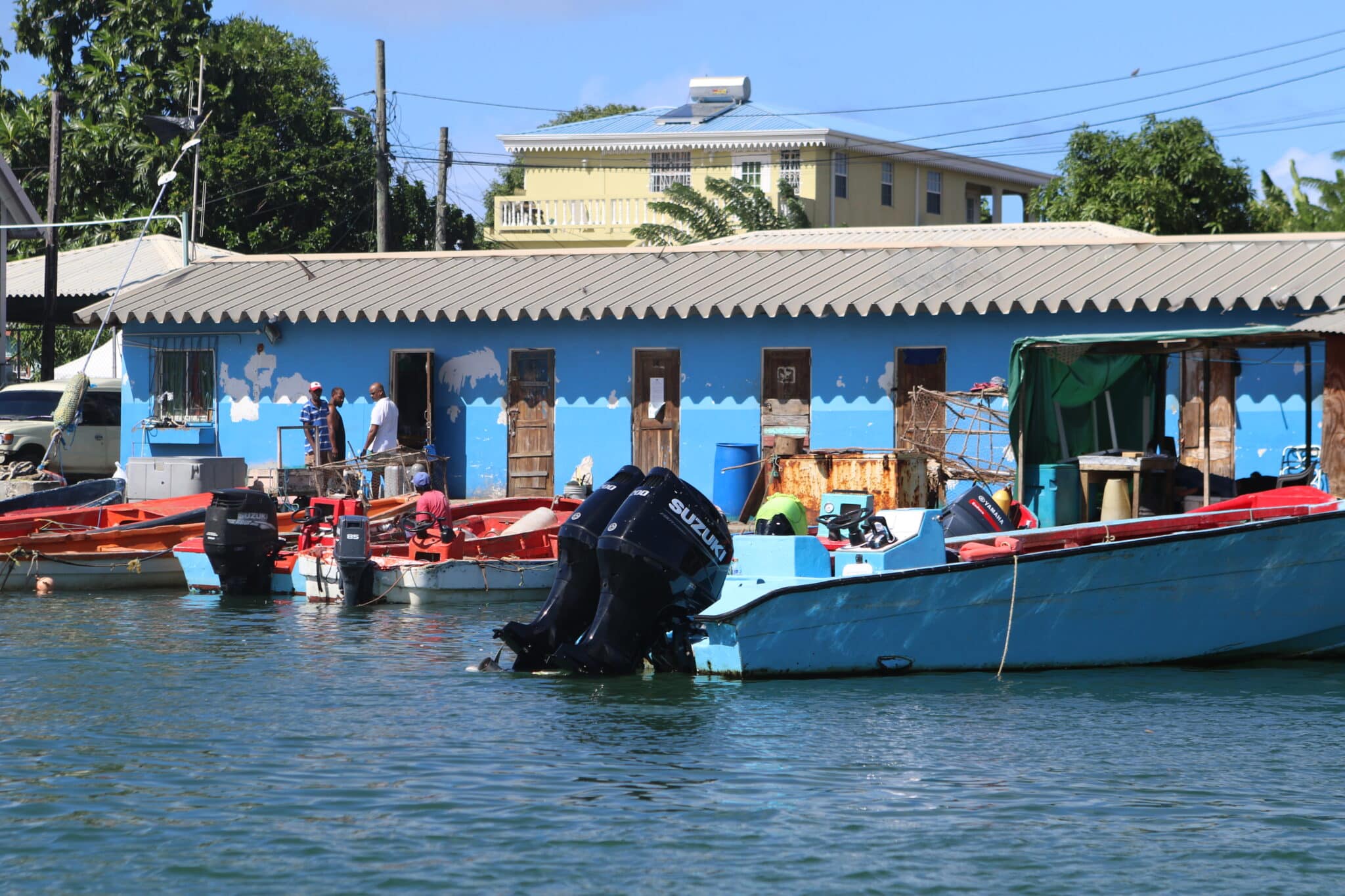
The beaches were also lovely, little inlets where you can get some alone time away from tourists and crowds.
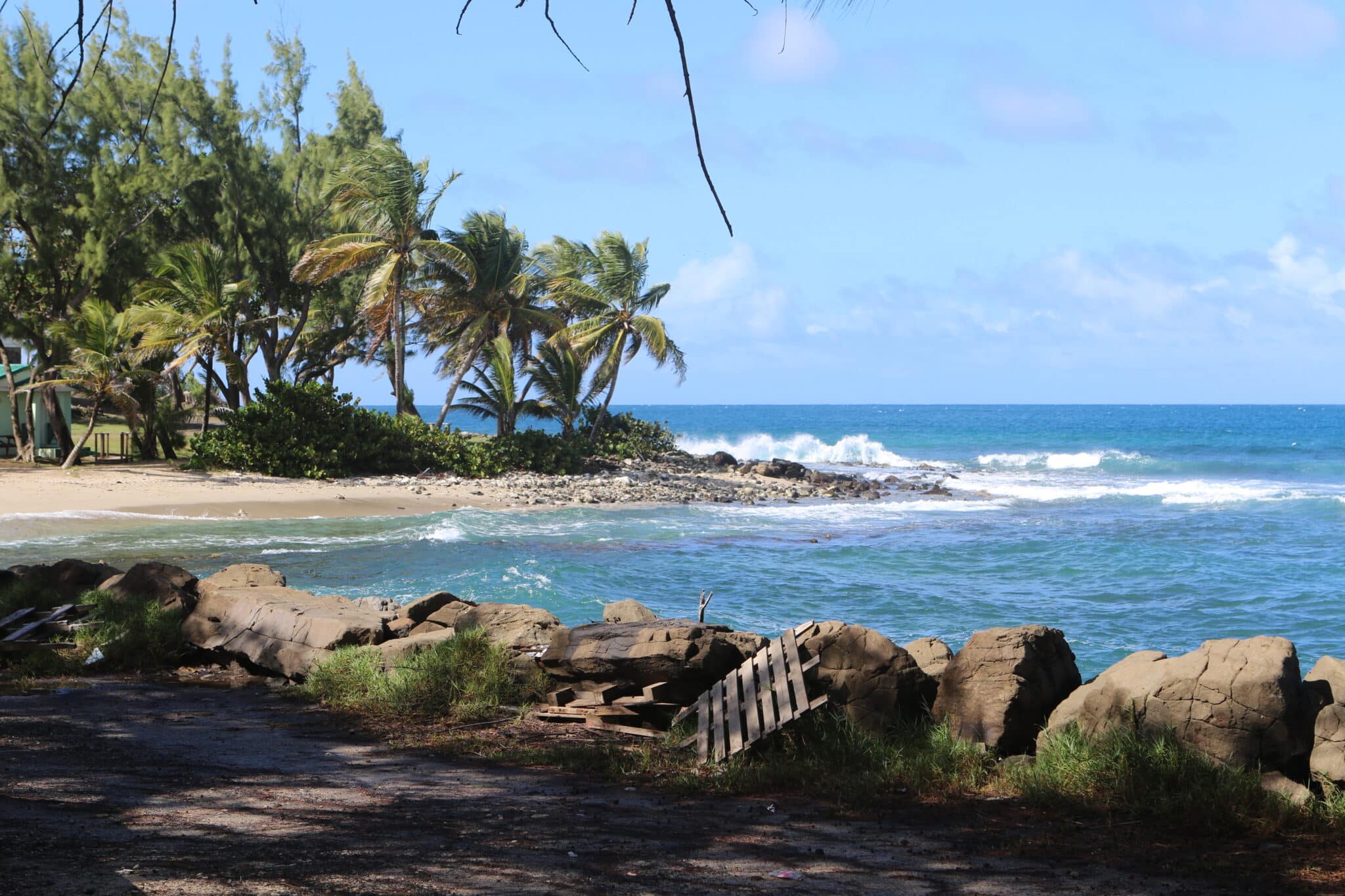
Nearby (where the above photo was shot), you’ll find the Sandals Grande St. Lucian Spa & Beach Resort. We usually opt for independent properties rather than chains and to this day, we’ve still never experienced a Sandals resort despite how many countries and islands I’ve been to. There’s also Morgan Bay Beach Resort, Hummingbird Beach Resort and Smugglers Cove Resort & Spa as well for those who want upscale options. You can also rent a luxury villa or condo, where units have fully equipped kitchens, 2-3 bedrooms and baths.
For food, check out the Lifeline Restaurant for creole cuisine (plenty of seafood options) which is located at the Hummingbird Beach Resort. There are great views here. Want to dine at a plantation? Then check out a place called The Still. For French food, check out Rainforest Hideaway which is literally on a dock. This is a luxurious experience and about a half an hour from the town of Castries. If you want a unique romantic experience, then this is it. For a table right on the water, Jacques Waterfront Dining offers French cuisine and is a great choice for fresh seafood. YUM!
Away from all things luxury and into all things nature, try a Rain Forest Sky Ride with Rainforest Adventure. There are tram rides, gondolas and zip lines (ten lines), and also walking trails between the lines as well. There are lots of incredible views, vegetation, flora and fauna to take in across 3,442 acres in the Castries Waterworks Rain Forest (located in Babonneau).
Although we didn’t have time to visit Soufriere (founded in 1746) , it’s the oldest town in Saint Lucia, so if you have time, it’s worth going. There are botantical gardens (with mineral baths apparently) and working plantations nearby and in the market square, you’ll find fun and brightly painted murals (a photographer’s dream). There’s actually a drive-in volcano (yes, really). Here, you’ll discover 20 or so pools oozing with sulfur and mineral deposits. You might have to plug your nose on occasion, but I was told that it is a unique experience on the island. There are also forest reserves and old estates worth exploring as well.
When we were in Castries, most of the shops were closed but there are duty free shops here, colorful architecture and the national landmark, Pigeon Island. A few people we were traveling with ventured out there instead of going around the island as we opted to do. One last but important thing worth mentioning are the Pitons, two gorgeous mountains which are known by many. They’re apparently also a UNESCO World Heritage Site. They are 2,461 and 2,619 in height respectfully. Those who are very adventurous (and in shape), you can climb if if you wish but with permission from the Forest & Lands Department.
Barbados
Barbados is an amazing place . . .period. We loved every minute of our stay, which was longer than any of the other islands. In fact, we extended our stay to spend more time here. We were able to explore the entire island and it’s tough to say what region is our favorite since they each have their own unique flavor.
Although some say that it’s overrated, St. Nicholas Abbey is one of the most renowned attractions. Quite frankly, I wish I had more time there. The experience will take you back to yesteryear, but not just because of the antiquated furnishings, architecture and colonial underpinnings, but because it feels as if time has literally stood still.
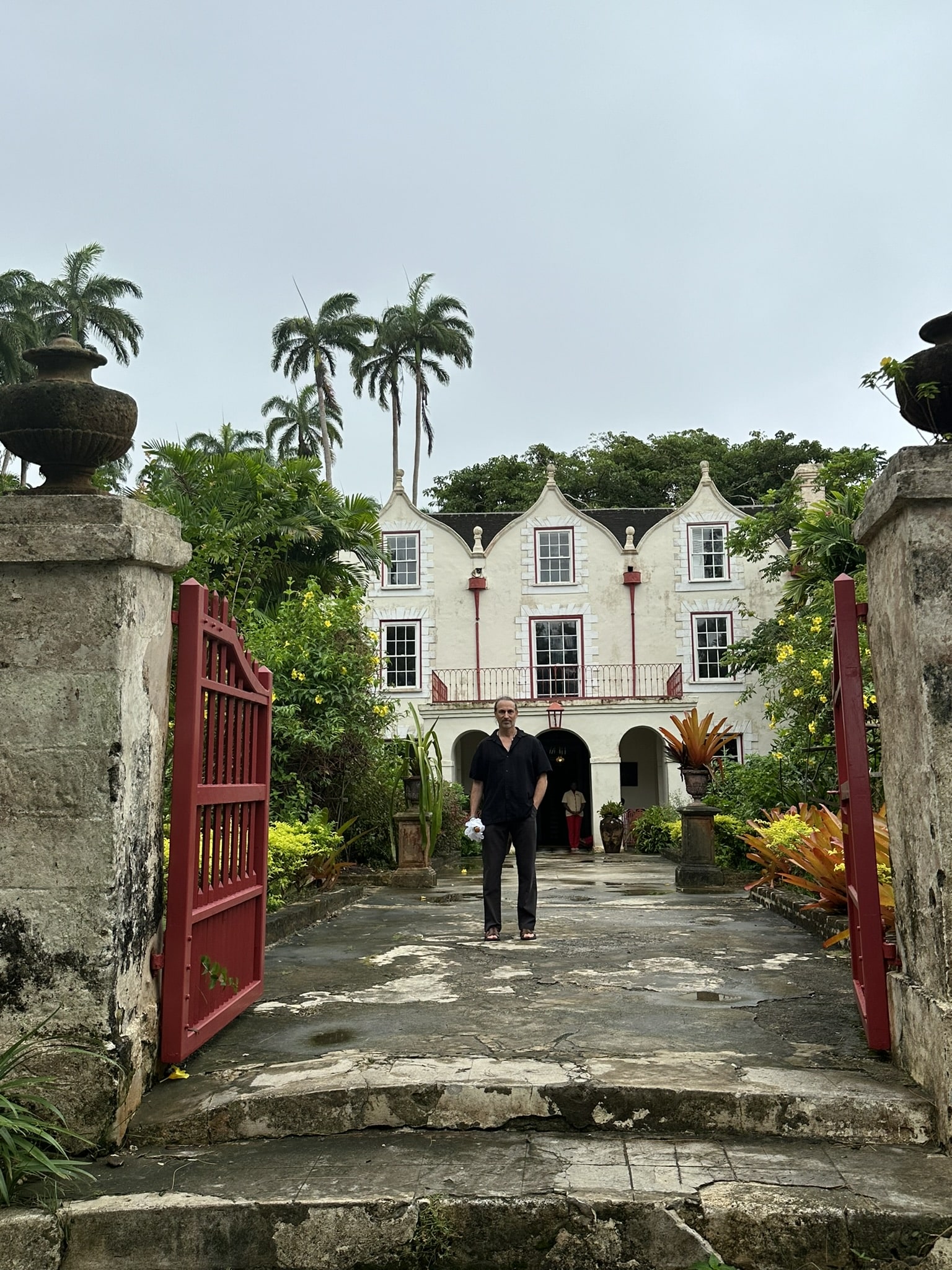
Anthony in front of the main house
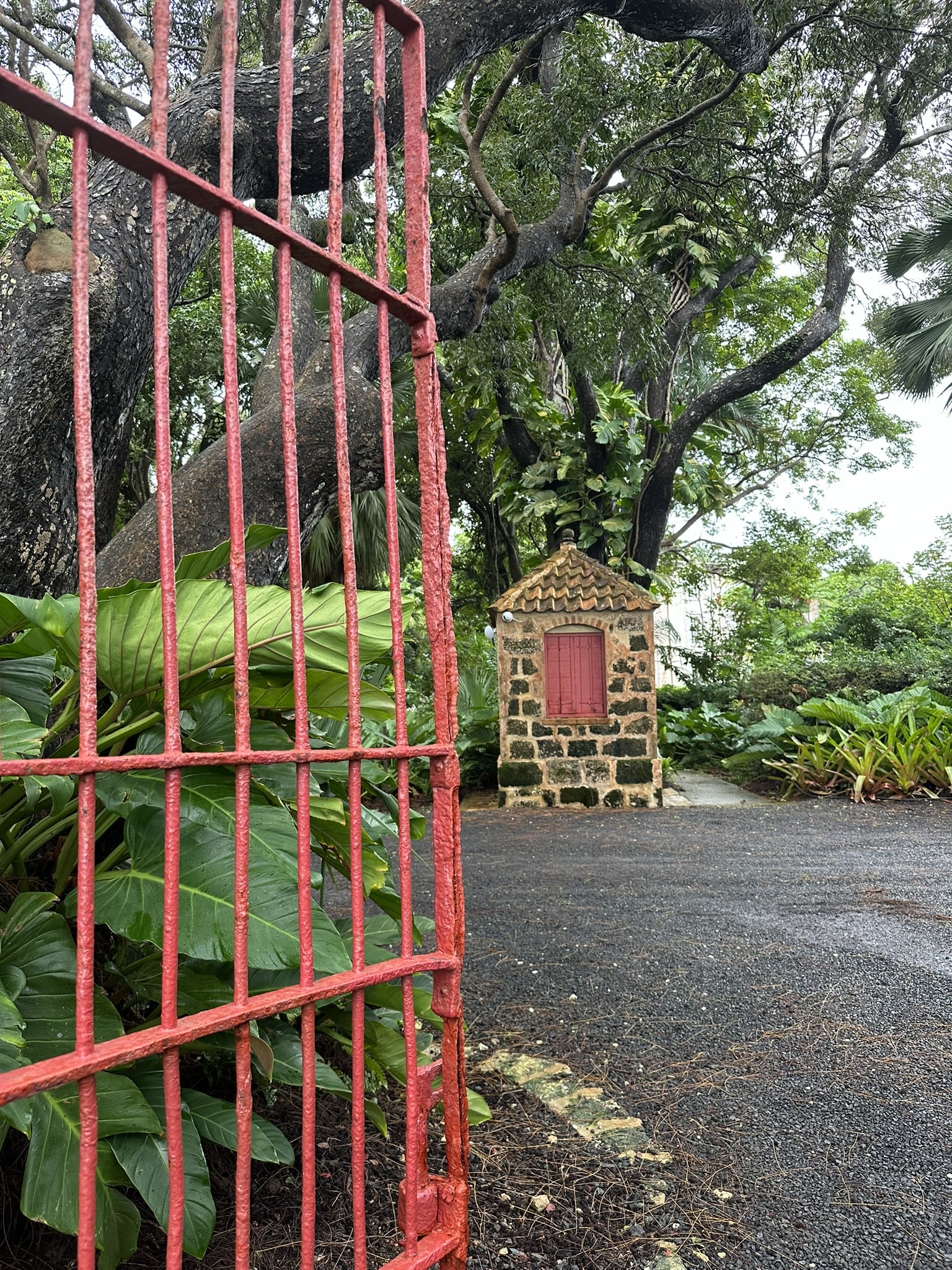
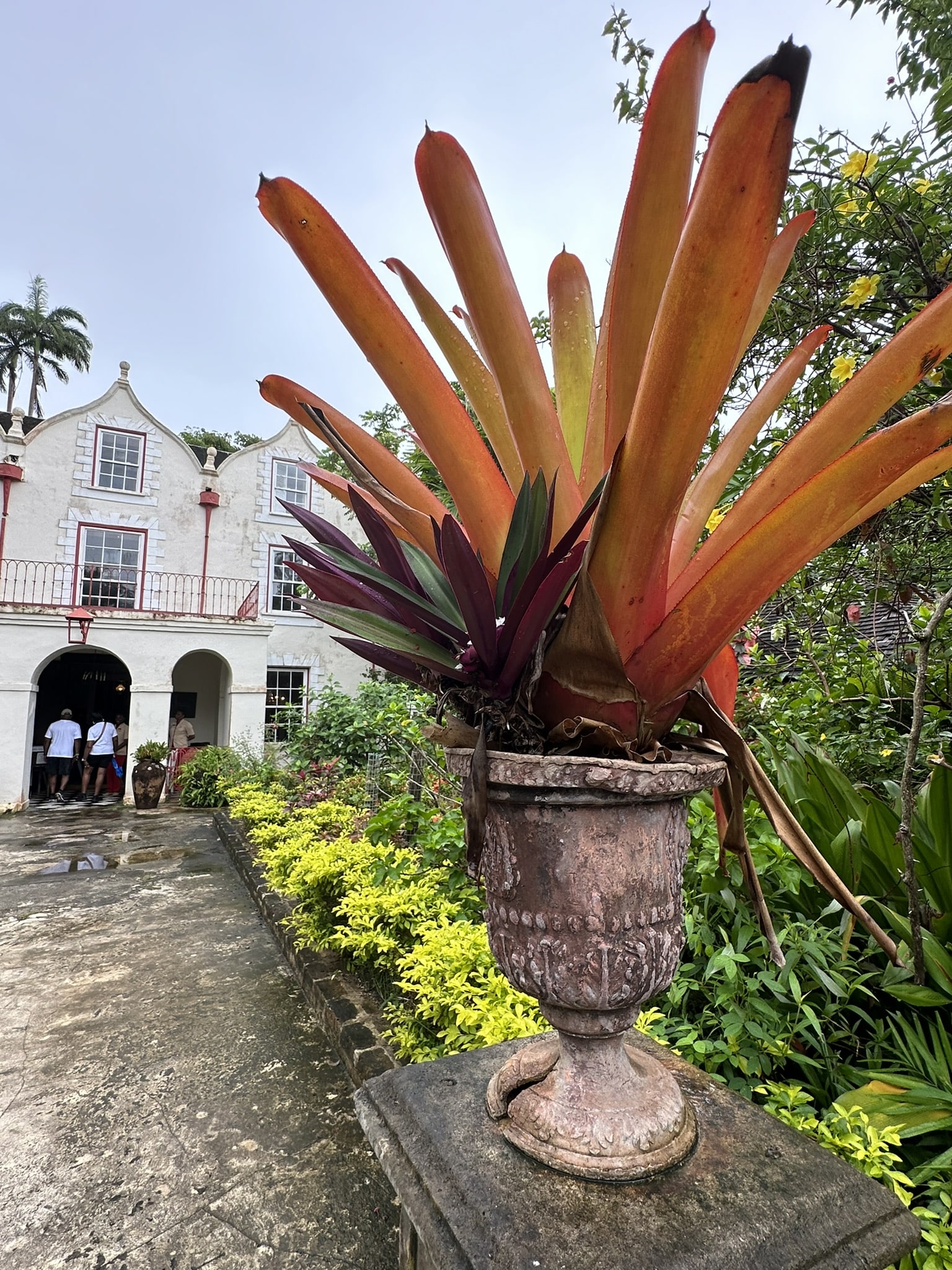
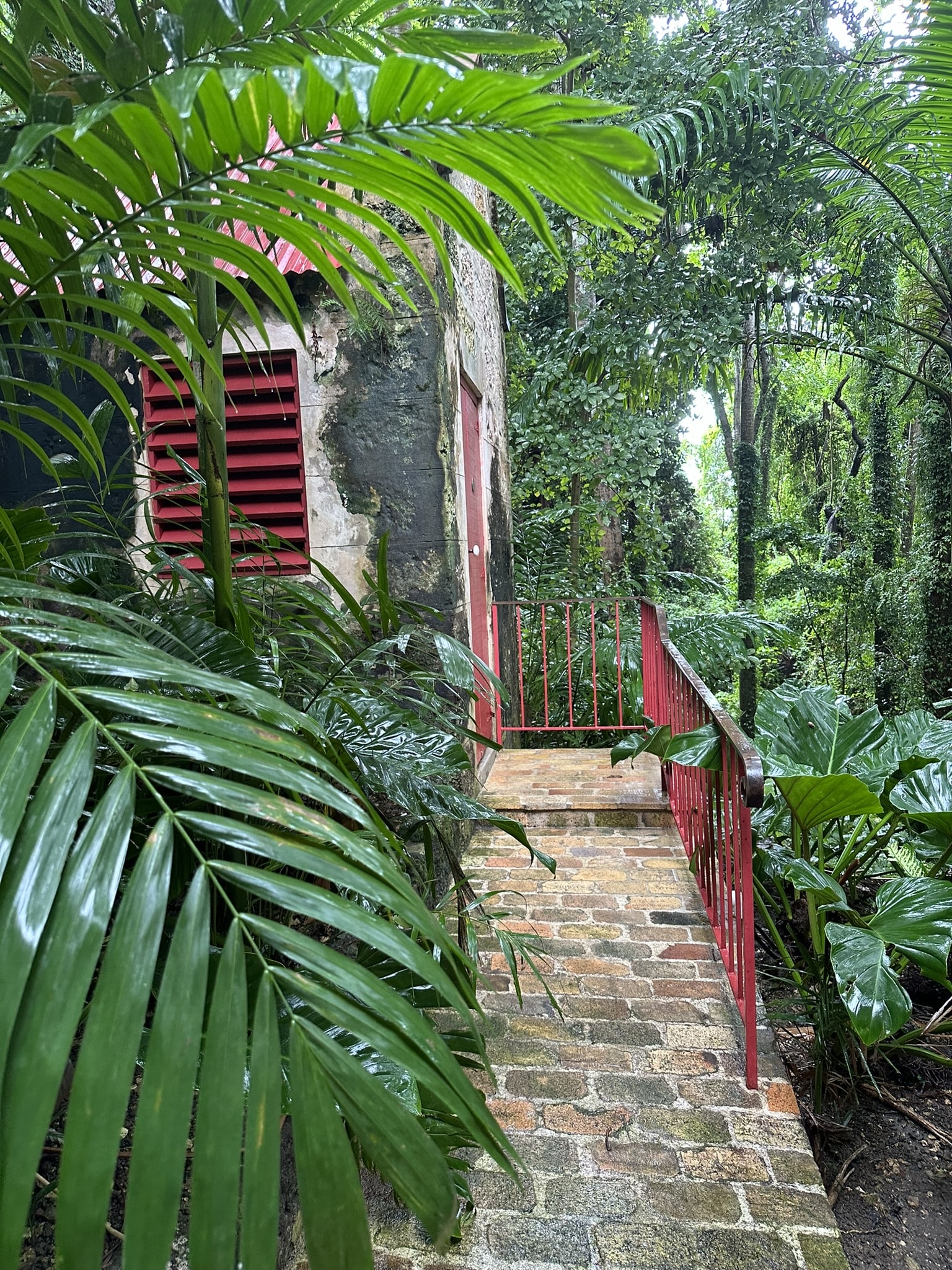
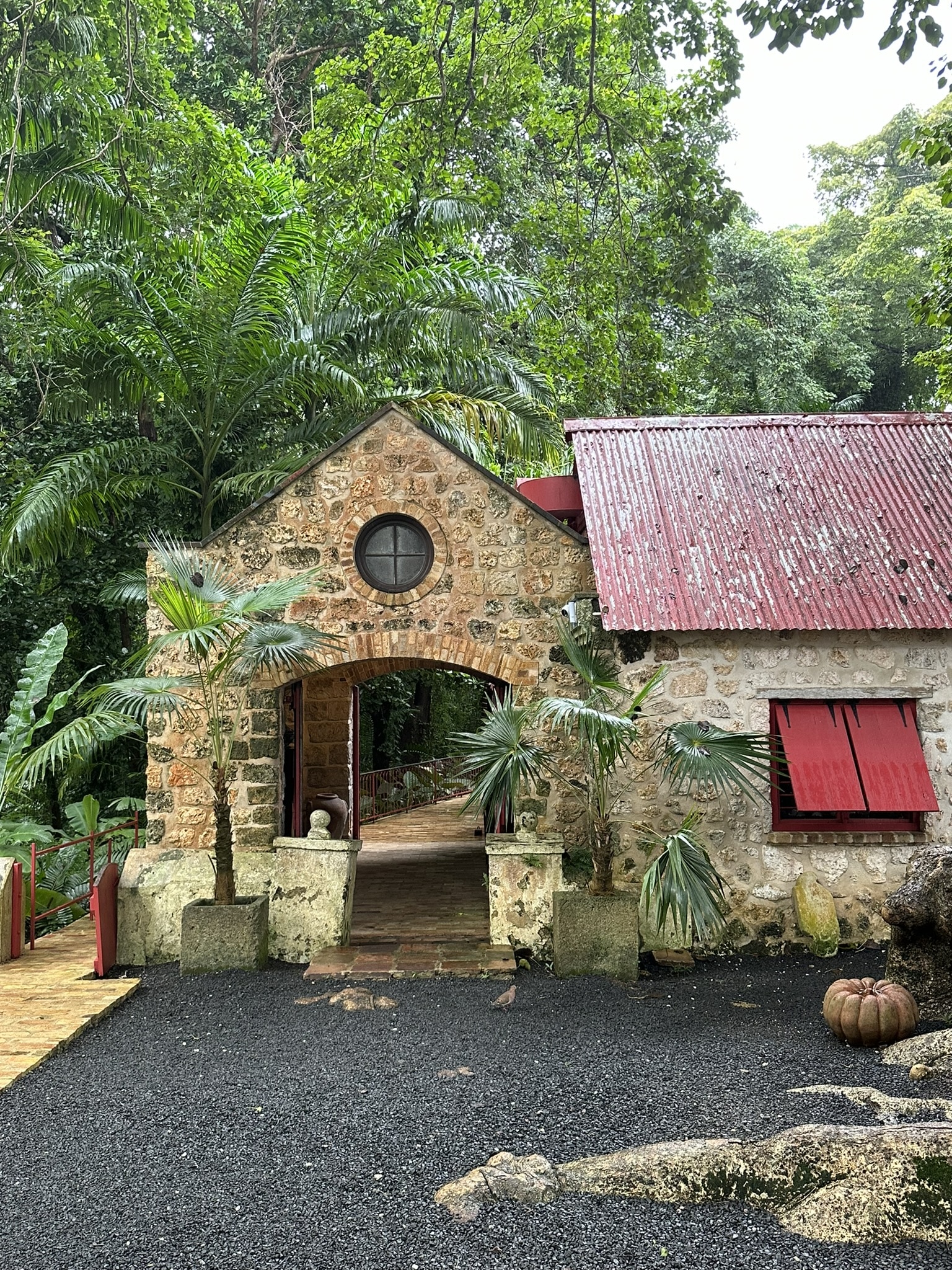
It was built in 1658 and it remains one of the island’s oldest surviving plantations. There are over 400 acres of rolling sugar cane fields, mahogany forests, tropical fauna and beautiful flowers brimming throughout. The main house is a Jacobean mansion and still in tact are the cornerstone chimneys and fireplaces. The place has a unique combination of Dutch and English influence and is apparently one of only three remaining Jacobean mansions in the Western Hemisphere.
And of course, they make rum here — very delicious rum I might add.
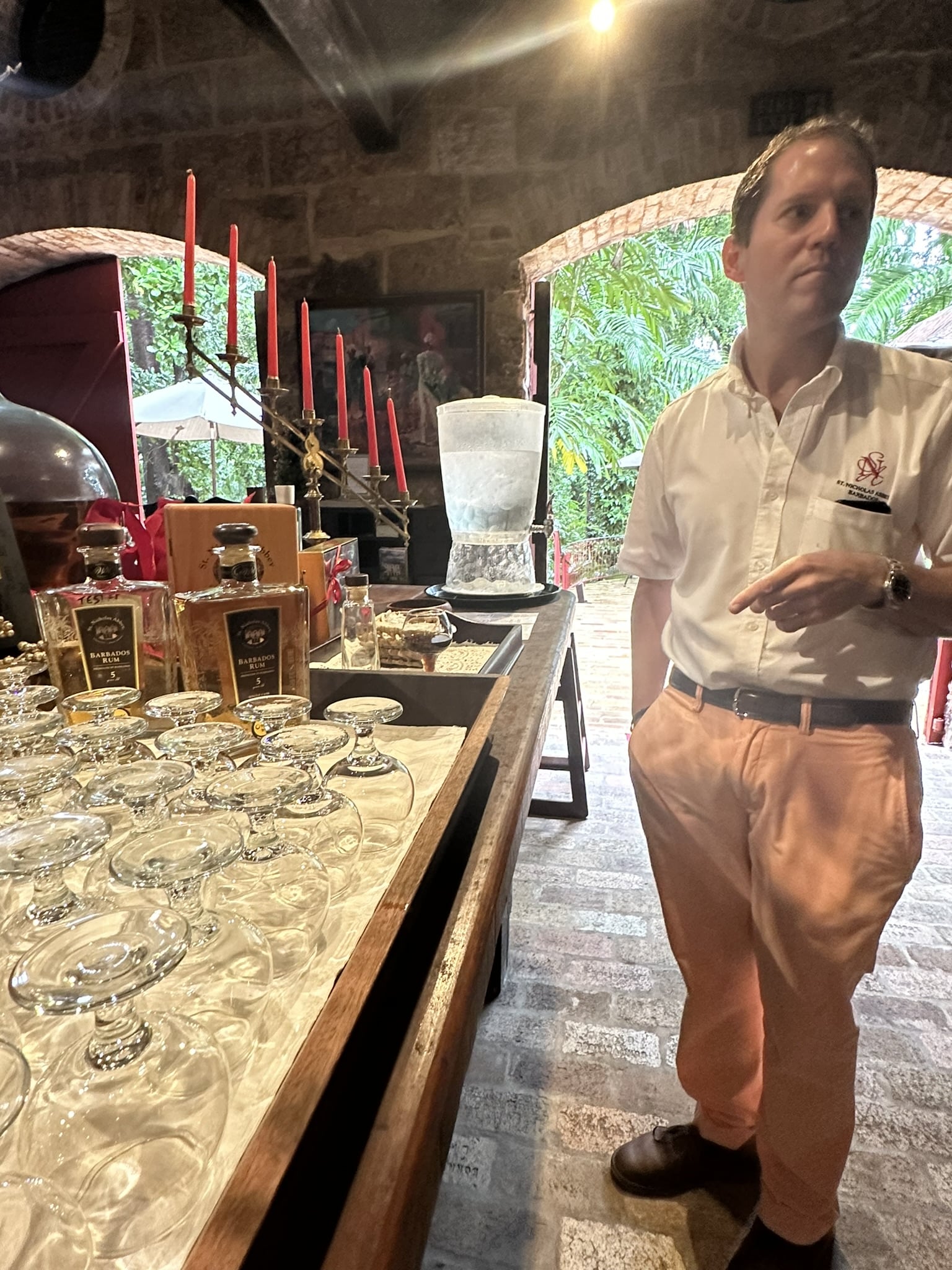
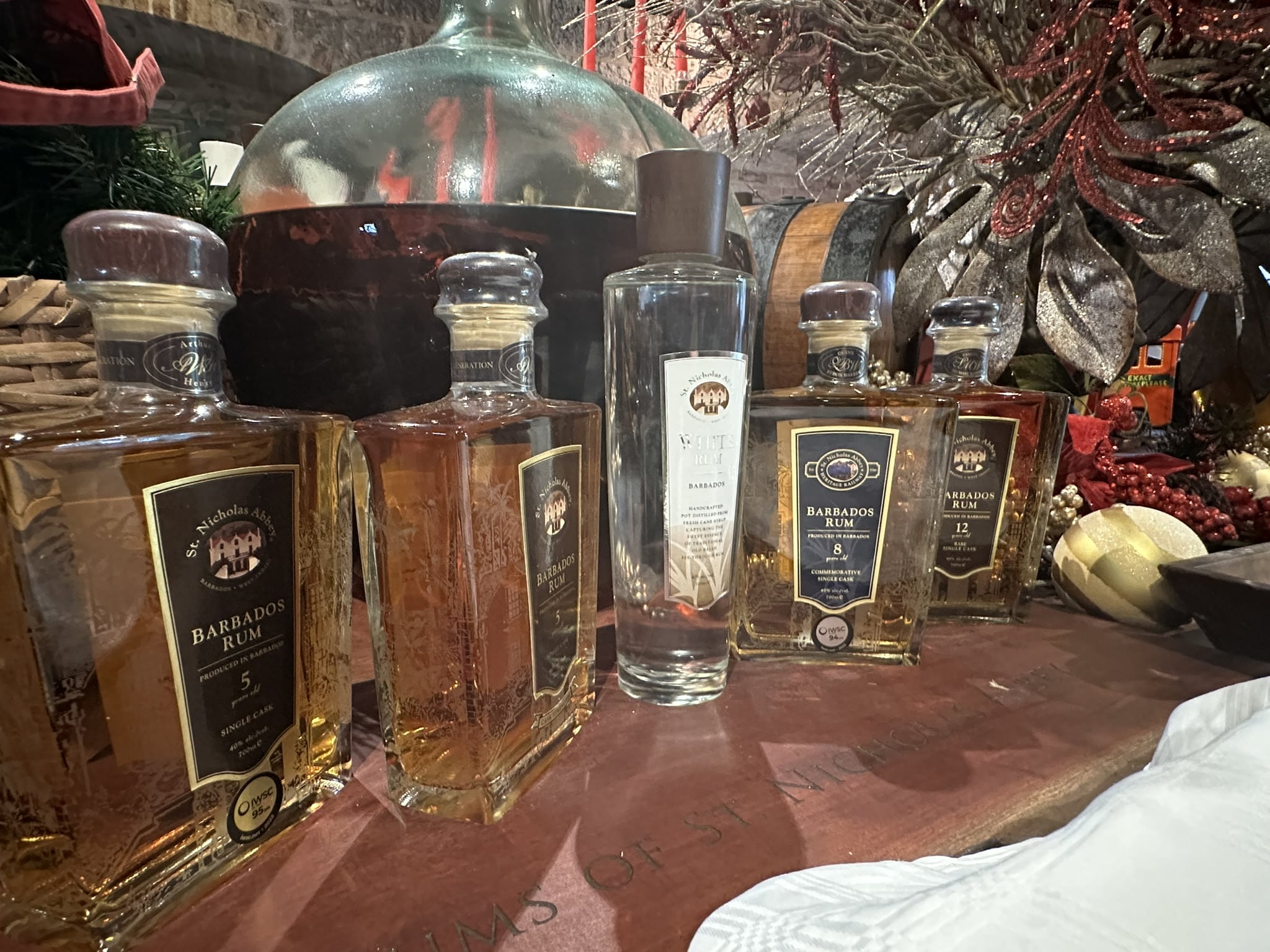
Silver Rock Beach is on the south coast in the parish of Christ Church. Also referred to as Silver Sands, the beach with its high sandbanks has wrecked ships (or perhaps you could say ships no longer in use), all artistically and vibrantly painted. This lovely spot is nestled between South Point and Inch Marlow Point. Nearby, you’ll find the Silver Point Hotel.
It is also the home of Brian Talma and his deAction Surf Shop, who represented Barbados many years ago at the Seoul Korea Olympics and was also in the 1992 Olympic games in Barcelona Spain. He’s had a string of top 10 finishes and since then has been running deAction Beach House and Studio, which as you can see, has a great vibe.
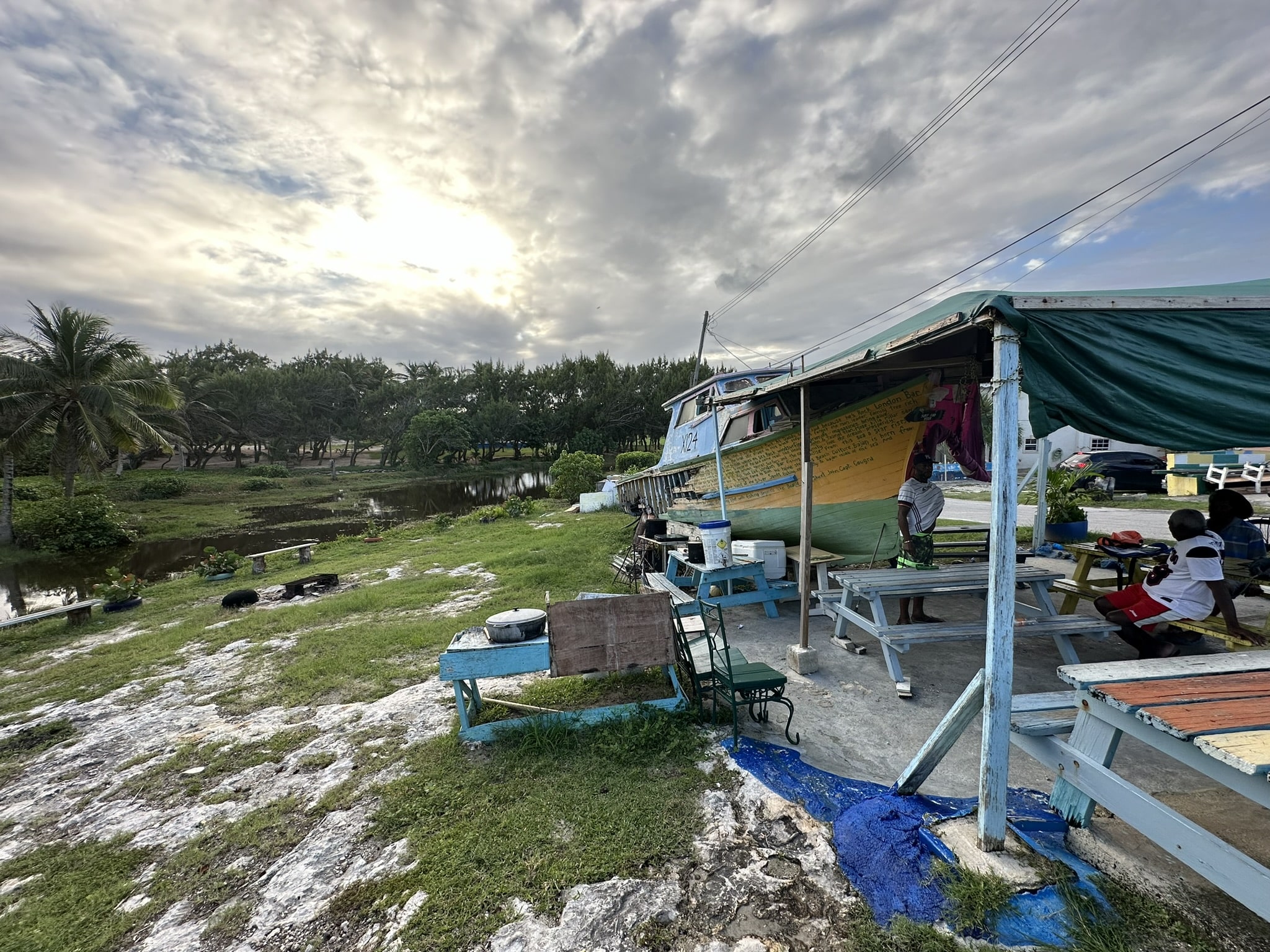
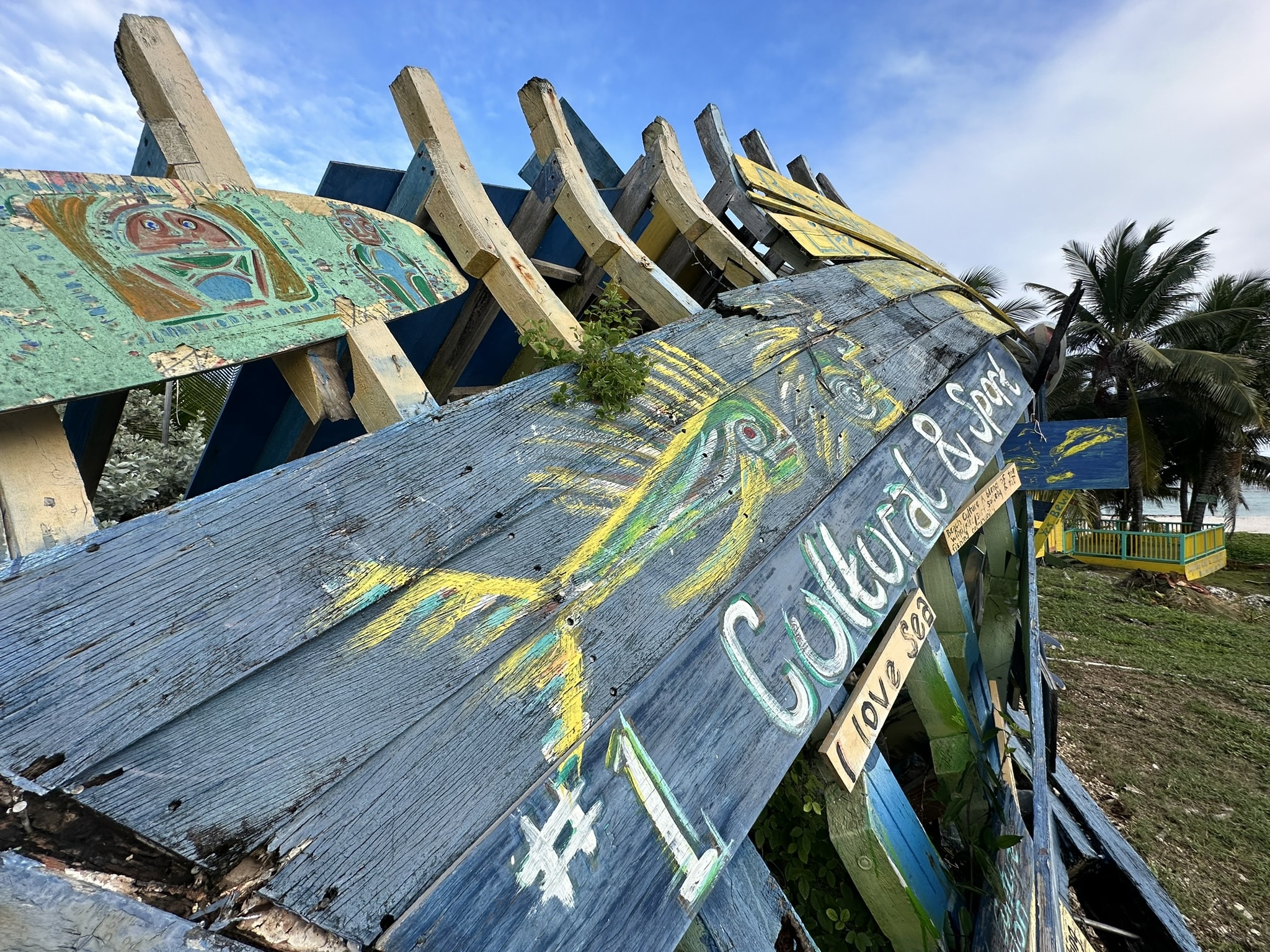
Truthfully, I could spend a lot of time on the beaches of Barbados because frankly, they’re all so beautiful. We went to five different beaches during our stay but spent more time on Rockley Beach than any other since it was so close to our hotel. This is Rockley Beach. Stunning right?

Rockley Beach
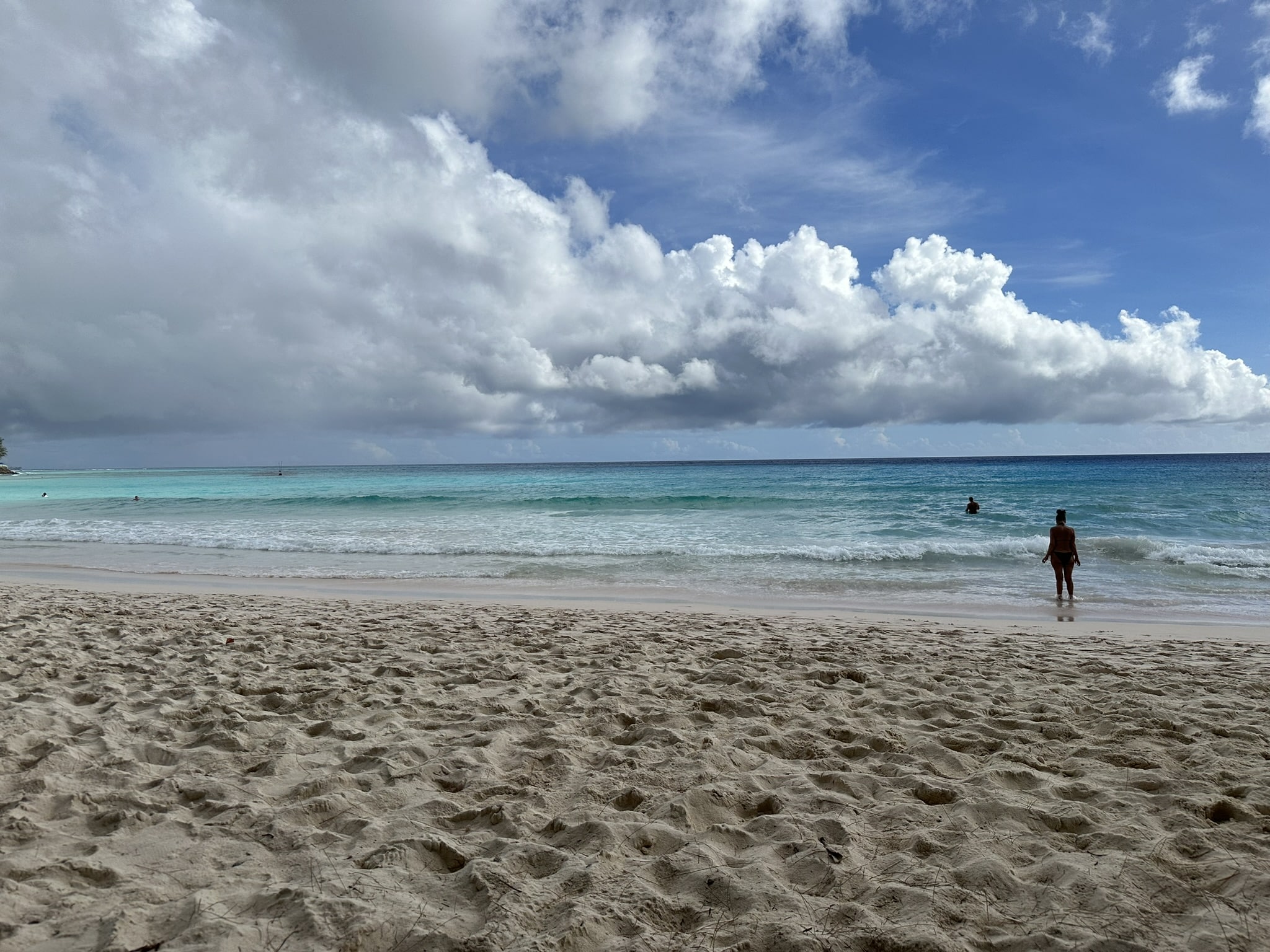
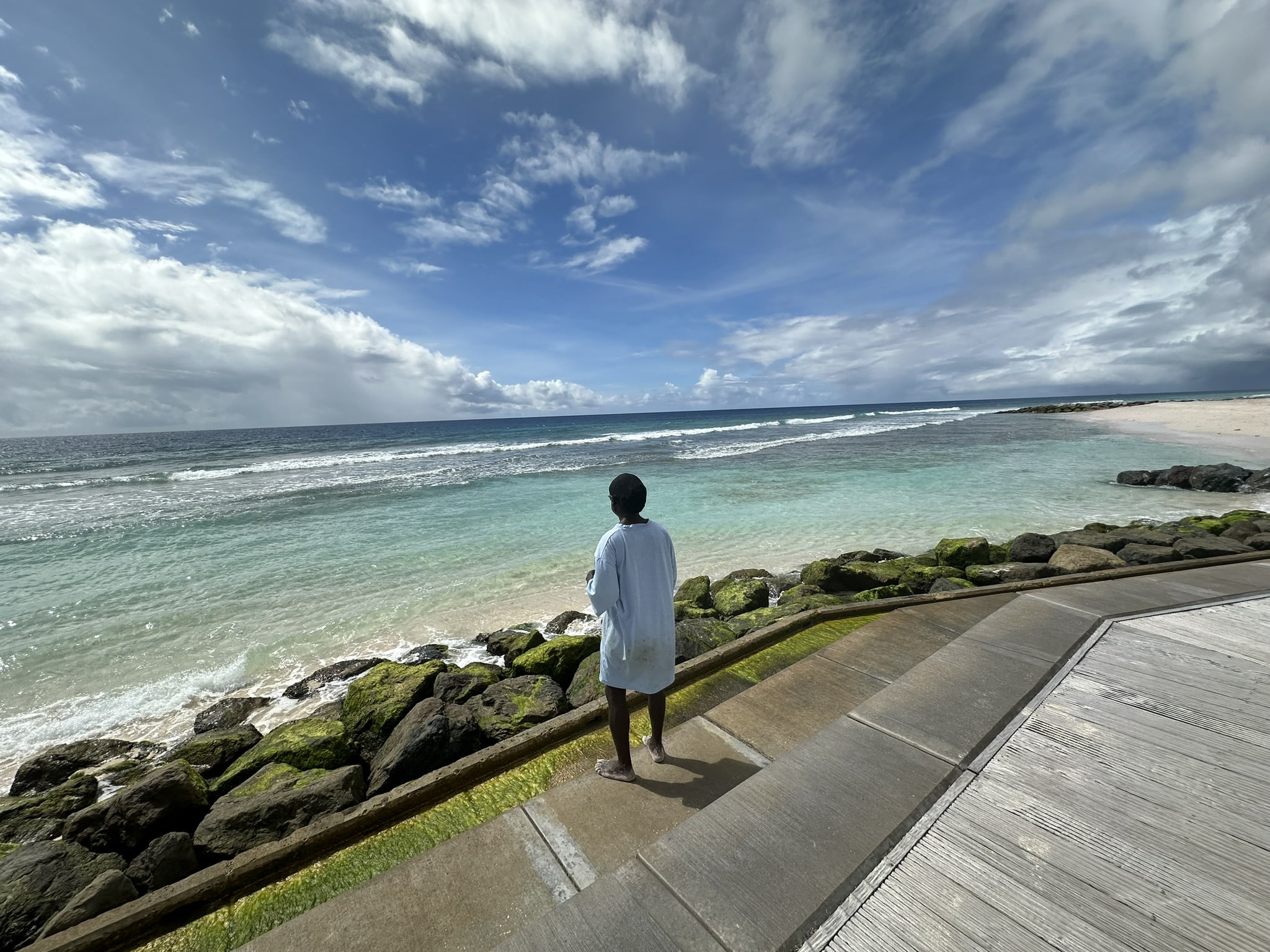
Dover Beach is another breathtaking spot. Located at the O2 Beach Club & Spa, it’s also a short hop and jump to the St. Lawrence Gap area which is brimming with bars, cafes, nightclubs and restaurants.
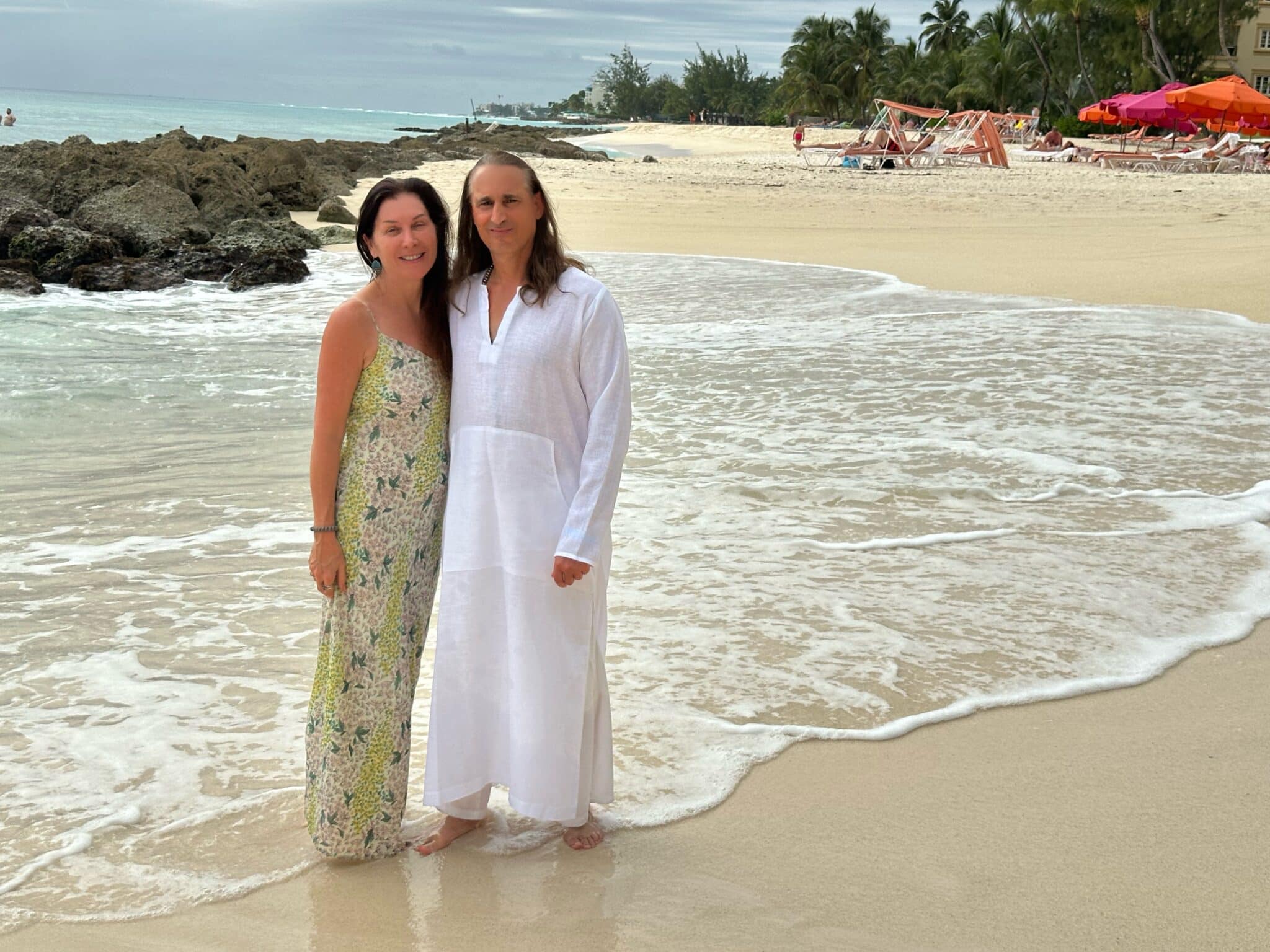
Above and below: Dover Beach
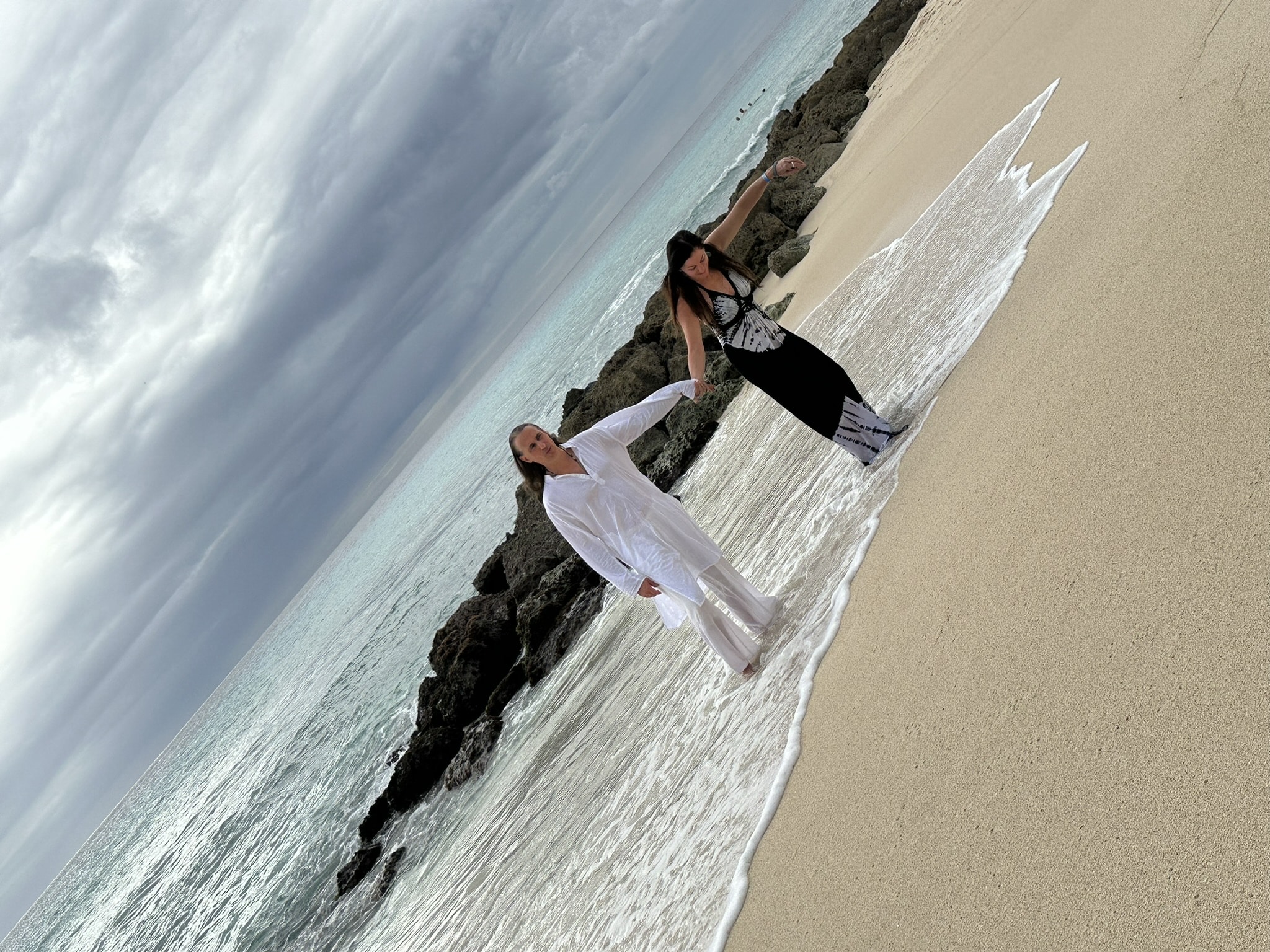
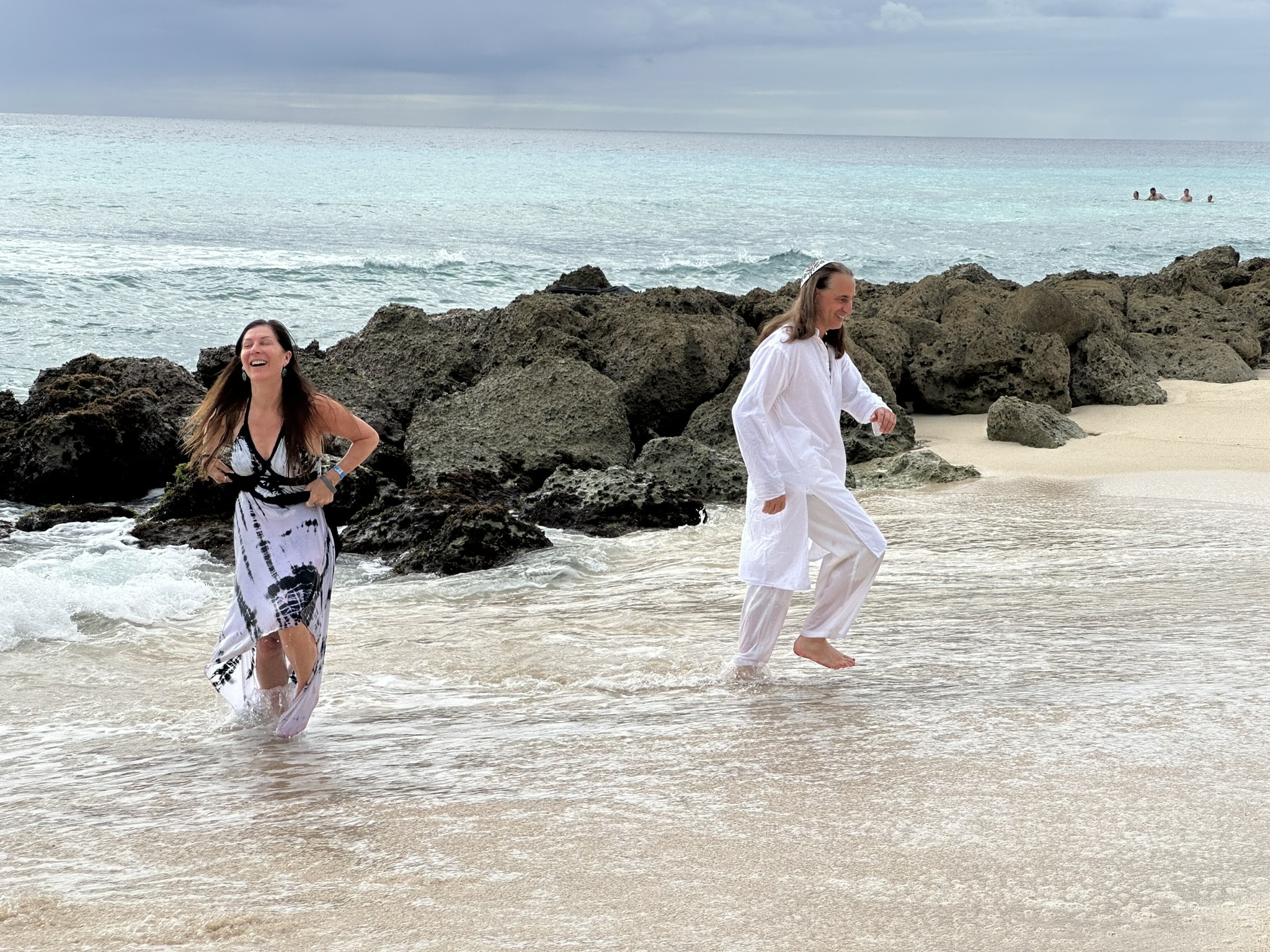
Since we had quite a lot of extra time in Barbados (it was where the ship ended the cruise), we took a drive out to The Crane Resort, an exquisite luxury property that is ancient in its roots.
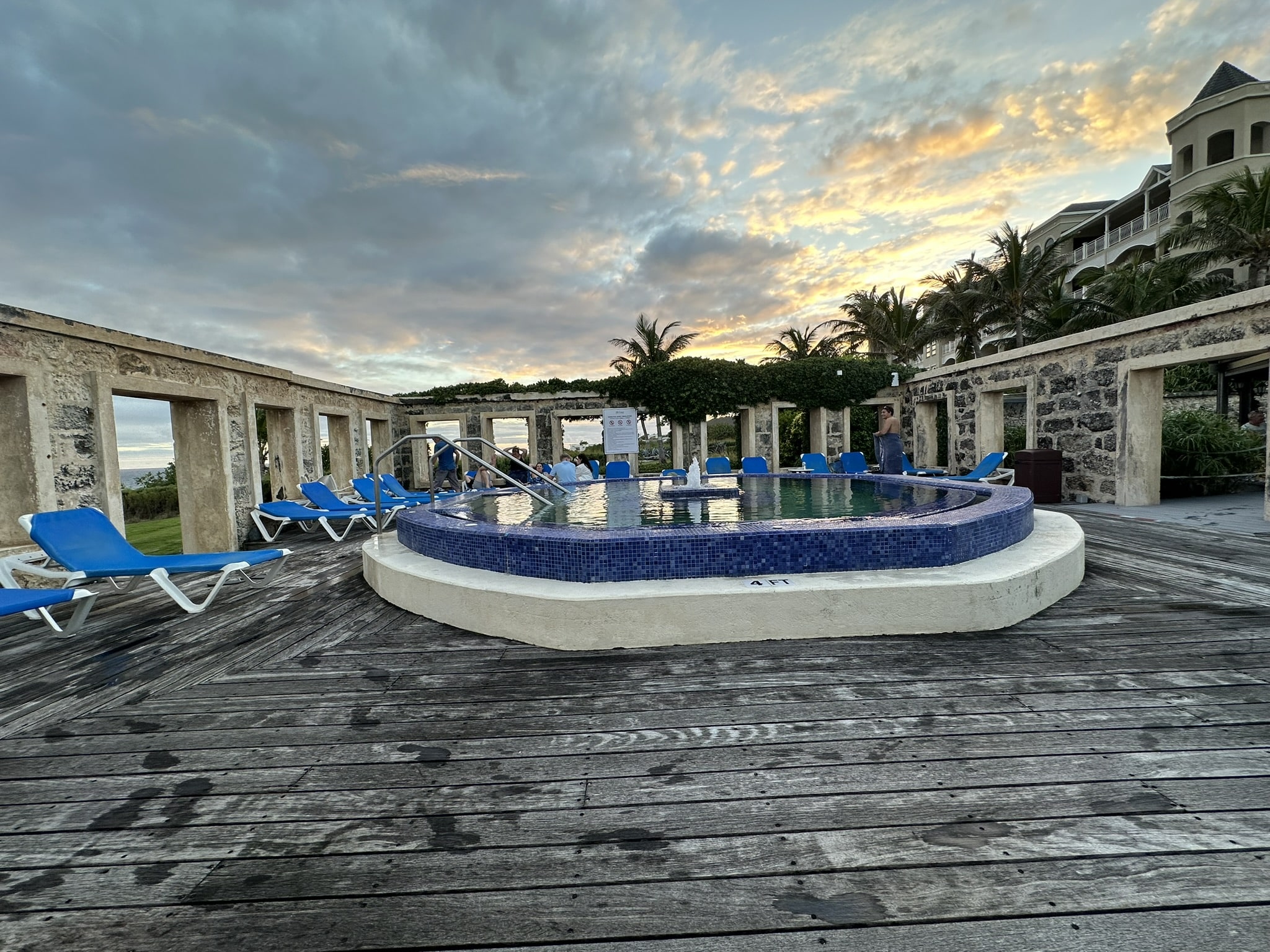
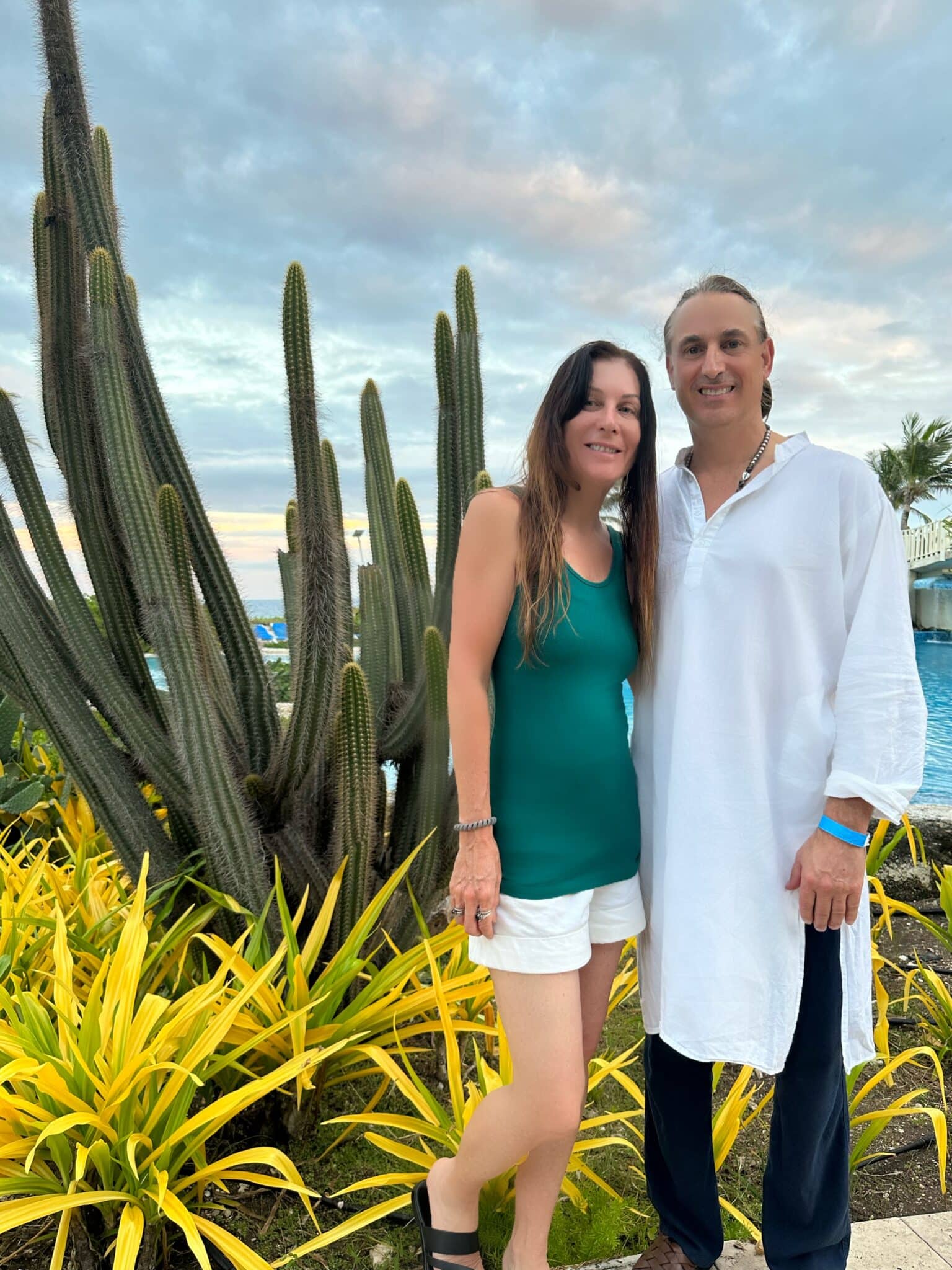
Great places to stay include the Ocean Hotels which boasts three properties located on the South Coast. Although they are a short drive from each other, they couldn’t be more different. We loved our experience at 02 Beach Club & Spa, which offers an all-inclusive experience where you stay in traditional rooms or one or two-bedroom suites.
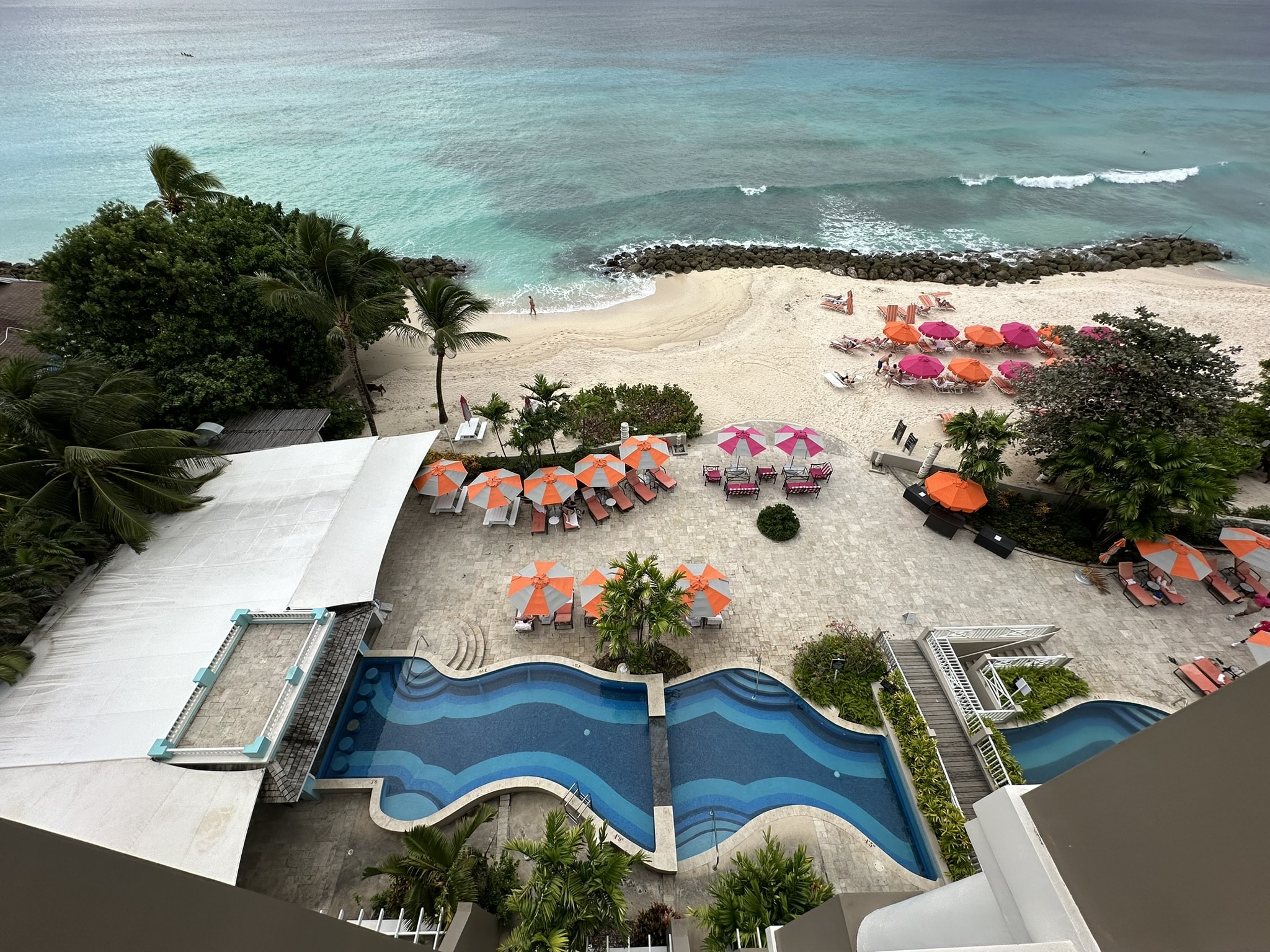
O2 Beach Club & Resort
Also part of the Ocean Hotels is the Sea Breeze Beach House and South Beach Hotel (where we stayed this time around), both on the South Coast as well. The food at both Sea Breeze and O2 Beach Club & Resort were was excellent. Be sure to read our Barbados Foodie Guide for more details on these restaurants and others.
One last thing to note: the countryside in the north of Barbados makes for a great drive.
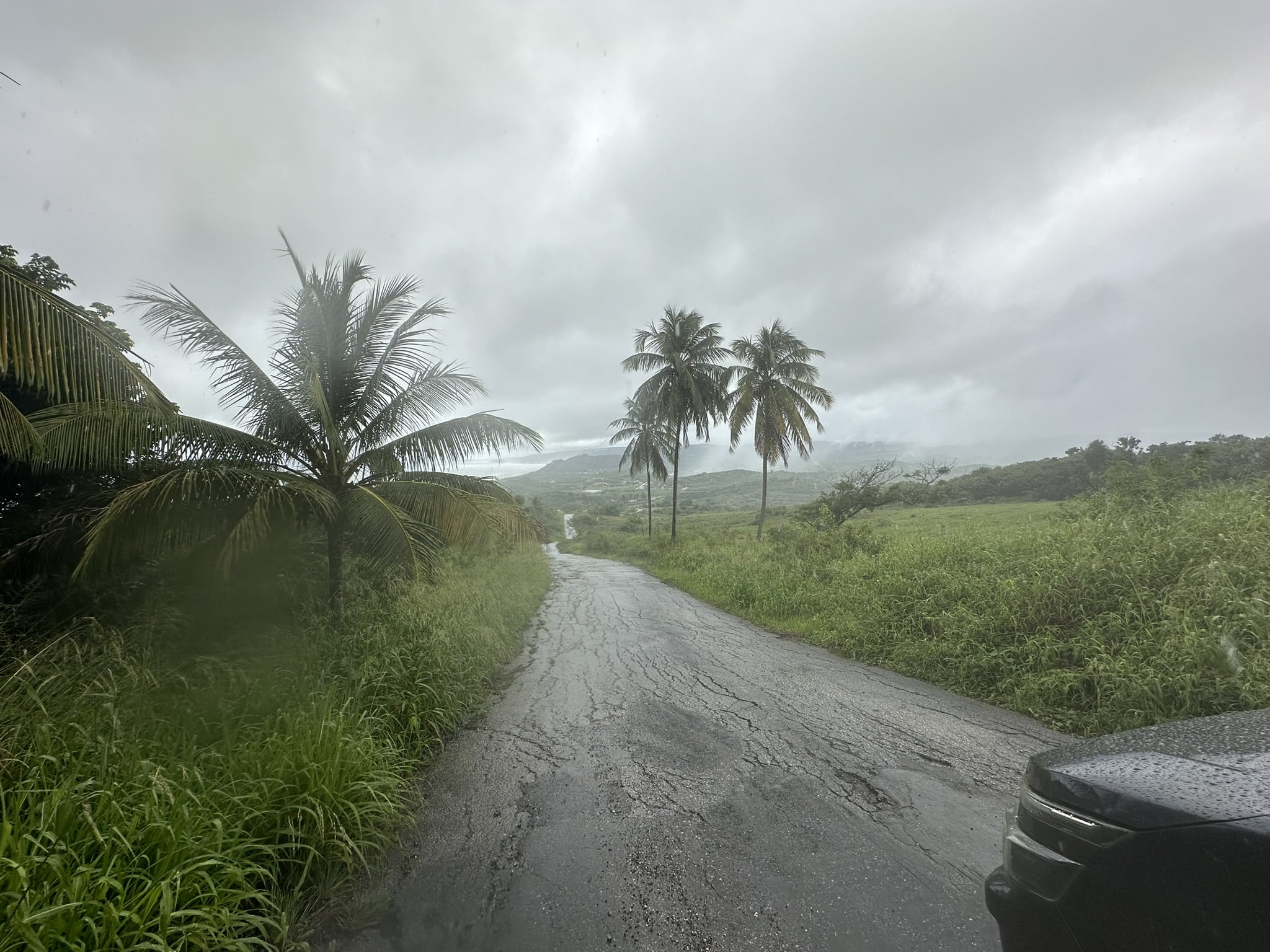
Our only wish is that we had more time on the islands. Even though it was rainy season, we found plenty to do and enjoyed our time on each of the islands. Would we return? You betcha! Below is a short video of some of the highlights. Enjoy!
Additional Resources
- Great Barbados Stays for Luxury & Fun: https://weblogtheworld.com/formats/photos/barbados-stays
- Barbados for Foodies: https://weblogtheworld.com/formats/photos/barbados-foodie-guide
- Exploring the Heart of Barbados: https://weblogtheworld.com/formats/photos/barbados-2024
- Cruise Your Way through the Caribbean on the Royal Clipper: https://weblogtheworld.com/formats/photos/starclipper-caribbean

Renee Blodgett is the founder of We Blog the World. The site combines the magic of an online culture and travel magazine with a global blog network and has contributors from every continent in the world. Having lived in 10 countries and explored over 90, she is an avid traveler, and a lover, observer and participant in cultural diversity. She is also the founder of the Magdalene Collection, a jewelry line dedicated to women’s unsung voices and stories, and the award-winning author of the bestselling book Magdalene’s Journey
She is founder of Blue Soul Media and co-founder of Blue Soul Earth as well as the producer and host of the award-winning Blue Soul CHATS podcast, that bridges science, technology and spirituality. Renee also founded Magic Sauce Media, a new media services consultancy focused on viral marketing, social media, branding, events and PR. For over 20 years, she has helped companies from 12 countries get traction in the market. Known for her global and organic approach to product and corporate launches, Renee practices what she pitches and as an active user of social media, she helps clients navigate digital waters from around the world. Renee has been blogging for over 16 years and regularly writes on her personal blog Down the Avenue, Huffington Post, BlogHer, We Blog the World and other sites. She was ranked #12 Social Media Influencer by Forbes Magazine and is listed as a new media influencer and game changer on various sites and books on the new media revolution. In 2013, she was listed as the 6th most influential woman in social media by Forbes Magazine on a Top 20 List.
Her passion for art, storytelling and photography led to the launch of Magic Sauce Photography, which is a visual extension of her writing, the result of which has led to producing six photo books: Galapagos Islands, London, South Africa, Rome, Urbanization and Ecuador.
Renee is also the co-founder of Traveling Geeks, an initiative that brings entrepreneurs, thought leaders, bloggers, creators, curators and influencers to other countries to share and learn from peers, governments, corporations, and the general public in order to educate, share, evaluate, and promote innovative technologies.








